April 27, 2024

Celebrating Buddha’s Birthday in South Korea
The top k-news from around the world, 31 best korean dramas on netflix, q&a with salle yoo, the first chief legal…, top 5 hidden gems for authentic korean food….
Join Our Newsletter

- Korean Childbirth Traditions
- HWANGAP 60TH BIRTHDAY
- LEARN THE KOREAN LANGUAGE
- KOREAN ZODIAC
- Korean Weddings
- TRAVEL GUIDE
- RESTAURANTS
- FOOD STORIES
- K-DRAMA & MOVIE
- South Korea Travel Guide
Where to Go, What to See & How to Stay on Budget
By Patricia Liu and Joel Marinan
There has never been a better time to visit South Korea. Clean, modern, sophisticated, and ultra safe, Korea is a destination that you will want to come back to again and again. With the rise of Korean culture and entertainment throughout the world, the country is experiencing a renaissance of sorts, especially for foreigners who wish to experience all that Korea has to offer.
Korea has always been a fascinating country to visit and deserves a place on everyone’s travel bucket list. Known for its stunning blend of tradition and modernity, Korea features futuristic technology, bustling markets, and a thriving pop culture scene. There are no guns or drugs allowed in Korea, and visitors can expect a high level of safety and cleanliness while exploring the country. Also of note is that Korea is a no tipping culture, so savoring the delicious cuisine is extra affordable, as are the cab rides to restaurants and other destinations.
Speaking of affordability, the exchange rate between the Korean won and the US Dollar has been very favorable for Westerners, which is another perk of traveling to Korea right now.
Our South Korea Travel Guide shows you where to go, what to see, and when to travel. Start your journey with itinerary ideas and pre-travel tips, the best day trips, and lots more essential Korean travel advice. Let’s go!
Here are some of our most popular articles that will help you make the most of your trip to South Korea.

A Local’s Guide to Gyeongju
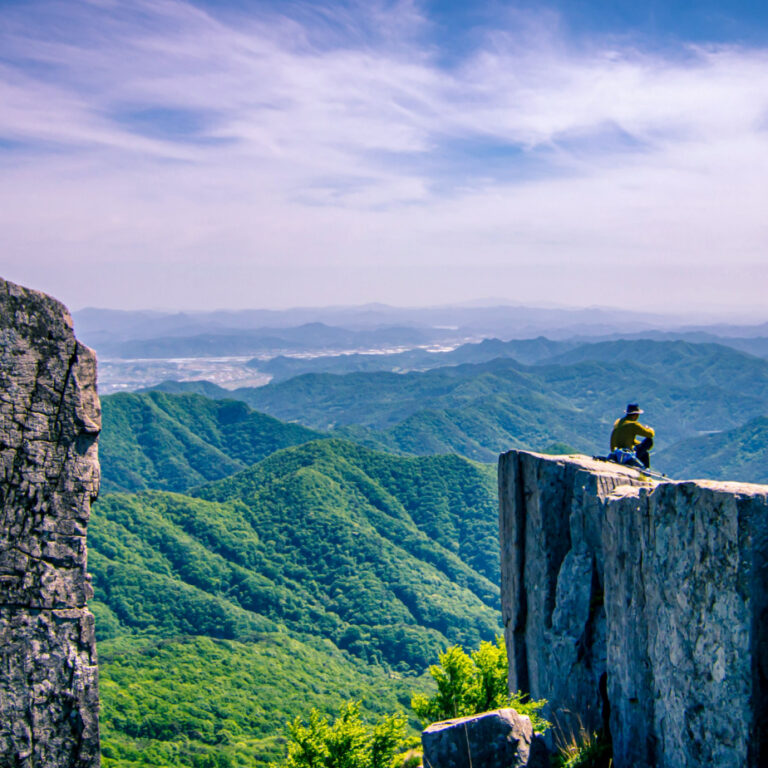
What To Do in Korea in May: The Family Month
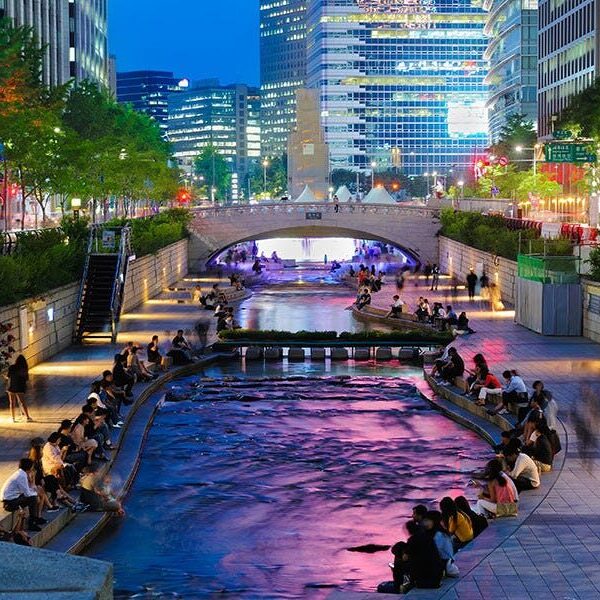
19 Did-You-Knows About Korea
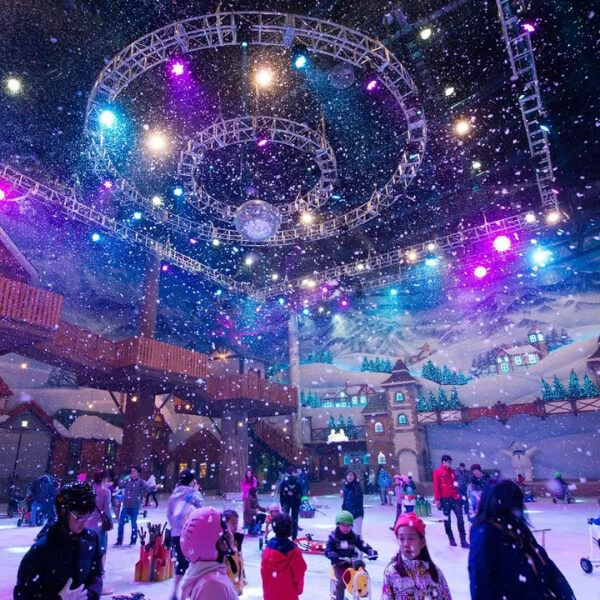
10 Ways to Spend a Magical Christmas in Korea
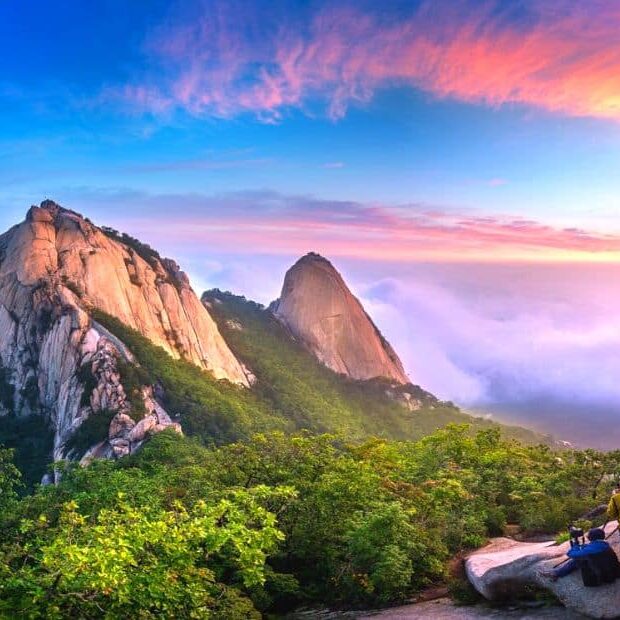
Hiking in Seoul, the Top 5 Mountains You Must Try

Jeju Island: Top 10 Places You Must See
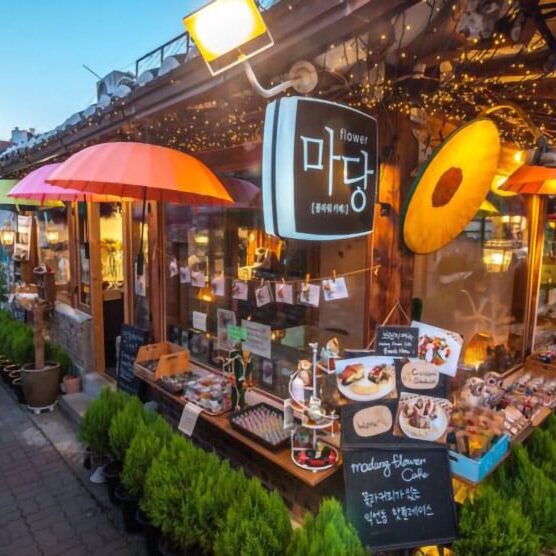
19 Best Things to Do in Seoul Right Now- An Insider’s Guide
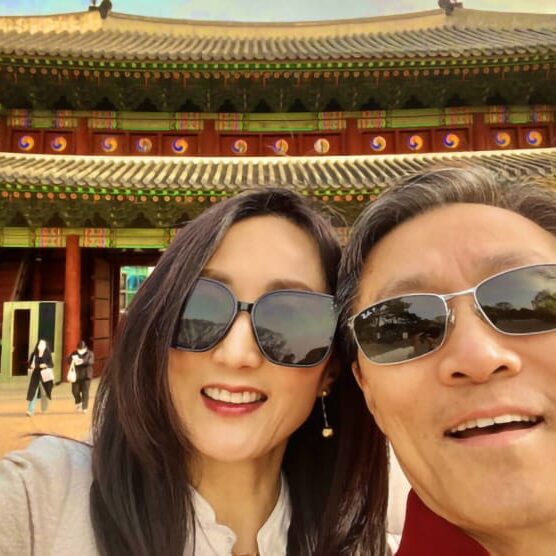
23 Reasons Seoul Will Be Your New Favorite City
Latest travel updates.
- Vaccination is NOT a requirement for entry into Korea.
- There is no requirement on the passport’s remainder validity for entry. You may travel to Korea as long as your passport remains valid throughout your stay in Korea.
- From April 1st, 2023, travelers from the USA, Canada, and 21 other countries no longer need to apply for the K-ETA to travel to Korea. This will run at least until 31st December, 2024 and is designed to make it easier to travel to Korea.

Planning Your Trip To Korea
Check the Korean Embassy for any possible travel restrictions.
- If you’re not sure where to stay, check out our guide to the best hotels in Seoul . You can find our recommendations for the best luxury, mid-range, and budget hotels in Seoul, as well as long-term apartments that you’ll love.
- For the best flight deals to South Korea, Best of Korea recommends Skyscanner and Expedia . You can find the cheapest prices and most convenient flights and buy the one that suits you best.
- For the best hotel prices in Seoul, Best of Korea recommends Klook 0r Agoda – they cover most hotels in Seoul and the rest of Korea and offer great prices without hidden fees.
- Before you travel to Korea, it’s a good idea to order an eSim card, regular sim card or portable WiFi router to collect at the airport so you’re connected as soon as you arrive. You can change a small bit of money before you travel, but you can also use the airport ATM to get some Korean won.
- There are large differences in exchange rates so you will need to do some comparing before you exchange a large sum of money. You can exchange USD to KRW easily at banks or money exchange shops in all major tourist areas like central Seoul (Myeongdong and Namdaemun are good places but the Coex Center also offers money exchange. You can also negotiate the exchange rate with the vendor if you think it is too high.
- You can withdraw cash from bank ATMs. Alternatively, use a pre-paid travel card like the one offered by Wise , which allows ATM withdrawals and payments and works perfectly in Korea.
- Don’t forget to bring a travel adapter for your electronics and leave plenty of extra space in your suitcase for the many Korean souvenirs and goodies you’ll buy on your tri
Do US Citizens Need A Tourist Visa?
No, travelers from the USA don’t need a tourist visa to enter South Korea. You can visit for up to 90 days visa-free.
Current COVID-19 Rules In Korea
Most COVID-19 rules in Korea have been dropped and now there are only 2 main rules to be aware of. First, face masks are mandatory when visiting medical facilities (hospitals). There is no longer a 7-day mandatory quarantine for people in South Korea. If you’re infected with COVID, the Korean government recommends a 5 day self-quarantine, but it’s not enforced. Travelers to Korea should follow the current restrictions or may be liable for fines or deportation.
Korean Tourism Support Hotline
If you have any concerns or problems when traveling in Korea, you can call 1330 . This is a dedicated tourism support hotline where trained specialists provide tourist assistance and is available in Korean, English, Japanese, Chinese, Russian, Vietnamese, Thai, and Malay.
US Government Travel Advisory For Korea
The U.S. Department of State currently has a level 1 travel advisory (Exercise Normal Precautions) for the Republic of Korea (ROK). Find out more about current travel advisories for South Korea on the Department of State website.

6 Best Destinations In Korea
South Korea is truly a country of contrasts. From the bustling, modern city of Seoul , with cutting-edge designer buildings, VR labs, and AI robots, to peaceful UNESCO World Heritage cities like Jeonju and Gyeongju , there are many unique places to explore.
There’s nothing worse than coming back from vacation and hearing about incredible places you missed that you wished you’d seen, such as a beautiful Buddhist temple by the beach (Haedong Yonggungsa Temple) or a leafy island getaway where deer and rabbits roam freely (Nami Island).
Here are 6 of the best destinations in Korea that you absolutely must visit, as well as some of the sights you’ll want to check out while you’re there. We’ll be bringing you lots more detailed destination guides in the future, so be sure to visit again soon.
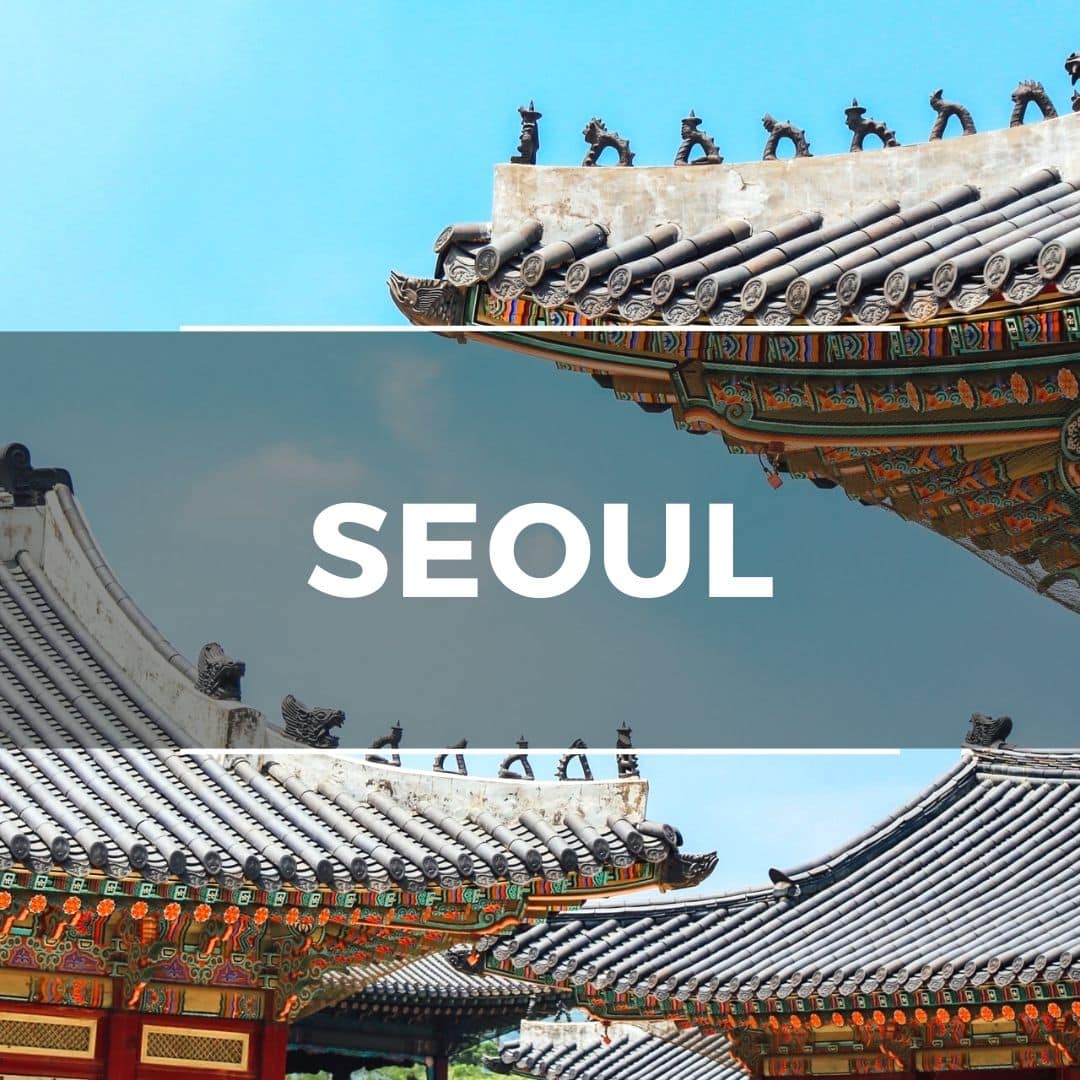
Korea’s Busy Capital
Seoul is Korea’s largest city, capital, and first, stop for most travelers to Korea. There are many beautiful places in Seoul , including landmarks, relics from ancient kingdoms, towering skyscrapers, Buddhist temples, Michelin-starred restaurants, and some of the best street food you’ll find in the world. If you see only one city in Korea, you should definitely visit Seoul.
You’ll never be bored in Seoul. Whether you’re traveling as a family, as a couple, or by yourself, there’s so much to do. Be sure to plan lots of time to check out Korea’s capital.
This Full Day Tour of Seoul will show you some of the hottest spots in the city, while this Customized Private Tour of Seoul will allow you to choose where to go.
Here are 10 of the best Seoul attractions:
- Gyeongbokgung Palace
- Bukchon Hanok Village
- Starfield COEX Mall
- Bukhansan National Park
- Myeongdong Street Markets
- Lotte World Tower
- Secret Garden (Changdeokgung Palace)
- Dongdaemun Design Plaza
- N Seoul Tower
- Yeouido Hangang Park

Korea’s Second City
Busan, Korea’s second city, is a thriving port city far away from Seoul both physically and culturally. This popular summer destination features some of Korea’s most popular beaches and bars. Explore Busan and you’ll find sprawling markets, fresh seafood, film festivals, the world’s largest shopping mall, coastal temples, and lots more.
Busan is a city with some very photogenic sights. See the sunrise on the beach, hike around leafy coastal streets on the side of cliffs, and marvel at the wide range of (living!) seafood in the markets.
This Full Day Tour of Busan will show you the best beaches, markets, and local sights, while this Customized Private Tour of Busan will allow you to choose where to go.
Here are 10 of the best Busan attractions:
- Haeundae Beach
- Gwangbokdong Food Street
- Haedong Yonggungsa Temple
- Huinnyeoul Culture Village
- Gamcheon Culture Village
- Oryukdo Sky Walk
- Lotte World Busan
- Jagalchi Fish Market
- BIFF Square & Centum City Mall
- Taejongdae Resort Park
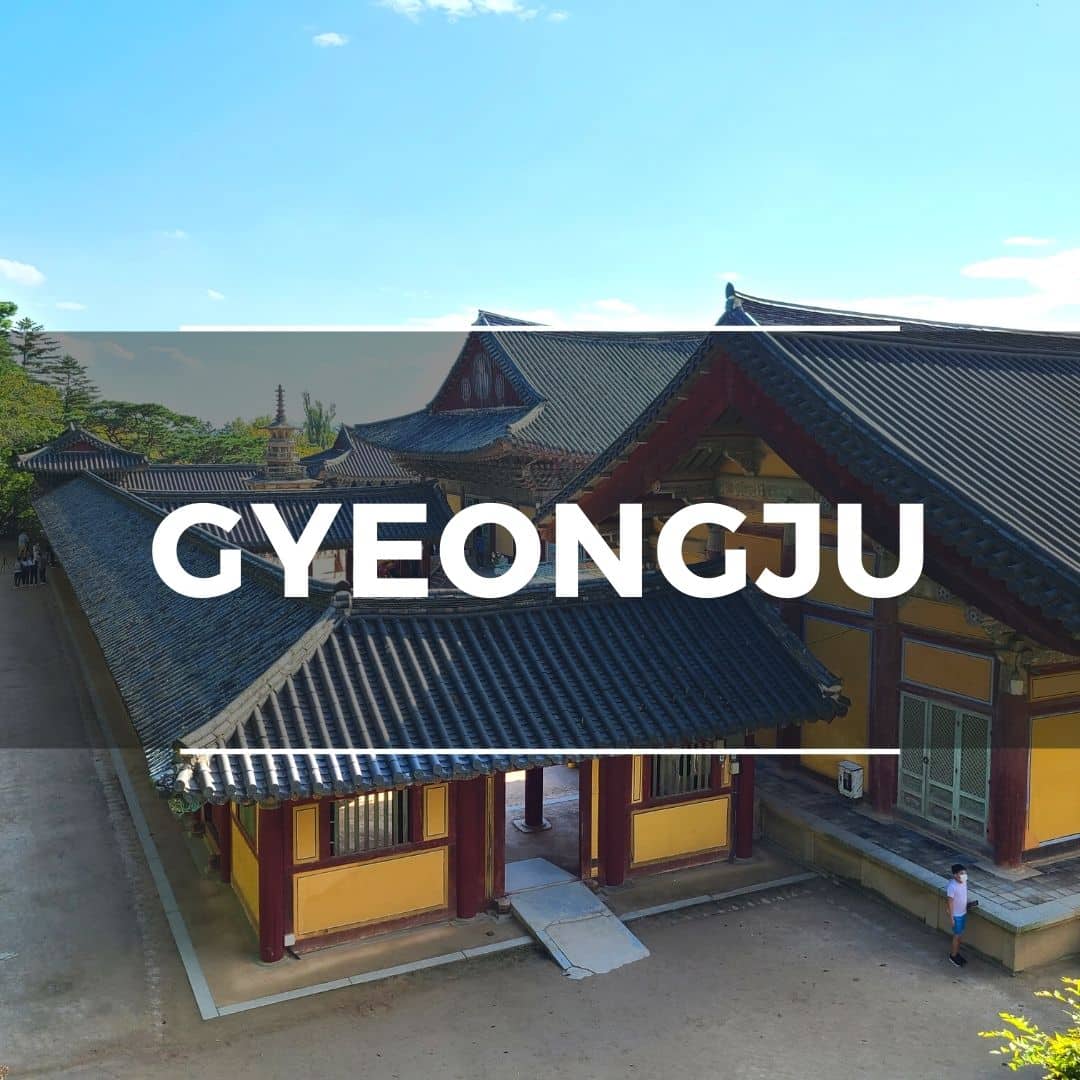
UNESCO City
Gyeongju is the former capital of the Silla Kingdom, part of the Three Kingdoms part of Korean history. These days, Gyeongju is an open air museum housing Korea’s finest history and monument. This UNESCO World Heritage City is a must-see for those who want to learn more about Korea’s deep cultural past.
Gyeongju is packed with temples, palaces, historical sights, and monuments. But it’s not just the history that draws the crowds, the city is an area of natural beauty, lined with cherry blossoms and shadowed by misty mountains.
This Full Day Tour of Gyeongju from Busan will take you around Korea’s open-air museum city, showing the top UNESCO sites along the way, while this Customized Private Tour of Gyeongju will allow you to choose where to go.
Here are 10 of the best Gyeongju attractions:
- Gyeongju Historic Area
- Bomun Lake Tourist Complex
- Bulguksa Temple & Seokguram Shrine
- Donggung Palace & Wolji Pond
- Yangdong Folk Village
- Cheomseongdae Astronomical Observatory
- Gyeongju National Museum
- Gyochon Traditional Hanok Village
- Woljeonggyo Bridge
- Gyeongju National Park
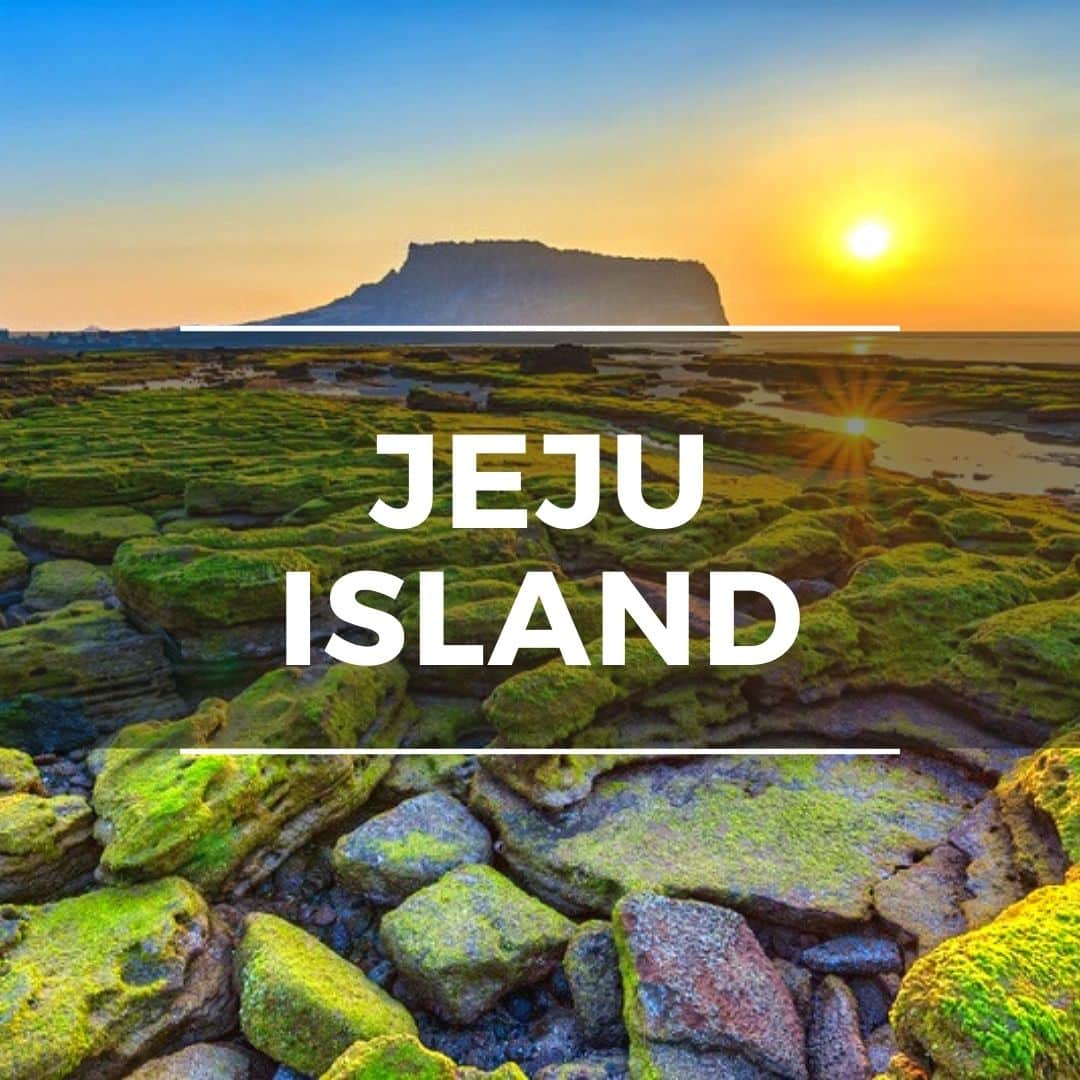
Natural Wonder
Jeju Island is Korea’s semi-tropical island that’s a popular vacation destination for locals and tourists alike. This area of outstanding natural beauty offers up rugged coastal walks, sandy beaches, green hills, and a volcano to hike up for those who enjoy a challenge. Culture and cafe lovers will also find Jeju Island a charm.
From snorkelling under the sea, to hiking above the clouds, sampling Jeju’s black pork BBQ, and drinking local green tea, there’s so many exciting activities, sights, tastes, and experiences waiting for you on Jeju Island.
This Full Day Tour of Jeju Island will show you some of the most incredible UNESCO World Heritage sites on Jeju’s East Coast, while this Customized Private Tour of Jeju Island will allow you to choose where to go.
Here are 10 of the best Jeju Island attractions:
- Seongsan Ilchulbong Sunrise Peak
- Jusangjeolli Hexagonal Lava Cliff
- Hallasan Mountain (Volcano)
- Hamdeok Beach
- Jeju Folk Village
- Hyeopjae & Geumneung Beach Areas
- Cheonjeyeon & Jeongbang Waterfalls
- Udo Traditional Island
- Yakcheonnsa Coastal Buddhist Temple
- O’Sulloc Green Tea Fields
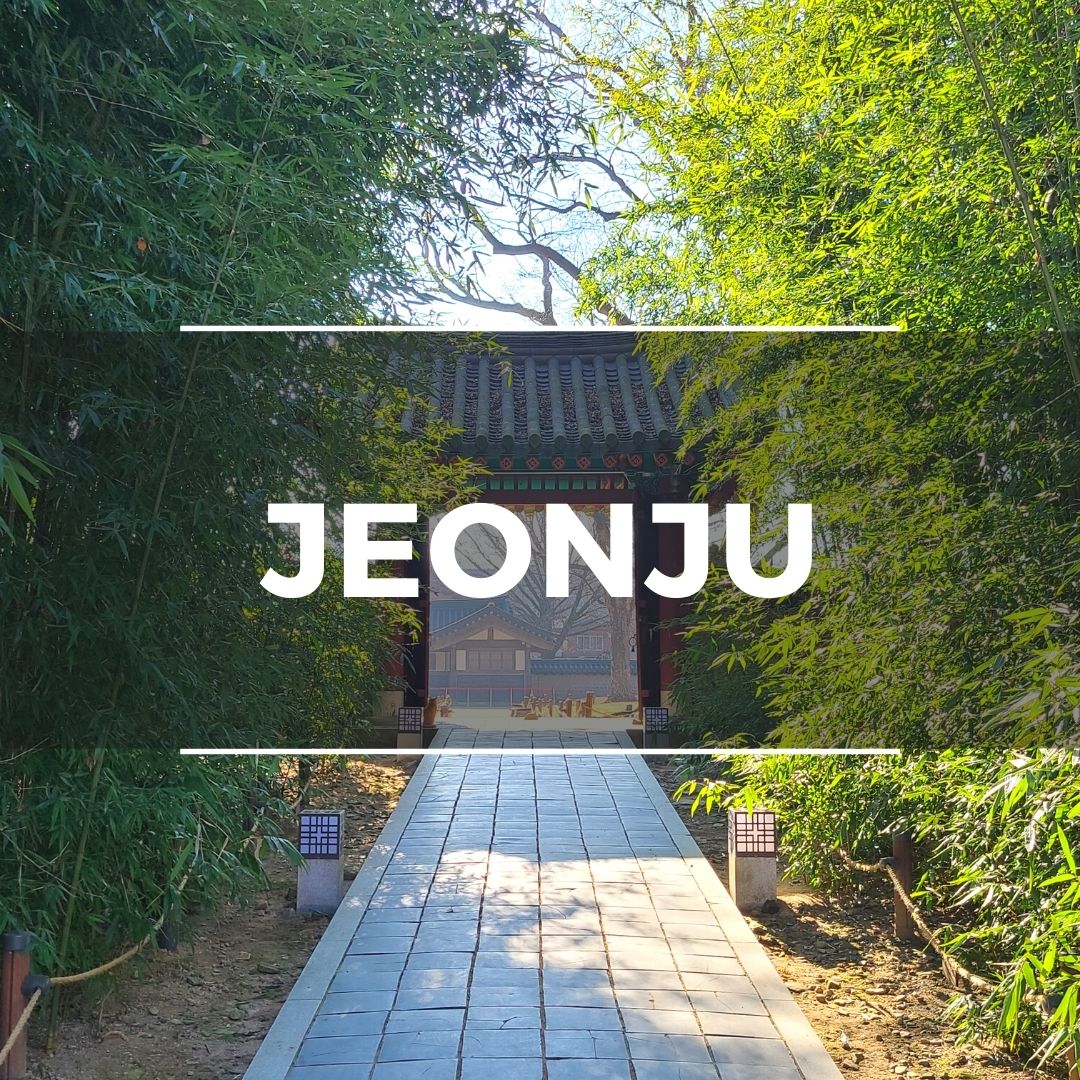
Traditional Korea
Jeonju is famous for its historical and cultural sights, including the sprawling Jeonju Hanok Village, packed with more than 700 traditional hanok houses. Jeonju’s many impressive sights are close to each other and perfect for a day trip from Seoul or Busan. You can even stay overnight in one of the traditional houses.
Jeonju is a tourist hotspot so there are plenty of things to keep travelers entertained and places to experience traditional Korean food and drinks. Be sure to check out the Jeonju bibimbap, one of Korea’s national dishes. Rent hanbok (traditional clothes), take lots of pictures, and see the sights.
This Full Day Tour of Jeonju will show you around the beautiful hanok houses and traditional Korean restaurants, while this 2-Day Tour of Jeonju includes an overnight stay in a hanok and lots of delicious Korean meals.
Here are 10 of the best Jeonju attractions:
- Jeonju Hanok Village
- Gyeonggijeon Shrine & Portrait Museum
- Jeongdon Catholic Church
- Jeonju Hyanggyo Confucian School
- Nambu Traditional Market
- Jaman Mural Village
- Omokdae Viewpoint
- Deokjin Park
- Hanbyeokdang Pavilion
- Taiji-ro & Hyangoyo-gil Shopping Streets
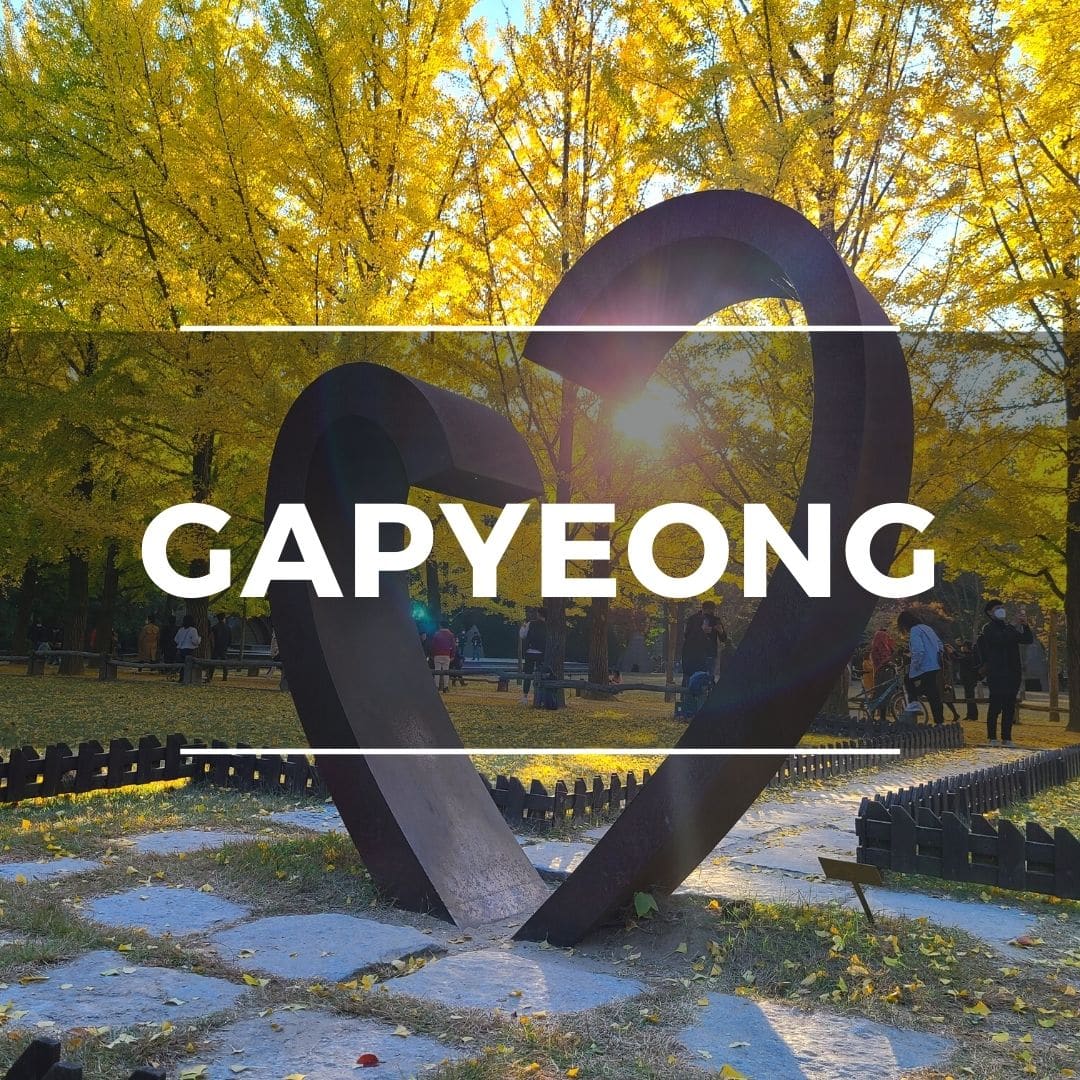
Rural Attractions
Gapyeong County is an area just outside of Seoul that’s home to several interesting attractions celebrating Korean and foreign culture. The lush green hills and blue rivers of Gapyeong make it a great place to immerse in Korean nature.
You’ll find some of the hottest day trip locations here. Explore Gapyeong County on a day trip from Seoul. You can see romantic tree-lined streets and cafes on Nami Island, explore one of Korea’s most beautiful gardens, take a trip to Petite France, and enjoy cycling through the hills on an abandoned railway track.
This Full Day Tour of Gapyeong will show you around Nami Island, Garden of Morning Calm, and the Rail Bike Park.
Here are 10 of the best Gapyeong attractions:
- Nami Island
- Garden of Morning Calm
- Petite France
- Ganchon Rail Bike Park
- Edelweiss Swiss Village
- Cheongpyeong Lake
- Jarasum Island
- Kalbongsan Recreational Forest
- Gapyeong Sledding Hills
- Nami Island Zip Line

There are loads of locations to visit in Korea that make for a perfect day trip from Seoul. Hop on a coach, train, or tour bus in the morning and explore one or more of these unique destinations.
Here are 10 of the best day trips from Seoul to discover on your next journey to Korea:
- DMZ (North Korean Border)
- Suwon Hwaseong Fortress
- Everland Theme Park
- Jeonju Historic City
- Seoraksan National Park
- Korean Folk Village
- Alpaca World
- Gwangmyeong Cave
Most travelers to Korea arrive at Incheon Airport and then travel into Seoul (it’s only 40 minutes away) to begin their journey. Seoul is certainly an incredible place to start traveling, but it definitely shouldn’t be your only destination. Korea has a lot to offer, including a lot of seasonal activities and events that you should take into consideration.
Spring and fall are the best seasons to visit Korea and during these times the traditional cities like Gyeongju and Jeonju look amazing. They’re covered with cherry blossoms or fall foliage and this creates some postcard-like scenes. Gapyeong area is packed full of natural sights to enjoy, so definitely check out these areas.
If you’re visiting during summer, head towards the coastal areas, including the north-east coastal towns of Gangneung & Sokcho, or the south-east coastal areas of Busan and the nearby islands, such as Geoje, Tongyeong, and Yeosu. You’ll find lots of winter activities to enjoy in these areas.
Winter is cold and dry and, ironically, a great time to visit Jeju Island. This semi-tropical island is warmer than the mainland, but still gets snow on the mighty Hallasan Mountain. You can sit on a sunny beach one day and then hike knee-deep in snow the next. Jeju is also famous for its citrus, with thousands of tangerine trees dropping their juicy fruits in early winter.

Where To Stay In Seoul
South Korea is truly a country of contrasts. From the bustling, modern city of Seoul , with cutting-edge designer buildings, VR labs, and AI robots, to peaceful UNESCO World Heritage cities like Jeonju and Gyeongju , there are many unique places to explore. If you’ve decided on Seoul, here are some of the best hotels that are well located and highly reviewed.
Choosing the best destinations to visit in Korea can be a challenge, especially if you don’t know what there is to see. You might not have heard of some of these destinations, which is not surprising. Korea is a country of undiscovered wonders that are waiting to be found.
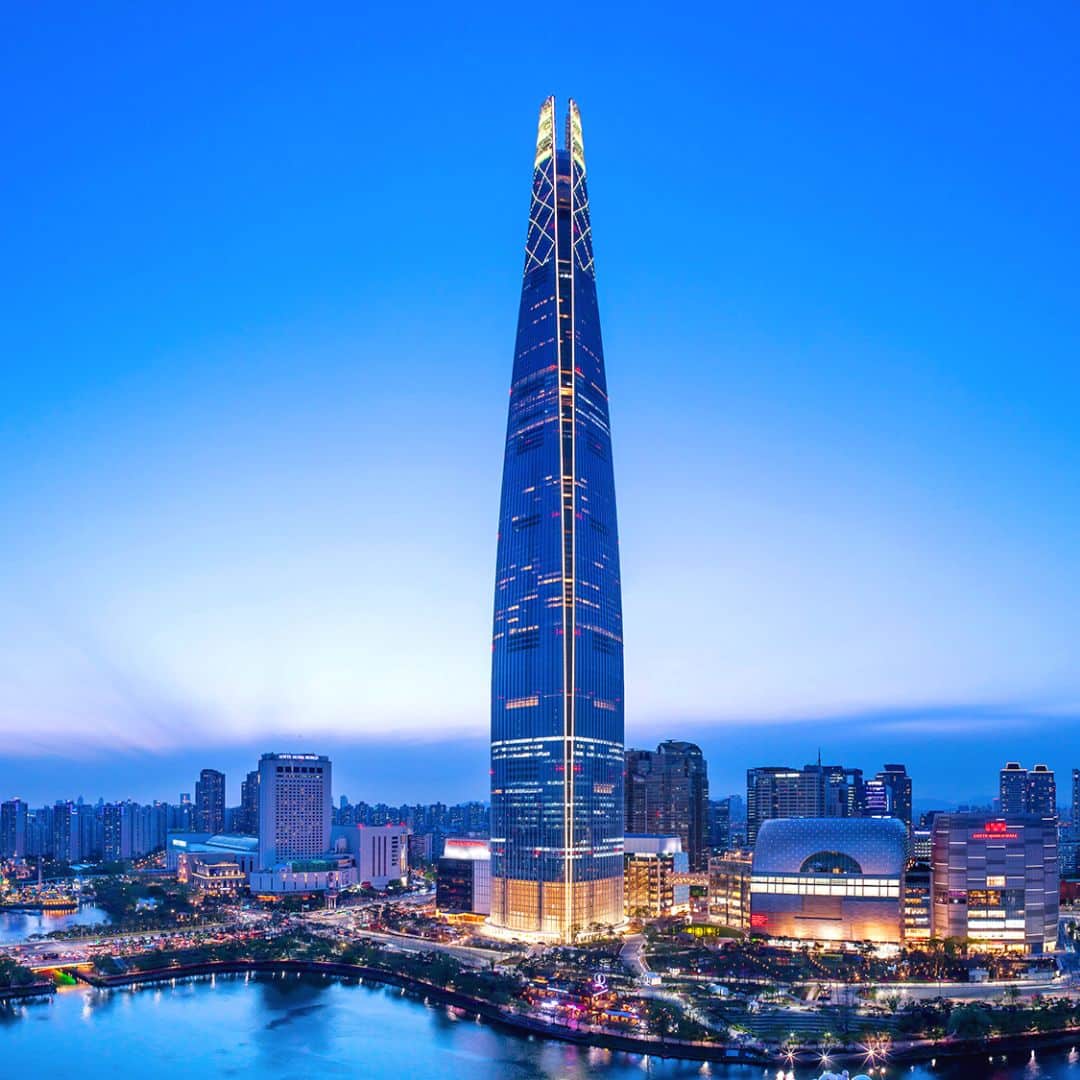
If you want the best Seoul has to offer, these luxury hotels are for you. Located in Seoul’s glitziest neighborhoods, these hotels are within walking distance of Michelin-starred restaurants, chic boutiques, galleries, museums, and the finest shopping experiences available.
Expect nothing but the best in terms of service and style at these luxury hotels. Silky soft sheets, immaculate rooms with the finest fixtures and fittings, and true 5-star service from the hotel staff. These hotels have sports, dining, and entertainment facilities to make you comfortable during your stay.
Airport transfers are available with these hotels, making your journey into and out of Seoul a breeze. Located in popular upmarket districts in Seoul, these neighborhoods have lots of local charm for you to discover, as well as allow easy access to other parts of the city with excellent transport options nearby.
Not only are these beautiful, comfortable hotels inside, but they are also located in some of the most iconic buildings or districts and provide amazing views over some of Seoul’s most interesting districts. The view from the first hotel is worth the cost alone.
Recommended Luxury Hotels In Seoul
Here are 3 of the best luxury hotels in Seoul that we recommend for an unforgettable stay in Korea’s capital:
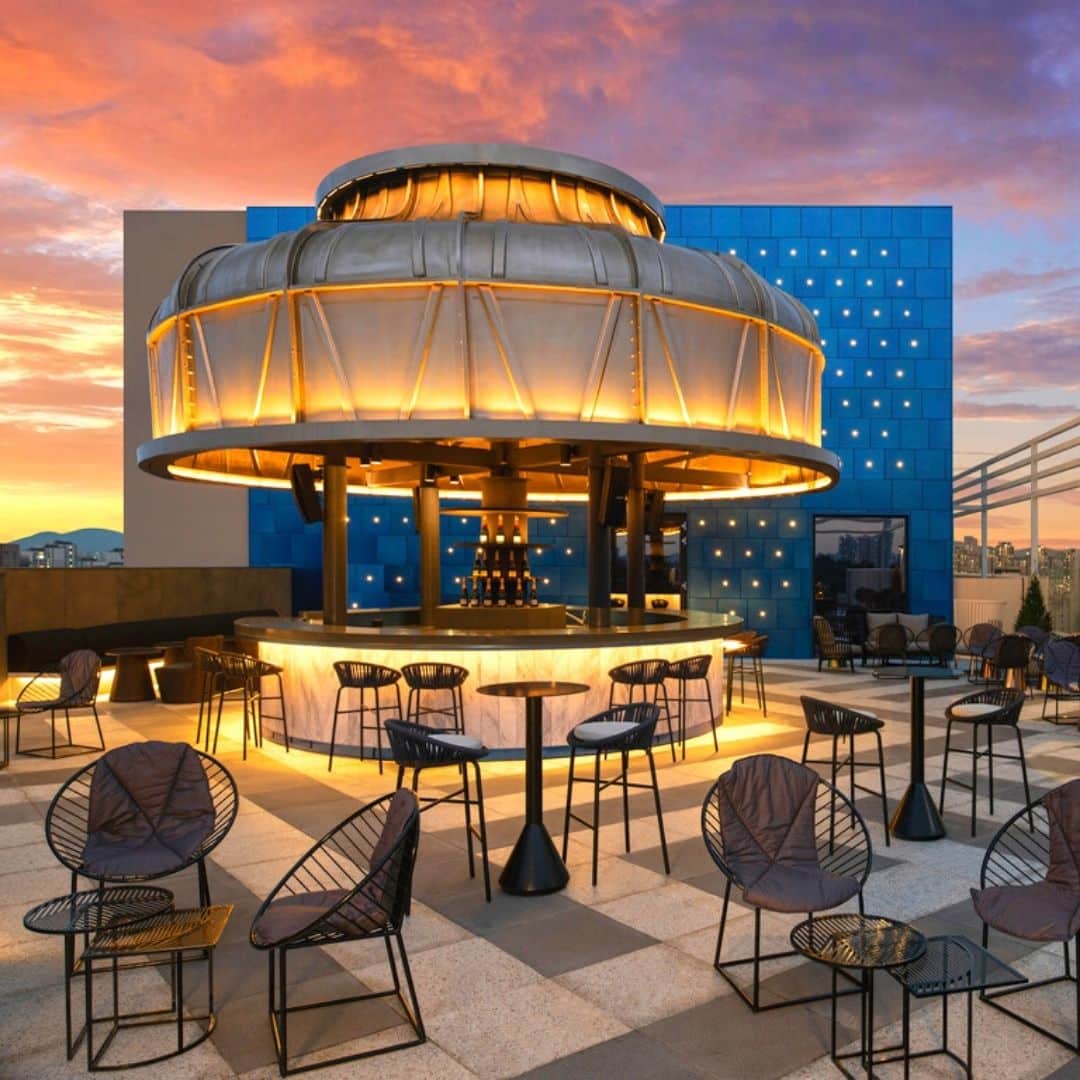
Families. couples and other travelers that want to experience the best of Seoul without breaking the bank can sleep easy with these mid-range hotel recommendations in some of Seoul’s trendy, vibrant districts, including Hongdae, Gangnam, and Myeongdong.
Encounter stylish accommodation in Seoul’s Hongdae districts, which is full of street culture and artistic scenes from the district’s eponymous Hongik University – one of Korea’s leading art centers.
Fashion lovers and shoppers will find lots to love in downtown Gangnam, with its wide streets and glassy storefronts bracketing narrow side streets and hidden delicacies.
Myeongdong is famous for its budget and mid-range accommodation options, including several hotels by the famous Lotte chain – one of Korea’s best mid-range brands.
Whichever mid-range hotel you choose in Seoul, you can be sure you’ll have fantastic city views, convenient subway access, and lots of unique cultural sights, sounds, and tastes to experience.
Recommended Mid-Range Hotels In Seoul
Here are 3 of the best mid-range hotels in Seoul that we recommend for an comfortable stay in Korea’s capital:
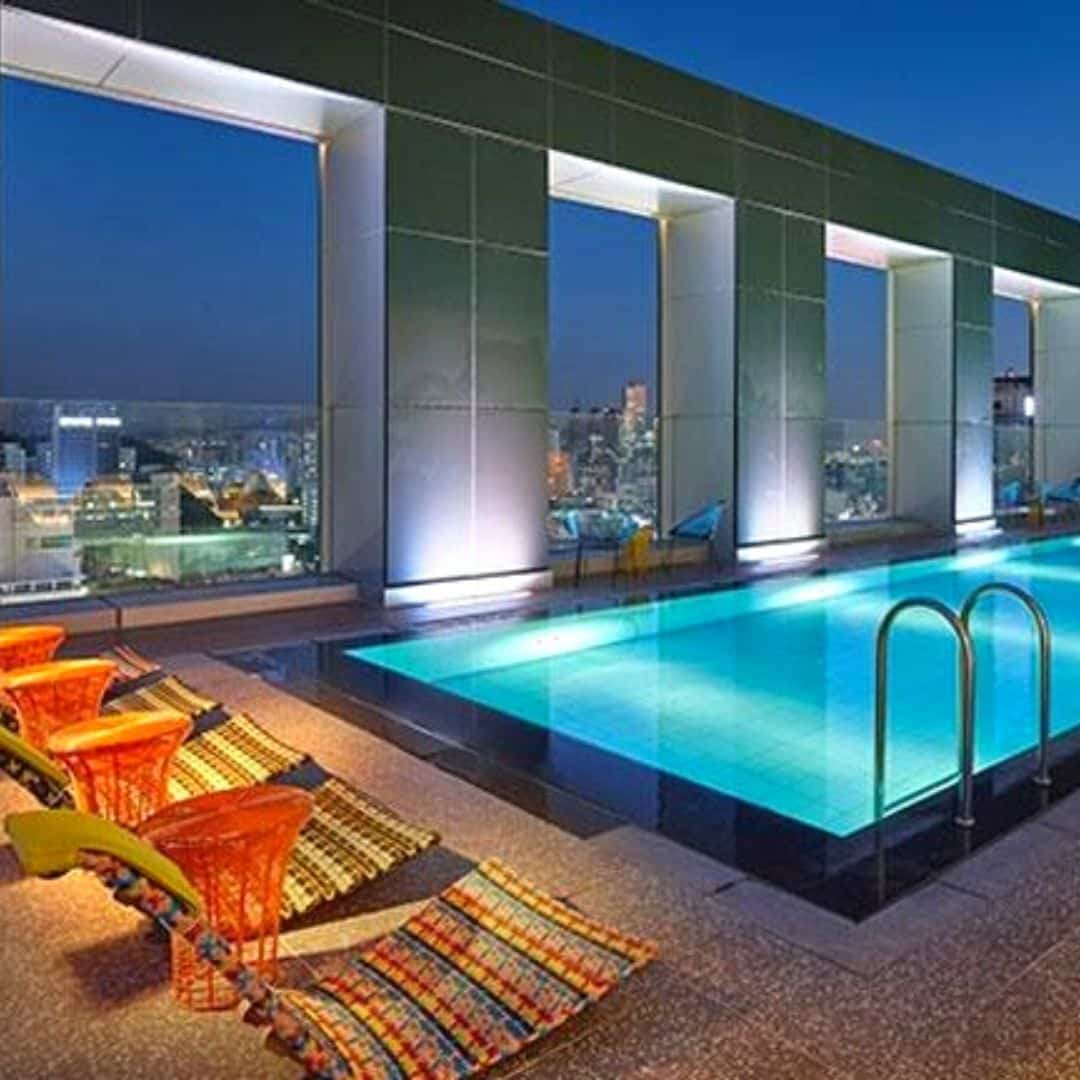
Seoul has a wealth of budget accommodation options that will help make your money go further. These hotels are all around $100 or less but offer the comfort and convenience that you’d expect to find in a mid-range hotel. One even has a beautiful rooftop pool.
Although these hotels are cheaper, don’t lower your expectations. You’ll always find great service in Korea. Save on sleeping to spend more on shopping, souvenirs, sights, and all the other fun things there are to do in Seoul.
These budget hotels in Seoul are also in great locations for shopping, enjoying local culture, and seeing the real side of Seoul and Korea. Hongdae offers bargain hunters the chance to get boutique fashion at market prices, Gangnam has plenty of cafes and cheap eats tucked away off the main avenues, and Myeongdong is a budget traveler’s paradise full of $1 street food and bargain souvenirs.
You won’t be disappointed with a night at any of these hotels. If you want to make your budget go further so you can spend more on some of the incredible day trips Seoul has to offer, definitely book a night at one of these hotels.
Recommended Budget Hotels In Seoul
Here are 3 of the best budget hotels in Seoul that we recommend for an affordable stay in Korea’s capital:

Korean Travel Tips
Korea is a unique country with a written language that looks nothing like English, fascinating etiquette rules , and an always busy lifestyle. Travelers may be lost trying to do even the simplest things.
These travel tips include the best options for staying connected, how to use public transportation easily and cheaply, great discount cards that will save you money as you travel, where to exchange money, and how to learn some basic Korean phrases for when you travel.
These essential Korean travel tips have been crafted by experienced travelers who love to save time and money. Only the best quality services and products are recommended here.
Here are our Korea travel essentials that’ll help you get around more easily, save you money, and let you get the most out of your trip.
Plan ahead now and you’ll have fewer troubles on your travels, giving you more time to enjoy your time in Korea.
If you’re traveling to Korea, you’re almost certainly going to want to get access to the internet to help you navigate, translate Korean, or even book tickets to attractions. Korea has one of the world’s best mobile internet and the prices are very reasonable. 5G mobile internet services are available across the country and Korea was one of the first to get the super-fast service. You won’t have problems connecting with a sim card or WiFi router when you travel.
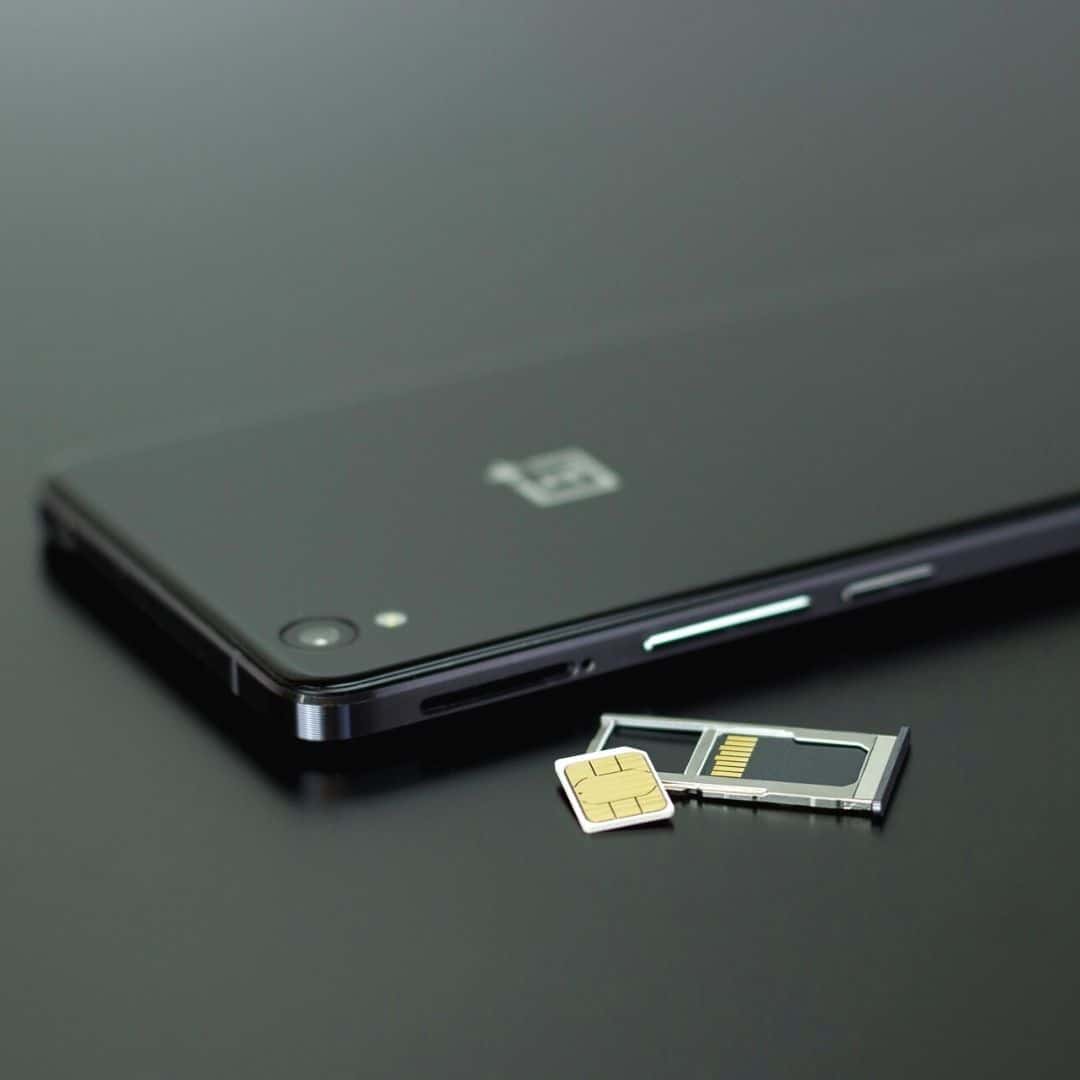
Sim Cards & Data Plans
A Korean sim card is a great way to get access to all your usual cellphone services when you travel to Korea. Sim cards come with data-only packages, or data and phone services combined.
Buying a Korean sim card will give you access to a Korean phone number, which is useful when using Korean apps. If you want to order food online in Korea, you need to have a Korean phone number to complete the order.
Korean Sim Card Costs
Prices start at W5,900 ($5) for a 1-day sim. You can also get 10-day sim cards (W34,700/$28) and 30-day sim cards (64,400/$52). These all come with unlimited data, domestic calls, and texts.
You can purchase a Korean Sim Card From Klook and collect it at the airport. This is a very convenient option as you can use it immediately to help navigate and check in back home.

Portable WiFi Routers
A Korean portable WiFi router will give you access to mobile internet throughout Korea by connecting to WiFi hotspots run by the major phone companies in Korea and comes with great coverage.
The major benefits of a portable WiFi router include a lower cost than a Korean sim card and also the ability to connect up to 3 devices to 1 router. That means that families and groups will be able to share the service.
Korean Portable WiFi Router Costs
The cost of a Korean portable pocket WiFi router is W3,200 ($2.60) per day. You can rent the WiFi router for as many days as you require and pay in advance and pay any excess days when you return it.
You can also purchase a Korean Portable WiFi Router From Klook and collect it at the airport. You can book online before you travel so that it’s guaranteed to be waiting for you.
Should I Get A Sim Card Or WiFi Router In Korea?
Both a sim card and WiFi router are great options for travelers to Korea and will almost guarantee a great reception for mobile internet. The choice between whether you should get a sim card or WiFi router in Korea really comes down to the costs involved and if you need a Korean phone number.
WiFi routers are cheaper and allow you to connect 3 devices, so they’re perfect for families. However, a sim card gives you a Korean phone number, which means you can call people and also register for Korean apps which require a phone number.
Check out our detailed article about the Best Sim Card & Portable WiFi options for traveling to Korea.
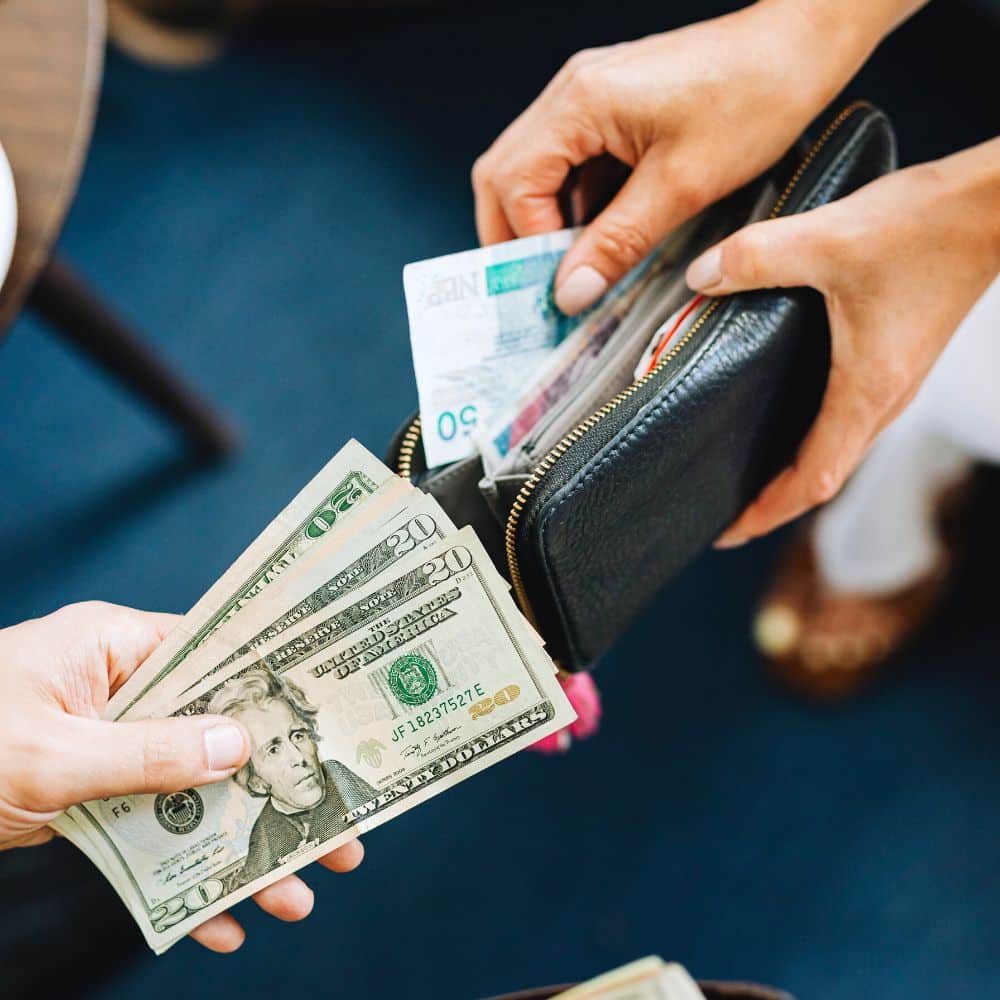
Korea is a safe, modern country and one that has pushed hard for the mass adoption of cards. Almost every location that deals with money is required to accept card payments. This is great news for travelers to Korea as you can use a card to pay for meals out, entrance tickets, trains, and lots more.
Cash is still needed for some things, such as topping up transportation cards like the T-Money Card (more on that soon) and for paying for small things like street food. Please note, as Korea doesn’t have a tipping culture, you don’t need cash for leaving a tip. In fact, if you try to leave a cash tip, it’ll be returned to you in most places.
Read on to find the best tips to avoid getting ripped off when exchanging money and how to pay the lowest fees when you use a card to pay in Korea. Be a smart traveler and save more money for shopping and souvenirs.
Korean Money Exchange Options
Once you arrive in Korea, there are several options for exchanging money. First, you can exchange money at a money changer in tourist areas such as Myeongdong. These money changers used to have the best rates in Seoul.
However, a better option these days is to use the currency exchange machines from WOW Exchange. These machines are located all over Seoul’s most popular tourist spots, stations, and hotels. They allow you to exchange foreign cash directly to Korean won, with better rates than at the airport. You can also use these machines to claim a tax refund for your shopping before heading to the airport. Both options require a passport.
Should I Change Money At The Airport?
Exchanging money at the airport is easy and convenient as you can instantly get cash to use for shopping, transportation, and general use. However, the exchange rate at the airport is usually much worse than you’ll find in other places in Korea, as mentioned previously. If you need cash as soon as you land, withdraw a small amount ($50) and then exchange the rest in Seoul.

Travel Money Cards For Korea
While cash is useful and familiar when traveling, a much better option is to use a travel money card (also known as a currency card). Travel money cards, such as the Wise Travel Money Card, allow you to pay for travel expenses without the need to carry cash or convert money.
A travel money card offers the convenience of using a credit card without high fees that a regular bank could charge. It also allows you to withdraw cash from an ATM without a fee (up to a limit), so you can avoid carrying any cash on the flight or using a money exchange. The exchange rate is the mid-market rate, meaning it’s better than you’ll find even at the money exchanges listed before.
Can I Use My Bank Card In Korea?
Credit cards are widely accepted in Korea. Visa and Mastercard users shouldn’t face a problem, but other cards aren’t as widely accepted. Debit cards and cash withdrawals might not work depending on the bank. Your bank may charge a fee when using it overseas, or give a bad exchange rate. Check with your bank before traveling.
The best option for travel money in Korea is to have a mixture of cash and cards, with a backup credit card just in case. Taking some USD with you is always a good option as you can find plenty of places to exchange it to Korean won and probably at a better rate than you’ll get in the US. If you want to withdraw money in Korea, look for the global ATMs in tourist areas.
Taking a travel money card will be safer, cheaper, and more convenient than relying on your own bank or credit card, too. These cards offer competitive rates and are widely accepted around the world so you can use them to visit other countries, too. If you use a travel money card and it gets lost or stolen, you can freeze the card instantly with the app and not have to worry about losing the balance on the card.
When you visit Korea, you’ll notice that most people pay for goods with a card or payment app, even for small purchases like a bottle of water. Unfortunately, the payment apps that are common in the US, such as Apple Pay or Google Pay, aren’t available in Korea. Korean apps, such as Kakao Pay, require a Korean bank account, and therefore aren’t an option for travelers.
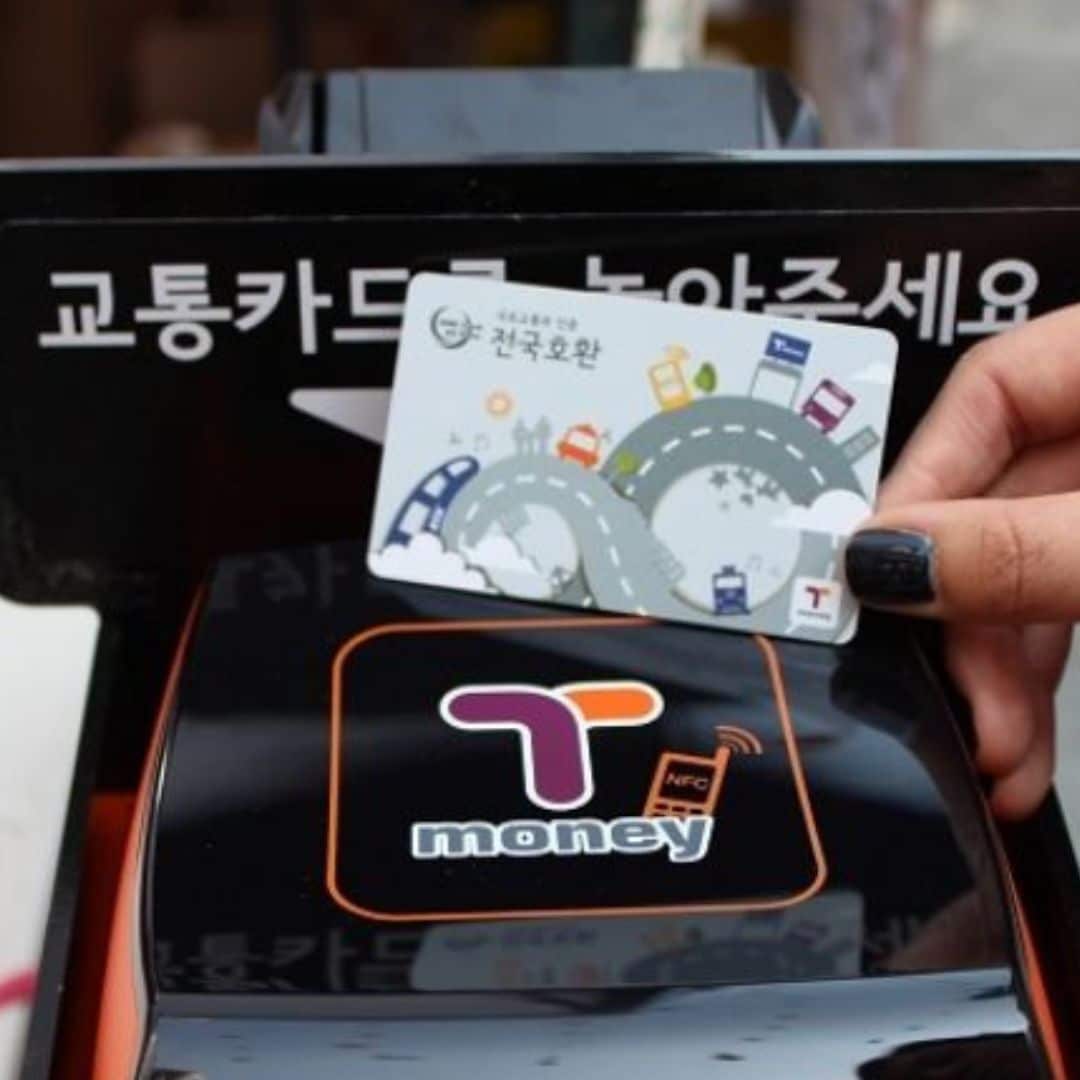
T-Money For Public Transport
The T-Money Card is an essential purchase for every traveler to Korea. The T-Money Card is a transportation card that allows contactless travel on Korea’s buses and subways. Simply buy a T-Money Card, top-up the card, then use it to travel.
Not only is this transportation card really convenient, it also saves you money. You’ll receive a discount on every bus or subway journey when you pay with the T-Money Card. These discounted fares are available in all cities across Korea, not just Seoul.
This isn’t the only use of the T-Money Card. You can also use to buy a coffee from Starbucks, get lunch in McDonald’s, shop for Korean cosmetics, and even to watch a baseball game. It’s a very useful card that can be used anywhere you see the T-Money Card.
You can get the T-Money Card in Korea from subway stations and at certain transport centers, including Seoul Station and Incheon Airport. The card costs 2,500 KRW. You can buy the card with a credit card, but to top-up the card, you need to use cash. If you buy a Discover Seoul Pass, this card includes the T-Money functions.
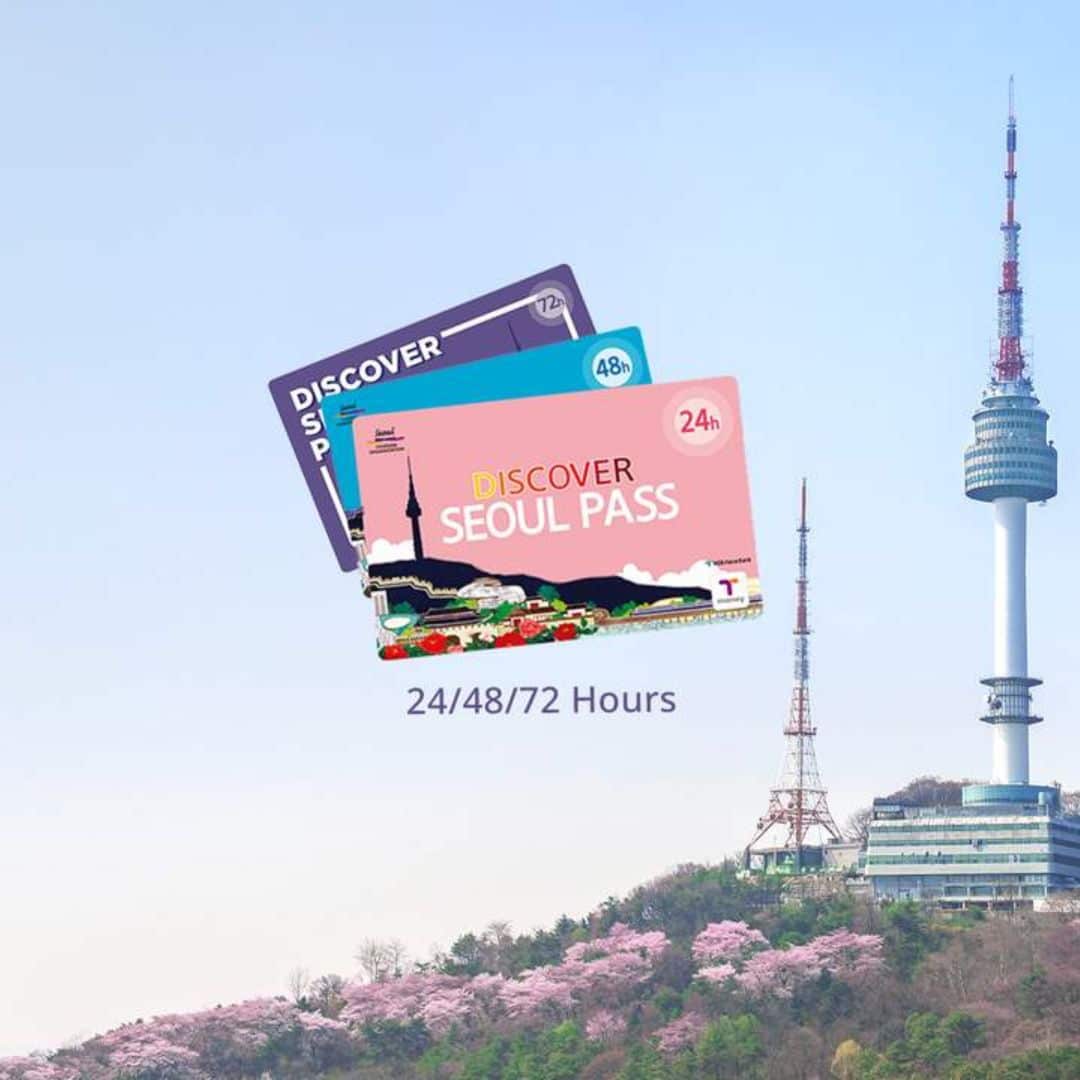
Save With The Discover Seoul Pass
Travelers to Seoul have a lot of options for incredible attractions to enjoy and experience. However, tourists, especially families, can find that the cost of these attractions quickly add up, especially when you are visiting many locations in a short time.
A great way to save money when you travel in Seoul is to buy a Discover Seoul Pass – a special card that offers you big savings on some of Seoul’s top attractions, as well as other benefits.
If you plan to visit Seoul’s Royal Palaces, N Seoul Tower, Lotte World Adventure Theme Park, the COEX Aquarium, Alive Museum, Seoul Zoo, or other premium attractions, you can gain free entry when you purchase a Discover Seoul Pass.
Not only that, you can also get a free river cruise, free hanbok rental, free ride on the Airport Express from Incheon Airport to Seoul, free City Tour Bus Ride, free T-Money Card and lots more.
The Discover Seoul Pass is valid for 24 | 48 | 72 hours and is valid from the moment you first use it until that many hours later.

Things To See & Do In Korea
If you want to build your own itinerary for South Korea, then this section of the South Korea Travel Guide will provide the building blocks you need to craft the perfect trip.
South Korea is a country packed with famous landmarks and sights, unique culture – modern & historical, family-fun activities, outdoor adventures, cozy cafe districts, and natural wonders. There’s more to do in Korea than you could imagine and it’s impossible to explore it all in one trip. Try to plan your itinerary by cities and locations. For example, plan your day in Seoul stay by district.
Here are some of the best things to see and do in South Korea, broken down into different themes so you can find things that interest you the most. The location of each of these attractions is included, too, so you can create a city by city itinerary, seeing the best South Korea has to offer.
These attractions are available all year round so whenever you go to Korea, you can enjoy them. There are plenty of things to see and do in Korea that only happen during certain seasons. Check out the Season Guide in this South Korea Travel Guide for more information about Korean festivals and seasonal events.
Here are 10 of the best Korean landmarks:
- Lotte World Tower (Seoul)
- Bukchon Hanok Village (Seoul)
- Nami Island (Gapyeong)
- Banwol ‘Purple Island’ (West Coast)
- N Seoul Tower (Seoul)
- Dongdaemun Design Plaza (Seoul)
- Seoraksan National Park (Gangwon Province)
- Hwaseong Fortress (Suwon)
- Cheonggyecheon Stream (Seoul)
- Gamcheon Cultural Village (Busan)
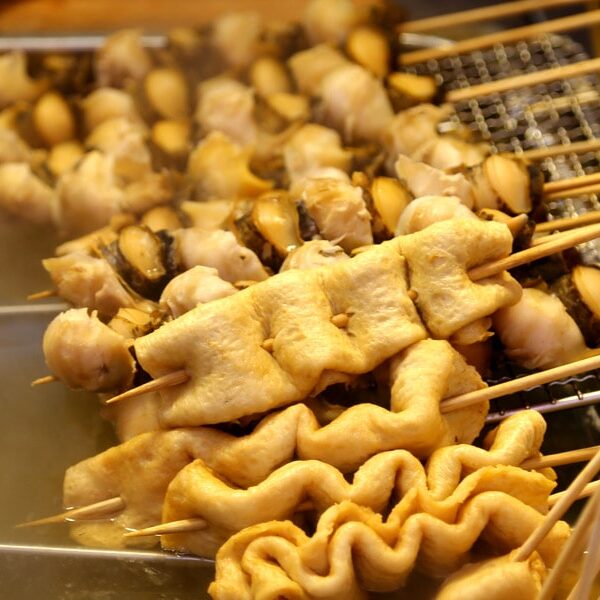
Why travel to a diverse country such as Korea and not embrace the local culture? Here are 10 of the best unique Korean experiences you can only enjoy fully in Korea. Be brave, try something new and create lasting memories of your Korean adventure.
Here are 10 of the best uniquely Korean experiences:
- Wear Traditional Korean Hanbok (Royal Palaces)
- Sing In A Korean Noraebang (Everywhere)
- Sleep In A Korean Hanok House (Hanok Villages)
- Visit The Kimchi Museum (Seoul)
- Eat Street Food (Traditional Markets)
- Experience A Korean Temple Stay (National Parks)
- Drink Makgeolli – Korean Rice Wine (Everywhere)
- Visit The World’s Most Dangerous Border – The DMZ
- Relax In A Korean Sauna (Everywhere)
- Visit A Korean Green Tea Field (Boseong, Jeju)

Here are 10 of the best Korean historic sights:
- Gyeongbokgung Palace (Seoul)
- The Secret Garden (Seoul)
- Bulguksa Temple (Gyeongju)
- Jeonju Hanok Village (Jeonju)
- Seoul Fortress Walls (Seoul)
- Haedong Yonggungsa Temple (Busan)
- Andong Hahoe Folk Village (Andong)
- Gyeongju Historic Area (Gyeongju)
- Baekje Historic Area (Gongju, Buyeo)
- Jangsaengpo Whale Museum (Ulsan)

Here are 10 of the best modern K-Culture spots:
- K-Pop Headquarters (Seoul)
- HYBE Insight (Seoul)
- COEX Artium (Seoul)
- K-Style Hub (Seoul)
- Hongdae Shopping Street (Seoul)
- Hallyu K-Star Road (Seoul)
- Asia Culture Center (Gwangju)
- Busan International Film Festival Square (Busan)
- MBC World Theme Park (Seoul)
As you’ll see, there’s just so much to see and do in Korea. You could spend a whole week in Seoul and not run out of exciting activities to do and sights to explore. Our advice is to try to avoid planning to do too many things in one day and adding in plenty of free time.
There’ll be many random things that catch your eye, such as a curious side street, or your nose, like the delicious smells from a food stall. Make sure you’ve got flexibility in your schedule to investigate these surprises and to take a rest if you need to – walking and traveling for days on end can get tiring.
Korea comes alive at night and markets and city streets are often best explored after the sun goes down. Drab concrete buildings come alive with neon signs, lanterns, and electric lights and are quite a sight to be seen. Visit popular tourist attractions such as the royal palaces and hanok villages during the morning as they’ll be less crowded.
If you plan to visit the Secret Garden in Changdeokgung Palace (you really should!), tickets are available on the day and sell out fast. Getting to these places early can guarantee you get tickets, see the sights unobstructed, and have time in the evening to soak up the night life and culture.
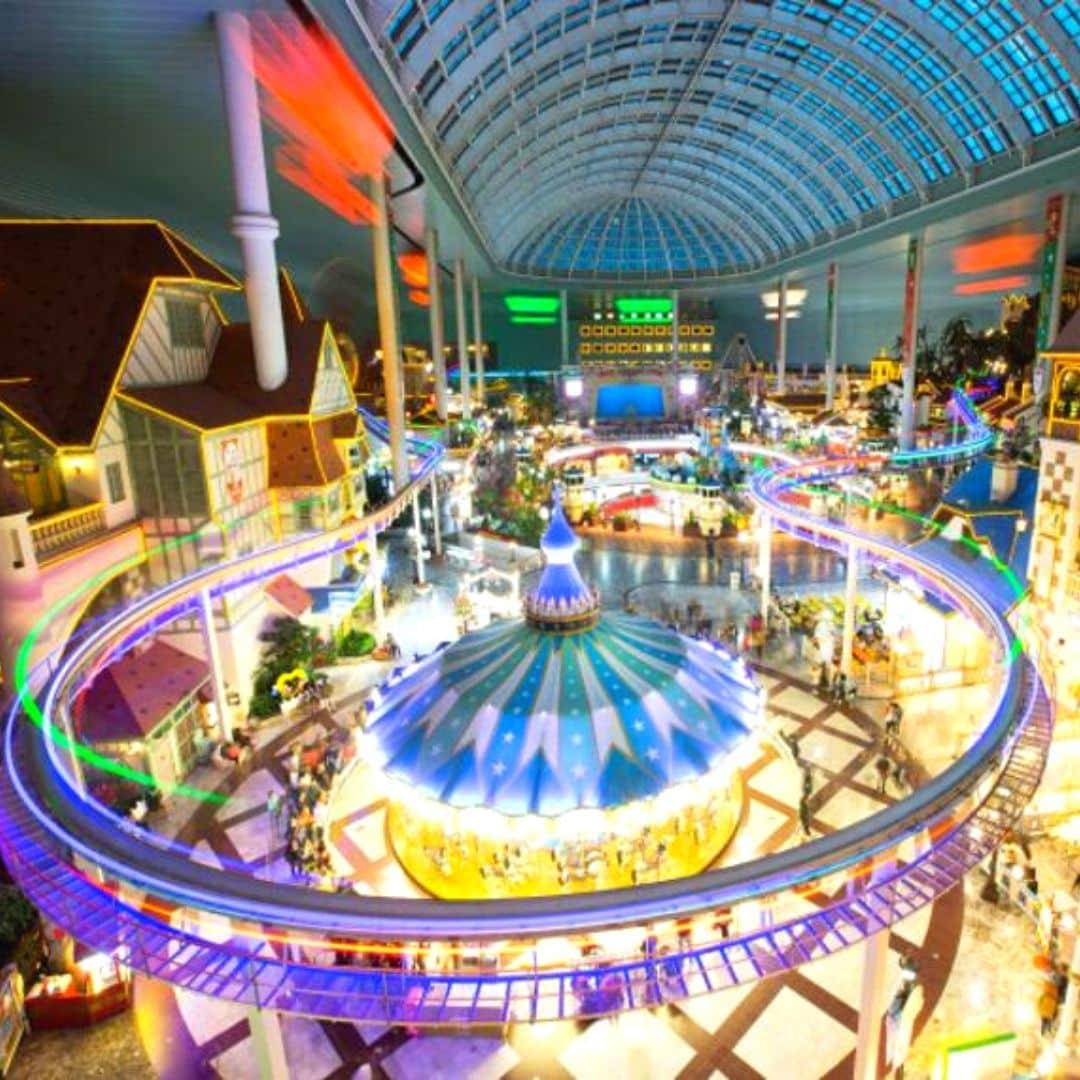
Here are the 10 best family-friendly activities in Korea:
- Nami Island & Garden of Morning Calm (Gapyeong)
- Seoul Grand Park & Zoo (Seoul)
- Lotte World Adventure (Seoul, Busan)
- Alive Museum & Dynamic Maze (Seoul)
- Seoul Children’s Grand Park (Seoul)
- Seoul Children’s Museum (Seoul)
- Everland & Caribbean Bay Theme Parks (Near Seoul)
- Sea Life Busan Aquarium
- Jeju Dinosaur Island (Jeju)
- Alpaca World (Gangwon Province)
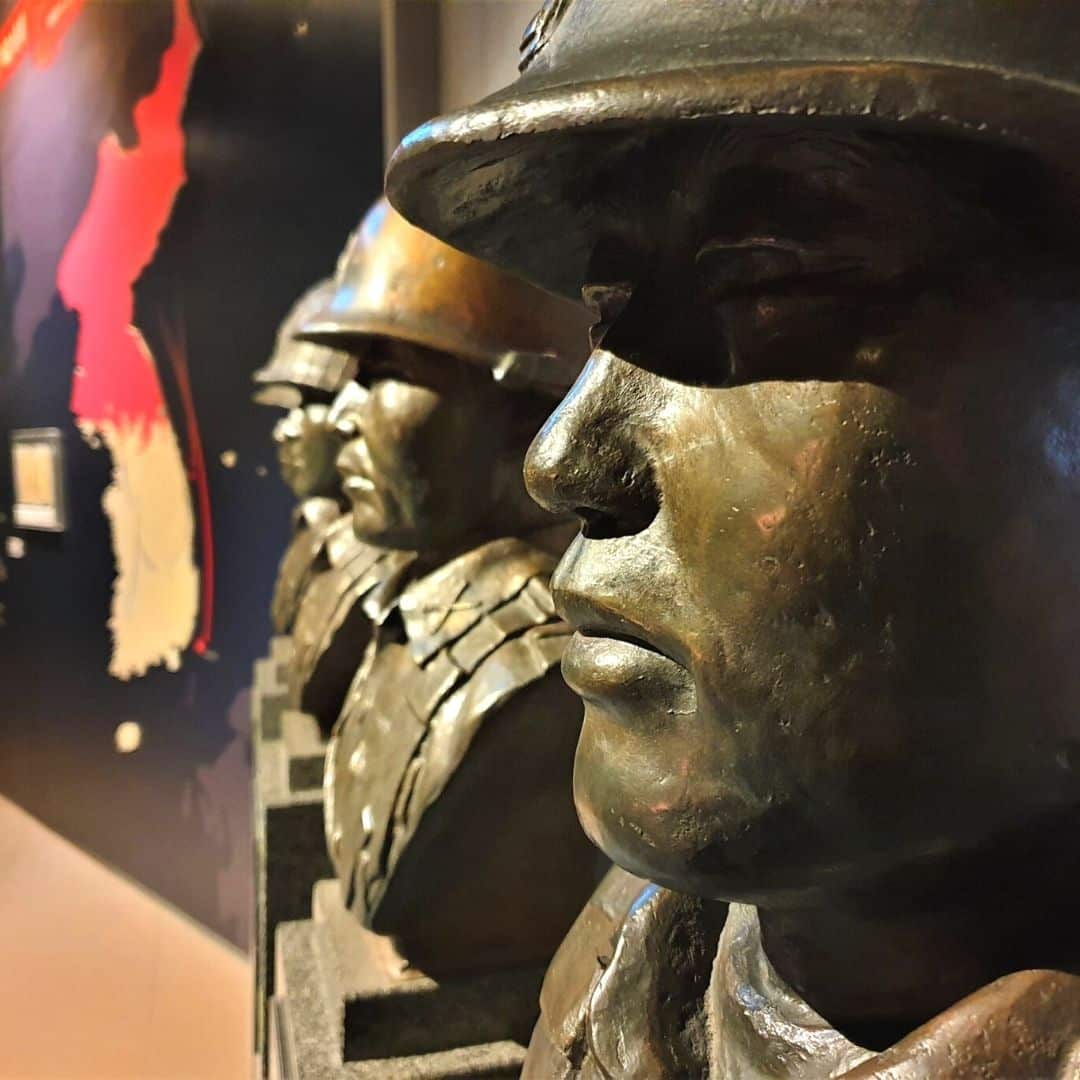
Here are the 10 best museums & galleries in Korea:
- National Museum of Korea (Seoul)
- Seoul Museum of Art (Seoul)
- Gyeongju National Museum (Gyeongju)
- War Memorial of Korea (Seoul)
- National Folk Museum of Korea (Seoul)
- National Maritime Museum (Busan)
- Seodaemun Prison History Museum (Seoul)
- Seoul Museum of History (Seoul)
- Museum Kimchikan (Seoul)
- Daegu Art Museum (Daegu)

Here are the 10 best cafe areas in Korea:
- Ikseondong Hanok Village (Seoul)
- Gyeongui Line Hongdae (Seoul)
- Samcheondong Cafe Street (Seoul)
- Jeonpo Cafe Street (Busan)
- Hwangnidan-Gil (Gyeongju)
- Gangneung Coffee Street (Gangneung)
- Sinsa-Dong / Garosugil Road (Seoul)
- Jukjeon Cafe Street (Seoul)
- Hwaseong Haenggung Area (Suwon)
- Kim Kwang Seok Gil Street (Daegu)

Here are 10 of the best Korean markets and shopping areas:
- Gwangjang Market (Seoul)
- Myeongdong Market Area (Seoul)
- Jagalchi Fish Market (Busan)
- Centum City Mall (Busan)
- IFC Mall (Seoul)
- Starfield COEX Mall (Seoul)
- Nambu Market (Jeonju)
- Seomyeong Underground Shopping Center (Busan)
- Seogwipo Maeil Olle Market (Jeju)
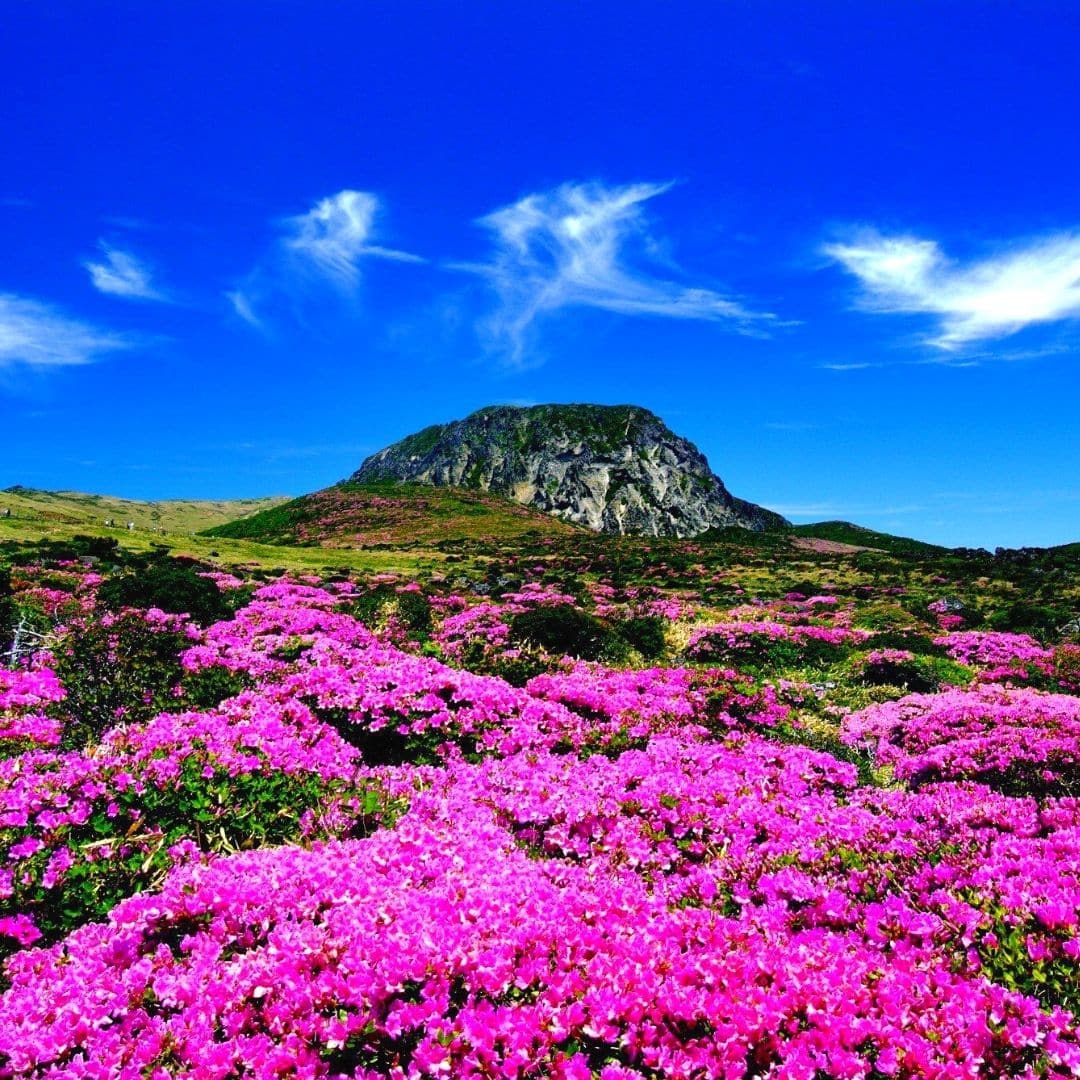
Here are 10 of the best natural sights in Korea:
- Hallasan Mountain (Jeju)
- Jirisan National Park (Jeollanam Provice)
- Seoraksan National Park (Gyeonggi Province)
- Seongsan Ilchulbong Sunrise Peak (Jeju)
- Damyang Juknokwon Bamboo Forest (Damyang)
- Boseong Green Tea Plantation (Boseong)
- Haeundae Beach (Busan)
- Udo Island (Jeju)
- Hwaamdonggul Cave (Gangwon Province)

Travel Itinerary For Korea
When planning a travel itinerary for South Korea, it’s best to think about what kind of experience you want when you travel to South Korea and build your itinerary from that. What kind of traveler are you and what do you want to take away from your Korea trip? Are you planning a trip for yourself, for your family, or as a romantic escape?
Do you want to learn about traditional Korean culture and history? Are you visiting to immerse yourself in modern Korean culture and maybe meet your idols? Are you planning to get out into Korea’s mountains to hike and join a Buddhist Temple Stay? Or are you going to eat, drink, shop, and make the most of Korea’s discounted goods? Or all of the above?
This section of this South Korea Travel Guide will offer some of the best one-week and two-week itineraries for South Korea. These itineraries are rough guides, created to help you begin planning your trip. Feel free to pick and choose the parts from them that you like to create your own travel itinerary for South Korea. We’ll be adding more great itineraries soon, be sure to check back for the latest ideas.
Classic 1 Week Itinerary For Korea: Seoul, Busan, Gyeongju
This is one of the most popular of the 1-week itineraries for South Korea and will take you to the most famous and interesting places that are top of most travelers’ South Korea bucket lists. Starting in Seoul, Korea’s capital, you’ll explore the best sights in this city before taking a day trip out to the lovely Gapyeong County to get a breath of fresh Korean countryside air.
From day 4, zip across the whole of Korea on the high-speed KTX train and explore Korea’s second city, Busan. See coastal temples, fish markets, wide beaches, and more in Busan before taking a day trip to Korea’s historic UNESCO World Heritage City, Gyeongju. On the last day, it’s time to return to Seoul to pack your bags full of the best souvenirs and snacks and say farewell in the highest part of the city.

Afternoon : Dressed in your hanbok, enjoy more traditional Seoul with a walk around the narrow streets of the Bukchon Hanok Village. Visit traditional Korean teahouses, galleries, markets, and more.
Evening : Check out the stalls and shops of artsy Insadong, contemplate Jeogyesa Temple, and take an evening stroll along the Cheonggyecheon Stream before dining in Myeongdong or the Jonggak Avenue of Youth. This Full Day Tour of Seoul will show you some of the hottest spots in the city, while this Customized Private Tour of Seoul will allow you to choose where to go.
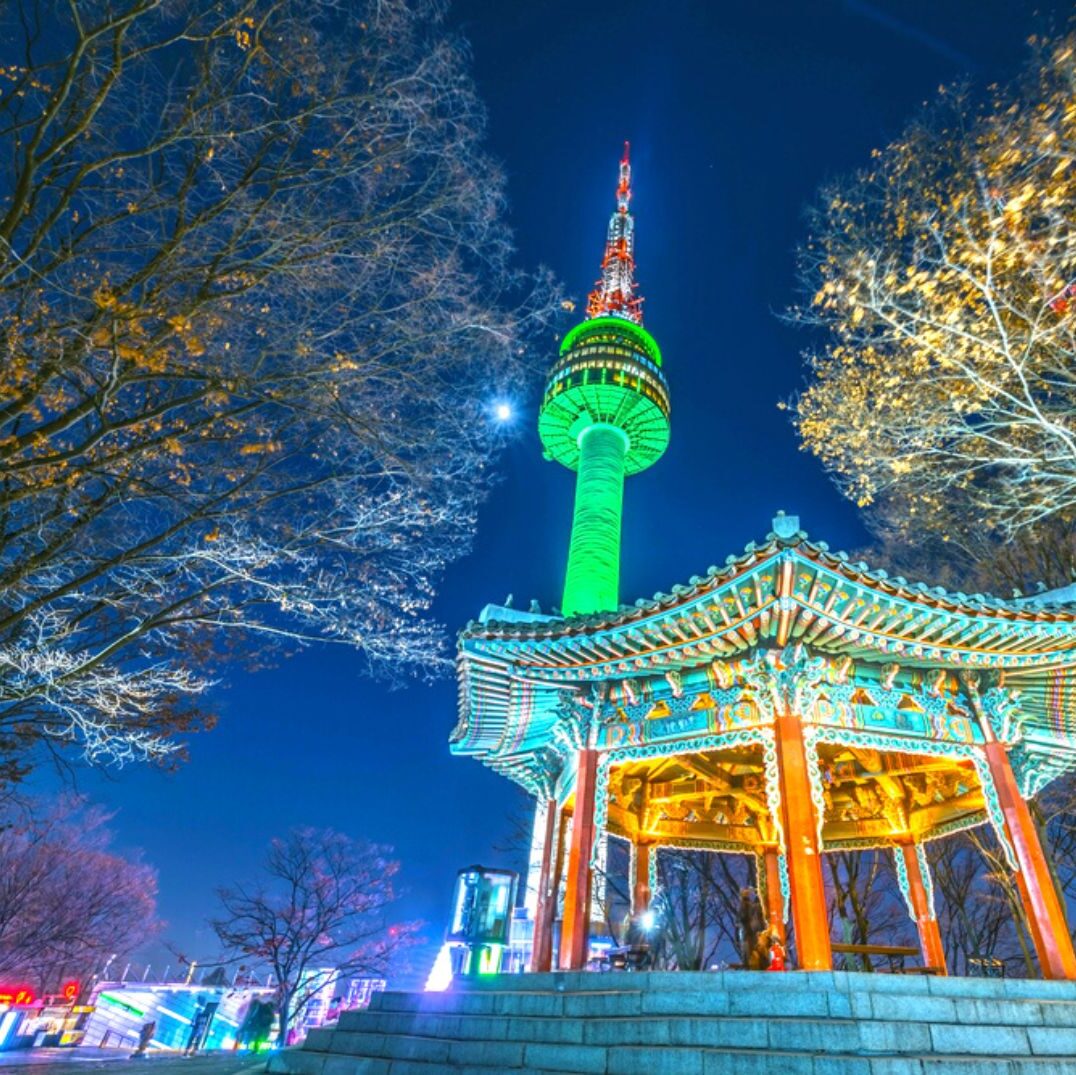
Afternoon : Head back to central Seoul and witness the bustling sights and delicious smells of Seoul’s traditional Gwangjang and Dongdaemun Markets. Try delectable Korean street foods here.
Evening : Take the Namsam Cable Car to the top of Namsan Mountain and watch the sunset from N Seoul Tower. See some of Seoul’s fortress walls before heading back down to go late-night shopping at Myeongdong Market.
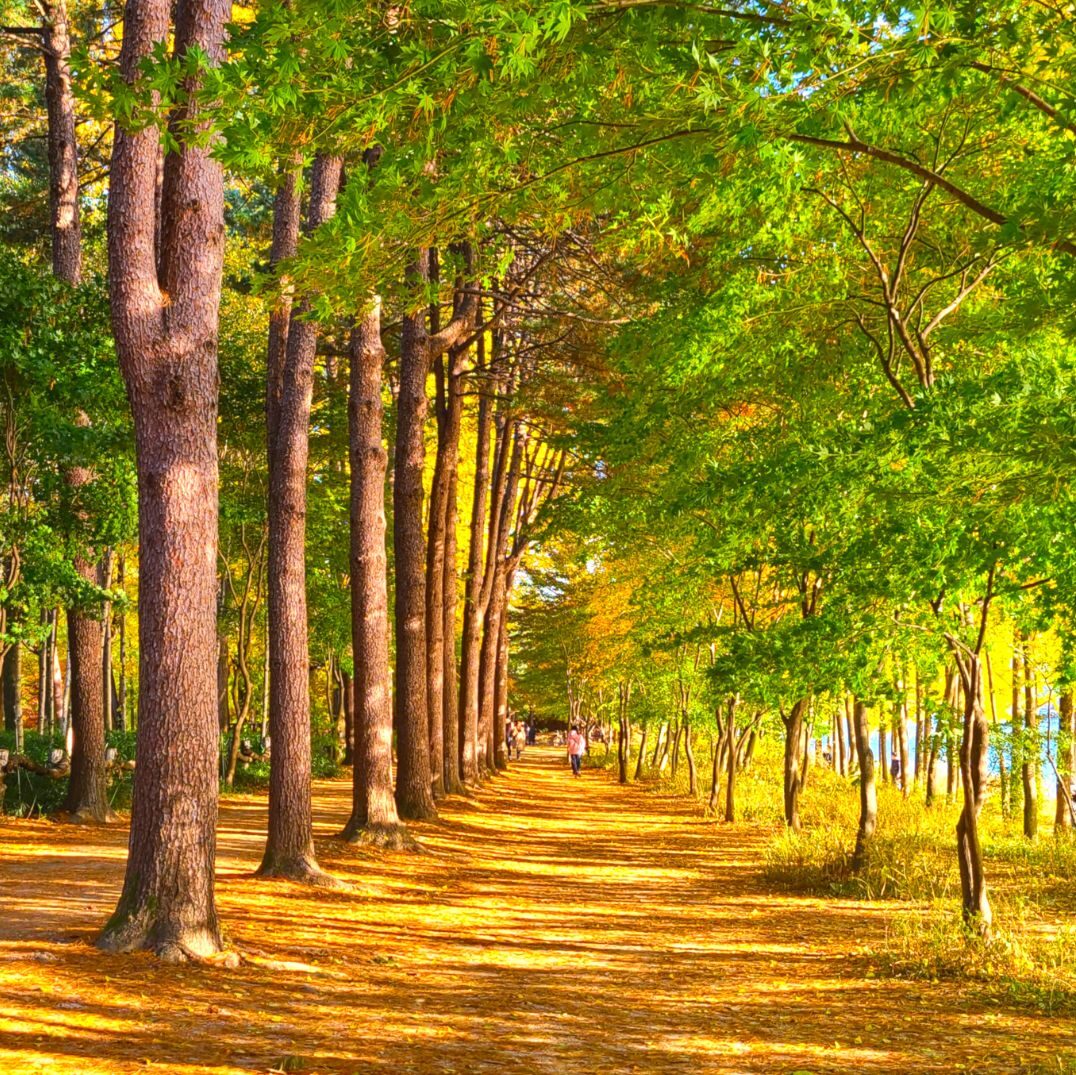
Afternoon : Zip line or sail over to Nami Island for impressive nature, bike rides, leafy walks, and cozy cafes. See popular scenes from K-dramas and even some wild animals, like deer and rabbits.
Evening : Pedal your way along an abandoned railway at the Gangchon Rail Bike Park before heading back to Seoul for fine dining in Gangnam’s Apgujeong Rodeo district.
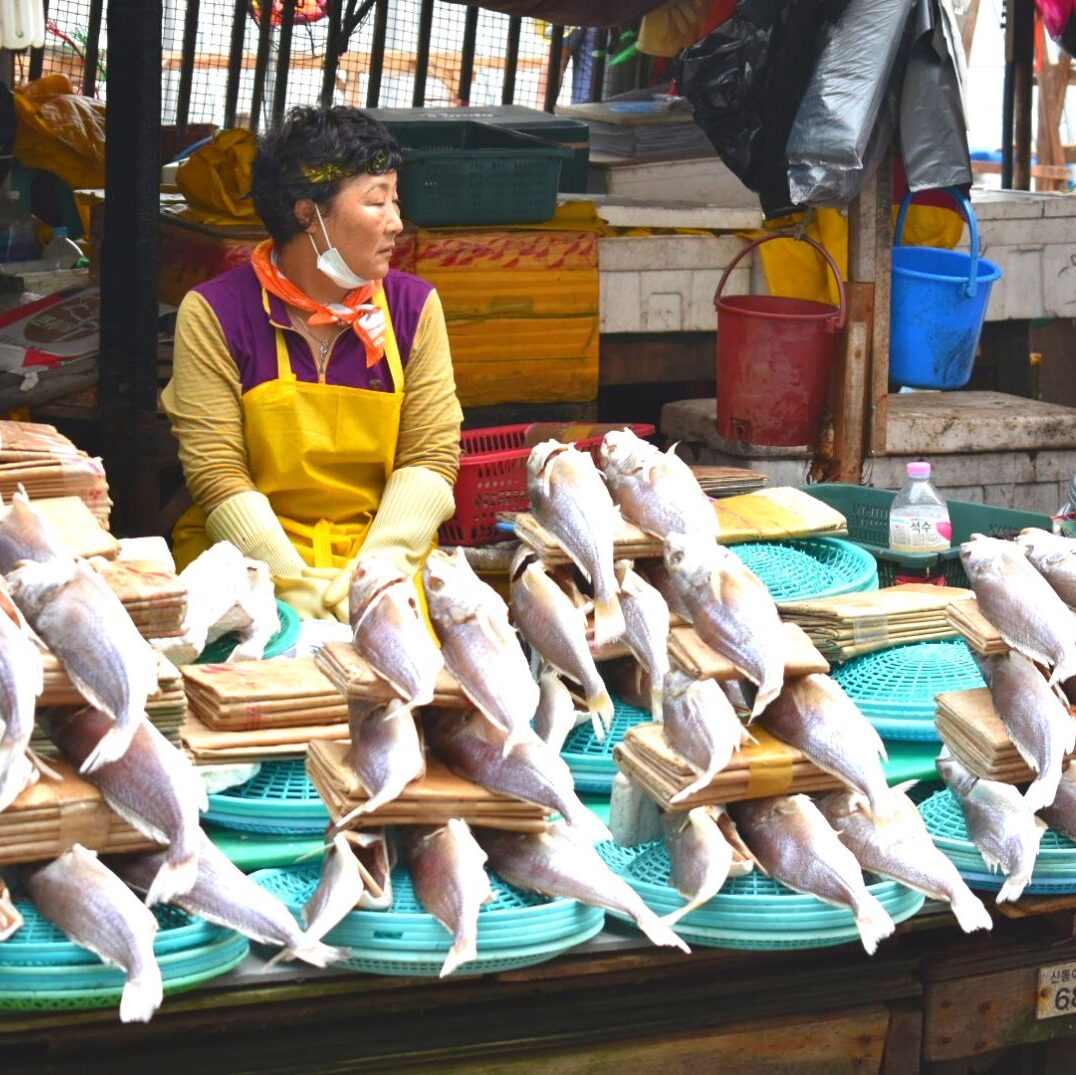
Afternoon : Head to the Nampo-dong near Busan Station and visit Jagalchi Market for a fresh seafood lunch. Then explore cosy Bosu-dong Book Alley or take a taxi to the Huinnyeoul Culture Village.
Evening : Take the subway up to Haeundae Beach for Busan’s best night-scenes. Grab dinner overlooking the beach, or at one of the market stalls. If you’re feeling brave, visit BUSAN X the SKY to see breathtaking views over the coast and city.

Afternoon : Head to the Gyeongju Gyochon Traditional Village for a traditional meal and to see the stunning Woljeonggyo Bridge. Gyeongju National Museum is nearby, too.
Evening : See the tranquil night views of Wolji Pond where palace buildings reflect perfectly in still waters. Stop at Hwangnidan-gil area for dinner and drinks before returning to Busan.
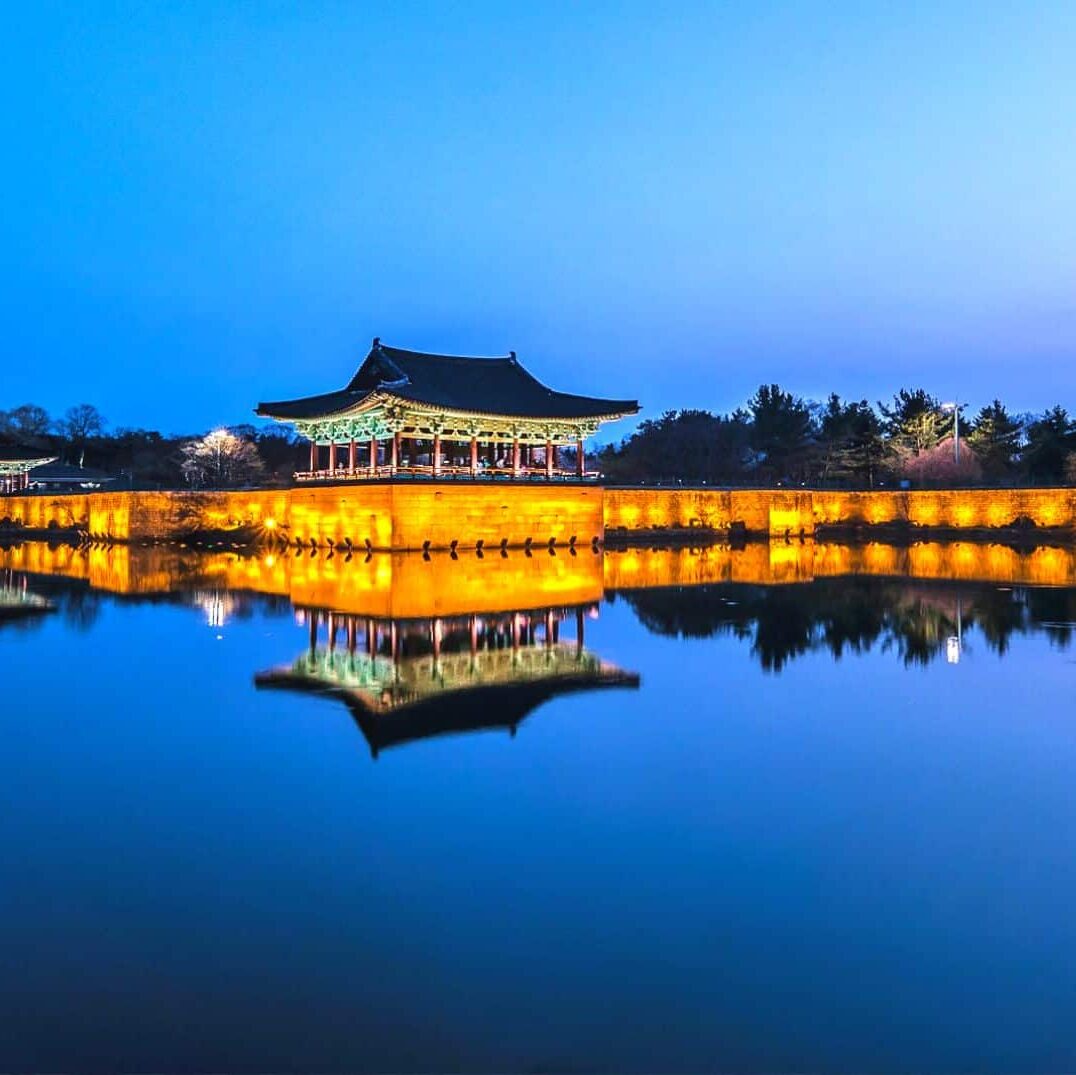
Afternoon : Explore the artistic shopping streets of Hongdae for last minute souvenirs and gifts for yourself. Take a break in one of the unique animal or artsy cafes.
Evening : Either take a night cruise along the Han River from Yeouido Hangang Park or dine in style at the Lotte World Tower in Jamsil, the world’s 6th tallest building. Both offer great night views of Seoul and unforgettable memories to take home.

Korean Seasons Guide
The best time to visit South Korea is during the warm spring or fall seasons. The weather is mild and clear, there’s a range of festivals and seasonal activities to enjoy, and you can travel to Korea comfortably.
The best months to visit are April, May, September, and October. These months are all during the Korean school semester, so there won’t be as many local travelers around during the weekdays. However, expect the weekends to be busy as people leave the cities to travel within Korea.
Large public holidays, including Chuseok (mid-autumn festival) in September / October) and Buddha’s Birthday (May), provides travelers with the opportunity to experience Korean culture and celebrations. These holidays change each year based on the lunar calendar.
Korean Weather & Climate
South Korea is a country that experiences four very distinct seasons, with temperatures ranging from 100 Fahrenheit in the summer to below 0 Fahrenheit in the winter. Each of South Korea’s seasons brings opportunities to see unique natural views and enjoy the different climates in Korea.
Spring has some of the gentlest weather, with light rain and a quick jump in temperature to the 60s and 70s by late March. Summer begins with the rainy season in late June and becomes extremely humid and hot throughout July and August before cooling again in September.
Fall has the best weather in Korea, with many warm, sunny days. Cold winter weather appears very quickly in mid-November and the first snow usually appears by late November. Winter is dry and sunny with the lowest chance of rainfall but is also very cold. Snow isn’t constant, but can fall for several weeks on and off during winter.
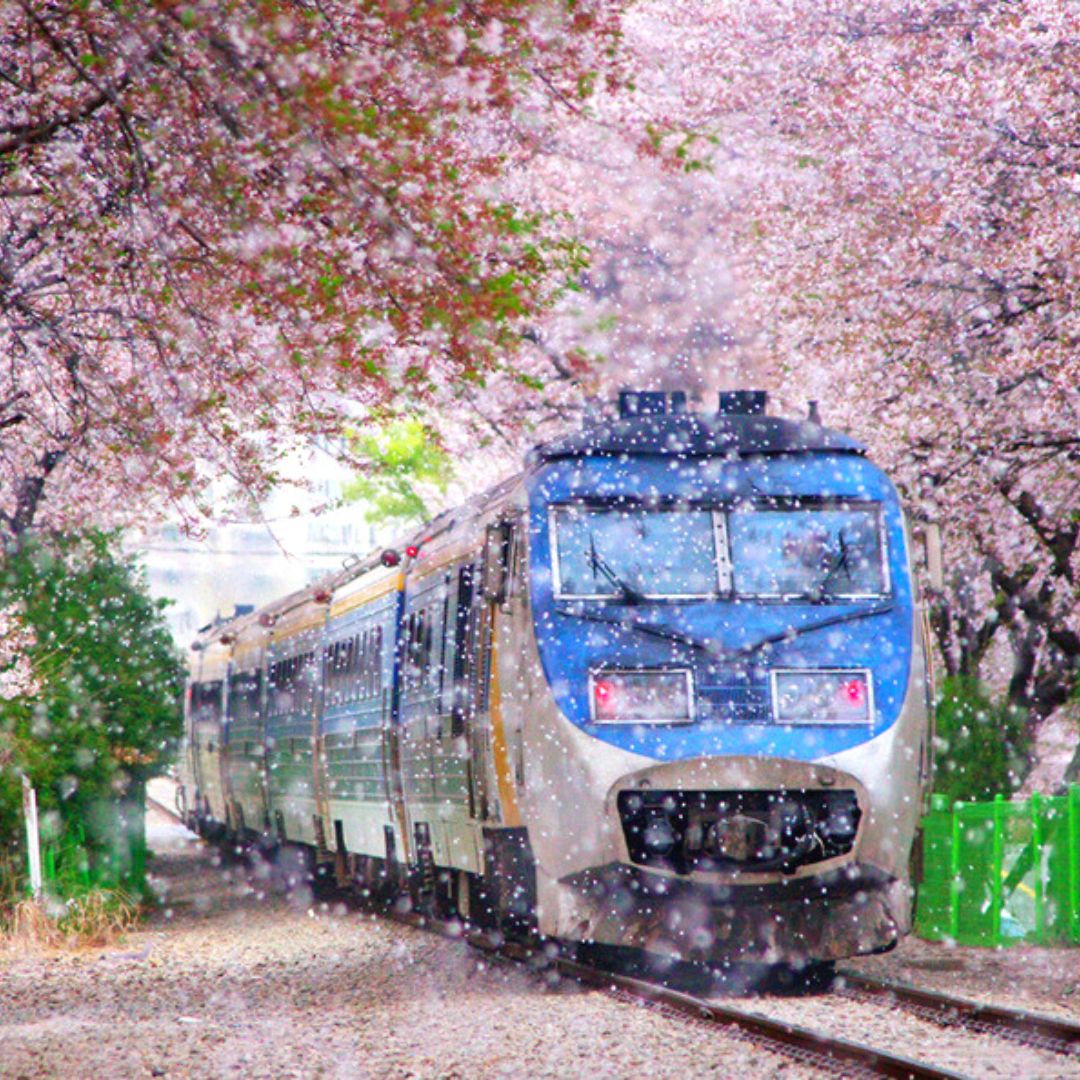
Visiting in spring offers the chance to see beautiful cherry blossoms stretch across the country, as well as many other spring flowers that brighten up Korea after a cold winter.
Spring starts in late March with the awakening of the cherry blossoms and ends in early June with the start of the rainy season. South Korea is a country with a close connection to nature, which can be witnessed in the many spring festivals and celebrations that happen throughout the year.
Some of the best spring festivals include the Jinhae Cherry Blossom Festival, Damyang Bamboo Forest Festival, Yeon Deung Hoe Lotus Lantern Festival, Jindo Sea Parting Festival, and Boseong Green Tea Plantation Festival.

The weather in summer is perfect for getting outside and relaxing on one of Korea’s many beaches. Some of the best activities include spending a weekend camping or glamping by the beach, hiking in shaded valleys in the national parks, and water sports such as surfing, kayaking, and scuba diving.
Unfortunately, the heat may put off some travelers, and high humidity makes it uncomfortable to move around too much. Fortunately, Korea is a modern country with lots of air-conditioning and ways to deal with the hot weather, including delicious summer dishes.
Cool down with a bowl of Korean bingsu (shaved ice dessert) or a cool latte in one of the many cozy Korean cafes in popular beach destinations.

Travelers to Korea in the fall are treated to spectacular fall foliage creeping far and wide. You can see it falling on palace grounds, sprawled on mountains in national parks, and along city streets.
The start of the fall foliage season in Korea coincides with the end of the hot and humid summer, with clear skies and cool weather, making it the perfect time to travel in Korea. Like spring, the fall season in Korea is one of the festivals and celebrations.
The Chuseok holidays in late September / early October are the biggest public holidays of the year, with cultural events held in popular tourist destinations. There’s also a range of cultural festivals, such as the Andong Mask Festival, Baekje Culture Festival, Jinju Namdang Yudeung Lantern Festival, Jeonju Bibimbap Festival, and the Seoul Kimchi Festival.

Winter, like summer, has more extreme weather than spring and fall, with temperatures often in the 20s and 30s and below. This season, however, is also one of the best for travelers who want to see clear, blue skies and experience good weather.
Winter is the driest season and it very rarely rains. If you don’t mind the cold weather, it’s perfect for traveling around South Korea. One of the biggest draws during winter is the chance to see snowy Korean landscapes, from snow-bedecked royal palaces to frosty peaks atop Korea’s many mountains.
Winter sports are popular in Korea, with ski and snowboard resorts aplenty. Winter also offers the chance for family fun with winter attractions including sledding, winter illuminations, and Christmas parades.

Cost To Travel To Korea
The cost to travel in South Korea largely depends on your personal style of travel. You can travel on a low budget in Korea, for under $50 per day, or you could also travel for 10 times that amount if you wished to.
Food costs range from a few dollars for a bowl of jajang (black soybean) noodles to hundreds for premium hanwoo (Korean beef) steak. The same applies to accommodation, with budget hostels costing $10 per night and premium 5 stars hotels costing hundreds.
Most travelers to Korea will already know what they want to prioritize their spending on. Some travel to Korea to eat, others to shop, and many more to experience the unique culture and history that Korea has to offer.
The costs in this section of our South Korea Travel Guide are based on the latest costs in Korea from this year. Examples of different costs have been covered to give you an idea of what to expect when you try to budget.
Please note, these prices are based on traveling in Seoul during non-peak times. Prices may be higher in peak times, which include cherry blossom season (Apr) and fall foliage season (Oct). Popular tourist cities, such as Gyeongju and Jeonju, may also have higher prices on weekends.
How Much Does It Cost To Travel In South Korea?
Travelers may find they want to spend more on hotels and less on eating out, or vice-versa, so don’t feel like you have to only follow the costs for one section. This is only a guideline to help you plan based on your own personal preferences.
To make it easier to figure out your expected costs to travel in Korea, this South Korea Travel Guide has broken down the costs into 3 different categories. These categories loosely fit 3 different types of travelers, as described below:
- Accommodation: $200+ per night, per room (double)
Korea has a wide range of luxurious hotel options, including rooms in the Lotte World Tower, historic hanok houses, and glamping for those who want to escape to the countryside.
- Food & Drink: $100+ per day, per person
It’s easy to spend a lot on food and drink in Korea as there are so many delectable restaurants. Fresh seafood, Korean steak, or the finest foreign foods are all available.
- Transportation: $20+ per day, per person
Taxis and transportation are relatively cheap in Korea. A taxi journey across Seoul can cost less than $20 for 30 minutes and even the 1st class options on Korea’s high-speed trains are under $100 for the longest journey (Seoul to Busan).
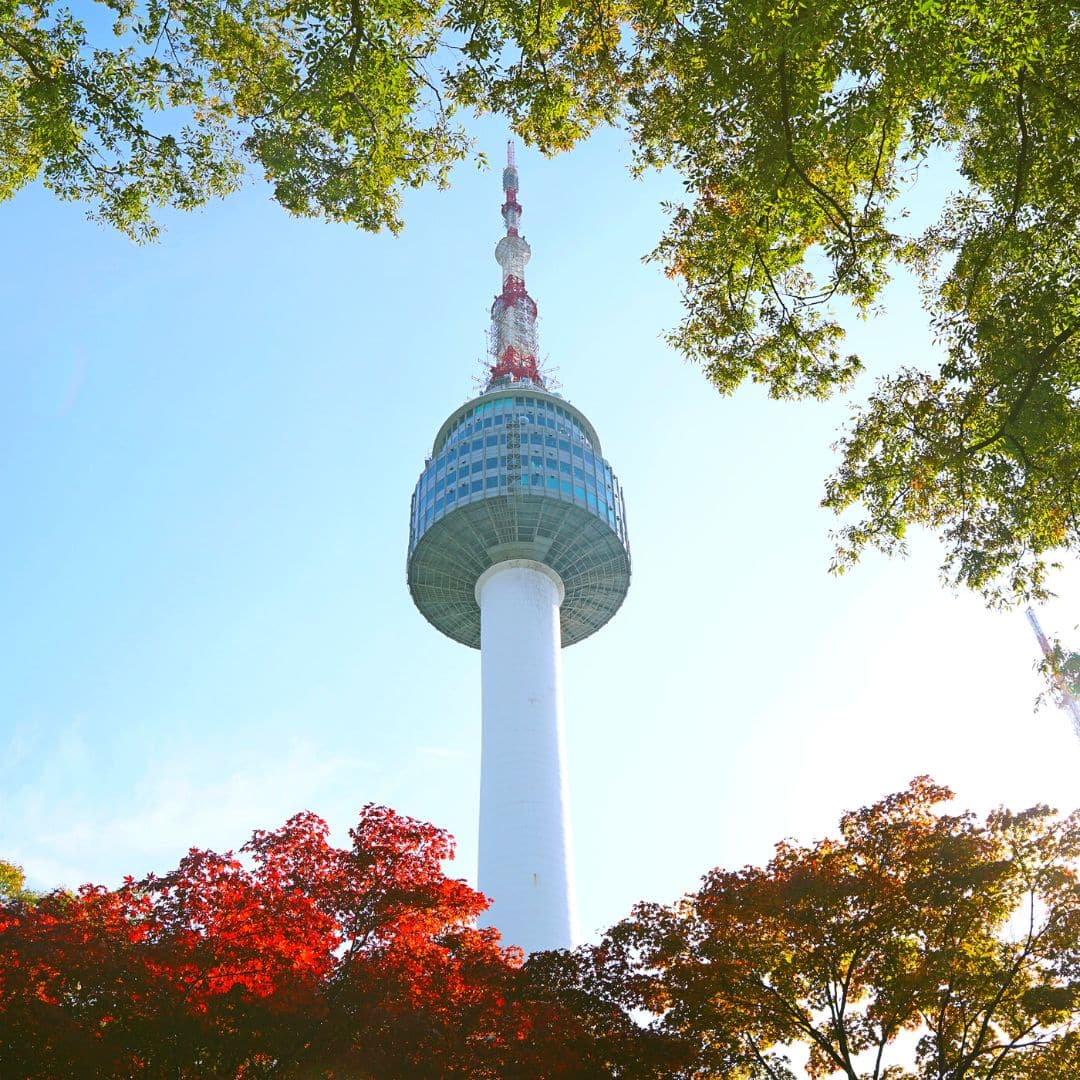
- Accommodation: $100 ~ $200 per night, per room (double)
You can book 4-star hotels in Seoul for very reasonable prices and enjoy both comfort and lower prices than you’d find at home. Korea has a wide range of comfortable mid-priced hotels.
- Food & Drink: $50+ per day, per person
With all-you-can-eat Korean restaurants that serve unlimited Korean BBQ and other dishes for under $20 or $30 per person, it’s easy to enjoy the best food Korea has to offer without breaking the bank.
- Transportation: up to $15 per day, per person
Use the subway and buses to get around the big cities and trains to travel further around Korea without breaking the bank. You can even splash out on a taxi and pay only a few dollars per person when traveling as a group for a few dollars extra.
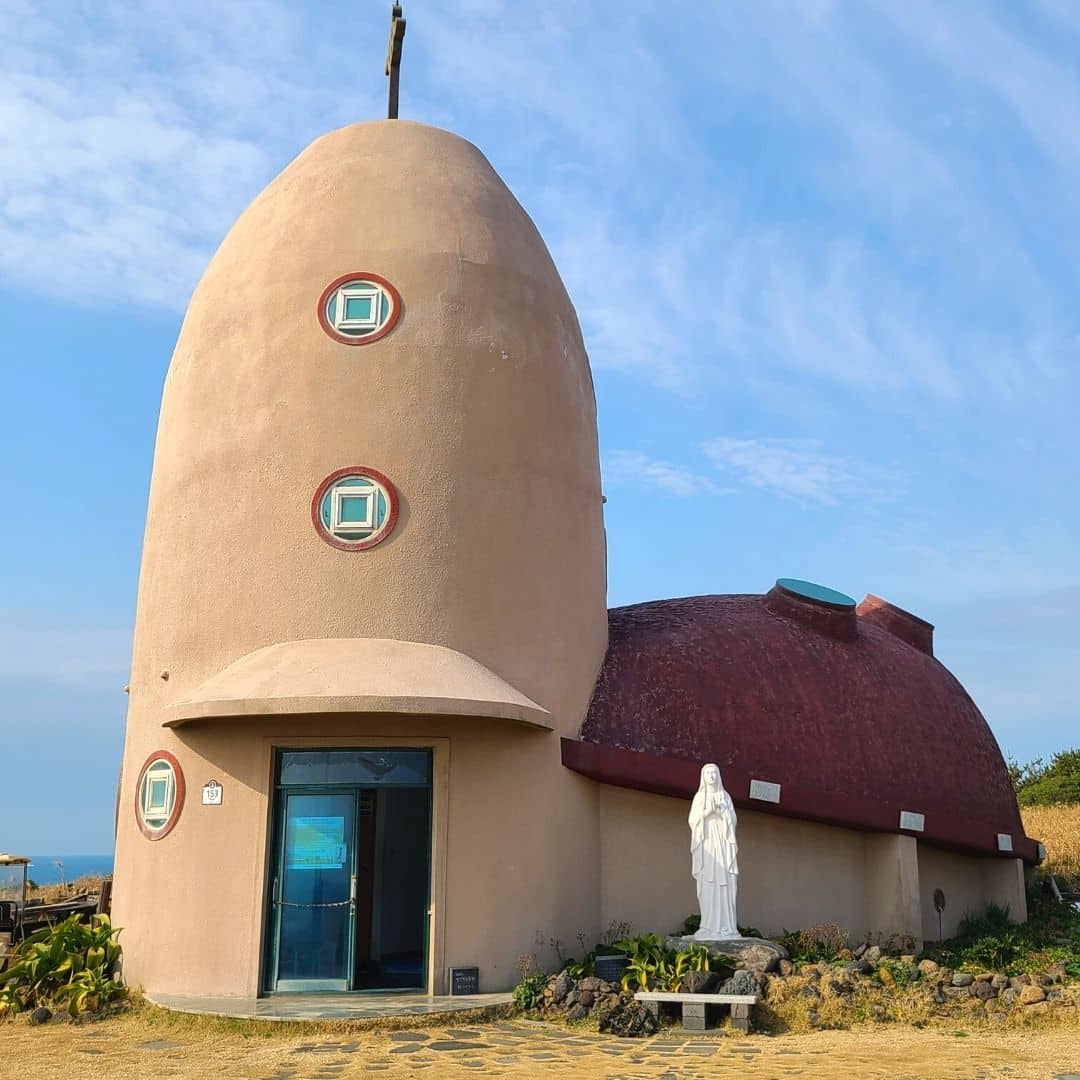
- Accommodation: up to $100 per night, per room (double)
Hostels and guesthouses can be found for under $50 per night and are perfect for somewhere to rest and recharge. If that’s all you need, save money here and spend it elsewhere.
- Food & Drink: $20 – $30 per day, per person
If you budget well and stick to street food, free hotel breakfasts, and convenience store foods, you can eat well and still have enough to splurge on good food for dinner.
- Transportation: up to $10 per day, per person
Walking and buses are cheap and convenient ways to travel around Korea’s biggest cities. Traveling from city to city is also cheap, with intercity buses costing less than $10 for 1-2 hour journeys.

Further Costs To Travel In South Korea
Besides these everyday costs to travel in South Korea, there are other costs that you’ll need to cover from time to time. These costs include internet & phone access, day trips, activities, souvenirs, travel insurance, and flights. These costs will be broken down into low and high-end costs that you can expect to pay in Korea.

Museums and galleries offer unique (and authentic) Korean souvenirs such as pottery, painting, tea & soju sets, and more. If you want something a bit more special, head to the underground markets near Gwangjang Market in Seoul and get your own handmade hanbok, which you can get posted back home to save luggage space.
- Small Souvenirs: $5+
- Korean Cosmetics: $5+
- Korean Artworks: $10+
- Korean Tea (box of): $10 to $20
- Korean Soju Set: $10 to $20
- Korean Handcrafts: $10+
- Tailored Hanbok: $200+
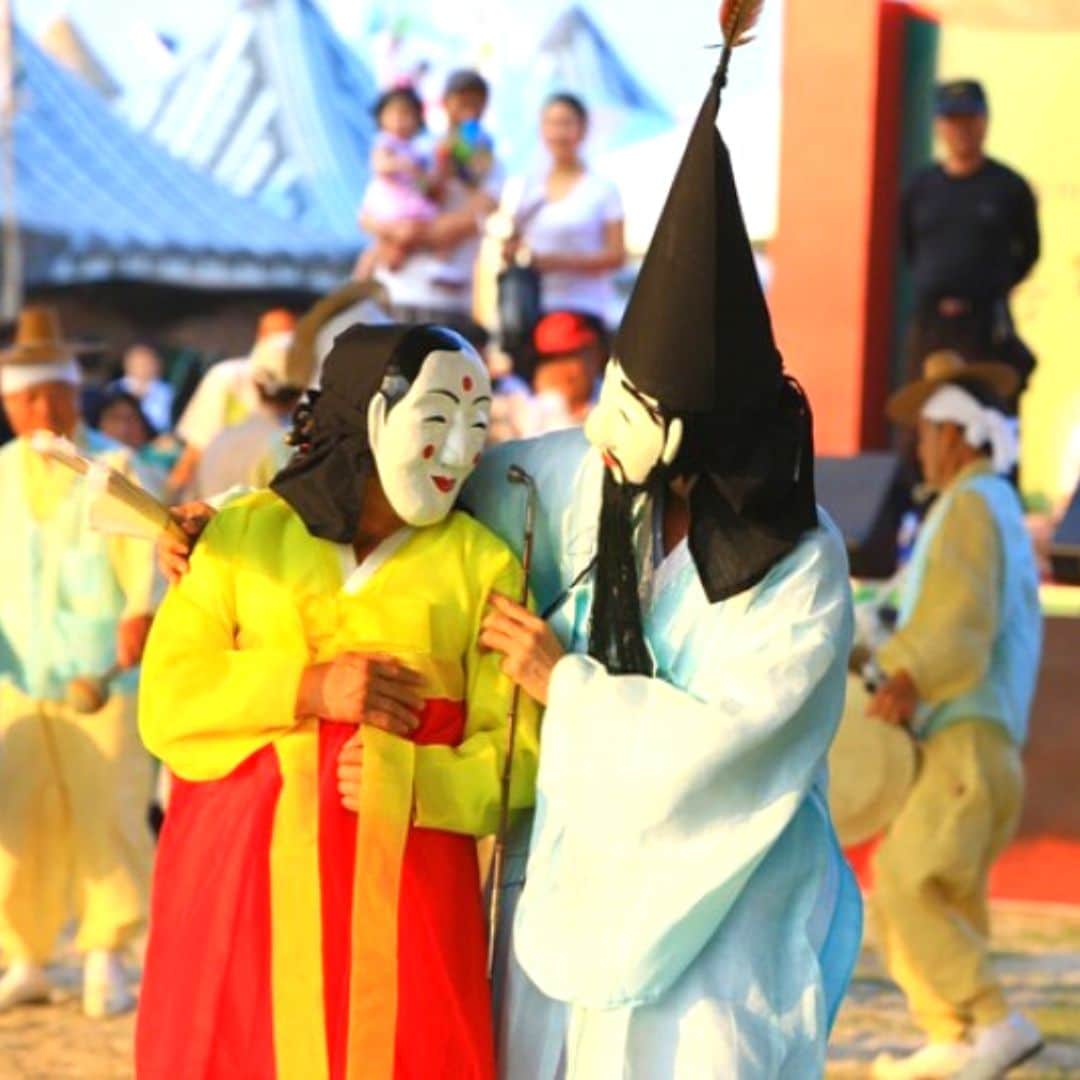
The day trip prices quoted below are the prices you can expect to pay with a reputable tour company like Klook or Trazy . Hiring a private guide will be a lot more expensive and might come to $200+ per day.
Please note: The prices quoted below are estimates and may change depending on the season or tour services.
- DMZ Tour – $50 to $120
- Nami Island Area – $40 to $70
- Everland Theme Park – $30 to $50
- Jeonju Hanok Village – $50 to $70
- Korean Folk Village – $50 to $60
- Seoraksan Mountain – $70 to $150
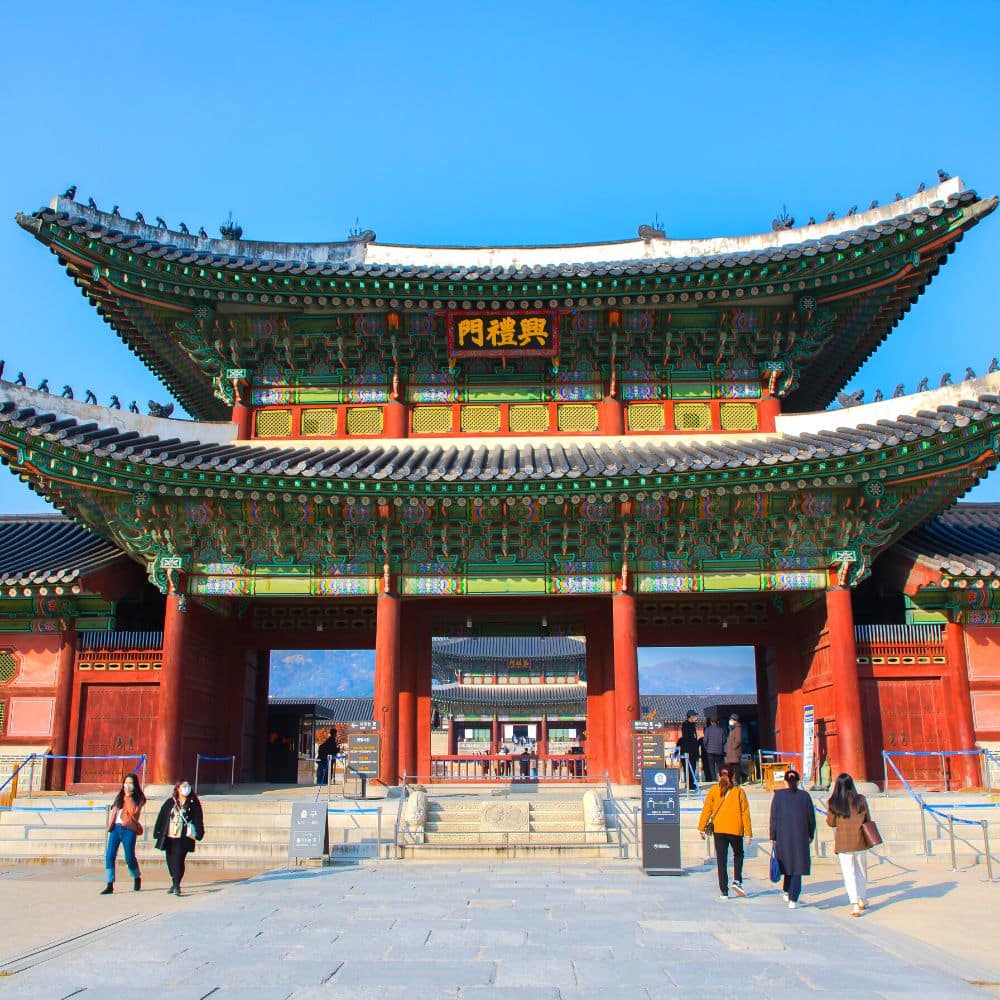
As mentioned earlier in this South Korea Travel Guide, buying a Discover Seoul Pass is a great way to save money on Seoul’s premium attractions.
- Royal Palaces – $3
- N Seoul Tower – $10
- Hanbok Rental – $10+
- Seoul City Tour Bus – $10
- Han River Cruise – $15 to $30
- Seoul Sky Observatory – $30 to $50
- Aquariums – $20 to $30
- Seoul Zoo & Seoul Grand Park $10
- Amusement Parks – $30 to $40
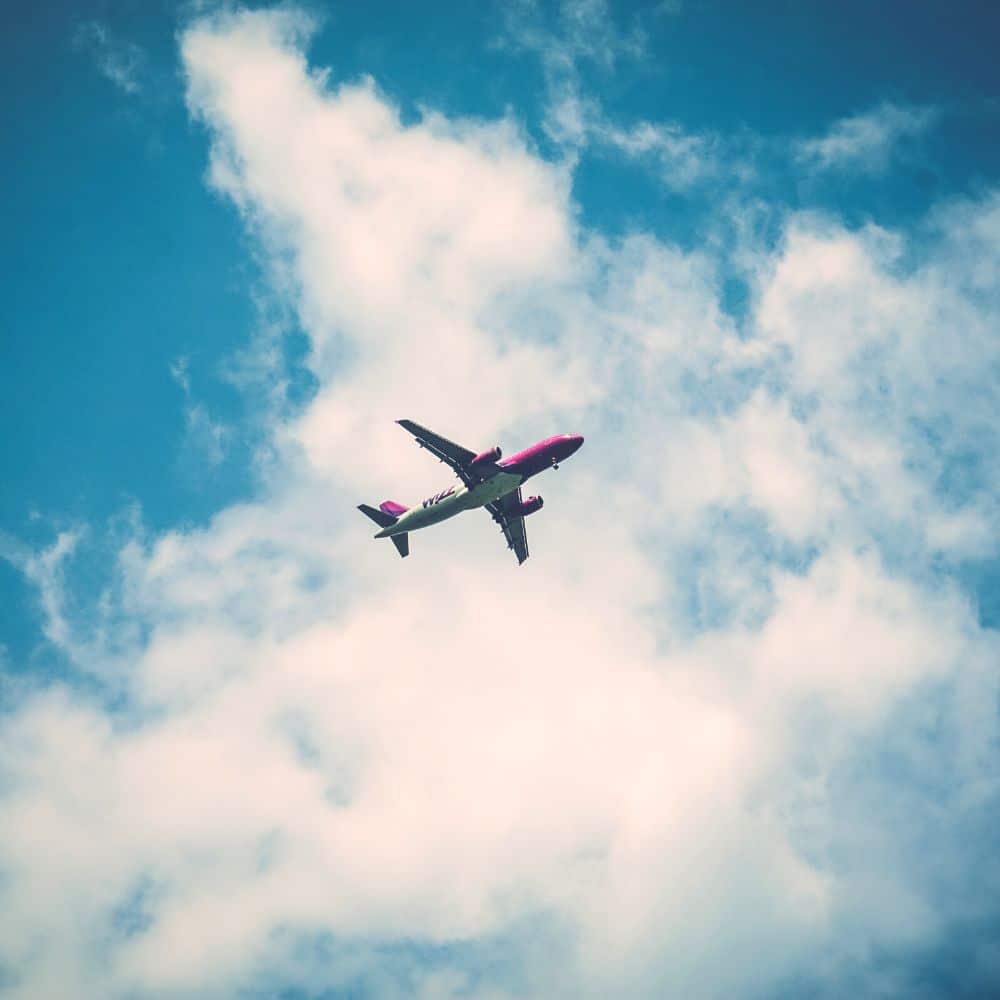
The cost to fly to Korea is more than twice the normal price right now. Fortunately, Korea ended the restrictions on the number of flights into the country from June 2022 and flight costs and availability should be improved in the near future.
Best of Korea recommends Skyscanner and Expedia for the best flight deals to Korea.

Why Travel To South Korea?
In recent years, travelers from around the world have been increasingly drawn to South Korea. The country is a must-see destination in Asia, with more than 17 million travelers in 2019. After reading this South Korea Travel Guide, you’ll understand what draws so many people to the Land of The Morning Calm, as Korea is also known.
There are myriad reasons why people visit Korea. Many come to experience life in a unique country, packed with historical and cultural sights that you won’t find elsewhere in the world. In the afternoon you can walk through a royal palace dressed in hanbok (traditional Korean clothes), sip green tea in a hanok (traditional Korean house), and pass Buddhist monks walking peacefully through an ancient temple.
Modern South Korean culture is conquering the world, with chart-topping acts that include BTS and Black Pink, Oscar-winning movies like Parasite, and phenomenally successful TV shows like Squid Game. This brings in legions of fans flocking to shooting locations and film sets to relive their favorite K-Culture moments. Some lucky travelers even get to catch sight of their favorite K-Stars walking around Gangnam, a hotspot for Korea’s most famous citizens.
Not only is Korea a beautiful country, it’s a country that will make you beautiful, with some of the world’s best fashion and beauty shops. Korea is famous for its K-Beauty products and is a beauty and fashion shoppers paradise. From the street fashions of Hongdae, to the luxurious fashion malls of Gangnam, and the wall-to-wall malls with discount clothes in Dongdaemun, you’re guaranteed to find something you can’t resist at a great price. If you prefer a cultural shopping experience, there are traditional markets all over Korea, where you can experience street food, buy novel gifts, and see how locals live and socialize.
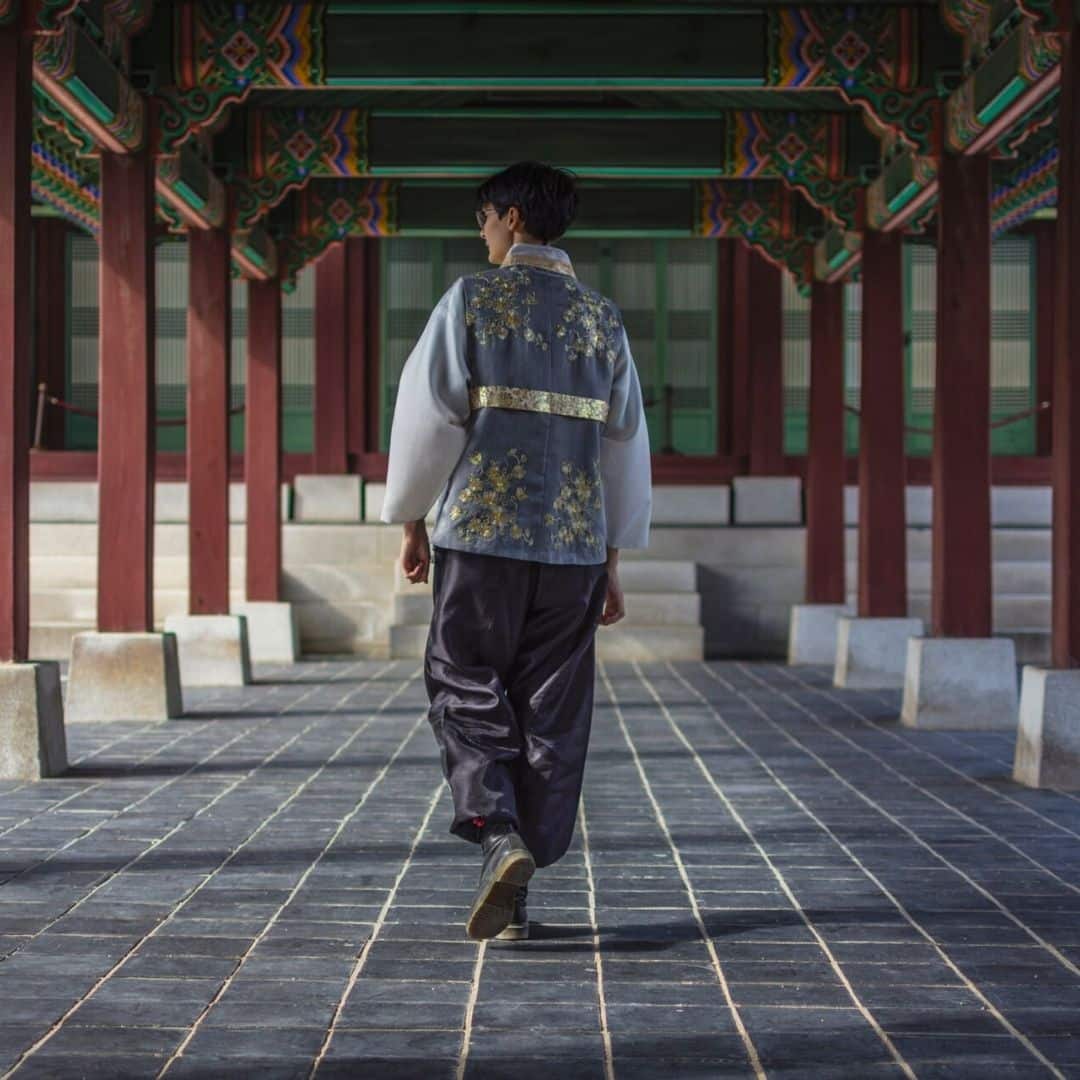
There’s so much more to South Korea than what you’ll find in the cities, however. South Korea, a country that’s 70% mountainous with coasts on three sides, offers so much to nature and adventure lovers. Hiking, South Korea’s national pastime, is a popular way to see more of the Korean countryside, looking down over rice fields, forested valleys, and pockets of urbanization. Skydiving, parasailing, scuba diving, water sports, cycling, rock climbing, white water rafting, and lots more are on offer and very reasonably priced. South Korea is a great place to enjoy the great outdoors.
The real jewel in South Korea’s natural crown, however, has to be Jeju Island – one of the New 7 Wonders of the Natural World. Explore lava caves, hike to the peak of the central dormant volcano (Hallasan Mountain), trek around the rugged coast, relax on a sandy beach in a modern cafe, and even try your hand at horse riding.
Whatever your reason to travel to South Korea, you’re sure to find more and more reasons to return again and again. Let this South Korea Travel Guide whet your appetite for your first trip, inspire you to plan a follow-up trip, and guide you to the best things to see and do in South Korea.

South Korea Travel Guide FAQs
Not sure about the South Korea travel restrictions and want to know more about visas, vaccinations, and what the rules are? This next section covers some of the most frequently asked questions about traveling to Korea now. If you have more questions that aren’t covered below, feel free to write to us on the Best of Korea Facebook page.
Do I need a visa to travel to South Korea?
US citizens and tourists from 111 other countries, including Canada and Mexico, don’t need a visa to travel to South Korea. The US government and South Korea have a visa-free travel arrangement and tourists can stay for up to 90 days.
What happens when I arrive in South Korea?
From September 2022 onwards it is no longer necessary to provide any vaccination status or take any PCR or RAT tests. A mandatory health check will be required, but this is only a simple form you can fill in on arrival.
What happens if I get a positive PCR result?
If you test positive for COVID-19 while in Korea, you will need to quarantine for 7 days at government facilities. Travelers who break the quarantine rules are subject to deportation or fines.
Can I travel to Korea if I'm unvaccinated?
Yes, you can still travel to South Korea if you’re unvaccinated. South Korea no longer restricts travel based on vaccination status (as of October 2022).
However, if a traveler (vaccinated or unvaccinated) tests positive for COVID-19 in Korea, they will have to self-quarantine until negative.
South Korea is a dynamic and culturally rich country that deserves a place on everyone’s travel bucket list. Known for its stunning blend of tradition and modernity, Korea features futuristic technology, bustling markets, and a thriving pop culture scene. Perhaps most importantly, visitors can expect a high level of safety and cleanliness while exploring the country and savoring its delicious cuisine.
This South Korea Travel Guide shows you where to go, what to see, and when to travel. Start your journey with itinerary ideas and pre-travel tips, the best day trips, and lots more essential Korean travel advice. Let’s go!
LATEST KOREA TRAVEL UPDATES
How to travel to korea, best destinations in korea, where to stay in seoul, korean travel tips, things to see & do, travel itineraries for korea, korean season guide, cost to travel to korea, further costs to korea, why travel to korea now, south korea travel faqs.
6/1/23 From June 1st, 2023, there is no longer any mandatory quarantine for COVID-infected people in Korea – both locals and travellers. The Korean government now recommends that infected people showing symptoms should self-isolate (voluntarily) for 5 days.
4/1/23 From April 1st, 2023, travelers from the USA and 21 other countries no longer need to apply for the K-ETA to travel to Korea. This will run until 31st December, 2024 and is designed to make it easier to travel to Korea.
3/20/23 From March 20th, 2023, the indoor mask mandate has been removed for public transport, including buses, trains, subway, taxis, and flights. The only remaining mask mandate is for medical facilities, including hospitals, care homes, and pharmacies.
How To Travel To Korea
Current Travel Restrictions For South Korea 2023
If you’re suspected of infection when you arrive (high temperature, feverish signs), you may be asked to take a PCR test. PCR tests are now free for travelers suspected of being COVID-19 positive within the first 3 days of arrival. This South Korea Travel Guide is regularly updated with the latest Korean travel restrictions.
Requirements To Travel To Korea
Here’s a simple 2-step guide about how to travel to Korea right now. Most restrictions have been lifted so travel to Korea is easier than ever. This applies to travelers from the US, Canada, and many other countries . As mentioned, it doesn’t matter whether you’re vaccinated or not.
Check the Korean Embassy if you’re not sure in either situation.
- When you travel to Korea, you will be asked to complete a self-check health questionnaire to show you’re not sick. You can do this when you arrive or complete it before you depart on the Q-Code website .
- You don’t need to do any testing before you fly, but it is a good idea to take a self-test to make sure you’re safe. If you’re infected in Korea, it’s necessary to do 7 days self-quarantine. You don’t need to bring copies of your vaccination records but printing a copy of the K-ETA is recommended.
No, travelers from the USA don’t need a tourist visa to enter South Korea. You can visit for up to 90 days visa-free. However, you must apply for the K-ETA before traveling and upload your travel plans and hotel details.
Here are 6 of the best destinations in Korea that you absolutely must visit, as well as some of the sights you’ll want to check out while you’re there. We’ll be bringing you lots more detailed destination guides in the future, so be sure to visit again soon

This Full Day Tour of Seoul will show you some of the hottest spots in the city, while this Customized Private Tour of Seoul will allow you to choose where to go.

Korea is a unique country with a written language that looks nothing like English, interesting Korean Cultural And Etiquette Rules , and an always busy lifestyle. Travelers may be lost trying to do even the simplest things.
If you’re traveling to Korea, you’re almost certainly going to want to get access to the internet to help you navigate, translate Korean, or even book tickets to attractions. Korea has one of the world’s best mobile internet and the prices are very reasonable. 5G mobile internet services are available across the country and Korea was one of the first to get the super-fast service. You won’t have problems connecting with a sim card or WiFi router when you travel
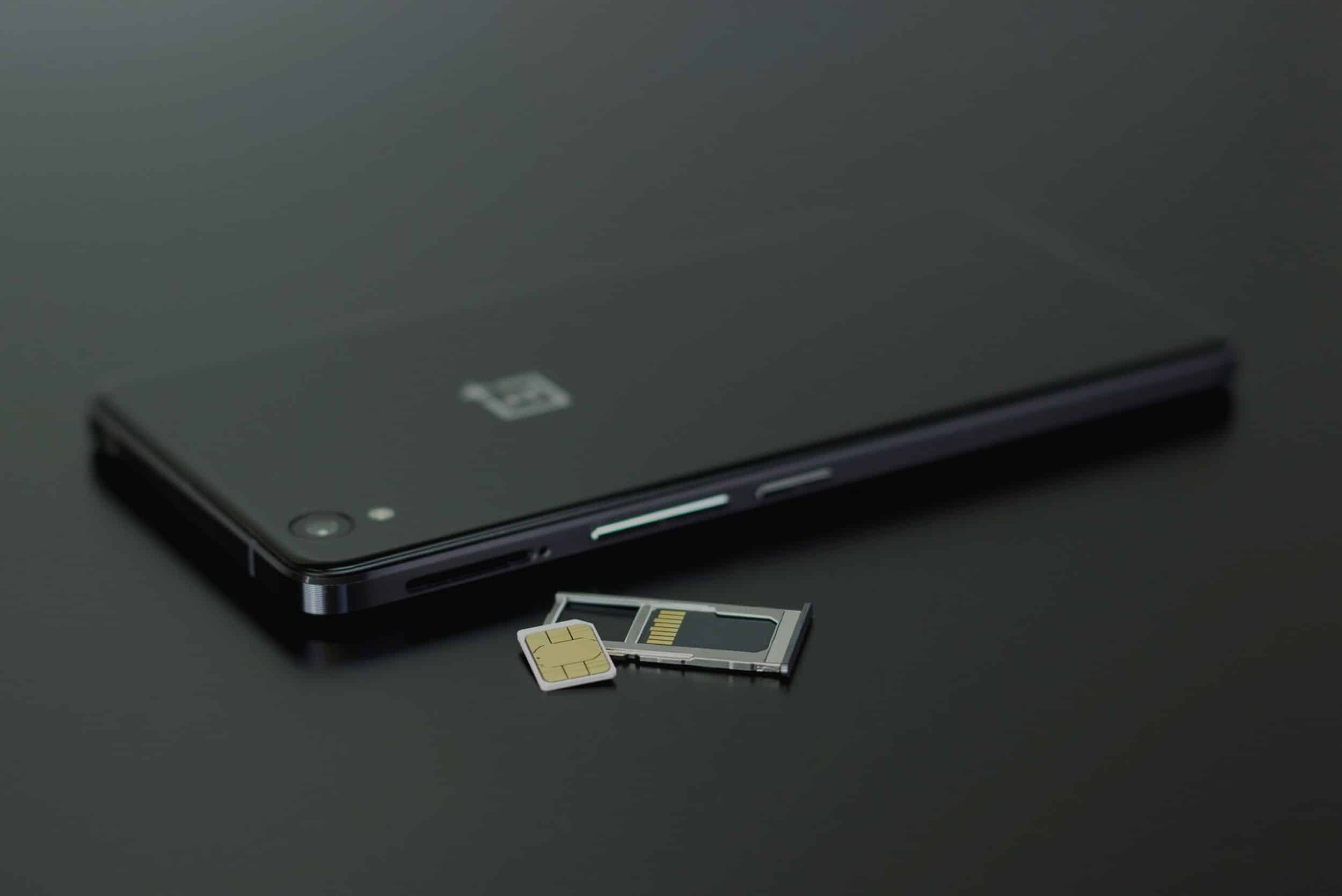
Traveling to any country involves potential scams, bad exchange rates, mistakes, and confusion when it comes to dealing with foreign currency. Fortunately, travelers to Korea have a wide range of options for travel money both before and while they travel.

South Korea is a country packed with famous landmarks and sights, unique culture – modern & historical, family-fun activities, outdoor adventures, cozy cafe districts, and natural wonders. There’s more to do in Korea than you could imagine and it’s impossible to explore it all in one trip. Try to plan your itinerary by cities and locations. For example, plan your day in Seoul and stay by the district.
Here are some of the best things to see and do in South Korea, broken down into different themes so you can find things that interest you the most. The location of each of these attractions is included, too, so you can create a city-by-city itinerary, seeing the best South Korea has to offer.
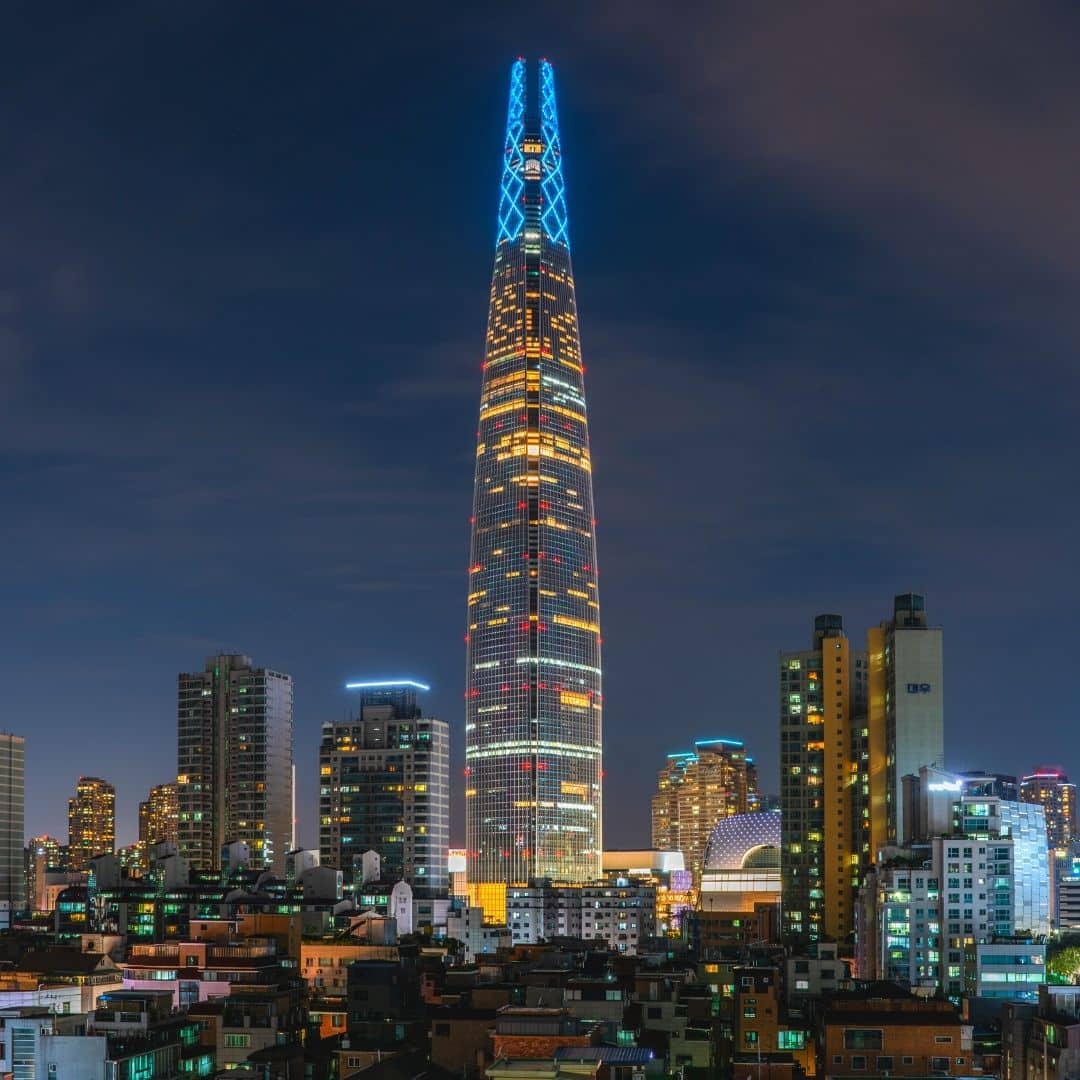
Any South Korea Travel Guide would be incomplete without thee top landmarks & famous areas in Korea. These unmissable Korean attractions offer some of the best sights in Korea, showing you Korean history, culture, design, and sense of humor.
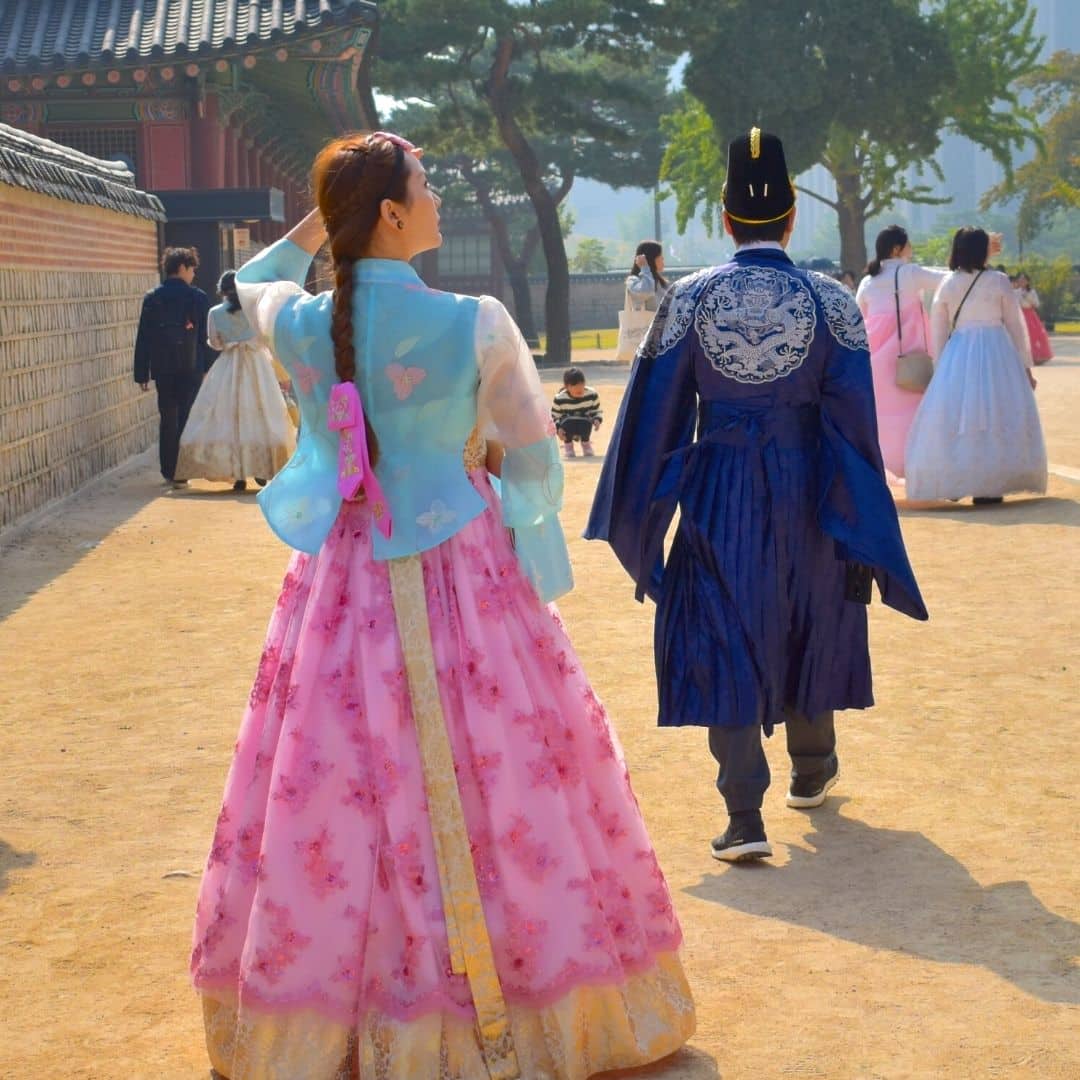
Learning about Korea’s past is not only enjoyable, it’ll also open your eyes to how modern Korean culture has evolved. Witness the majesty of grand palaces and the humble Buddhist temples and gain an insight into life in Korea with these fascination historical sights.

Are you a fan of Korean culture? Then check out these 10 modern K-Culture locations in Korea. Whether you’re ARMY or an arthouse cinema fan, you’ll love these sights. K-Drama fans, check out these K-Drama Filming Spots in Seoul .

If you’re traveling to Korea with your family, you don’t need to worry about the kids getting bored. There are plenty of family-fun attractions in Korea to keep them amused and to show them what Korea’s really like.

Culture lovers will find no shortage of places to learn about Korean, Asian, and world history & culture. Korea has a rich history and displays this through a range of museums. Learn about traditional life, Korean wars, the democracy struggles, and even kimchi .

Once a land of teahouses, Korea has now fully embraced coffee culture. Korea’s late-night culture makes cafes a great place to gather and chat. The rise of social media has also led to hundreds of insta-worthy cafes with photogenic decor, unusual coffee designs, and delicious desserts.

Many people travel to Korea just to shop, thanks to the low prices, haggling in the markets, and good quality items. From traditional markets to high-end designer goods, there’s somewhere to shop for everyone. Be sure to try authentic Korean street foods in the markets, too.

Korea is a country surrounded by sea on 3 sides and 70% mountainous, giving it a wealth of natural beauty. Besides Korean cherry blossoms , flowers, and fall foliage, there are sculpted gardens, shimmering ponds, riverside parks, and a volcano to see.

Morning : Explore Seoul’s historic royal palaces starting with Gyeongbokgung or Changdeokgung Palace in central Seoul. You get free entry if you’re wearing a Korean hanbok, so be sure to pick one up from the rental shops outside.
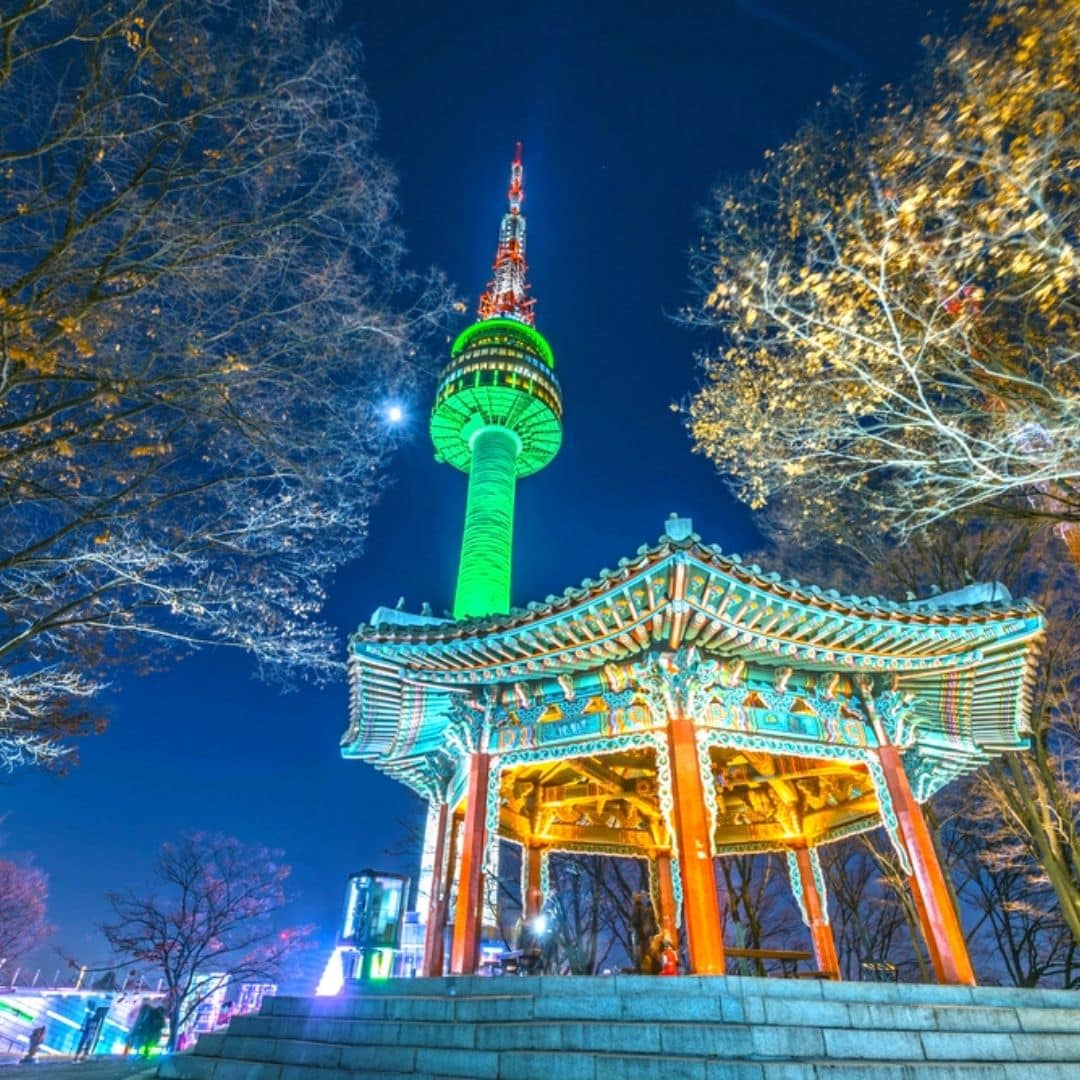
Morning : Learn about Korea’s history at the National Museum or War Memorial in Yeongsan. These fascinating museums have interactive exhibits and feature 1000’s of years of Korean history.

Morning : Take a day trip from Seoul to explore Gapyeong County. See the wonders of the Garden of Morning Calm and its idyllic nature. This is one of the most beautiful gardens in Korea.

Morning : Grab an early breakfast at Seoul Station and ride the high-speed KTX train directly to Seoul. It takes less than 4 hours and rides past rice fields, mountains, and the Korean countryside.

Morning : Take a day trip to the UNESCO World Heritage City of Gyeongju and roam the Gyeongju Historic Area. See Daereungwon Tomb Complex and Cheomseongdae Observatory.

Morning : Pack your bags and ride the KTX back to Seoul. Head to Hongdae for street food snacks or Michelin-starred delights in famous restaurants.

March to May

June To August

September to November

December to February
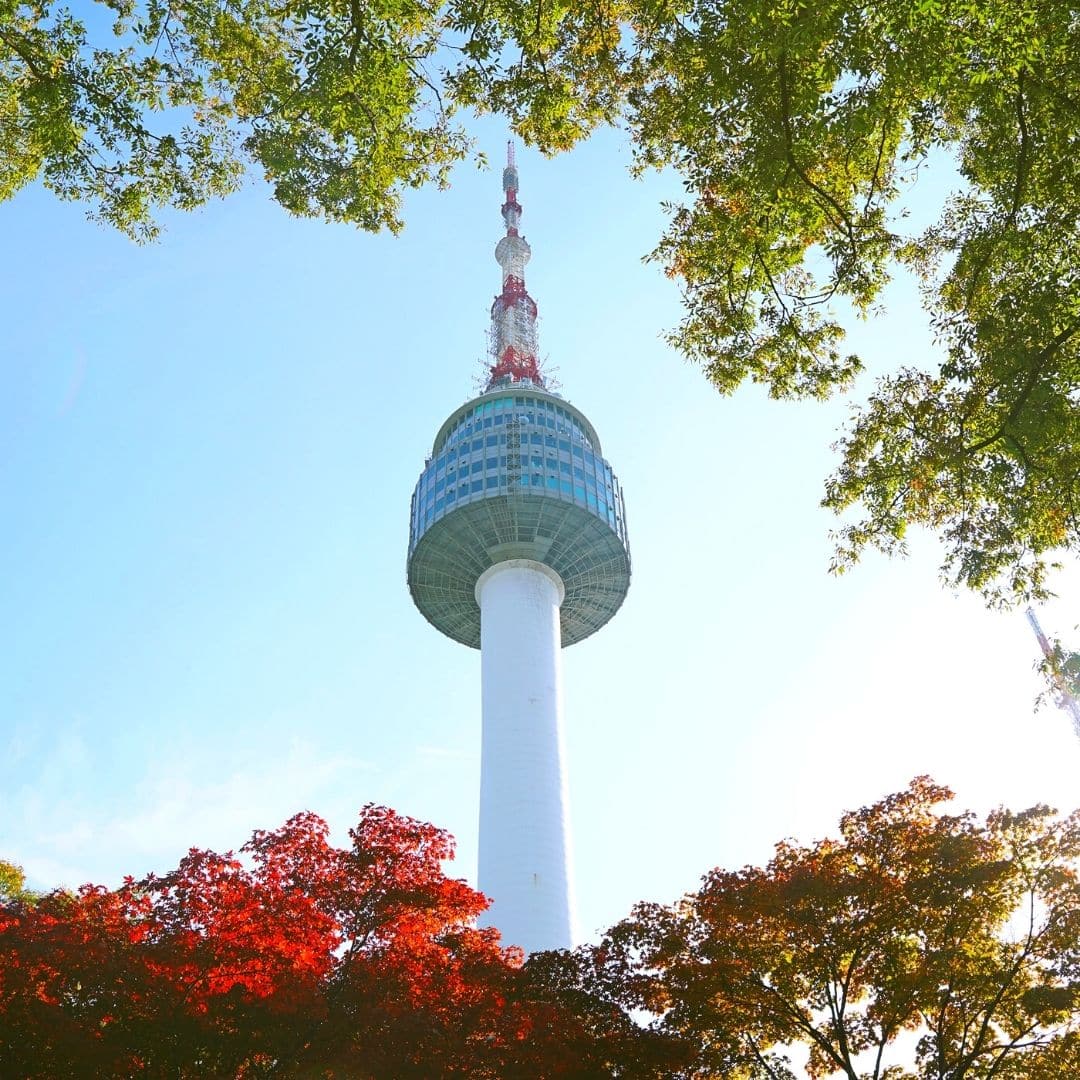
Korean Souvenir Costs
The best places to buy souvenirs in Korea are in the traditional markets and tourist areas. Insadong in Seoul has a lot of art and souvenir shops, as do the market streets around Bukchon Hanok Village. Hongdae offers lots of bargain snacks and souvenirs to take home.

Day Trip Costs From Seoul
A day trip from Seoul is a must to see a different side of Korea from what you’ll experience in the capital. Taking a day trip is a great chance to experience Korea’s countryside, nature, and hard-to-reach cultural attractions.

Korean Activity Costs
Seoul and other Korean cities have so much to offer to tourists. From historical palaces to exciting theme parks and attractions, it’s easy to have fun, explore, and discover more about Korea’s history.

Flight Costs To Korea
Flight costs depend on which airports you’re traveling from. A flight from Los Angeles to Incheon Airport (Korea’s main airport) costs around $1370 right now. Flight costs vary depending on the season and time of day.
Welcome to Best of Korea!
Please Sign Up for Updates
We hate spam. You can unsubscribe anytime.
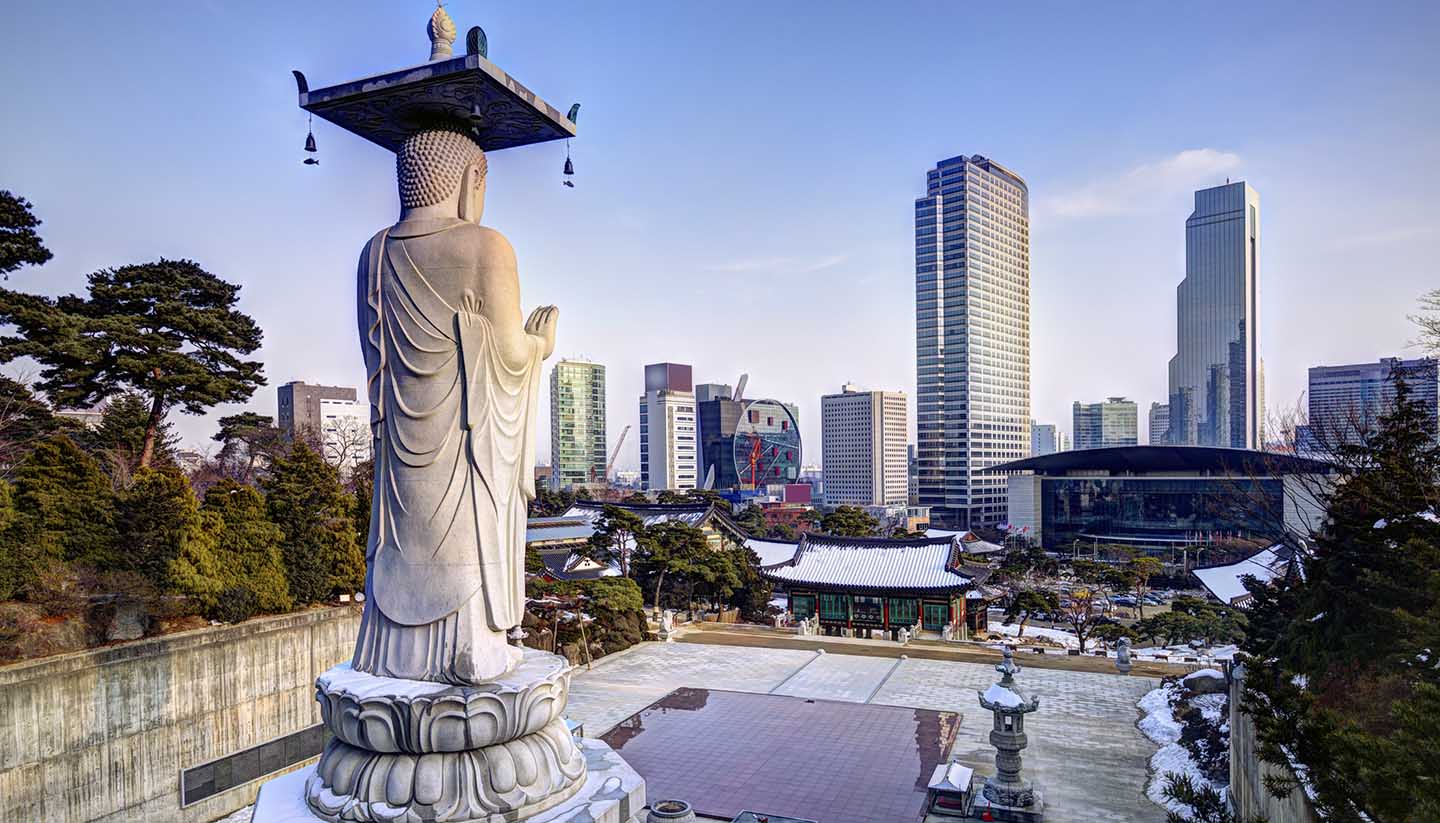
Introducing South Korea
About south korea.
- Images of South Korea
- History, language & culture
- Weather & geography
- Doing business & staying in touch
Plan your trip
- Travel to South Korea
- Where to stay
While you’re there
- Things to see & do
- Shopping & nightlife
- Food & drink
- Getting around
Before you go
- Passport & visa
- Public Holidays
- Money & duty free
Book your flights
- Busan Gimhae International Airport
- Seoul Incheon International Airport
South Korea travel guide
South Korea can come across as inscrutable at first glance. It’s a land of stark contrasts and wild contradictions; a place where tradition and technology are equally embraced; where skyscrapers loom over ancient temples; and where the frantic pace of life is offset by the serenity of nature. The country’s unique customs and etiquette can seem like a trap laid for foreigners, but arrive with a smile and a respectful attitude and you will be welcomed with open arms by some of the friendliest folk on the planet.
Koreans are fiercely proud of their country, and with good reason. The Korean peninsula has a storied history and this colourful heritage is woven into the fabric of this land. The capital, Seoul, is home to a number of historic highlights, including the spectacular Joseon-era Gyeongbokgung Palace, “the great south gate” of Namdaemun and the eerie Seodaemun Prison – all tucked away amid gleaming offices, giant shopping centres, world-class restaurants and hipster bars.
The rest of the country is also littered with fortresses, temples and palaces. Visitors will enjoy the grassy burial mounds of ancient kings in Gyeongju, the Seokbulsa Temple in Busan, which has been carved out of a rock, and the infamous demilitarised zone, a biodiverse no-man’s-land separating South and North Korea. It is a scary place, where acres of barbed wire are patrolled by heavily-armed guards on both sides, yet the tension is so trumped up it feels like you’ve stumbled onto a Hollywood film set.
But it's not all about history. When it comes to nature, South Korea is wonderfully diverse, with spectacular national parks, remote sandy beaches, hot spring islands and rugged mountain peaks. Gastronomes are well catered for, too, but you may have to open your mind before your mouth; local specialities include kimchi (pickled cabbage) and makgeolli (rice wine).
South Korea can sometimes seem like the most foreign place on Earth; an unfathomable destination of curious customs, strange food and jarring paradoxes. Ultimately, that’s what makes it so exciting.
99,720 sq km (38,502 sq miles) excluding demilitarised zone.
50,503,933 (UN estimate 2016).
492.5 per sq km.
President Yoon Suk-yeol since 2022.
Han Duck-soo since 2022.
Travel Advice
The Foreign, Commonwealth & Development Office ( FCDO ) provides advice about risks of travel to help British nationals make informed decisions. Find out more about FCDO travel advice .
Before you travel
No travel can be guaranteed safe. Read all the advice in this guide as well as support for British nationals abroad which includes:
- advice on preparing for travel abroad and reducing risks
- information for women, LGBT+ and disabled travellers
Follow and contact FCDO travel on Twitter , Facebook and Instagram . You can also sign up to get email notifications when this advice is updated.
Travel insurance
If you choose to travel, research your destinations and get appropriate travel insurance . Insurance should cover your itinerary, planned activities and expenses in an emergency.
This advice reflects the UK government’s understanding of current rules for people travelling on a full ‘British citizen’ passport from the UK, for the most common types of travel.
The authorities in South Korea set and enforce entry rules. If you’re not sure how these requirements apply to you, contact the South Korean Embassy in the UK .
COVID-19 rules
There are no COVID-19 testing or vaccination requirements for travellers entering South Korea.
Passport validity requirements
If you are visiting as a tourist for up to 90 days, your passport must have an ‘expiry date’ after the date you are leaving South Korea.
If you are entering South Korea on a long-term visa, your passport should have an ‘expiry date’ at least 6 months after the date you arrive.
Check with your travel provider that your passport and other travel documents meet requirements. Renew your passport if you need to.
You will be denied entry if you do not have a valid travel document or try to use a passport that has been reported lost or stolen.
Visa requirements
You do not need a visa to visit South Korea as a tourist for up to 90 days. You must have an onward or return ticket. It’s illegal to work on a tourist visa, whether as a teacher or in any other capacity.
If you are travelling for any purpose other than short-term business or tourism, check visa requirements with the South Korean Embassy in the UK .
For those in South Korea on a work visa, all employment changes must be authorised by Korean Immigration.
Re-entry permits for long-term visa holders
Most foreign nationals in South Korea on long-term visas are allowed to re-enter South Korea within one year of departure without the need for a re-entry permit. Check with the Korea Immigration Service .
If you are resident and intend to spend more than a year outside of South Korea, in most cases, you must apply for a multiple re-entry permit via the Hi Korea website before departure. If you require a re-entry permit, engage early with the immigration authorities and apply for a re-entry permit at least 4 working days ahead of any planned travel.
Visas for working as an English teacher
To get a visa to teach English in South Korea, you must have a 3-year university degree. A Teaching English as a Foreign Language ( TEFL ) qualification alone is not enough. If you are found to have a teaching visa by deception, you will be detained and deported.
British nationals teaching English in South Korea have sometimes found living and working conditions to be below their expectation or have had difficulties getting the correct visas and residence permits. Some also report more serious problems such as breach of contract, confiscation of passport, payment being withheld and inadequate insurance.
Check all terms and conditions of your employment carefully. If possible, speak to other teachers from the place where you plan to work before accepting any offer. If you are in South Korea and in need of assistance, you should contact British Embassy in Seoul .
Vaccination requirements
At least 8 weeks before your trip, check the vaccinations and certificates you need in TravelHealthPro’s South Korea guide .
Customs rules
There are strict rules about goods you can take into or out of South Korea . You must declare anything that may be prohibited or subject to tax or duty.
There is a high threat of terrorist attack globally affecting UK interests and British nationals, including from groups and individuals who view the UK and British nationals as targets. Stay aware of your surroundings at all times.
UK Counter Terrorism Policing has information and advice on staying safe abroad and what to do in the event of a terrorist attack. Find out how to reduce your risk from terrorism while abroad .
Terrorism in South Korea
Although there’s no recent history of terrorism in South Korea, attacks cannot be ruled out.
Political situation
The level of tension and the security situation on the Korean Peninsula can change with little notice. Tensions can rise after missile tests by North Korea and during the regular South Korean-US military exercises, which take place throughout the year. You should follow the advice of local authorities and keep up to date with developments, which will be reported on news broadcasts.
The demilitarised zone ( DMZ ) separates North Korea and South Korea. Peace has been maintained under an armistice agreement, but no formal peace treaty has ever been signed. If you’re in the area of the DMZ , you should exercise caution and follow the advice of the local authorities.
National service
If you are a British male of Korean origin whose name appears on the Korean family register, you may be liable for military service even if you are travelling on your British passport.
Demonstrations
Public demonstrations in South Korea are common. These gatherings are mostly peaceful and well-policed. Be aware that under Korean law, it is illegal for foreign nationals to take part in political activities when in the country.
Civil emergency exercises and advice
South Korean authorities sometimes hold civil emergency exercises. You’ll hear sirens to mark the start the exercise. All vehicles must stop and sometimes people will have to descend into designated metro stations or basements. You do not need to participate but do follow any instructions from officials during these exercises.
Contingency planning
The government’s Emergency Ready App, available on iOS and Android , explains the possible civil emergency alerts which would be pushed to your mobile in an emergency.
As part of your own contingency planning, make sure you have easy access to your passport and other important documents such as nationality documents and birth and marriage certificates, as well as any essential medication. Consider saving the contact details for the embassy so that you can access them quickly if needed. Make sure to share your contact details with your family and friends.
Crime against foreigners is rare but there are occasional thefts. Take extra care of passports, credit cards and money in crowded areas and in areas visited by foreigners, such as Itaewon.
While most reported crimes are thefts, there have been cases of assault, including sexual assault, particularly around bars and nightlife areas. Take care when travelling alone at night and only use legitimate taxis or public transport.
Laws and cultural differences
Personal id.
Carry some form of identification at all times and make sure you’ve written the emergency contact details in the back of your passport.
Illegal drugs and prison sentences
If you’re convicted of possession, use or trafficking of illegal drugs you can face a long jail sentence and heavy fines. This applies even to personal use of small amounts of marijuana. British nationals have been detained solely on the basis of drug tests.
Transport risks
Road travel.
If you are planning to drive in South Korea, see information on driving abroad and read the Korea Tourism Organization’s driving in Korea guidance . The guide lists driving regulations and other legal requirements you need to be aware of.
You’ll need to have both the 1949 international driving permit ( IDP ) and your UK driving licence with you in the car when you drive in South Korea. You cannot buy an IDP outside the UK, so get one before you travel.
The police take the position that car and motorbike drivers are at fault in accidents involving cyclists or pedestrians. If you injure someone in an accident, you are likely to face criminal charges and heavy penalties, even if guilt is not proved.
The legal limit for alcohol in South Korea is less than half the limit in England, and penalties for drink-driving include prison and fines.
Taxi drivers tend to speak little or no English. It is helpful to have your destination written in Korean – if possible with a map.
Extreme weather and natural disasters
If there is a natural disaster, or the threat of one, the South Korean government will publish updates in Korean and English to the Natural Disaster Safety Portal .
The government’s Emergency Ready App, available on iOS and Android , explains the possible alerts which would be pushed to your mobile.
Find out what you can do to prepare for and respond to extreme weather and natural hazards .
The typhoon season normally runs from June to November. You should monitor the progress of approaching storms with the Korea Meteorological Administration or call 131 in Korea to get an accurate weather forecast in English. Always follow any advice given by the local authorities.
Flooding and landslides
South Korea has heavy rainfall across the country during the summer rainy season, usually in June and July. Torrential rain may cause flooding near rivers and creeks, including in built-up areas. Flash floods are common in areas downstream from large reservoirs or rivers, even after relatively short periods of intense rainfall. Landslides are possible in hilly and mountainous areas.
You should monitor forecasts for heavy rainfall with the Korea Meteorological Administration and follow any advice given by the local authorities.
Earthquakes
Strong earthquakes are unusual in South Korea but do happen. Most earthquakes in South Korea are relatively weak. The Korea Meteorological Administration publishes information on earthquakes.
Read up on the any guidance from local authorities on safety procedures in an earthquake and check the safety tips from the Seoul Metropolitan Government .
Before you travel check that:
- your destination can provide the healthcare you may need
- you have appropriate travel insurance for local treatment or unexpected medical evacuation
This is particularly important if you have a health condition or are pregnant.
Emergency medical number
Call 119 and ask for an ambulance.
Contact your insurance company promptly if you’re referred to a medical facility for treatment.
Vaccinations and health risks
At least 8 weeks before your trip check:
- the latest information on vaccinations and health risks in TravelHealthPro’s South Korea guide
- where to get vaccines and whether you have to pay on the NHS travel vaccinations page
Tick bites, and tick-borne encephalitis, are a risk throughout South Korea. Read more about avoiding tick and insect bites on TravelHealthPro .
Air pollution, including yellow dust pollution, is common, especially during spring months. Follow local media reporting and check the Korean Meteorological Administration website. On days when concentrations are high, most residents will stay indoors or use face masks outside. It’s also important to drink plenty of water.
The legal status and regulation of some medicines prescribed or bought in the UK can be different in other countries.
South Korean customs authorities allow you to bring small amounts of medication for your personal use, if it is kept in carry-on baggage. Take an English language prescription from your doctor at home for both your prescription drugs and non-prescription medicines. Consult the website of the South Korean Ministry of Food and Drug Safety before you travel to South Korea.
Read best practice when travelling with medicines on TravelHealthPro .
The NHS has information on whether you can take your medicine abroad .
Healthcare facilities in South Korea
Medical and dental care in South Korea is usually of a good standard, but can be expensive. Staff may not speak English. Make sure you have adequate travel health insurance and accessible funds to cover the cost of any medical treatment abroad and repatriation.
If you need to stay in a South Korean hospital, particularly if your condition is severe, the hospital may ask you to bring a guardian or ‘bohoja’ to assist you with basic care needs such as trips to the bathroom, washing and exercise. It is possible to find agencies who will provide a caregiver or ‘ganbyungin’ for a fee, but these caregivers generally do not speak English. If you know that you may need to enter a Korean hospital, you should try to organise a guardian such as a friend or relative in advance.
FCDO has a list of English-speaking doctors in South Korea .
There is also guidance on healthcare if you’re living in South Korea .
Medical tourism
If you are travelling to South Korea for elective treatment, such as cosmetic surgery or a dental procedure, consider that no medical procedure is risk-free. Make sure that your travel health insurance covers complications that may arise and repatriation to the UK if required.
COVID-19 healthcare in South Korea
If you think you might have COVID-19 while in South Korea, contact the Korea Disease Control and Prevention Agency on 1339 (support is available in English).
You can buy antigen tests at pharmacies or get a PCR test for a fee at most hospitals .
Travel and mental health
Read FCDO guidance on travel and mental health . There is also mental health guidance on TravelHealthPro .
The Foreign, Commonwealth & Development Office ( FCDO ) cannot provide tailored advice for individual trips. Read this travel advice and carry out your own research before deciding whether to travel.
Emergency services in South Korea
Ambulance: 119
Police: 112
Contact your travel provider and insurer
Contact your travel provider and your insurer if you are involved in a serious incident or emergency abroad. They will tell you if they can help and what you need to do.
Refunds and changes to travel
For refunds or changes to travel, contact your travel provider. You may also be able to make a claim through insurance. However, insurers usually require you to talk to your travel provider first.
Find out more about changing or cancelling travel plans , including:
- where to get advice if you are in a dispute with a provider
- how to access previous versions of travel advice to support a claim
Support from FCDO
FCDO has guidance on staying safe and what to do if you need help or support abroad, including:
- finding English-speaking lawyers , funeral directors and translators and interpreters in South Korea
- dealing with a death in South Korea
- being arrested or imprisoned in South Korea
- getting help if you’re a victim of crime
- what to do if you’re in hospital
- if you’re affected by a crisis , such as a terrorist attack
Contacting FCDO
Follow and contact FCDO travel on Twitter , Facebook and Instagram . You can also sign up to get email notifications when this travel advice is updated.
Help abroad in an emergency
If you’re in South Korea and you need emergency help from the UK government, contact the British Embassy in Seoul .
You can also contact FCDO online .
FCDO in London
You can call FCDO in London if you need urgent help because something has happened to a friend or relative abroad.
Telephone: 020 7008 5000 (24 hours)
Find out about call charges
Risk information for British companies
The Overseas Business Risk service offers information and advice for British companies operating overseas on how to manage political, economic, and business security-related risks.

Book a Hotel
© Columbus Travel Media Ltd. All rights reserved 2024
In My Korea
Complete South Korea Travel Guide 2024: Korean Travel Tips
Planning a trip to Korea but not sure where to start? First-time traveller who isn’t sure if Korea is the right country for your next trip? Worried about travelling to Korea and facing problems with the Korean language, culture, money, Internet, transportation, hotels, food, or etiquette? Then this complete South Korea travel guide is packed full of tips that you’ll certainly need.
You’ll find all the best Korean travel tips and advice in this article. Whether you’re a first-time traveller to Korea, or you’ve visited before, this South Korea travel guide will show what to see, when to travel, and which places to visit, as well as help you avoid any difficult situations or surprising culture shocks.
This guide is designed to walk you through everything you need to know to prepare for your trip to Korea. You can use it to plan your itinerary, to pre-book travel essentials, to learn about what festivals and seasonal events are on, and to find more reasons to want to travel to Korea right now.
Table of Contents
Affiliate Disclaimer : This site contains affiliate links and I may earn commission for purchases made after clicking these links.
What’s In This South Korea Travel Guide
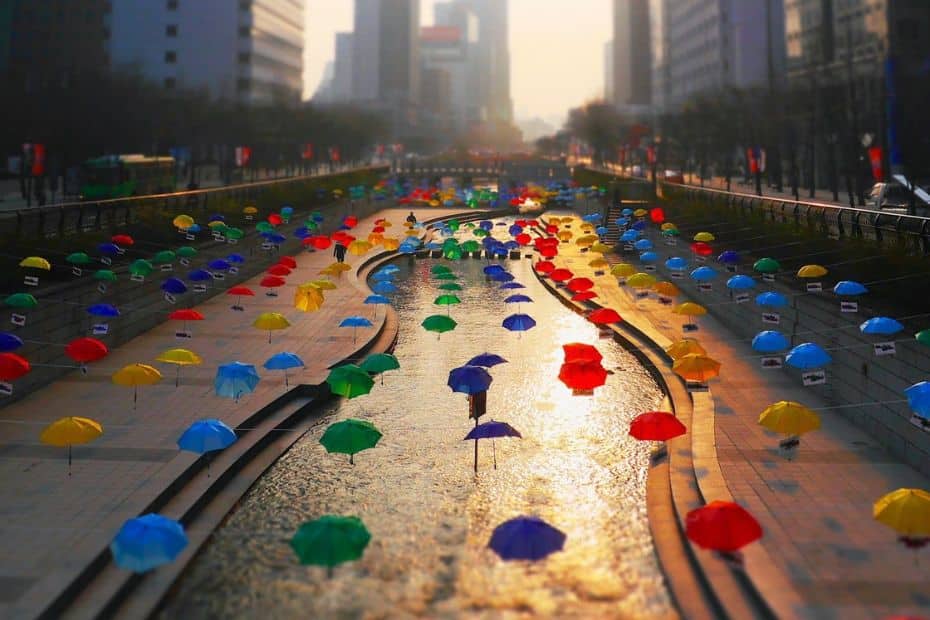
This South Korea travel guide covers all the essential information you need to plan a trip to Korea. This is useful for first-time travellers to Korea who might not be aware of uniquely Korean cultural and travel issues. Even if you’ve visited Korea before, I’m sure you can learn a lot from this travel guide.
This article contains lots of insights and knowledge about travelling to Korea and is quite long. I’ve added links in each section to articles that provide more information about each topic. Therefore, I suggest viewing this South Korea travel guide on a desktop computer as it will be easier to read.
What Are You Looking For?
To help make it easier for you to find what you’re looking for, I’ve broken this article into the following sections. Click the quick links below to jump straight there or keep reading through all parts.
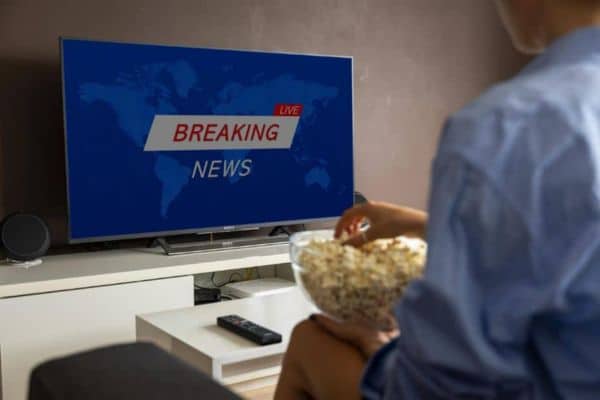
Latest Travel News
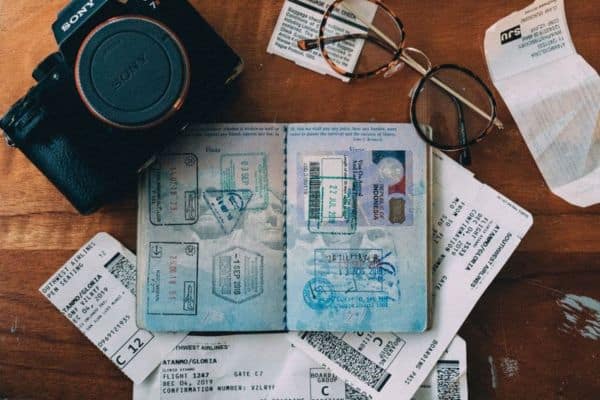
Entry Requirements
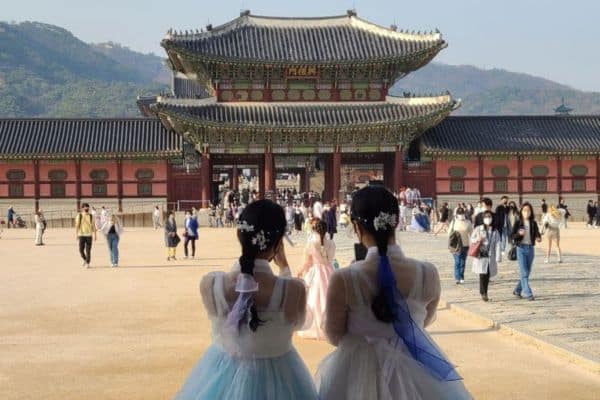
Why Visit Korea
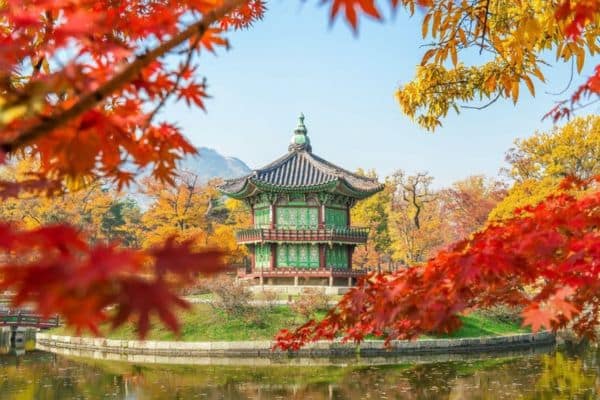
When To Visit
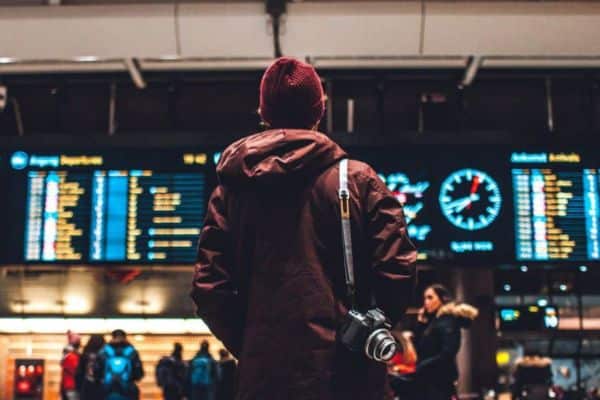
Flights To Korea
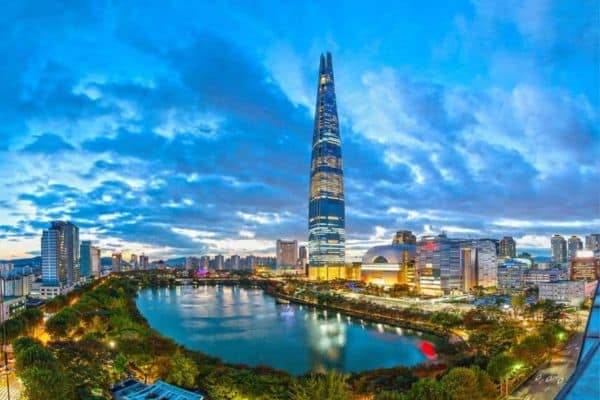
Where To Stay

Korea Travel Costs
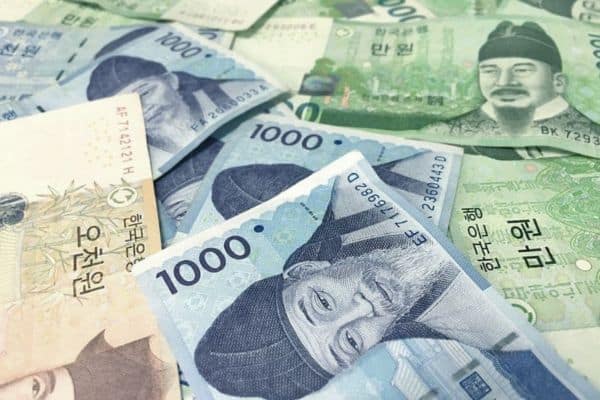
Travel Money
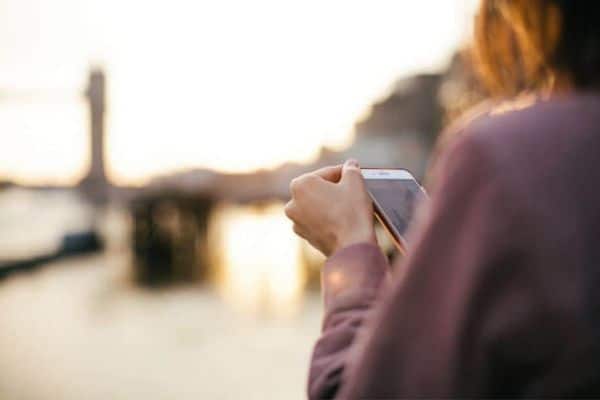
Phones & Internet
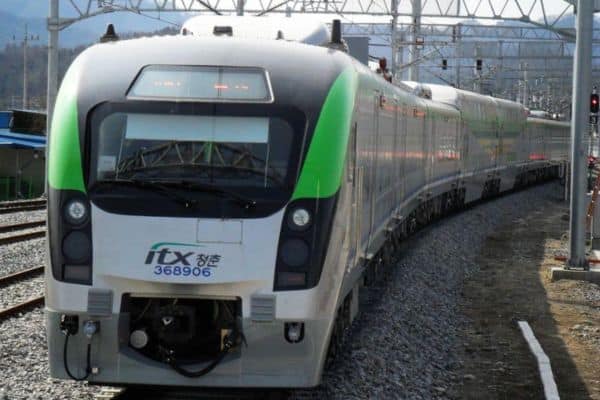
Public Transport
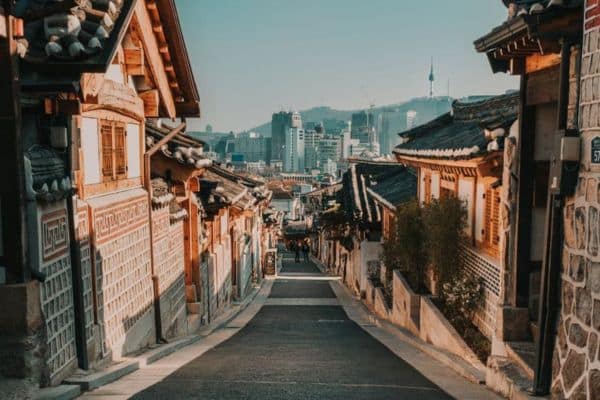
Where To Visit
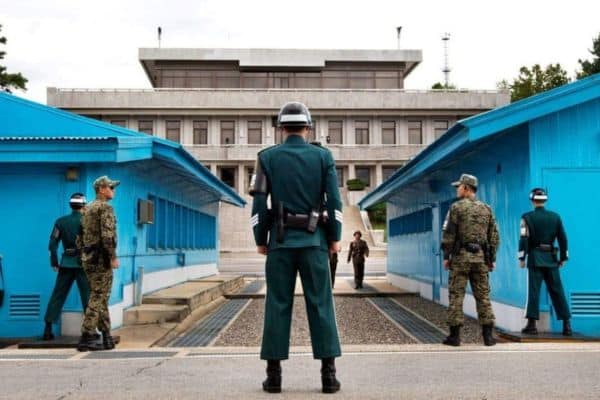
Seoul Day Tours
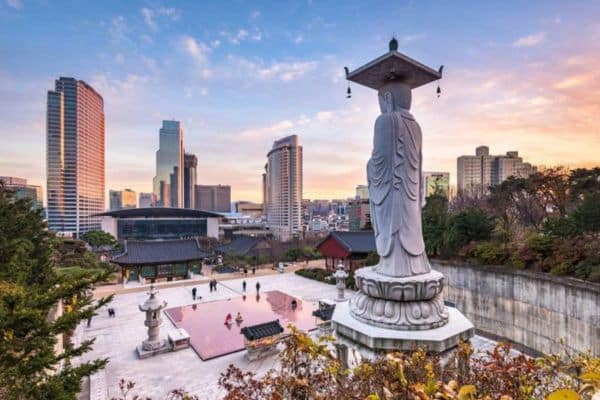
Sightseeing Spots
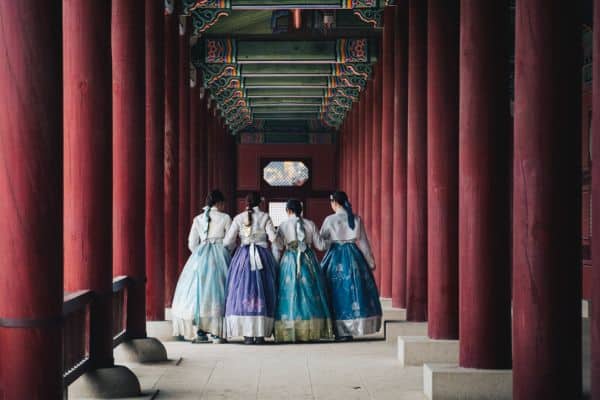
Korean Activities
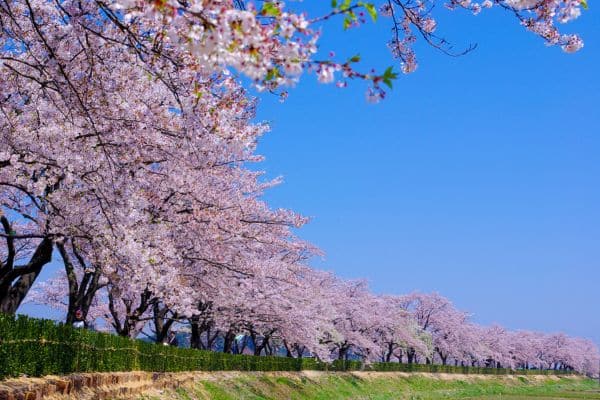
Korean Festivals
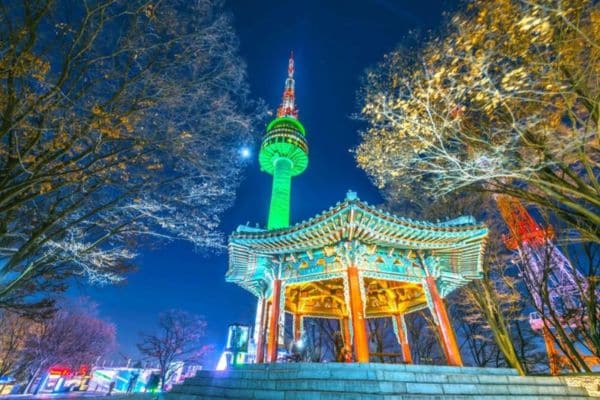
1-Week Itinerary
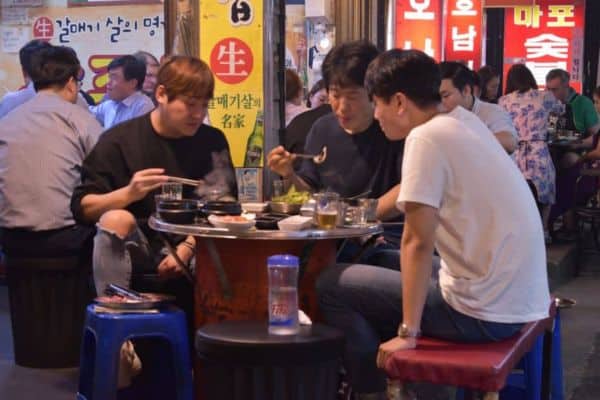
Culture Issues
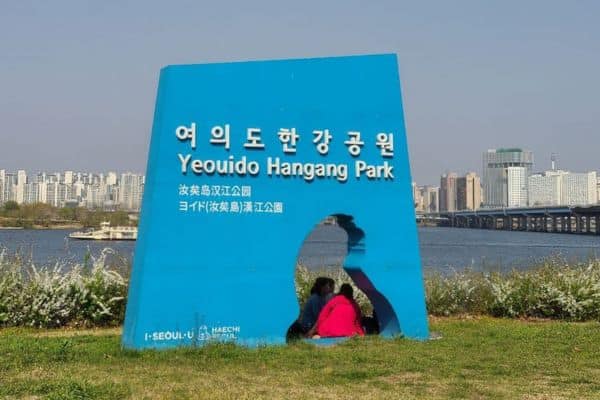
Language Issues
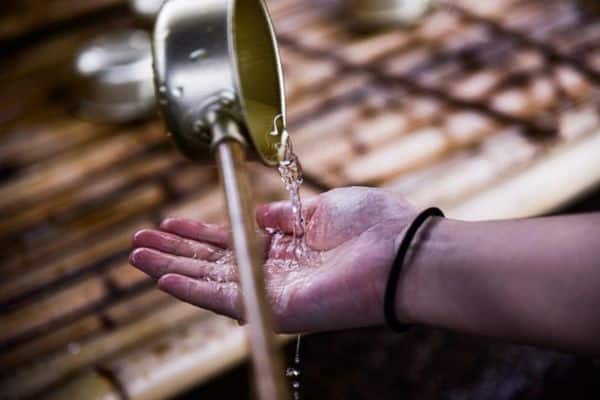
Health & Safety
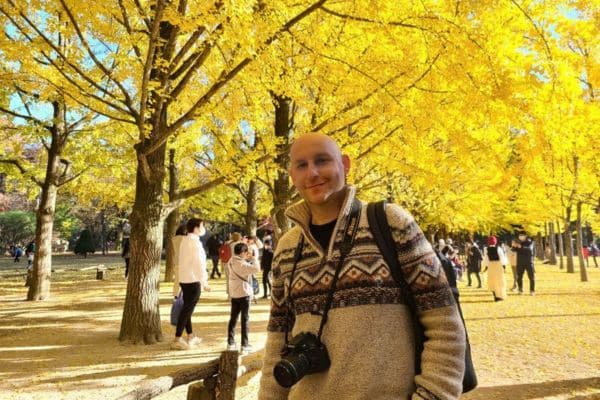
Korean Travel Tips
Korean Travel News And Travel Restrictions 2024
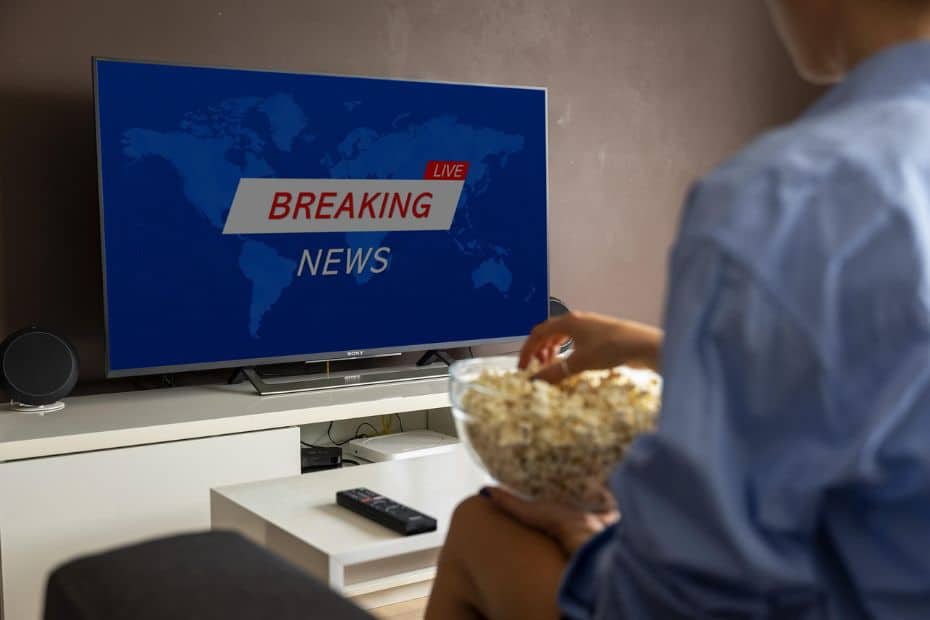
This section of the South Korea travel guide will show you the latest travel news and restriction updates, including any temporary or permanent changes to the entry process, visa changes, and other things that might affect travel to Korea. COVID-related updates will also be posted here.
Latest Korean Travel News In 2024
This section will detail any interesting or important travel news that could affect travellers to Korea, such as price increases in public transport, travel changes, new services, or closures.
The Korean government is aiming to boost tourism to Korea by doubling the amount travellers can claim back in tax when shopping in Korea. From 2024, travellers will be able to claim up to 5,000,000 KRW on eligible purchases with a limit of 1,000,000 KRW tax back per transaction. Source : Korea Herald
From August 2023, the price to travel on buses in Seoul is set to rise. Bus fares will rise to 1,500 KRW per journey. From October 7th, 2023, Seoul’s subway fares will rise to 1,400 KRW per journey. Other cities in Korea will enact similar rises throughout 2023 to cover higher costs of public transportation. Source : Korea Herald
From July 15th, 2023, the requirement to register your health condition through the Q-Code portal will be scrapped. Source : Korea Times
From July 3rd, 2023, children aged 17 years and younger, as well as adults aged 65 and older, will no longer need to apply for a K-ETA to travel to Korea. Furthermore, the validity period has been increased from 2 years to 3 years to make travelling to Korea easier. Source: K-ETA website .
From June 2023, Korea will end almost all pandemic-related restrictions for tourists and locals. Masks will no longer be necessary except in hospitals and infected people no longer face mandatory self-isolation (although the government still recommends 5 days self-isolation). Q-Code requirements haven’t been mentioned, however. Source : Korea Herald .
From April 2023 until December 2024, travellers from 22 countries won’t have to complete a K-ETA when visiting Korea, saving time and money for citizens of those countries. People from other countries still need a K-ETA. Source : K-ETA
The 22 countries temporarily excluded from the K-ETA requirement are Australia, Austria, Belgium, Canada, Denmark, Finland, France, Germany, Hong Kong, Italy, Japan, Macao, Netherlands, New Zealand, Norway, Poland, Singapore, Spain, Sweden, Taiwan, UK, US (including Guam).
From April 2023, all foreigners under 19 years old (18 and under) can now enter major royal palaces and tombs, including Seoul’s Gyeongbokgung Palace, for free. Previously, all foreigners were made to pay a fee to enter. Source : Korea Herald
From March 2023, a quarter of all buses in Seoul will refuse cash payments and allow only card payments using transportation cards, such as the T-Money card. Seoul’s night buses won’t be included for now, and 262 of Seoul’s 370 bus routes will still accept cash. Expect further increases in cash-free buses in the future. Source : Korea Herald
From February 2023, the base fare for a taxi journey in Korea has increased by 1,000 won to a minimum of 4,800 won. The distance that the base fare applies has also been shortened from 2km to 1.6km, which will make fares more expensive. Source : Korea Times
What Are the Current COVID Restrictions In Korea In 2024?
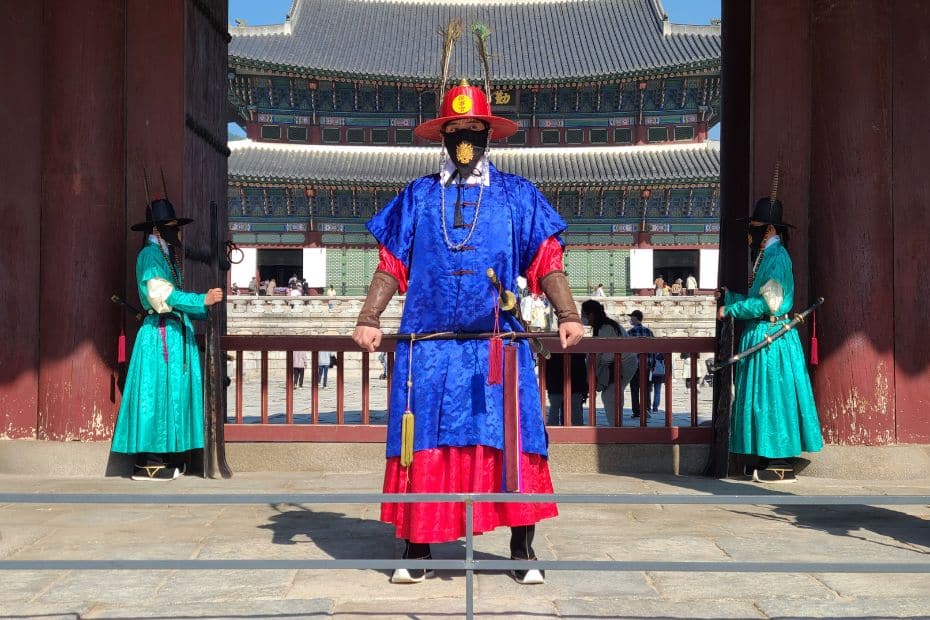
Korea has been removing COVID-related restrictions in the country throughout 2022 and 2023. It is no longer necessary to show a QR code to enter a building and restrictions involving masks and health checks have mostly gone. The latest COVID-related rules for Korea are as follows .
Masks : From Monday, March 20th, Korea has removed the mandatory mask rule for public transport, one of the final places that masks were required for the general public. The only places that require a face mask (from June 1st) are in medical facilities (hospitals). Masks are not mandatory elsewhere, including in schools, shops, restaurants or anywhere outside. Source : Korea Herald
Self-Quarantine : From June 1st, Korea will no longer impose a mandatory self-isolation period on infected people. The government instead ‘recommends’ a period of self-isolation for 5 days to reduce the chance of transmission to other people. Source : Korea Herald
For further details about the latest COVID requirements for entering or travelling in Korea, check out the second section of this South Korea travel guide, which has a list of all the updated entry requirements, including visas, tests, and other considerations.
Planning to visit Korea? These travel essentials will help you plan your trip, get the best deals, and save you time and money before and during your Korean adventure.
Visas & K-ETA: Some travellers to Korea need a Tourist Visa , but most can travel with a Korean Electronic Travel Authorisation (K-ETA). Currently 22 Countries don’t need either one.
How To Stay Connected : Pre-order a Korean Sim Card or a WiFi Router to collect on-arrival at Incheon Airport (desks open 24-hours). Alternatively, download a Korean eSIM for you travels.
Where To Stay : For Seoul, I recommend Myeongdong (convenient), Hongdae (cool culture) or Gangnam (shopping). For Busan, Haeundae (Beach) or Seomyeon (Downtown).
Incheon Airport To Seoul : Take the Airport Express (AREX) to Seoul Station or a Limo Bus across Seoul. Book an Incheon Airport Private Transfer and relax to or from the airport.
Korean Tour Operators : Tour companies that have a big presence in Korea include Klook , Trazy , Viator , and Get Your Guide . These sites offer discounted entry tickets for top attractions
Seoul City Passes : Visit Seoul’s top attractions for free with a Discover Seoul Pass or Go City Seoul Pass . These passes are great for families and couples visiting Seoul – you can save lots.
How To Get Around : For public transport, grab a T-Money Card . Save money on Korea’s high speed trains with a Korea Rail Pass . To see more of Korea, there are many Rental Car Options .
Travel Money : Use money exchanges near Myeongdong and Hongdae subway stations for the best exchange rates. Order a Wise Card or WOWPASS to pay by card across Korea.
Flights To Korea : I use flight comparison sites such as Expedia and Skyscanner to find the best flights to Korea from any country. Air Asia is a good option for budget flights from Asia.
How To Learn Korean : The language course from 90 Day Korean or Korean Class 101 both have well-structured lessons and lots of useful resources to help you learn Korean.
Current Requirements To Travel To Korea In 2024
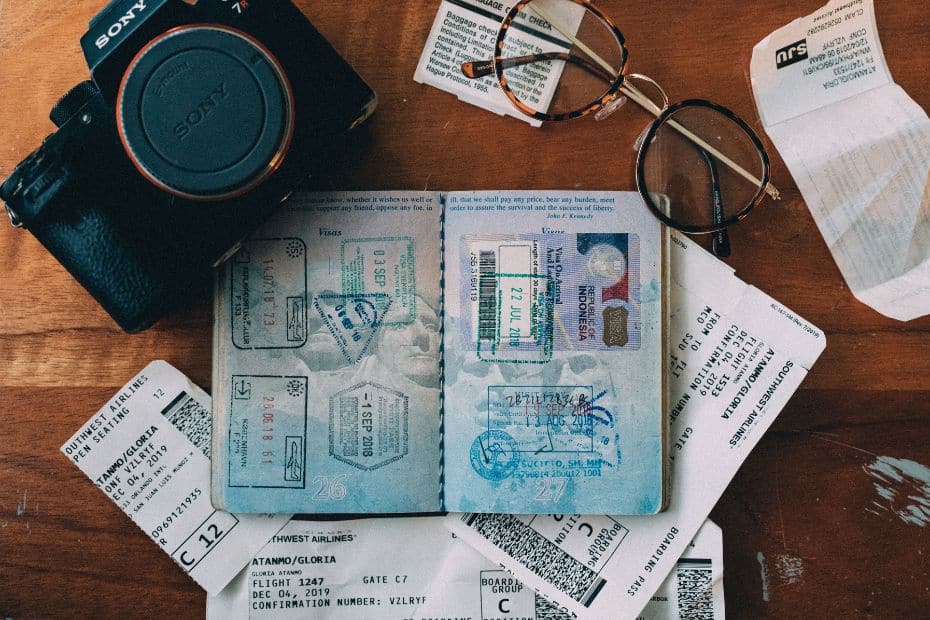
This part of the South Korea travel guide is for tourists . If you plan to travel for business, employment, or other reasons, check your nearest Korean embassy for the latest travel requirements.
Most of the restrictions and requirements for travelling to Korea have now been scrapped. You can see what entry and travel rules are in place for Korea in the table below:
The following section provides more information and exceptions about these requirements:
COVID-positive travellers should avoid travelling to Korea : To avoid infecting others on the way to Korea, as well as in Korea, the Korean government recommends that you shouldn’t travel to Korea if you exhibit COVID-symptoms or have tested positive. Self-quarantine is mandatory in Korea.
There are no PCR or other testing requirements : It is not necessary to take a PCR or other test before travelling to Korea. However, you will be asked to take a test if you show symptoms of COVID or similar illnesses when travelling to or arriving in Korea.
There is no quarantine on arrival : Travellers to Korea no longer need to quarantine when entering Korea. From June 1st, there is only a ‘recommended’ 5 day self-isolation period for infected travellers, but this is not enforced.
Complete the self-health check before or on arrival : From July 15th, 2023, travellers to Korea no longer need to complete a Q-Code self-health check or declare their health status on arrival.
Apply for a K-ETA or tourist visa before travelling : You need to apply for either a K-ETA or tourist visa for South Korea before flying to the country. Entry will be prohibited without the correct one. From April 1st, 2023 until December 31st, 2024, 22 countries are excluded from the K-ETA.
If you’re not sure which of these you need to apply for, more information is provided in the next section of this South Korea travel guide about the K-ETA and tourist visa for Korea.
K-ETA (Korean Electronic Travel Authorisation)
The K-ETA (Korean Electronic Travel Authorisation) is an online travel authorisation that visa-free foreign visitors aged 18 to 65 must obtain before entering the Korea for tourism, visiting relatives, participating in events or meetings, and for business purposes other than profitable activities.
Tourists from 112 eligible countries need to apply for a K-ETA before travelling to Korea and won’t be allowed to board a flight to Korea without it. The approval process isn’t difficult, but requires accommodation details, travel dates, and personal details such as passport number, etc.
From April 1st, 2023 until December 31st, 2024, the Korean government has decided to suspend the K-ETA requirement for travellers from the following 22 countries:
Australia, Austria, Belgium, Canada, Denmark, Finland, France, Germany, Hong Kong, Italy, Japan, Macao, Netherlands, New Zealand, Norway, Poland, Singapore, Spain, Sweden, Taiwan, UK, US (including Guam).
The aim is to reduce the burden of travellers coming to Korea and to encourage more people to visit Korea during the ‘Visit Korea Year’, which runs during 2023 and 2024.
Source : K-ETA website news .
From July 3rd, 2023, the Korean government will no longer ask for travellers who are 17 years and younger, or 65 years and older, to apply for a K-ETA when visiting Korea. These are ages based on the time you travel to Korea, not the age when you apply to travel.
Furthermore, the validity period of the K-ETA is now 3 years, not 2 years. The Korean government has decided to extend the validity period to make it easier for people to travel to Korea.
The K-ETA is based on your nationality , not the country you’re travelling from. That means, if you require a tourist visa from your home country (e.g. the Philippines), but are travelling from a country that requires a K-ETA (e.g. the USA), you can’t use the K-ETA to travel to Korea.
Tourists should apply as far in advance as possible at the official K-ETA website. If you would like to know more about the K-ETA, check out my article explaining what is the K-ETA . The K-ETA costs 10,000 KRW (about $9.00 USD). If you are charged more than this, you’re on the wrong site.
Official K-ETA website
Not sure if you need a K-ETA? Check out this infographic to find out.
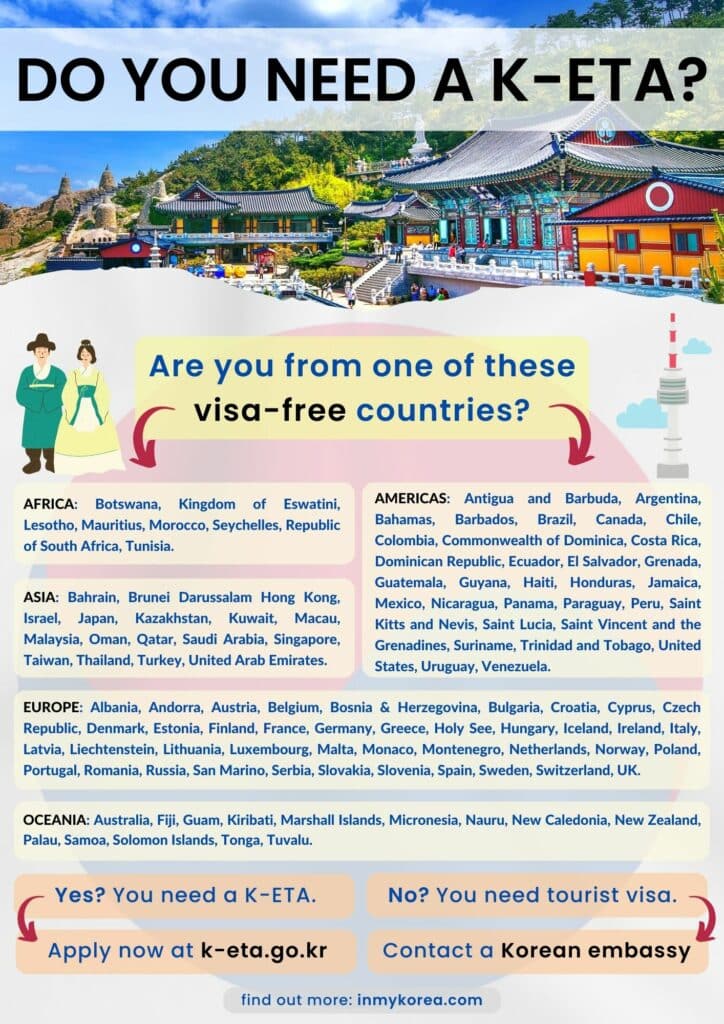
Will The K-ETA End In The Future?
The K-ETA will continue for the indefinite future. It is not a pandemic-related travel restriction but a permanent feature that just happened to start in 2021. The Korean government have stated that the K-ETA will be ongoing and other countries and areas, such as the EU, are planning similar ETAs.
Update : In July 2023, the Korean government stopped requiring children 17 years and younger and adults 65 years and older to apply for a K-ETA. The validity period was also increased to 3 years.
Update : In April 2023, the Korean government suspended the K-ETA for travellers from 22 countries (listed previously). This is in an effort to reduce the burden on travellers visiting Korea during the ‘Visit Korea Years’ of 2023 and 2024. This lasts until December 2024, but could possibly go on longer.
Tourist Visas For South Korea
Tourists that aren’t from one of the 112 countries that require a K-ETA to travel to Korea will need to apply for a tourist visa. This includes nationals from countries such India, Indonesia, Pakistan, and the Philippines. Tourist visas are based on nationality (passport), not country of residence.
The process to apply for a tourist visa differs depending on the country and may be as simple as submitting an application at the Korean embassy in the country you live in. For other countries, it may be necessary to submit extra information like bank statements and a full itinerary.
If you need a tourist visa for South Korea, contact your nearest Korean embassy as soon as you can to start the process. Tourist visas may be rejected, delayed, or take longer than expected. For some countries, such as the Philippines, it is necessary to apply through a specialist visa agency.
Transit Tour Visas For South Korea

Visa-free entry for foreign transit passengers at Incheon Airport will resume from May 2023 after being suspended for 3 years during the pandemic. There are two types of visa-free transit entry methods for travellers to Korea, they differ in length, requirements, and eligibility.
The first type of visa-free entry for transit passengers is open to all travellers to Korea and allows entry for 3 days, as long as they take a transit tour from Incheon Airport. The second type of visa-free entry for transit passengers is available for 30 days, but only from travellers from 36 select countries.
Visa-Free Entry For Transit Passengers (3 Days)
From May 15, 2023, travellers from any country can travel from Incheon Airport to the Seoul Metropolitan area for up to 3 days, as long as they book at least 1 transit tour from Incheon Airport. If Korea is not their final destination, they’re free to explore more of Seoul after the tour.
There are a wide range of transit tours available from Incheon Airport, including cultural, historic, food, shopping, and entertainment tours. See the sights of Seoul’s most popular places in a few hours, or stay for longer and see more. You can find out more about transit tours from the Visit Korea website .
Requirements : To be eligible for a transit tour visa, travellers must:
- Have an onward flight to their home country or a 3rd country after Korea.
- Participate in a transit tour program by a designated travel agency.
- Stay within the Seoul Metropolitan area only.
- Have more than 2 hours between connecting flights.
Eligible countries : Visa-free entry with a transit tour is open to passengers of all countries, as long as they meet the above requirements.
Tip : If you have a transit tour in Korea, I recommend staying in Hongdae , as there is a direct train from Incheon Airport to Hongdae called the All-Stop Airport Line. Hongdae is also a really fun place where you can see lots of culture, try Korean dishes, and pack your suitcase with Korean souvenirs.
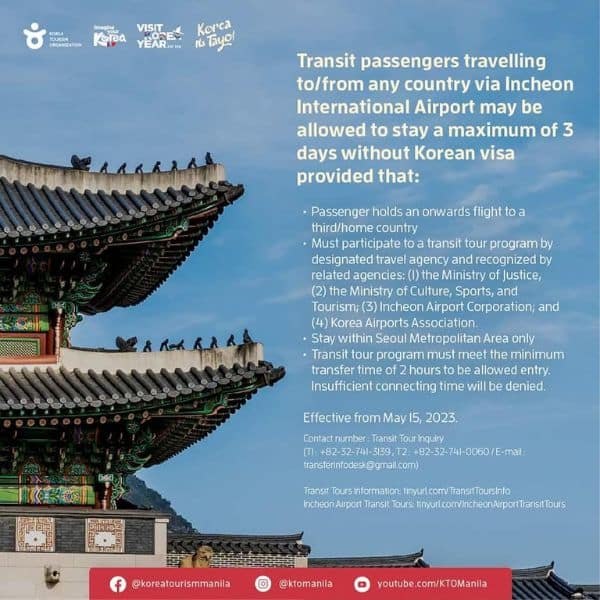
Visa-Free Entry For Transit Passengers (30 Days)
This will allow travellers from 36 countries to enter and stay in Korea for up to 30 days without a Korean visa. Travellers must be travelling to or from one of these 36 countries to be eligible to stay in Korea without a visa. This includes passengers who are not citizens of those countries.
Requirements : To be eligible for a visa-free entry as a transit passenger, travellers must:
- Hold an onward flight to any of the 36 countries mentioned below.
- Have no illegal stay records of any kind, nor have been denied entry to Korea.
- Not have exceeded a maximum of 3 days stay in any other transit airport.
Eligible countries : Travellers from the USA, Canada, Australia, New Zealand, and 32 EU countries (see picture below) can stay for up to 30 days, as long as the above-mentioned requirements are met.
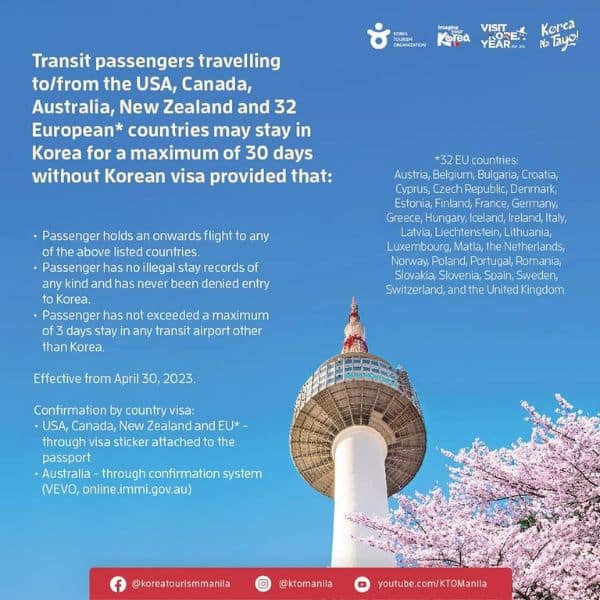
Why You Should Travel To Korea In 2024
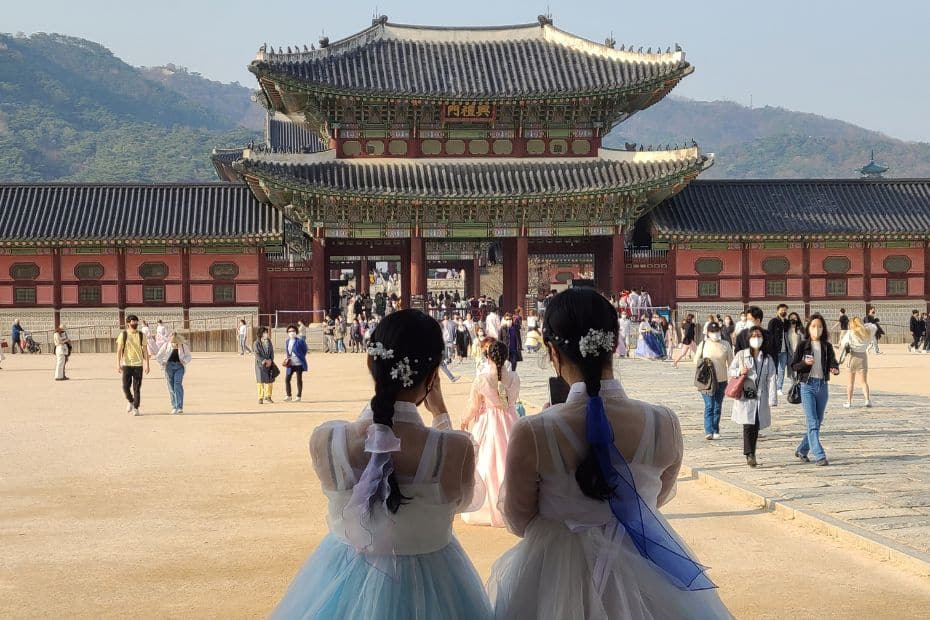
There’s not enough space in this South Korea travel guide to write down all of the reasons why you should travel to South Korea. Korea is an under-appreciated gem that has so much to discover and experience that’s completely different from what you’ll find in other countries.
Much the way that Japan has a very distinct culture and history, Korea has lots of unique, appealing places to see, people to meet, history to learn about, and natural sights to appreciate. Many people only see a small slice of Korean culture and beauty through modern media, but there’s a lot more.
Here are some of the reasons you should travel to Korea:
- Delicious foods and tasty seasonal dishes.
- Four distinct seasons that offer a variety of views.
- Fascinating history to learn about and explore.
- Stunning mountains and beaches for outdoor lovers.
- Unique and unusual festivals throughout the year.
- Friendly locals and a safe country to travel around.
- Modern, high-tech cities that are clean and efficient.
- Welcoming Buddhist temples and temple stays.
- Cheaper than most other developed countries.
- A shopper’s paradise with many markets and malls .
- Korea really wants you to come and visit.
Korea wants you to visit so much that they declared 2023-2024 the Visit Korea Year . This two-year period, confusingly referred to as a single year, is set to feature loads of events and activities to draw tourists to Korea, and includes promotions for discounted flights, accommodation, and food.
Some of the events you can expect to see during the Visit Korea Year(s) include K-Pop concerts, e-sports competitions, food festivals, and cultural celebrations. There’ll be K-Cultural stars involved, too, including your favourite K-Pop and K-Drama stars. Get ready to travel to Korea soon!
Want to know what you can do in Korea that you can’t do in other countries? Check out these amazing unique Korean experiences that should definitely be on your Korean bucket list.
The Best Time To Visit Korea
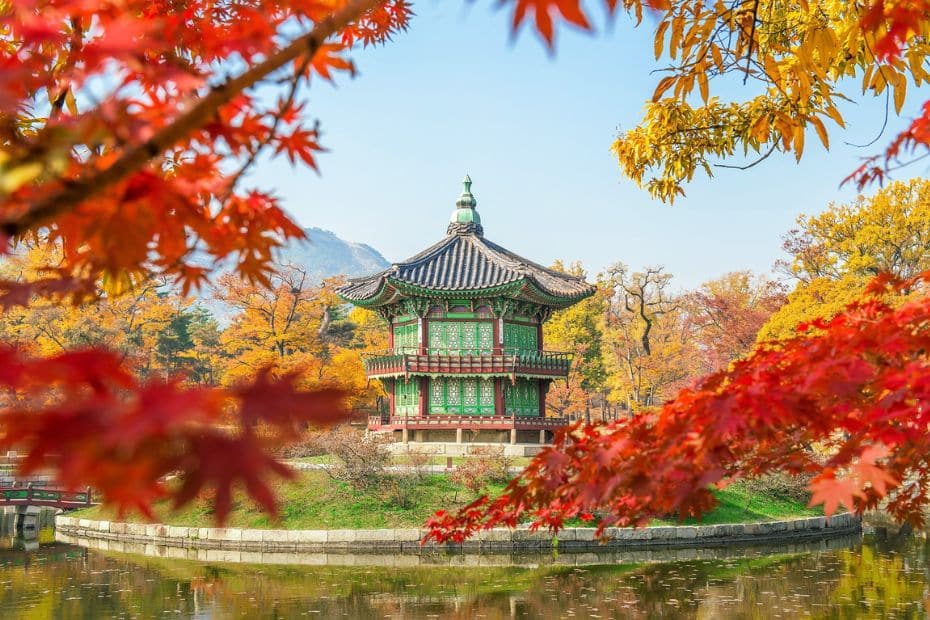
The best time to visit Korea is in spring (late-March to May) or autumn (mid-September until mid-November). These seasons have the most comfortable weather, ranging from 10 to 30 degrees Celsius, an average amount of rain, and also have the most festivals and events.
My favourite months to travel in Korea are April and October . Early-April is when cherry blossoms come out and the weather warms up enough to stop wearing a jacket. October in Korea is a beautiful month when autumn foliage sweeps across the country and the weather is warm and calm.
When you travel to Korea, the season you travel in can have a big impact on what you can see, eat, and do. This section of the South Korea travel guide is one of the most important and if you want to travel to Korea in the future, I recommend learning about Korea’s seasons before making plans.
What Can You See In Korea Each Season?
Although spring and autumn are undoubtedly the best time to visit Korea, there are plenty of reasons to visit in other seasons, too. Visitors to Korea who are restricted to travelling during certain times, such as during school or work holidays, needn’t be put off by travelling in summer or winter.
Here’s a summary of what you can see and do in each season in Korea:
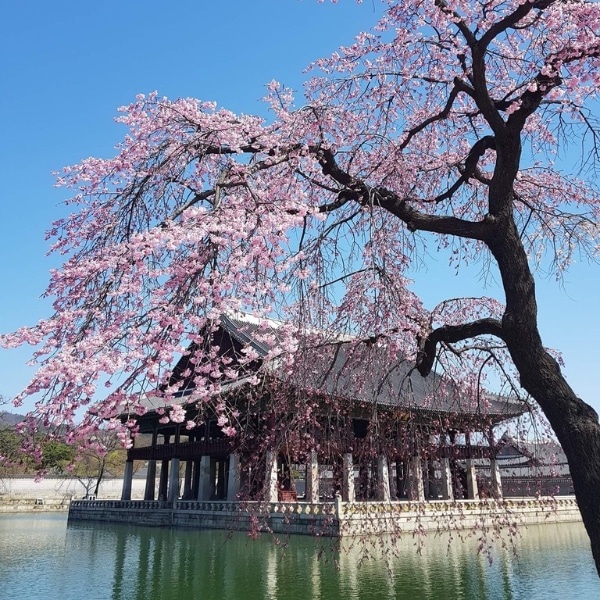
Spring: Cherry Blossoms, Blooming Nature, Culture Festivals
Spring is an amazing season to travel in Korea as you can see colourful plum blossoms (Mar), cherry blossoms (Mar-Apr), and many other bright sights. The warm weather allows people go out more to enjoy cultural activities and spring festivals , such as the Lotus Lantern Festival and Jindo Sea-Parting Festival, and also trekking, hiking, and cycling. Spring is one of the most popular times to travel in Korea for locals, so expect places to be busy, especially around cherry blossom season.
Check out my cherry blossom guide for the best places to see cherry blossoms in Korea.

Summer: Beaches, Korean Desserts, Water Sports, Camping
Summer is a difficult season for travellers due to the high humidity and heat. June and July are rainy season in Korea and it may rain for days on end, causing people to change travel plans to indoor activities. In late July and August it gets very hot, which is good for going to the beach and enjoying water sports or water parks, which Korea has many of. Evening activities like hiking, drinking in rooftop bars, and visiting night markets are great ways to get out in summer when it’s not as hot.
Check out my guide to Korean summer activities for the best places to have fun during summer and rainy day activities in Busan in case the weather isn’t so good.
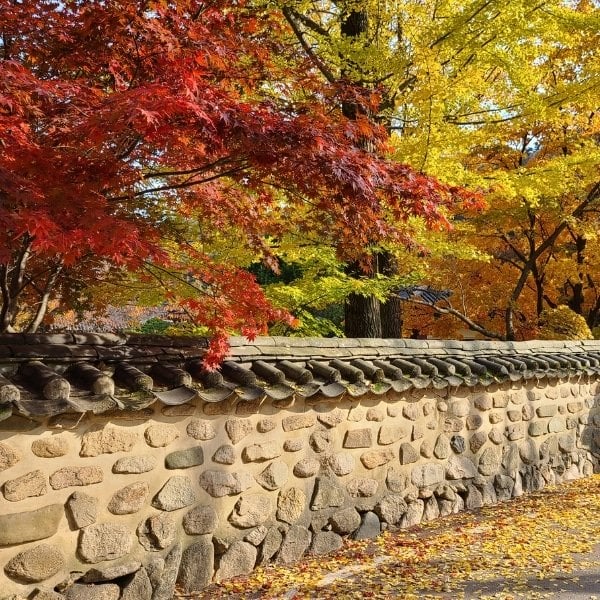
Autumn: Foliage, Festivals, Fresh Foods, Harvest Festivals
Autumn is another incredibly popular time to travel in Korea, especially in October when the autumn foliage is at its best. The foliage really brings everything to life, adding shades of colour to plain palace walls, mountains, and parks. The calm weather is warm with clear skies, making it perfect for going into nature to see the fresh fruits and other harvest goods, as well as join in harvest and cultural festivals. Enjoy local Korean dishes, fresh from the farm to your table.
Check out my guide to autumn foliage in Korea for the best places to see the leaves.
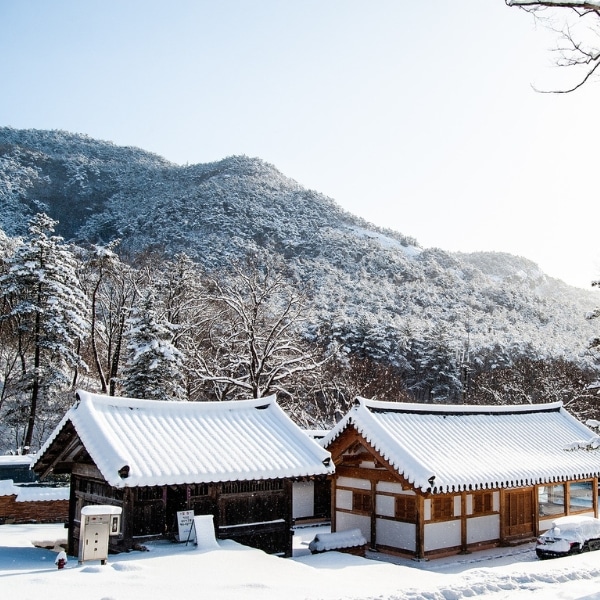
Winter: Snow, Winter Sports, Ice Fishing, Light Festivals
Winter in Korea is often neglected due to the cold weather, but is actually a very nice time to travel with delicious winter foods to try. It’s the driest time of year with blue skies making everything bright and beautiful. When it snows, sights look even more incredible. Jeju Island is a great place to visit during winter as it has fresh citrus and colourful camellia flowers to see. You can enjoy winter sports, festivals and activities, such as ice fishing, ice skating, sledding, and more.
Check out my guide to Korean winter activities for the best places to have fun during winter.
What Is The Weather Like In Korea?
The weather in Korea follows a similar pattern each year, spread over five distinct seasons. As well as spring, summer, autumn, and winter, Korea also has a rainy season, which starts around mid-June and finishes mid-July. It doesn’t constantly rain during rainy season, but may do for several days.
There’s always something to do in Korea, no matter what the season. Even rainy season in Korea is fine for travelling, as long as you plan lots of indoor activities and can be flexible with your schedule. Don’t let the weather in Korea put you off visiting, you’ll find plenty to do in each season.
Here’s a summary of the weather in Korea each season:
The graph below shows you the average temperature each month in Seoul. This is an average temperature, so some days will be much hotter and others much colder. I’ve experienced summer temperatures of over 35 degrees and winter nights of -20, so be prepared for both.
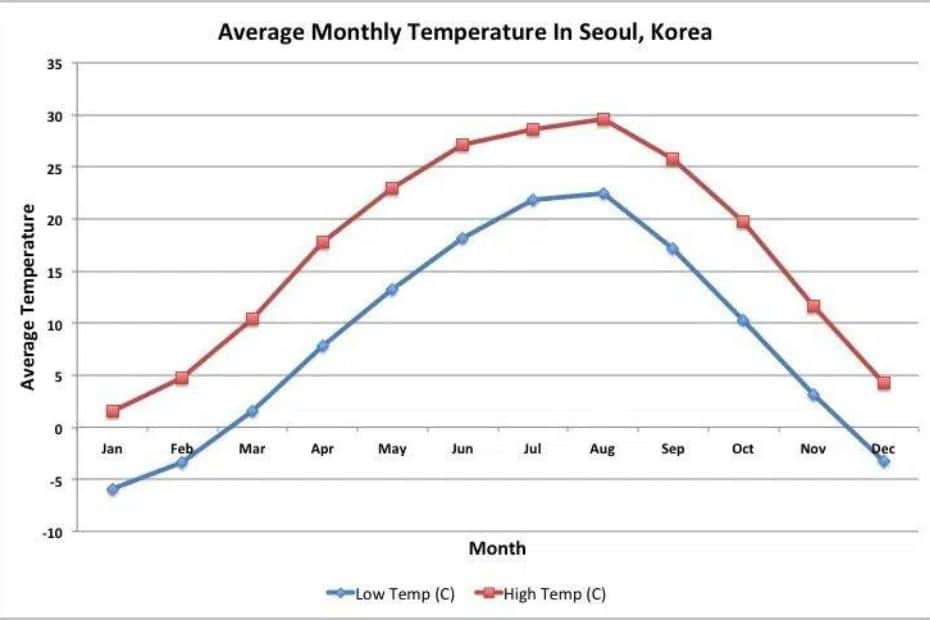
The table below shows the average rainfall for each month in Korea, based on records from climate-data.org . The summer months have the most, while winter in Korea is very dry. The rainfall in the winter months can turn to snow when it’s cold enough, too.
There will be more information about the sights, festivals, and events you can enjoy in Korea in later parts of this South Korea travel guide. Check them out for travel ideas for your trip to Korea.
How To Book Flights To Korea
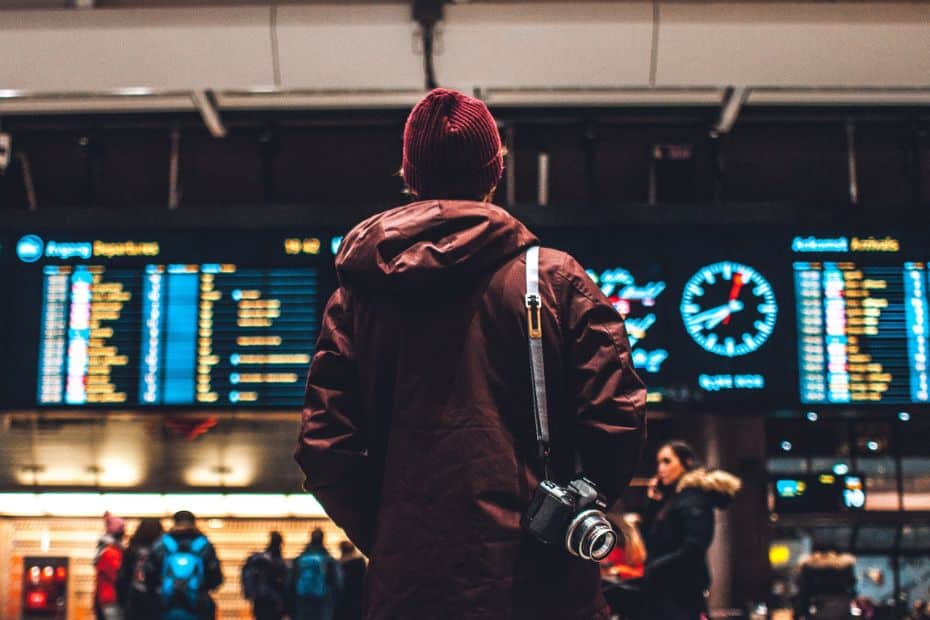
Flying to Korea in 2024 is getting easier with more airlines offering direct or connecting flights to Korea and budget airlines adding more routes to Korea from other parts of Asia and as far away as the USA. There aren’t as many routes as there were in 2019, but they are returning month by month.
Booking a flight to Korea is one of the first things most people do and finding the right flight can really affect your travels. Choosing the right flight not only affects how much money you need to spend, but also when you’ll arrive, how you’ll get to your hotel, and where you’ll arrive in Korea.
Check out my guide to booking flights to Korea to discover the best ways to book a flight to Korea, including the best time to book (21 to 127 days before travel), where to get cheap flights, the various airlines that offer flights to Korea, and lots more.
Arriving At Incheon Airport
Most flights to Korea arrive at Incheon Airport, which is near Seoul. It takes about an hour to get to the centre of Seoul from Incheon Airport and there are various transportation options including a high-speed train, subway, limo buses, taxis, and private transfers.
The best option for transferring from Incheon Airport to your hotel is usually a limo bus as these run to popular areas of Seoul, such as Myeongdong, Hongdae, Gangnam, and Insadong. There’s also a direct train to Seoul Station and a subway that goes to Seoul Station via Hongdae.
Arriving during the daytime gives you the best options for getting from Incheon Airport into Seoul, while nighttime flights will leave you fewer options. There are a few night buses that run, but late arrivals will either need to stay at the airport or book a private transfer or taxi instead. More details about taking a taxi from Incheon Airport can be found in my guide to taxis in Korea .
If you want to book a private transfer direct to your hotel from Incheon Airport, contact Jerry Heng , a freelance driver. I want to recommend Jerry as he has years of experience organising airport pick-ups and drop-offs, as well as personalised tours around Korea. He’s also a friendly guy.
Recommended Flight Comparison Sites
I suggest checking at least one flight comparison website before booking any flights. You can alter the arrival and departure times, flight duration, choose direct or indirect flights, and sort by price to find the perfect flight for you. Skyscanner is my preferred comparison site, but they’re all useful.
Take time to change the dates and flight times to find the most suitable flights for you. Cheaper flights often have inconvenient arrival times, so you should decide whether it’s worth the hassle to save a bit of money. Sometimes spending more for the right flight is worth it, especially when time is limited.
I try to go for a balance of convenience and savings and avoid flights that arrive late at night or leave too early in the morning. These flights require you to book an extra night at the airport or make you lose time when you could be travelling and doing more interesting things.
Here are 4 of the best flight comparison sites for booking flights to Korea:

Skyscanner is one of the most popular flight aggregators and offers flights, hotels, and other travel bookings for all major destinations. Skyscanner shows airline environmental ratings and which flights are practical or difficult.

Expedia is a large US travel company that offers tours, flights, hotels, and other services around the world. You can book hotel and flights together, to save you time and effort when travelling. A good place to start your flight search.
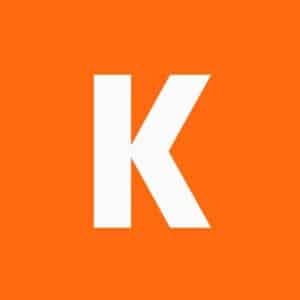
Kayak is great for people looking for cheap flights to Korea. You can see price trends for your flight to Korea to see when the best prices are available. There are also lots of budget travel options on the site that can save you more.

WayAway is a flight comparison site for the modern generation, with Instagram tips & travel advice as well as a good selection of cheap flights. You can get cashback on bookings with their premium service.
Where To Stay In Seoul
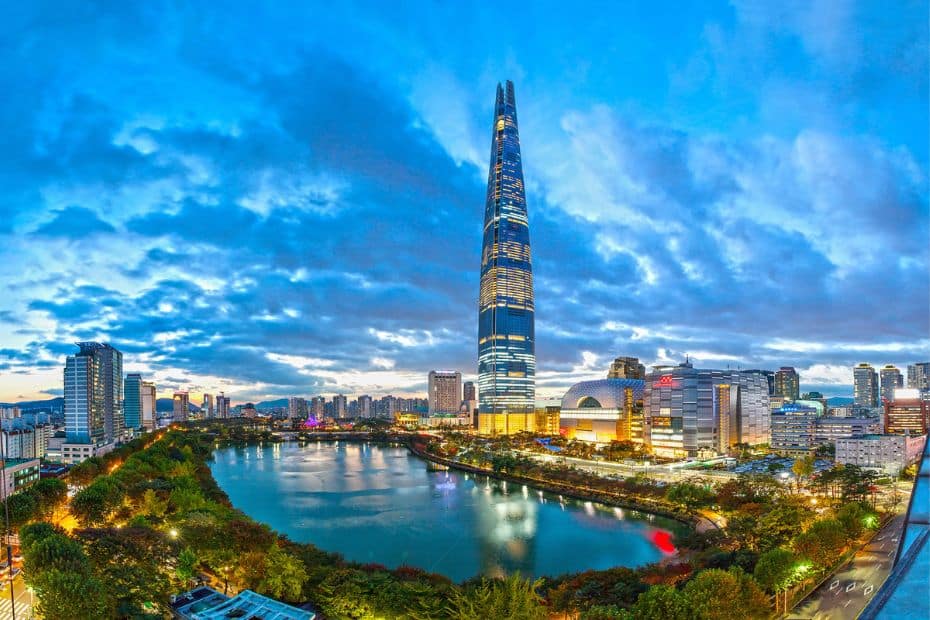
Incheon Airport is the main arrival destination for most travellers visiting Korea, with more than 71 million travellers passing through the airport in 2019, making it the world’s 14th busiest airport . It’s close to Seoul and has lots of transportation options to get into Korea’s capital.
Seoul is the first place people visit, not only because it’s close to Incheon Airport, but because it’s undeniably the heart and soul of Korea. The greater Seoul area includes about 50% of Korea’s population (25 million people) and is by far the biggest, most vibrant, and fun city in Korea.
To travel to Korea you need either a K-ETA or tourist visa . One of the requirements to apply for these is the address of the first place you’ll be staying in Korea. Therefore, you should book at least your first hotel in Korea so you can begin those applications. Seoul is an ideal first place to stay.
Best Neighbourhoods To Stay In Seoul
Deciding where to stay in Seoul can be difficult because there are so many unique neighbourhoods, each offering something interesting for travellers to experience. Knowing which has the best sights, entertainment, culture, shopping, transport, markets, restaurants, cafes, etc., is useful.
Seoul’s neighbourhoods typically contain a mixture of several of these elements and will appeal to different types of travellers. Below is a very rough guide for which neighbourhood each type of traveller might enjoy. Of course, there are plenty of other things to do in each area.
As you can see from the list above, both Hongdae and Myeongdong have a lot to offer and I would definitely recommend either of these neighbourhoods for first time travellers to Seoul. Even people who have travelled to Korea before will find lots of reasons to stay there. They’re where I usually stay.
I have detailed guides to hotels in the two best districts for staying in Seoul – Hongdae and Myeongdong. My guide to hotels in Hongdae includes a range of hotels for all types of travellers, while my guide to hotels in Myeongdong highlights Myeongdong’s best budget to mid-range hotels.
Each neighbourhood feels unique and offers something to discover, from traditional markets and eateries, modern Insta-worthy cafe districts, peaceful parks and lakes, world-class skyscrapers, and many fun activities. Wherever you choose to stay, you’re sure to find something you enjoy.
I’ve included the 8 best neighbourhoods in Seoul in this South Korea travel guide, along with a small summary about what you can expect in each area. These are the most popular areas for tourists to stay in, but certainly not the only places to stay. There are also links to hotels in these areas.
Here are the 8 best neighbourhoods in Seoul:
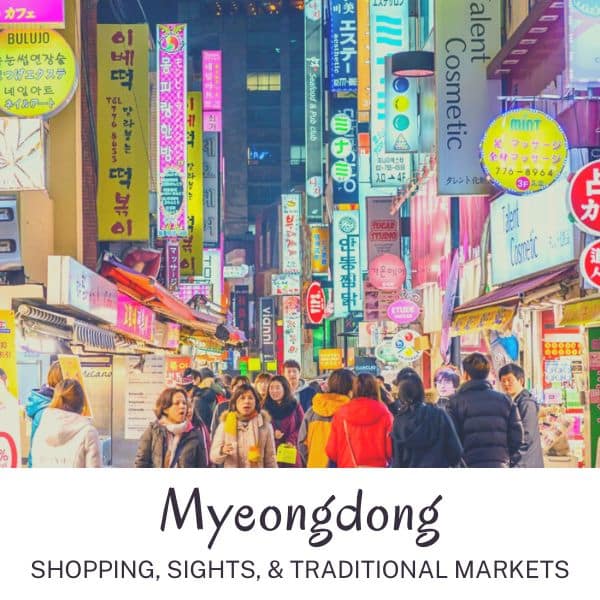
Myeongdong is arguably one of the best places to stay in Seoul for any traveller. It has the best range of budget and mid-range hotels in Seoul and is conveniently located for sights, activities, and public transport. It’s close to popular tourist sites, such as the N Seoul Tower and royal palaces. There are traditional markets and Myeongdong’s famous street food alley to check out. As Myeongdong is popular with tourists, you’ll find more people that can speak English and places to exchange money.
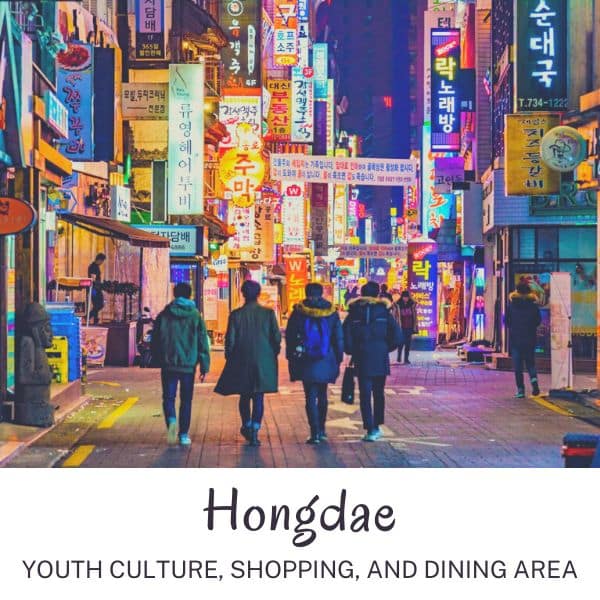
Hongdae is one of the coolest neighbourhoods in Seoul and a must-see for any traveller to the city. This area has emerged as a creative hotbed for the latest Korean fashion, art, food, and culture, thanks to innovations from students of nearby universities. Youth culture is on display in Hongdae’s main and side streets, with boutique shops, trendy bars and cafes, inventive restaurants, street art, and live performances. If you want to see a vibrant, colourful side of Seoul, then Hongdae is the place for you.
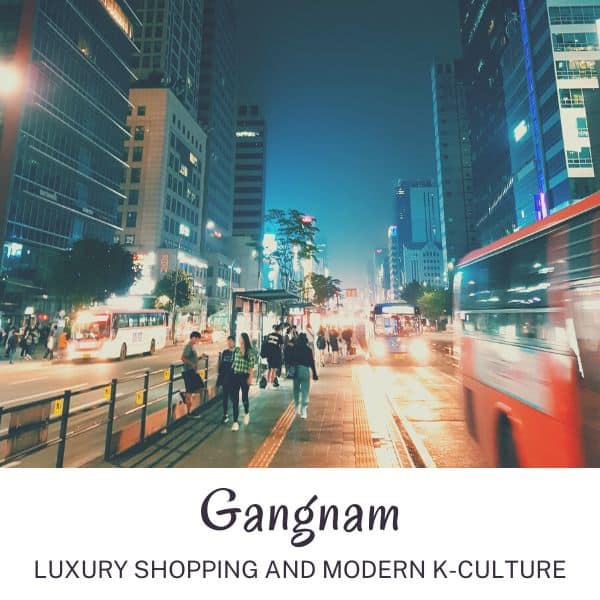
Gangnam is an upscale area of Seoul that’s home to some of Korea’s biggest stars. This area was where K-Pop was invented, as can be seen by the golden Gangnam Style statue outside COEX Mall. Gangnam is a lot more than that, and is a powerful business area with Seoul’s best shopping and dining experiences, as well as some of the city’s finest cafes and bars. Gangnam has a host of upmarket hotels that provide outstanding luxury, but also has a selection of budget and mid-range hotels making it accessible for all travellers.
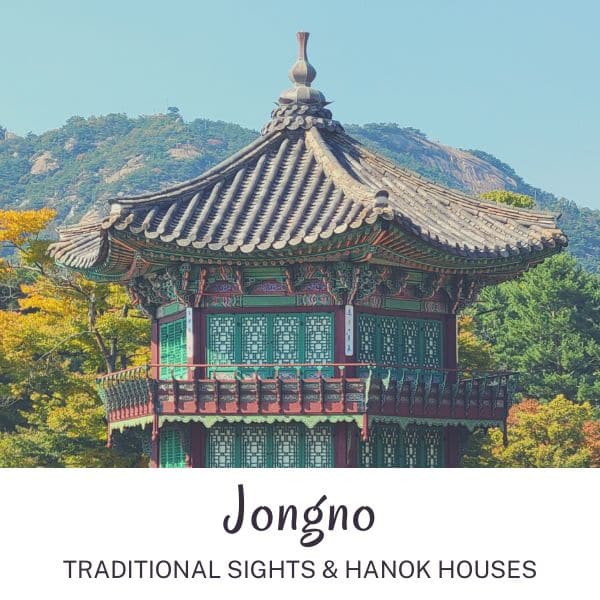
Jongno is the area north of Myeongdong that includes Insadong, Bukchon Hanok Village, Ikseongdong Hanok Village, Jogyesa Temple, 4 of Seoul’s royal palaces, the presidential Blue House, and lots more. This area is packed full of interesting sights and traditional restaurants and tea houses to explore. You can find a good range of hotels in Insadong, Seoul’s artistic area that is home to artists and tourist-friendly attractions. There are also guesthouses and apartments to rent in the residential areas of Jongno that offer a more homely stay.
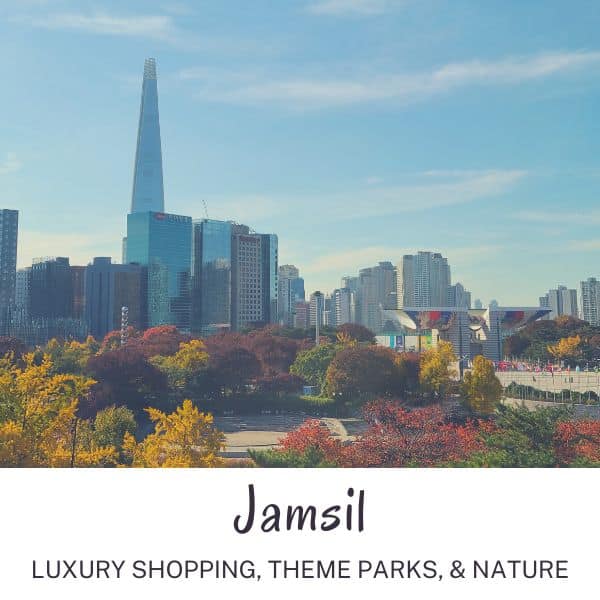
Jamsil is an upmarket residential neigbourhood close to Gangnam that’s home to one of Korea’s largest companies, Lotte. You’ll find the Lotte World Tower, Lotte World Theme Park, and Lotte Aquarium in this area, as well as the beautiful Seokchon Lake and leafy Olympic Park. Jamsil is a great base for people visiting for cherry blossoms in spring as the Seokchon Lake Cherry Blossom Festival is one of Seoul’s best. There are lots of trendy cafes and bars near the lake and it’s a relaxed part of the city to stay in.
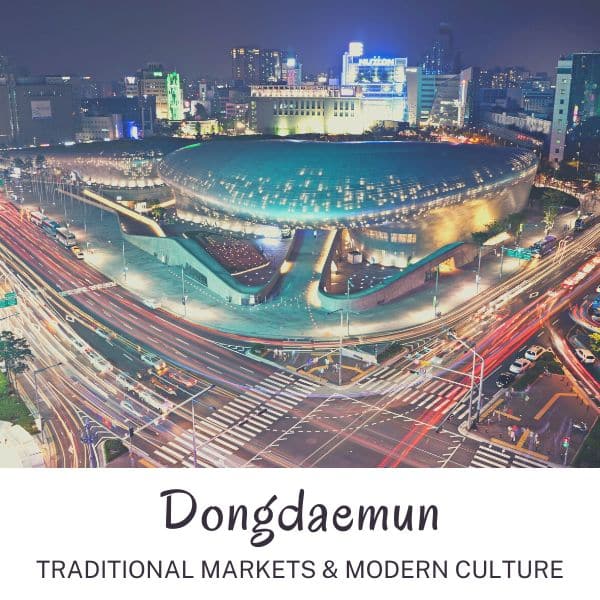
Dongdaemun is known for both its traditional markets, where you can buy a range of goods, as well as the futuristic Dongdaemun Design Plaza (DDP). The area is an unusual mix of traditional Seoul, with Gwangjang Market offering some of Seoul’s best Korean street food, and modern culture, displayed by the night markets and art installations at the DDP. There are lots of cheap eats and bargain markets and malls in this area, making it a great place to stay if you plan to do a lot of bargain shopping in Seoul.
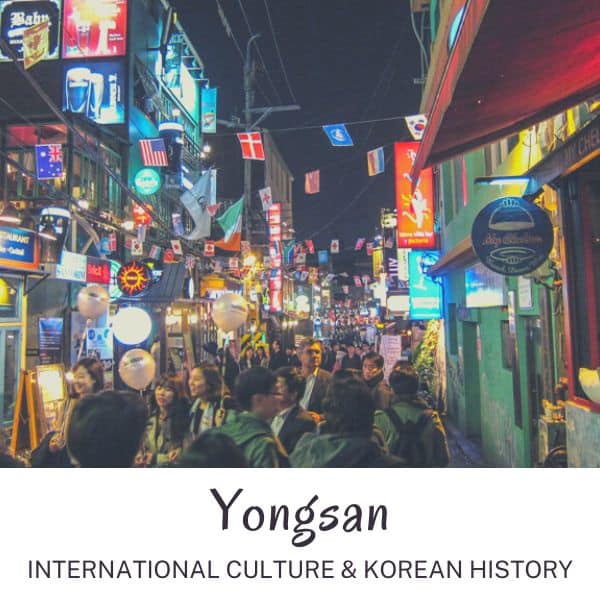
Yongsan is the area encompassing the N Seoul Tower, the popular international area of Itaewon, the trendy hilltop area of Haebangchon (HBC), Seoul Station, the National Museum of Seoul, and many riverside parks. Yongsan has a busy train station with towering skyscrapers and hotels around it catering to business and luxury travellers, as well as shoppers. This quiet business and residential area has good transport links and fewer crowds than other parts of Seoul, as well as interesting cultural attractions.
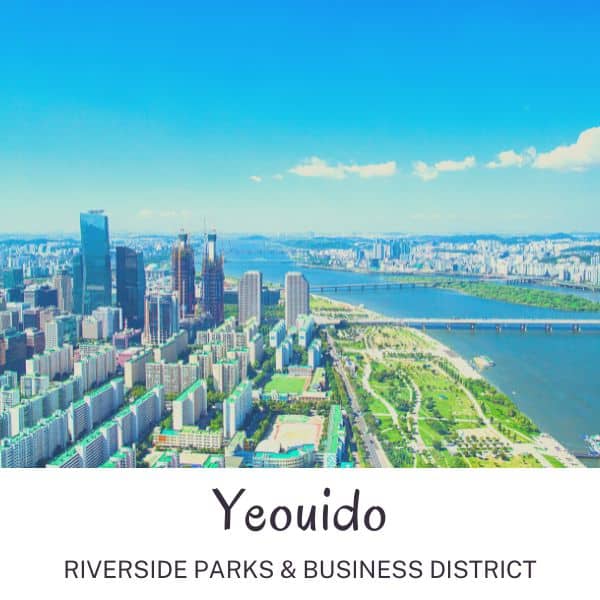
Yeouido is a large island that rests in the Han River, overlooking Hongdae and Yongsan. It has some of the best parks in Seoul and is a popular place for locals to walk along the river on weekends and at night. These parks are home to Seoul’s biggest cherry blossom festivals, as well as summer night markets, fireworks performances, live music, and people enjoying life outside of work. Yeouido is the upmarket financial centre of Seoul, making it an ideal base for business, luxury, and family travellers.
Seoul’s neighbourhoods are informal designations, not necessarily the official district name. For example, Hongdae is a neighbourhood in the Mapo-gu district and Myeongdong a neighbourhood in the Jung-gu district. Whereas Jongno is both the neighbourhood and district name (Jongno-gu).
You might see some areas referred to differently. However, the terms I’ve used in this section are the names most commonly used to describe these areas by tourists and expats. Koreans will certainly know which area of Seoul you’re talking about when you use these names.
Learn more : If you want to know more about Seoul’s best districts and figure out where the best place to stay for your trip to Korea, then check out my detailed guide about where to stay in Seoul . It’s packed with useful info about each neighbourhood, hotel recommendations for different budgets, and tips about booking accommodation in Seoul. Also learn more about the Han River Boat Service launching in 2024 to connect Yeoudio, Jamsil and other riverside destinations.
Hotel Recommendations For Seoul

There are hundreds (maybe thousands) of hotels in Seoul to choose from ranging from multi-person dorm rooms to the height of luxury looking down over Seoul from a 5-star hotel room in the Lotte World Tower . Whatever your budget or requirements, there’ll be somewhere to stay in Seoul for you.
To save you time searching for the best places to stay in Seoul, I’ve created a list of the 9 best luxury, mid-range, and budget hotels in Seoul, as well as 6 long-stay serviced apartments. This list has been created based on customer reviews, location, facilities, amenities, reputation, and quality.
I live outside of Seoul, so often book hotels when I’m visiting Seoul for the weekend . I’ve stayed at quite a few of these, so can personally recommend them based on my own experience. I’ve had both good and bad hotel experiences in Seoul and only want to recommend the best to you.
Recommended Luxury Hotels
Seoul has some incredible luxury hotels to enjoy, each with a true 5-star service, excellent amenities, and delectable restaurants. Many of Seoul’s best luxury hotels are located in Gangnam, Seoul’s wealthiest district, where you can find top restaurants and designer brand shopping.
Recommended Mid-Range Hotels
If you want to experience a luxurious stay in Seoul without breaking the bank, then these mid-range hotels will be perfect for you. These unique, 4-star hotels are reasonably priced and provide stylish, comfortable rooms that you’ll sleep easily in after a busy day exploring Seoul.
Recommended Budget Hotels
Seoul has a wide range of excellent budget hotels with prices that might surprise you for a large city. These are some of my favourite places to stay in Seoul when I visit for the weekend and are popular with travellers due to their convenient location, facilities, and comfortable beds.
Recommended Serviced Apartments
If you plan to stay in Seoul for a month or more, these serviced apartments will provide you all the comforts of home with the benefits of staying at a hotel. These excellent serviced apartments come with cleaning services, health facilities, cooking facilities, and are value for money.
Cost To Travel In South Korea In 2024
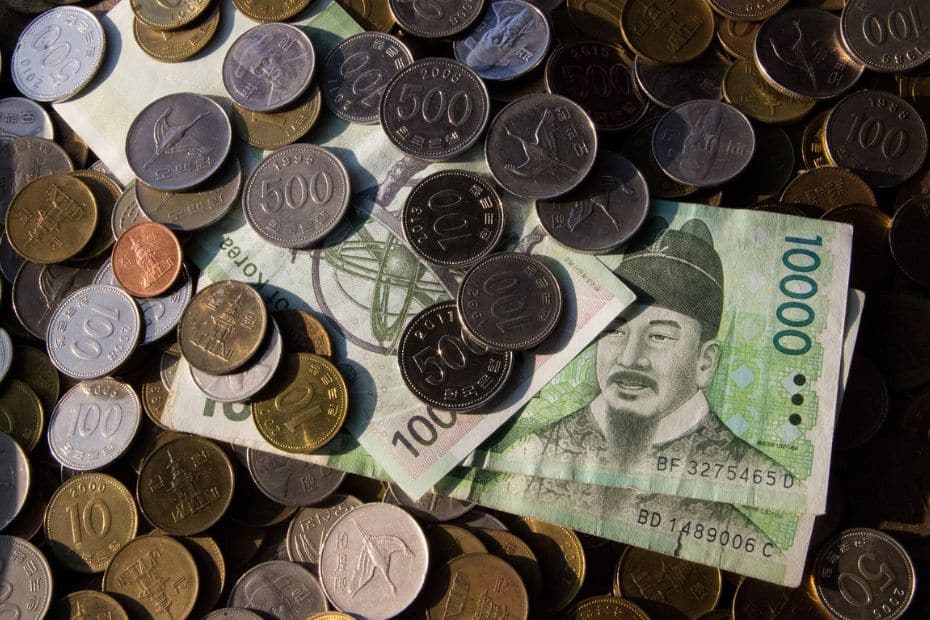
This part of the South Korea travel guide will help you understand some of your expected costs to travel to Korea. The costs to travel to Korea include flights, accommodation, food, drinks, transportation, activities, sim cards, visas, souvenirs, travel insurance, and lots more.
The costs you will pay when you travel vary massively depending on what type of traveller you are and what style of travel you can afford. If you want 5-star luxury and fine-dining, your budget will be very different from someone eating ramyeon from 7-11 and staying in a budget guesthouse.
Therefore, I will try to provide expected costs for 3 different types of traveller – budget , mid-range , and luxury . These aren’t exact figures, but should give you a rough idea of how much you’ll spend.
Daily Costs To Travel In Korea
There are costs that you will pay each day when travelling in Korea that can be averaged out to give you a daily cost. Knowing these figures will help you plan your budget for Korea and to see where you can afford to spend more for the one-off costs to travel, which will be covered next.
The daily costs are accommodation, food & drinks, transportation, attractions & tours, and miscellaneous expenses that can pop up unexpectedly. These miscellaneous costs might include getting a street food snack, an unexpected entrance fee, or a few extra drinks in the evening.
Transportation will be covered later in this South Korea travel guide and there are some useful tips to reduce your transportation costs. You will also be able to see some of the best attractions, tours, and activities in Korea and you’ll be able to work out how much you’ll spend on those.
Here are the daily costs per person to travel in Korea:
Please note : These are costs per day, per person . Couples and families sharing a room will have lower costs as double rooms aren’t much more expensive than single rooms. Some days will be cheaper, some much more expensive, especially if you take day trips or visit premium attractions.
There are also one-off costs not included in these daily costs. These can be pre-travel costs, such as flights and a K-ETA or tourist visa (already covered), travel insurance, vaccinations, and such like. Pre-travel costs are different for each traveller and depend on your country of residence.
Other one-off costs during travel in Korea may include day tours, souvenirs, shopping, celebrations, medical costs, and expenses that you don’t normally pay each day. Again, these vary for each traveller and are difficult to calculate as people’s budgets are so different.
Is Korea A Cheap Country To Travel In?
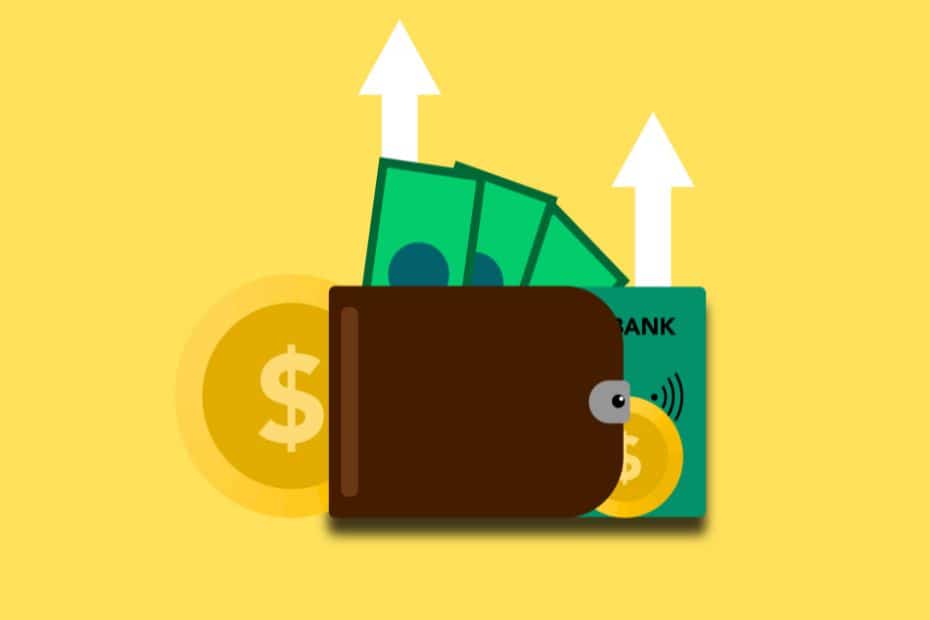
Korea is relatively cheap country to visit, but certainly isn’t always a budget destination. The cost to travel to Korea has risen over the last few years and might be more expensive than you think, even if you’ve previously visited Korea. Flying to Korea is certainly more expensive now.
Food costs rose by 7.5% in 2022 alone and these costs have been passed on to restaurants, which now charge higher prices for meals. Transportation costs rose by about 20% in 2023 for buses and subways, although these are still relatively cheap compared to some countries.
Despite these price increases, travelling in Korea is still cheaper than travelling in most other high-income industrialised countries such as Japan, the USA, and Western Europe. If you’re from countries such as the Philippines, Thailand, Indonesia, or Malaysia, Korea may seem expensive.
City Passes That Save You Money In Seoul
There are a number of city passes that can save you money when visiting Seoul by offering free or discounted entry to some of the best attractions in the city for a single price. The original city pass for Seoul is the Discover Seoul Pass, but now there is also the Go City Pass and Klook Pass Seoul.
Here’s a summary of each of these Seoul city passes:
Discover Seoul Pass : Available in 24 | 48 | 72 hour periods, allows entry to top attractions in Seoul such as Lotte World Adventure, N Seoul Tower, COEX Aquarium, Alive Museum, Zoolung Zoolung, Sealala Sauna, Gyeongbokgung Palace, and more. Prices start at 50,000 KRW .
Go City Seoul Pass : Available as 1 – 5 day passes or a flexible pass for up to 7 attractions. Covers a wider amount of attractions than the DSP, including a DMZ Tour, Nanta Cookin’ Musical, Seoul Land, Seoul Pub Crawl, Seoul Ghost Tour, and more. Prices start at 68,000 KRW .
Klook Pass Seoul : Available for use 2 – 5 attractions, including Everland or Lotte World Adventure theme parks. The Klook Pass Seoul allows free entry to selected attractions within a 30 day period. Attractions include the N Seoul Tower and Lotte World Aquarium. Prices start at 44,000 KRW .
If you’d like to know more about these passes, be sure to check out my article about the Klook Pass Seoul , as well as my suggested Discover Seoul Pass itineraries . I’ll have a review article of the Go City Seoul Pass soon, too.
How To Save Money In Korea
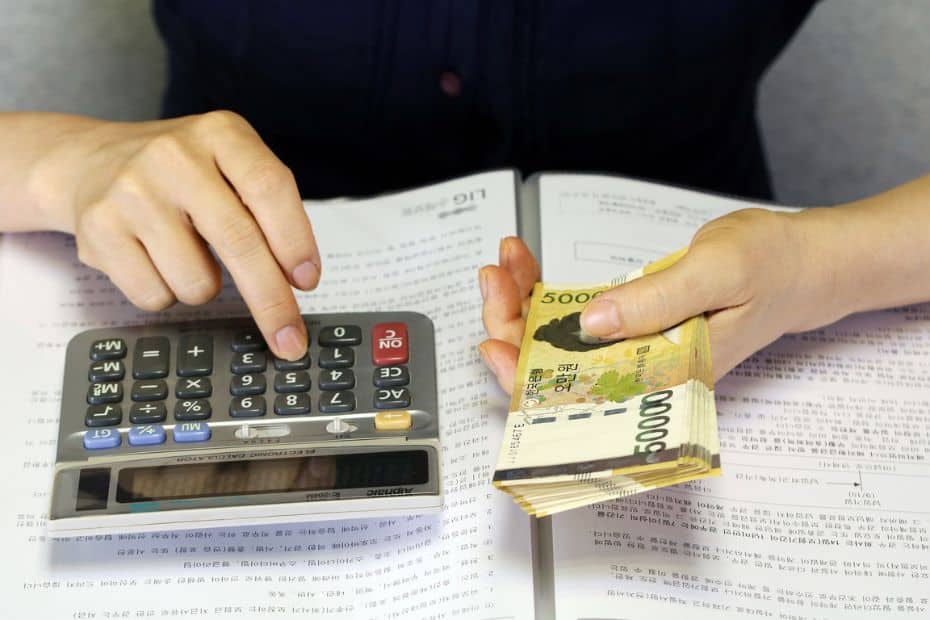
There are always ways to save money and spend less in Korea. Budget options exist for travellers and you can travel in Korea for less than 150,000 KRW per day, even as little as 50,000 KRW per day. Here are some of the ways you can save money in Korea and travel more for less:
Eat like a local : Visit the traditional markets, food stalls, and traditional Korean restaurants. These are much cheaper than eating foreign foods in Korea. University areas are usually cheap, too.
Spend less on coffee : Coffee in Korea can be expensive, but it doesn’t have to be. A latte could cost you 5,000 KRW in a chain store, but there are cheap hole-in-the-wall cafes where it’s half that.
Shop in the markets : From designer goods (possibly fake) to souvenirs, the markets of Seoul and other cities usually have the best prices. Don’t be afraid to haggle.
Use public transport : Korea has a fantastic public transport network both in cities and between cities. Don’t waste money on taxis and private transfers when you can use a bus or subway.
Book everything online : You can find discounted entry and tour tickets online that are much cheaper than the regular price. Use Klook , Get Your Guide , and Viator for the best prices.
Stay in guesthouses and hostels : You can find rooms for as little as 10,000 KRW per night in shared dorms and 20,000 KRW in guesthouses. Book ahead to find the best prices.
Take advantage of free things : There are lots of places you can visit for free in Seoul and free services, such as walking tours in Seoul, 30-minute hanbok rentals, and even free entry to the palaces.
Get your tax back : Korea makes it really easy to recover tax you’ve paid when shopping. Stores in Seoul will process tax returns for you or you can claim a refund at the airport when you leave.
You will see tips and links in this South Korea travel guide that are designed to help you save money when you visit Korea. Booking tours, attractions, and sim cards in advance can save you a lot of money, as can using a T-Money card and Wise travel card. Keep reading for more money-saving tips.
Travel Money And Money Exchanges In Korea
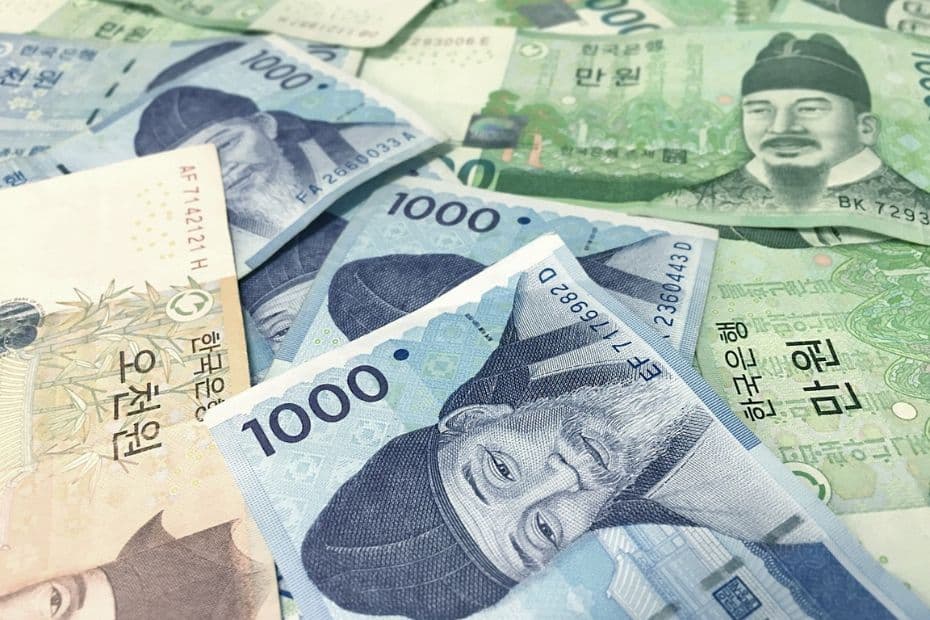
If you follow the tips in this section of this South Korea travel guide, you can certainly save yourself a lot of money and avoid unnecessary fees when spending in Korea. Learn where and how to exchange money, how to avoid ATM and card fees, and how to get tax back before you leave.
Because this section covers a lot of the common questions people ask about travel money in Korea, it will be broken down into a question and answer format. This should make it easier for you to find the information you’re looking for and discover answers you didn’t know you were looking for.
Can You Use A Foreign Card In Korea?
Almost all foreign credit cards with Visa or Mastercard will be accepted in Korea and it is possible to use these cards to pay across the country. American Express is also accepted in popular tourist areas, but not as widely as Visa or Mastercard and may have problems outside of big cities.
Foreign debit cards should work if they use Visa or Mastercard, but there may be restrictions in place with your bank when using them abroad. It is recommended that you call your bank to check before travelling. For both credit and debit cards, check your bank for any fees you’ll pay overseas.
Can You Withdraw Cash From An ATM In Korea?

You can withdraw cash from ATMs in Korea using a debit card, but not all ATMs will accept international cards. Look for a sign saying ‘Global ATM’ or ‘Foreign Currency ATM’ to withdraw cash in Korea with a debit card. You can also withdraw cash using a credit card, but it’s more expensive.
Whether you use a debit or credit card, an ATM is likely to charge a fee to withdraw money using a foreign card. Your bank or credit card company may also charge a fee or give a bad exchange rate. These costs can add up a lot if you withdraw regularly, so try to make fewer withdrawals.
Learn more : Should you use cash or card when you visit Korea? This article about the how to pay in Korea has lots of useful information about payment methods in Korea, including alternatives to the usual mix of cash and a credit card.
How Can You Save Money When Paying By Card In Korea?
Instead of using a foreign debit or credit card in Korea, which might have expensive fees or not work in places, here are two better options. The first is the WOWPASS travel card , which offers tourist-friendly card services in Korea. The other is to apply for a travel card that can be used globally.
Both the WOWPASS and the two other travel cards offer the ability to pay by card in Korea and to withdraw cash in Korean won. They also offer better exchange rates than you’ll find in airport or local money exchanges in Korea. They each have some unique features, which will be illustrated below.
Pay Like A Local With WOWPASS
The WOWPASS is a new way to pay in Korea that combines the essential functions of a T-Money transportation card with the benefits of a local debit card. This is a prepaid card you can top up at more than 90 locations in KRW or your own currency. Just look for the bright orange WOW machines.
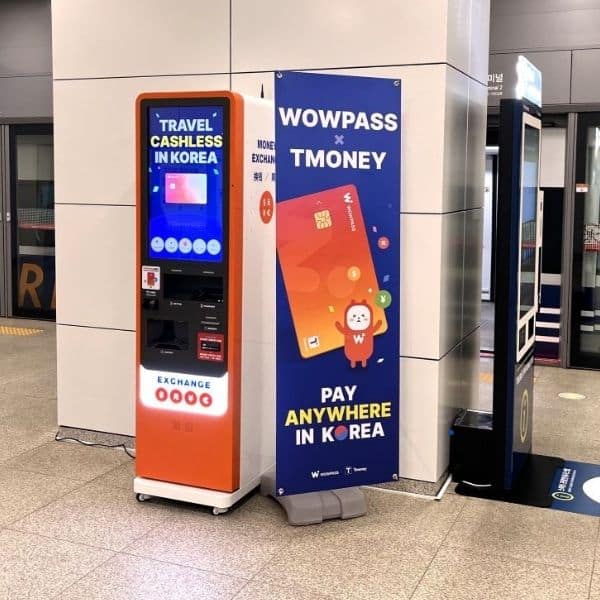
The T-Money function in the WOWPASS means it’s more useful than other travel cards as you don’t need to carry two separate cards when you travel. Please note, you still need to charge the T-Money balance of WOWPASS with cash, just like a regular T-Money card.
The WOWPASS travel card allows you to add up to 1,000,000 KRW to your card and can be used to pay for almost anything in Korea without any fees. The card is issued by a Korean company, so you can use it to withdraw cash at any WOWPASS machine located in Seoul & other cities in Korea.
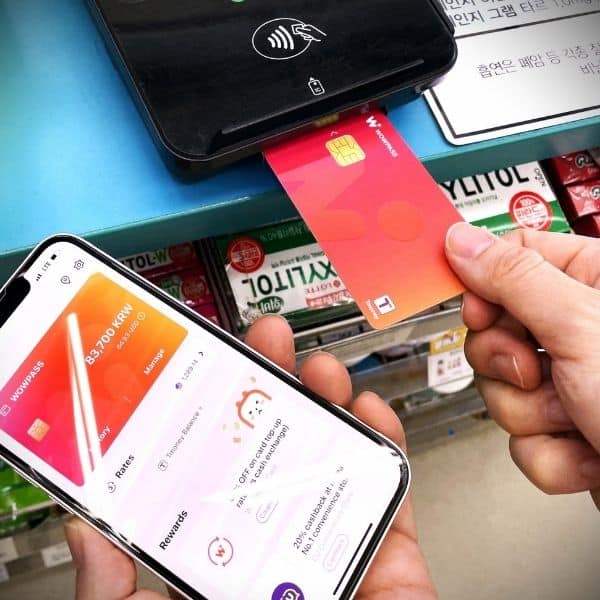
Thanks to the user-friendly WOWPASS app, users can freeze or replace their card, check their spending, add funds, and check exchange rates. Because the WOWPASS isn’t tied to your home bank account, it also reduces the damage by card fraud, in case the worst was to happen.
As well as a regular WOWPASS, you can also reserve the All-In-One Airport Package , which includes the WOWPASS, 10,000 KRW T-Money balance, and a discounted Korean sim card. This is really useful for those who want to get connected and travelling as soon as they arrive in Korea. Get the WOWPASS app for Android or Apple .
Tip : Use the invitation code INMYKOR1 to get cashback on WOWPASS top-ups in foreign currency.
Overseas Travel Cards You Can Use In Korea
Overseas travel cards are another option for spending in Korea and I use them myself to spend money from my UK bank account in Korea, as well as when travelling in other countries. They’re really simple to use and are much cheaper than paying with my foreign card or exchanging money.
Two of the leading travel card companies are Wise and Revolut . I use both of these to pay for things in Korea and have written an article about how to use the Wise card in Korea . You can use them to pay for hotels, food, drinks, transportation, taxis, attractions, and lots more. They’re really useful.
Here’s a summary of the main features of these travel cards:

The Wise travel card allows you to easily transfer and convert money from your home bank account into dozens of other currencies and use this money to pay when you’re travelling. You only need to transfer as much as you plan to spend and can easily transfer back anything you haven’t. The exchange rate will be better than your bank or a money exchange offers, too.
A versatile, easy to use app breaks down what you’ve spent by category so you can track your travel spending. You can withdraw cash from ATMs, pay by QR code, use it for Google Pay, and pay by contactless. Even if you lose your card, you can still spend money. It’s also really safe as you can freeze your card, set spending limits, and limit how much money you transfer.
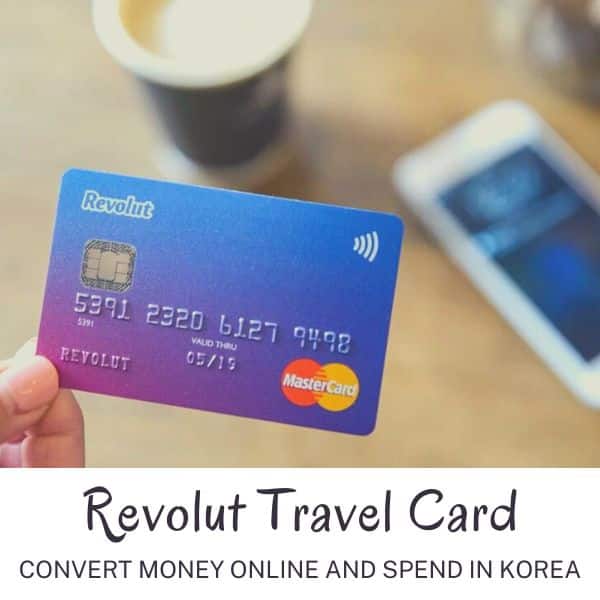
The Revolut travel card can be used in Korea to pay for a wide range of goods and services without expensive fees for spending your home currency overseas. Unlike the Wise travel card, which lets you transfer money into different currencies and then spend in a local currency, such as Korean won, the Revolut travel card lets you pay fee-free with your home currency.
The Revolut travel card comes with an easy to use app that can be used to manage your money both at home and when travelling in Korea. You can check your spending with categories and reports and set budgets for your spending. The Revolut travel card also offers cashback in the US, stock and crypto investments, and the same security features as the Wise travel card.
Can You Use Apple Pay In Korea?
Apple Pay wasn’t previously available in Korea due to a lack of approval by Korea’s financial regulator. However, in February 2023, Apple Pay received approval to begin operating in Korea through the Hyundai Card Co., allowing payments with Apple devices from March 2023 onwards.
The Apple Pay payment system has been available in Korea since March 21st , 2023 and allows Apple Pay members to pay for goods and services at NFC-enabled payment terminals. However, on the launch date of Apple Pay, there were only 70,000 NFC-enabled payment terminals in Korea.
The lack of NFC-enabled payment terminals will be a big issue for Apple Pay users in Korea as there are around 2,900,000 shops in Korea and most won’t accept Apple Pay. Franchises like Starbucks can’t accept Apple Pay and it can’t be used to pay for public transport. You’ll need a T-Money card.
Samsung Pay, which uses MST technology, not NFC, currently dominates the Korean market. NFC-enabled terminals should grow, especially in tourist areas and city-centres from 2023 onwards. This will be good news for Google Pay, which also uses NFC technology and also isn’t in use in Korea yet.
Should You Exchange Money Before Travelling To Korea?
It is not necessary to exchange money into Korean won before travelling to Korea, but it can certainly be useful to have a small amount of money. Exchange rates for Korean won outside Korea may not be as good as within Korea and changing large amounts of cash before you travel isn’t essential.
It might be hard to get Korean won from your local bank or money exchange as it’s not one of the most commonly exchanged currencies. Therefore, you might find exchange rates less favourable and extra fees applied to exchange money. Using travel cards like Wise or Revolut is a better option.
Should You Change Money At Incheon Airport?
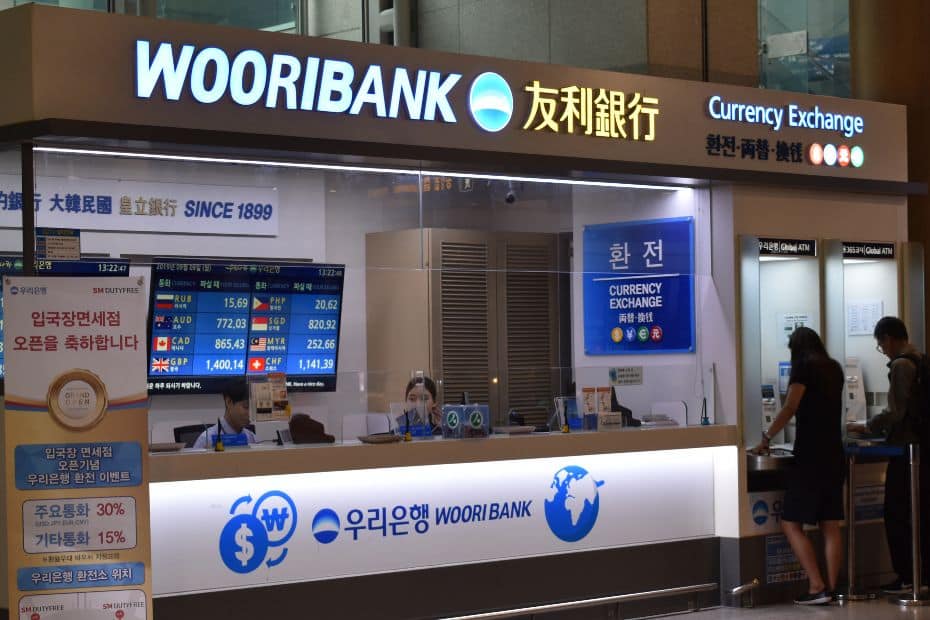
I’ve travelled around the world and always avoid exchanging money at the airport if I can help it. Airports often have the worst rates for money exchange as they know people need to get local cash, there aren’t many other options, and you need at least a bit of money to travel to your hotel.
Incheon Airport is an exception to this rule and I’ve compared travel exchange rates at several times when flying into and out of the airport. The foreign currency exchange rates at Incheon Airport aren’t that bad and are just slightly higher than what you’d find in Seoul. Not the best, but not bad.
There are also Global ATMs at Incheon Airport, so you can withdraw cash here. If you have a Wise or Revolut travel card, you can withdraw up to $200 fee-free from an ATM in Korea. However, Korean banks will charge a withdrawal fee (about 3,000 KRW), which applies to any foreign card used.
Where Can You Exchange Money In Seoul?
Seoul is the first destination for most travellers to Korea and if you want to save money on exchange rate fees, I recommend exchanging money in the capital. There are two main options for exchanging money easily and quickly in Seoul – WOW money exchange machines and money exchanges.
Here’s a summary about the two main ways to exchange money in Seoul:
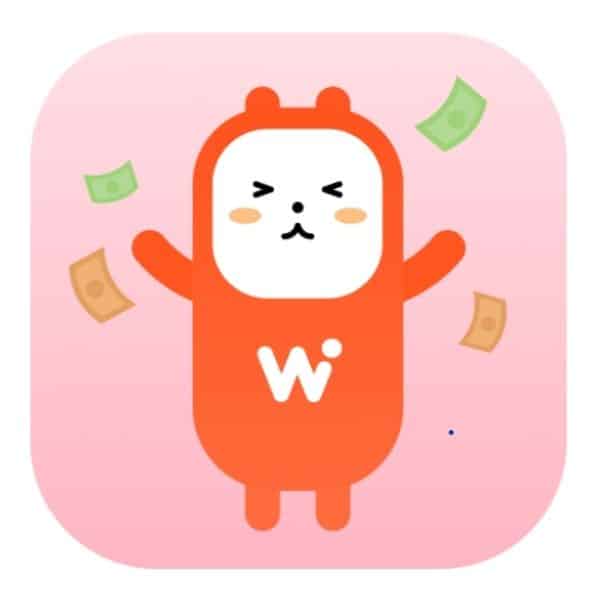
The cheapest and most convenient option for exchanging money in Seoul is through a WOW money exchange machine. This automated machine gives the best exchange rates and can quickly and easily exchange foreign cash for Korean won. It doesn’t accept card payments, only cash. All you need to do is scan your passport and deposit your cash and it will convert it into Korean won immediately. There are dozens of these machines in Seoul, as well as in other cities like Busan and Daejeon.
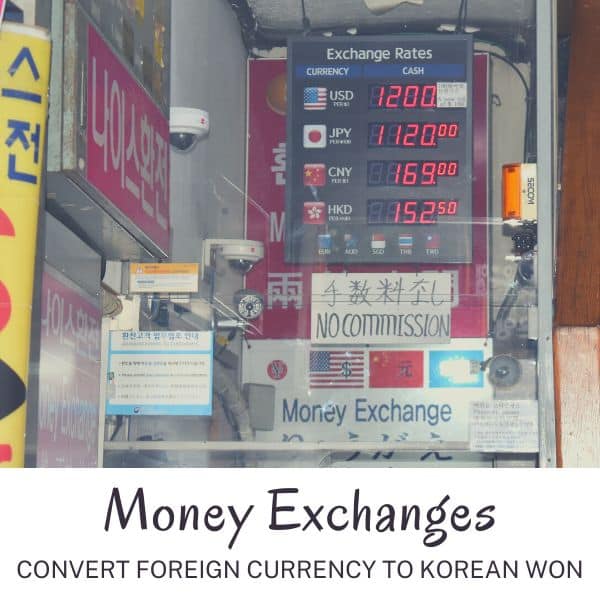
The traditional way to exchange foreign currency in Seoul was through a money exchange. You can find these in Myeongdong, where many tourists stay and visit in Seoul. There are also money exchanges inside banks and in other tourist hotspots. These used to be the best place to exchange money, until the WOW money exchanges were introduced and travel cards like Wise and Revolut made it easier to use a card. If you want to use a money exchange in Seoul, Myeongdong is the best place to do it.
Can You Get Tax Back When Shopping In Korea?
Travellers to Korea can claim tax back on eligible purchases during their trip. This can be done immediately after you purchase an item (if the shop offers the service) or at Incheon Airport or other airports in Korea before you depart.
Instant tax refunds are available at certain locations in Seoul and other big cities. These are usually department stores and large chain stores. You are able to claim tax refunds for goods up to a total value of 2,500,000 KRW (incl. tax). There is a tax refund limit of 500,000 KRW per transaction.
2024 Tax Refund Changes : From 2024, the tax refund limits will be doubled, so you will be able to claim up to 5,000,000 KRW of tax back and claim up to 1,000,000 KRW back per transaction. Source: Korea Herald .
To claim a tax refund you need:
- To show your passport
- To be a tourist in Korea
- To spend between 30,000 to 300,000 KRW in one place
- To be leaving Korea within 3 months
Tax isn’t refundable on all purchases, so be sure to check when shopping. Tax refunds can also be claimed at the airport as long as you have the receipt and the goods you’ve purchased.
Mobile Phones And Internet In Korea
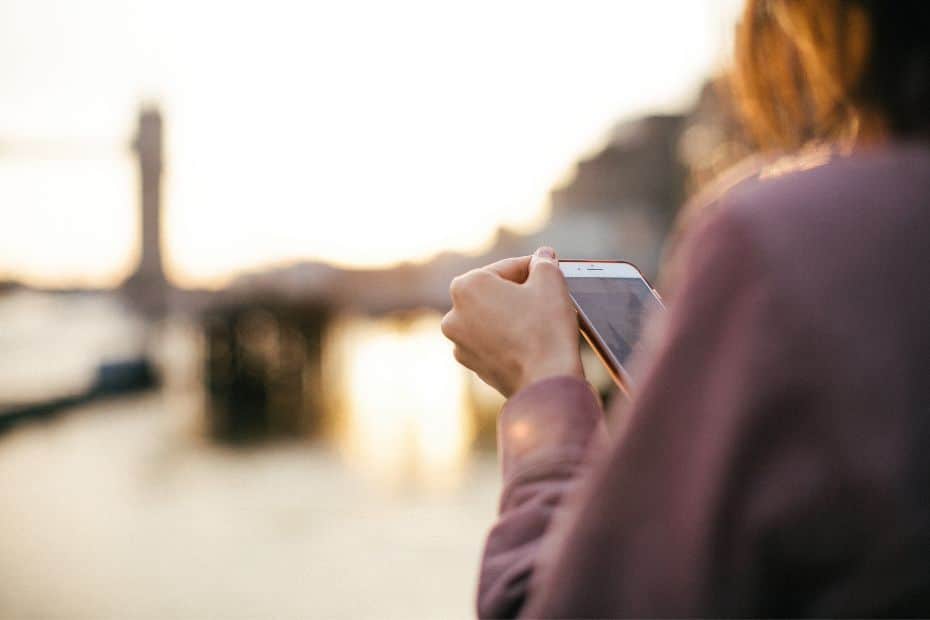
Staying connected to the Internet when visiting Korea is becoming more and more essential these days. Keeping your mobile phone, tablet, or computer connected to the web is useful not only to stay in touch with people back home, but also to help you save money and travel Korea more easily.
There are several options to stay connected in Korea when you travel. The main options for travellers are tourist SIM cards, either physical or eSIMs, portable WiFi routers, and relying on free WiFi provided in public places and hotels. All of these are good options, but there are other considerations, too.
This South Korea travel guide will cover the main differences between Korean SIM cards and portable WiFi routers and which will be most suitable for you. There are also details about why you might want a Korean phone number and which apps to use to help you travel in Korea.
Don’t forget, if you bring your phone or other mobile devices to Korea, you’ll need a travel adapter .
Should You Get A Korean SIM Card Or WiFi Router?
Both a Korean SIM card or portable WiFi router will provide access to Korea’s high-speed mobile networks and keep you connected to the Internet. They provide a secure internet connection, but do so in a different way and with different available features. Find out about the best Korean SIM card for tourists in this SK SIM card review .
Here are the main features of Korean SIM cards and WiFi routers:
Costs : SIM cards and WiFi routers are similarly priced when using them for a two week period, but they are charged in different ways. SIM cards are fixed-price and can be bought for set time periods, whereas WiFi routers are charged daily. WiFi routers are cheaper in the short-term.
Ease of use : If you purchase or pre-order a SIM card or portable WiFi router at Incheon Airport, which I highly recommend, the staff will install or setup everything for you. Once they’re activated, it’s very simple to use either one. Cancelling and returning them at the airport is also easy for both.
Here are the reasons you should get a Korean SIM card or portable WiFi router in Korea:
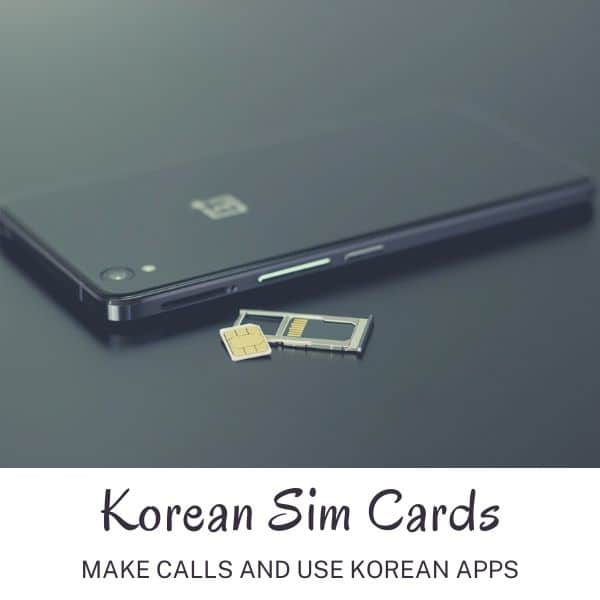
You should get a Korean SIM card when visiting Korea to get a Korean phone number. The benefits of having a Korean phone number are mainly to make calls and use Korean apps. SIM cards are also useful if you want a secure connection everywhere you go and plan to make calls or send texts. When you have a SIM card, you can tether your network connection to connect other devices you own. Korean phone coverage is amazing and you’ll get service everywhere. SIM cards don’t require you to carry any extra devices and are cheaper over the long-run than WiFi routers.
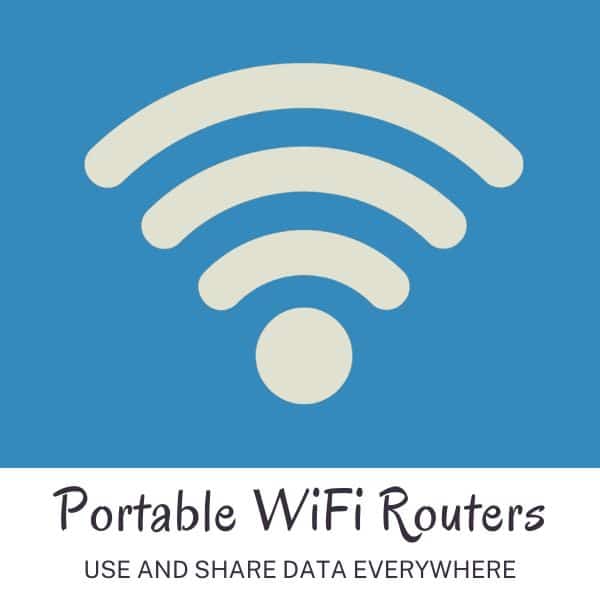
You should get a portable WiFi router if you’re travelling in a group or as a family as you can connect multiple devices to one router. This is much cheaper than getting separate SIM cards for all travellers, but also requires people stay close together. WiFi routers are charged per day and if you need additional days, they’ll be automatically added and charged when you return the router. This means you’ll never have to worry about your service suddenly ending. The main downside to using a WiFi router is the lack of Korean phone number, but that might not be an issue if you don’t need one.
Where Can You Get Korean SIM Cards Or WiFi Routers?

You can get a Korean SIM card or portable WiFi router in several ways. The easiest way, and one that I definitely recommend, is to purchase online through a tour company such as Klook , Viator , or Get Your Guide , and get a SIM card at Incheon Airport or other entry point into Korea when you arrive..
The main reason I recommend this method is that you can guarantee you will get a SIM card or router and it will be waiting for you when you arrive. The collection desks at Incheon Airport are open 24-hours a day and they will help you install everything you need to get started immediately.
You can also get SIM cards and WiFi routers when you arrive at the airport and you should find similar rates. However, you won’t be guaranteed a device and you will need to pay in person. When you book online, you can pay in your home currency and avoid those issues.
I don’t recommend getting a SIM card or WiFi router in Seoul or other cities. It is possible, but you may run into language issues and find less tourist-friendly options. Phone shops outside the airport usually cater to Koreans, not tourists. Airport rentals are the easiest options for visitors to Korea.
What’s The Benefit Of A Korean Phone Number For Tourists?
There are two main benefits of having a Korean phone number for tourists. The first benefit is the ability to call people when you’re in Korea. This can be useful for making reservations, keeping in touch with people, and in case of emergencies.
The second benefit of having a Korean phone number is the ability to use Korean apps . It isn’t mandatory to have a Korean phone number to use Korean apps, but most won’t let you use their services unless you sign up with a phone number. Using Korean apps makes travelling easier.
A phone number is like a form of identity in Korea, which is why you need your passport to register a SIM card. Once you have a phone number, many more services are available, including food delivery, ordering taxis, making reservations (such as for the Busan Sky Capsule ), and online messaging.
What Apps Do I Need For Travelling In Korea?
If you have a Korean phone number, you can use Korean apps. Even without a Korean number, you can still download these apps and use some of their services. Full features typically require a phone number though. There are other, non-Korean apps that will help you when travelling, too.
Here are the most useful apps to use when travelling in Korea:
Papago : This is the essential translation tool for visiting Korea. Papago’s translation services are the best and you can use the app to take pictures and translate Korean signs, menus, and other pictures.
Naver Maps : To find your way around Korea, use Naver Maps or Kakao Maps. Their systems are much more accurate in Korea than Google Maps. Use them to plan travel routes and transport times.
Kakao Taxi : Uber and Grab don’t really exist in Korea, so if you plan to take a taxi, you’ll need to use Kakao Taxi. Simple to use and takes the hassle out of trying to use Korean to give directions.
Kakao Talk : This is Korea’s most popular messaging app and is useful for keeping in touch with Korean friends, contacting businesses in Korea, and even calling abroad.
Seoul Subway : Use this app to travel around Seoul’s underground more easily. Plan your route, see when the next train is due to arrive, check connections, and see how late the trains run.
Korail Talk : This app allows you to book trains on Korea’s high-speed train network and regular train routes. This app has an English setting, so you can check train times and prices easily.
Coupang Eats : This is a food-delivery app that allows you to order almost anything edible and get it sent directly to you. You can even order convenience store goods. Useful for rainy days.
Mango Plate : Find restaurants in Korea with this app and discover the best places to go out and eat. You can also see restaurant details and get directions in Naver Maps and Kakao Maps.
WOWPASS : To use the WOWPASS to pay like a local in Korea and for T-Money functions, you’ll need the WOWPASS app. This will let you check your balances and spending and control your card.
Wise & Revolut : As mentioned in this South Korea travel guide, using a travel card to pay for items in Korea will save you money when you travel. If you use Wise or Revolut, make sure you have the app.
Klook : This company provides some of the best tours in Korea and if you make bookings through their website, you can easily manage them with the Klook app.
Intercity Bus by T-Money : This app is great for booking buses between cities in Korea. There is an English version that allows you to book tickets, check times, and see available seats.
These apps should be available on both Android and Apple. Some of these apps might default to Korean, but you should be able to change them to English in the side menu.
Is There Free WiFi In Korea?
Travellers in Korea have the option to not get a sim card or portable WiFi but still stay connected. This is thanks to the excellent Free Wifi in Korea that is provided in public transport, government buildings, restaurants, cafes, and many other places. This is mostly in the cities, however.
Hotels also provide free WiFi in most cities in Korea. If you plan to rely on free WiFi, I recommend using the hotel’s WiFi to plan routes, check opening times, and research places you want to visit. Take screenshots of these details so you can see them later, even if you don’t have Internet access.
The only warning I would give about relying on free WiFi when travelling in Korea is the increased use of mobile-dependent apps and passes in Korea. Physical tickets and passes are being phased out in favour of digital versions, which often need an active Internet connection to use.
I’ve noticed in recent years that services that impact travellers have moved to digital versions. This includes the T-Money card, Discover Seoul Pass, train and coach tickets, attraction tickets and event tickets. I believe that having a reliable net connection will be a must for most travellers soon.
Using Public Transport In Korea In 2024
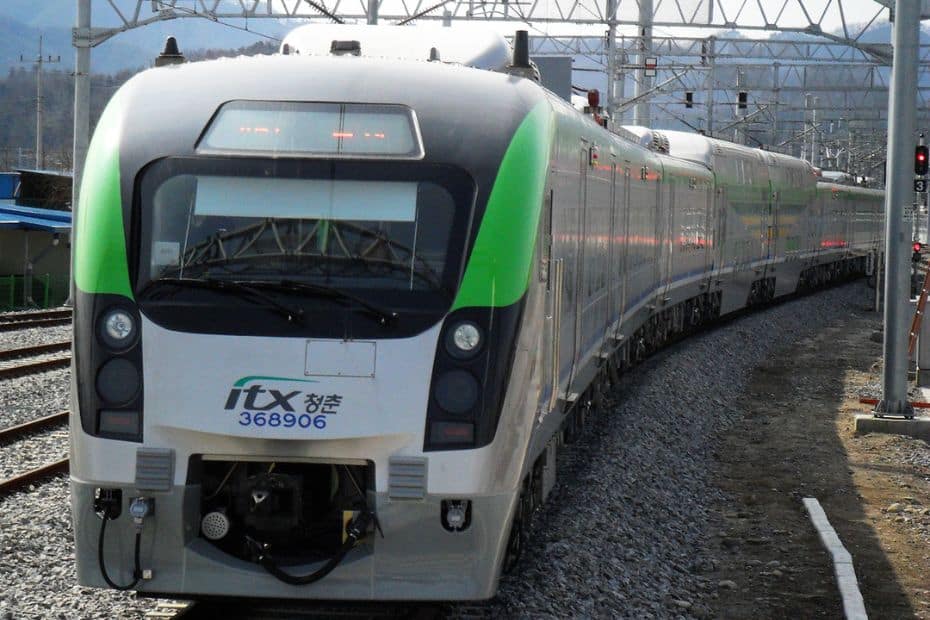
This section of the South Korea travel guide looks at Korea’s public transport system and how to navigate it as a traveller. Korea has arguably one of the best public transport systems in the world. It’s cheap, well-connected, frequent, and runs on time. Other countries could learn a lot from Korea.
The great news for tourists is that Korea’s public transport is very foreigner friendly and information is provided in English in almost all places, as well as Chinese and Japanese in popular areas such as Seoul and Busan. Travelling by public transport in Korea is cheap, easy, and convenient.
How Much Does Public Transport Cost In Korea?
The cost of public transportation in Korea is fixed, no matter what day you purchase tickets on. If you buy one month in advance, or last minute, you will pay the same price for the journey. Journeys within a city are a single price and not dependent on how far you travel, unless you leave the city limits.
All journeys are single fares and you can’t buy return tickets. You will need to buy two singles when you want to travel somewhere and back again. The cost of a single fare depends on how you pay for the ticket – by cash or with a transportation card.
Here are the costs for public transport in Korea by payment method, type and user:
Please note : The cost of subway rides is set to rise to 1,400 / 1,500 KRW in October 2023. These prices will be adjusted when this occurs.
How Do You Pay For Public Transport In Korea?
The cost of public transport in Korea depends on whether you pay with a transportation card, such as T-Money, a Korea Tour Card , or Cashbee, or in cash. This applies to both subways and buses. If you use a transportation card, you should add credit to it, then touch it to the card reader at the subway or bus to pay.
To use cash to buy a subway ticket, you will need to buy a ticket at the station. For buses, you should pay the correct fare to the driver when boarding the bus. However, since 2022, buses across Korea have started to end the use of cash and some will insist on payment by transportation card only.
In the future, bus payments are expected to become simpler with fares deducted via bluetooth-enabled phones that have the relevant app downloaded. This system has already been in place in Gyeonggi Province since March 2022 and is likely to spread to more bus routes in the future.
I highly recommend getting a T-Money card when you travel to Korea. You can use it to pay for public transportation (at a discounted rate), and it will work almost everywhere in Korea. It can also be used to buy goods from shops, cafes, and restaurants. It’s really convenient and a must-have for Korea.
Using T-Money To Pay For Public Transport In Korea
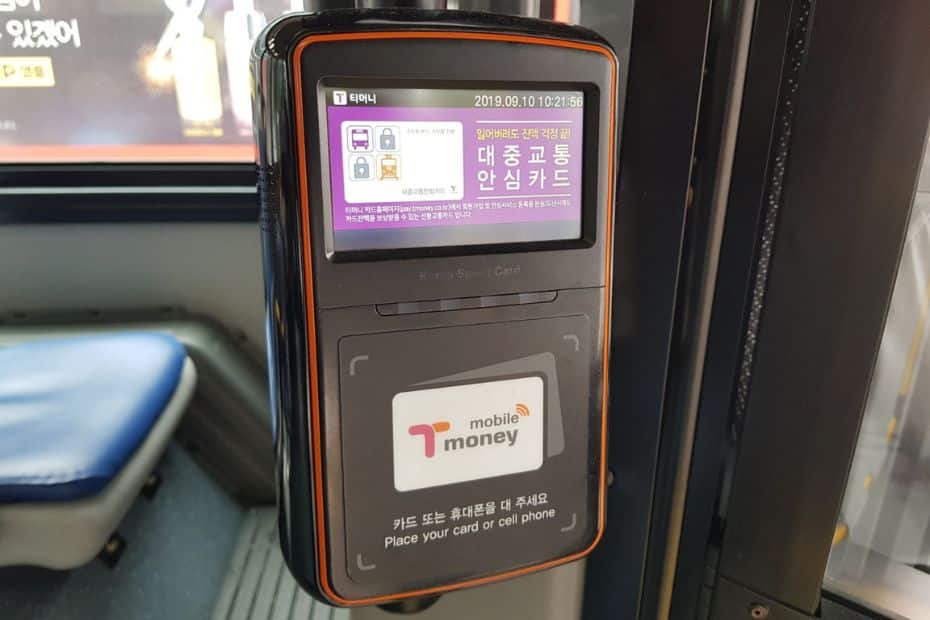
A T-Money card is the essential transportation card for using public transport in Korea. You can purchase one at Incheon Airport, subway and train stations, and convenience stores across Korea. The card can be used in many places. It never expires, so you can use it on different trips, too.
Here is how to use a T-Money card in Korea:
- Purchase a T-Money card (2,500 KRW)
- Add money to the card (cash top-up only)
- Enter the bus or subway station
- Tap the T-Money card against the card reader (see pic above)
- Tap the T-Money card again when you get off (for transfer discount)
- Recharge when necessary
I recommend adding about 10,000 KRW for each day you plan to travel in Korea. That means about 70,000 KRW for a week. You can add more money later if necessary. You can top up at convenience stores and transport stations. There is also an app version of T-Money, but the card version is better.
How Do You Use Trains In Korea?

The train network in Korea is divided into high-speed trains (KTX) and regular trains (ITX and Mugunghwa). The KTX network connects major cities in Korea and is convenient for travelling around Korea quickly and cheaply. The carriages are comfortable and come with modern facilities.
Unlike other forms of public transport in Korea, transportation cards like T-Money aren’t accepted for trains. You will need to buy a train ticket to travel and all tickets are single tickets. The price to buy a ticket doesn’t change and you can refund a ticket up to the last minute for only a small fee.
You can book tickets within 30 days of travel through the official Korail website or app, or at a train station in Korea. Unfortunately, buying a train ticket online in Korea can be difficult as Korean payment systems often reject cards issued outside of Korea. Buying in person is recommended.
How To Book Korean Rail Tickets Outside Of Korea
If you want to book Korean train tickets outside of Korea, you can do it online with Trip.com , which is Korail’s exclusive overseas distributor. The price is slightly higher (about 5%) than the price you’ll pay in Korea, but it will allow you to book tickets online and secure your seat in advance.
If you plan to travel on the main KTX route between Seoul and Busan, I highly recommend booking tickets in advance. There are three types of tickets available – first class, regular, and standing. The journey takes 2:34 and you don’t want to be standing for all that time. Book ahead for comfort.
Is The Korea Rail Pass Worth The Price?
The Korea Rail Pass is a good option for tourists who plan to travel long distances by train in Korea, such as between Seoul and Busan or Seoul and Jeonju. The pass has two main options – flexible and consecutive. These mean you can use it any time (flexible) or within consecutive days.
The flexible pass is more expensive, but offers more freedom to travel around Korea over a longer period. You can use the pass to only cover big journeys and won’t feel pressured to use it again until you’re ready. The extra cost is more than worth the inconvenience of having to rush travel plans.
Will you save money with the Korea Rail Pass? That depends on your travel plans, how often you’ll be travelling by train, and how many people are travelling. If there are 2 people or more, purchase the group saver pass and save 10,000 KRW each on the pass. Group tours make it better value.
The Korea Rail Pass does not allow you to ride on the subway for free, which would make it better value. It can also be complicated to reserve tickets online using the pass and buying tickets in the regular way is more convenient. Overall, the pass isn’t essential, but might save you money.
How Do You Use Taxis In Korea?
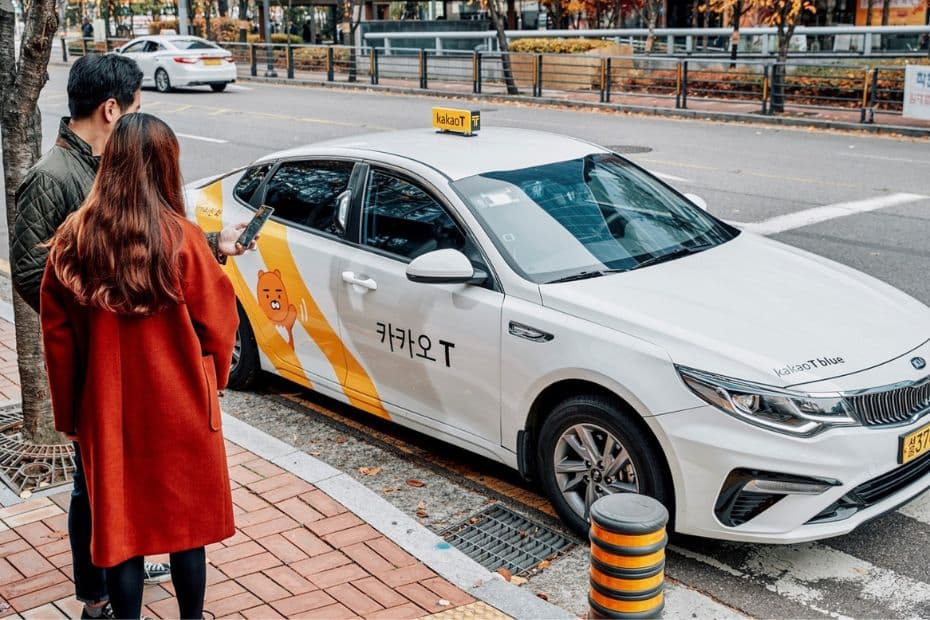
Taxis in Korea can be hailed from the street or called directly to you using apps such as Kakao Taxi . Companies like Uber and Grab don’t have a large presence in Korea and operate the same way as Kakao Taxi, by helping you find an official taxi driver. Private taxi services aren’t common.
The big issue facing the Korean taxi industry in 2024 is the lack of taxi drivers. This can make it hard to get a taxi, even when using an app like Kakao Taxi. Late night taxis are particularly difficult to find. Read this guide about how to use Kakao Taxi to help you learn how to call a taxi in Korea.
Taxi prices in Korea are reasonable, especially compared to countries like Japan and the UK. Although base taxi fares rose in 2023 to 4,800 KRW, the price is still low and relatively affordable to travel by taxi if you need to. It’s a good option if there are no direct public transport routes.
Taking a taxi to and from Incheon Airport is a convenient option if you have a lot of bags or you are travelling in a group. For solo travellers or couples, I would recommend using public transport or a limo bus, as it’s significantly cheaper and won’t take much longer than a taxi.
How Do You Use Intercity Buses In Korea?
Intercity buses in Korea operate in a similar way to trains. You can only book tickets within 30 days of travel and can only buy single tickets. Book tickets online through websites such as T-Money Bus or Bustago , through app versions of these sites, or at the bus terminal you will depart from.
You can’t walk onto intercity buses without a ticket, nor can you use transportation cards like T-Money to pay on entry. You will need to pay for and receive your ticket (physical or digital) before you can enter the bus. Ticket machines usually (but not always) have English options for buying tickets.
There are no return bus tickets in Korea and you can only buy tickets from your point of departure, unless you book online or via an app. If you’re travelling from Seoul to Gangneung, for example, you will need to buy a ticket in Seoul and then a ticket in Gangneung. You can’t buy both in Seoul.
How Can You Hire A Car In Korea?
Renting a car is a great way to see parts of Korea that aren’t covered by the train network and gives you the freedom to explore at your leisure. If you plan to travel to Jeju Island, which doesn’t have any trains, hiring a car will be a lot more convenient and is almost a must if you plan to travel inland.
Car rental in Korea isn’t that expensive and you can rent a modern car for as little as 75,000 KRW per day. I recommend booking car rentals through Klook , they will deal with the Korean car rental companies and reserve a car for you. This is easier than trying to do it in Korean.
To hire a car in Korea, you will need:
- Driver’s license (must have had it for at least 1 or 2 years)
- International Driving Permit (in some cases)
- Credit card (in the name of the main driver)
- Valid photo ID (passport)
- Printed voucher for rental (if booked online)
Here’s some more information about the International Driving Permit and rules you should follow when driving in Korea, such as the legal requirement to wear seatbelts, booster seats for under 6s, and not using your phone while driving. Be sure to read up on local rules before driving in Korea.
Best Places To Visit In Korea In 2024
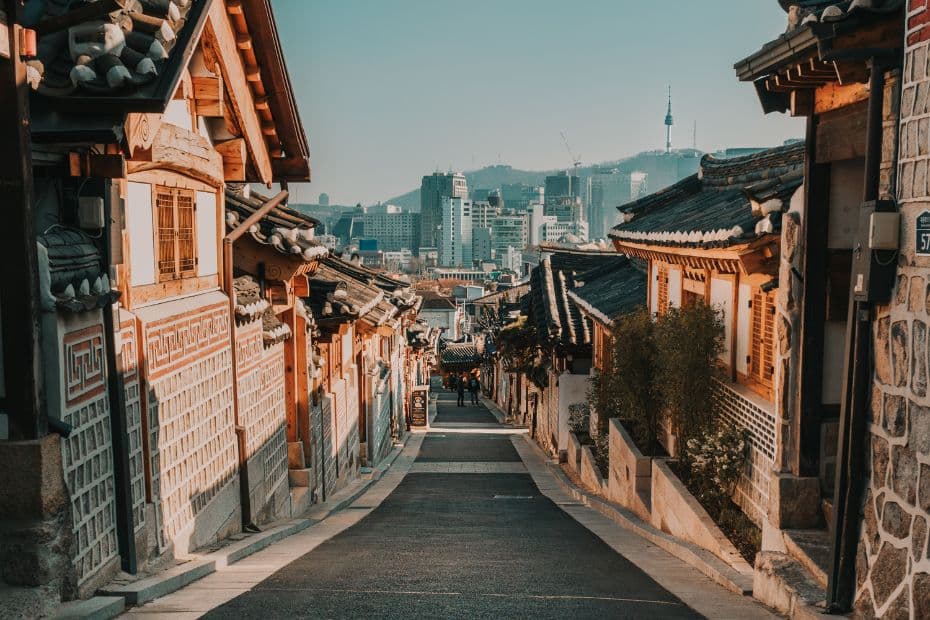
The next few sections of this South Korea travel guide will help you figure out what you want to do and see on your travels. This first section will give you a brief introduction to the best places to visit in Korea, including the major cities, tourist hotspots, and unique areas that you’re sure to love.
Here are the best places to visit in Korea:

Seoul: Korea’s Capital
Seoul is Korea’s vibrant, bustling capital and truly a must-see for any first-time visitor to Korea. There is so much to see and do in Seoul that you could easily spend a week or more exploring the city and not get bored. You will find yourself falling in love with the city for different reasons. Maybe it’s the friendly people, the deliciously cheap street eats, the way things just work, the hidden murals on old buildings down side streets, the feeling of safety even in a big city, or the historic sights creeping out from modern buildings. Seoul includes everything Korea has to offer, plus a lot more you won’t find elsewhere.
What To See In Seoul
Here are 10 great places to visit in Seoul:
- Gyeongbokgung Palace
- Bukchon Hanok Village
- Myeongdong Street Markets
- Lotte World Tower & Seokchon Lake
- Dongdaemun Design Plaza & Markets
- Yeouido Han River Park & Cruise
- Secret Garden (Changdeokgung Palace)
- N Seoul Tower & Namsan Mountain
- COEX Mall & Bongeunsa Temple
- Bukhansan National Park

Busan: Big Coastal City
While Seoul is a showcase of all things Korean, Busan is unashamedly its own city and a celebration of coastal life and local culture. Busan is famous for fresh seafood, traditional markets, great beaches, big festivals, movies, temples, and places to explore the coast. Beaches are popular places to visit in Busan, along with cliff-side walkways with views over the ocean. Central Busan is a lively spot with lots of entertainment and markets to enjoy, including a famous fish market where you can choose your own lunch and then eat it. Busan is spread out and deserves several days to explore it properly.
What To See In Busan
Here are 10 great places to visit in Busan:
- Haeundae Beach & Beach Train
- Jagalchi Fish Market
- Gamcheon Culture Village
- Haedong Yonggungsa Temple
- Songdo Beach & Cable Car
- Huinnyeoul Culture Village
- BIFF Square & Centum City Mall
- Oryukdo Skywalk & Coastal Paths
- Lotte World Busan
- Busan X The Sky Observatory

Jeju Island: Natural Wonder
Jeju Island is a gorgeous island created from a volcano rising out of the ocean 2 million years ago. Today it’s one of the New 7 Natural Wonders of Nature and deservedly so. The lush island is packed with pine trees, tangerines, rolling hills and fields, cacti, and jet black volcanic rock tumbled all around. You can relax on a beach, go horse riding, explore ancient lava tubes, scuba dive, climb to the volcano’s peak, chill in a beach-side cafe, explore traditional markets, learn about local culture, and lots more. The island has two main cities, but the attractions are spread out along the coast.
What to See On Jeju Island
Here are 10 great places to visit on Jeju Island:
- Hallasan Mountain (Volcano)
- Seongsan Ilchulbong Sunrise Peak
- Hyeopjae & Hamdeok Beaches
- Seogwipo Maeil Olle Market
- Jeju Folk Village
- Yakcheonsa Coastal Buddhist Temple
- Jungmun Beach & Jusangjeolli Cliff
- O’Sulloc Green Tea Museum
- Cheonjiyeon & Jeongbang Waterfalls
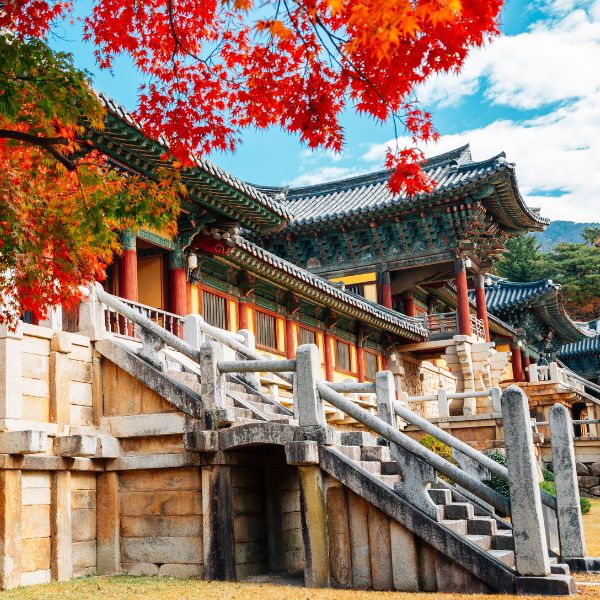
Gyeongju: Historic Capital
Gyeongju , the former capital of the Shilla Kingdom in ancient Korea, is a true treasure trove of UNESCO World Heritage sites, as well as local culture, history, and natural beauty. Described as an outdoor museum, you can see many of the big attractions in the Gyeongju Historic Area, including the 1,400 year Cheomseongdae Observatory . There’s so much to see in Gyeongju outside this area though, including the impressive Bulguksa Temple, one of the best Buddhist temples in Korea. There’s also the Bomun Lake Tourist District, a dreamy sight during cherry blossom season.
What To See In Gyeongju
Here are 10 great places to visit in Gyeongju:
- Bulguksa Temple & Seokguram Shrine
- Cheomseongdae Observatory
- Donggung Palace & Wolji Pond
- Yangdong Folk Village
- Hwangnidangil Hanok Street
- Daereungwon Tomb Complex
- Bomun Lake Tourist Complex
- Woljeonggyo Bridge
- Gyeongju National Museum
- Gyochon Traditional Hanok Village
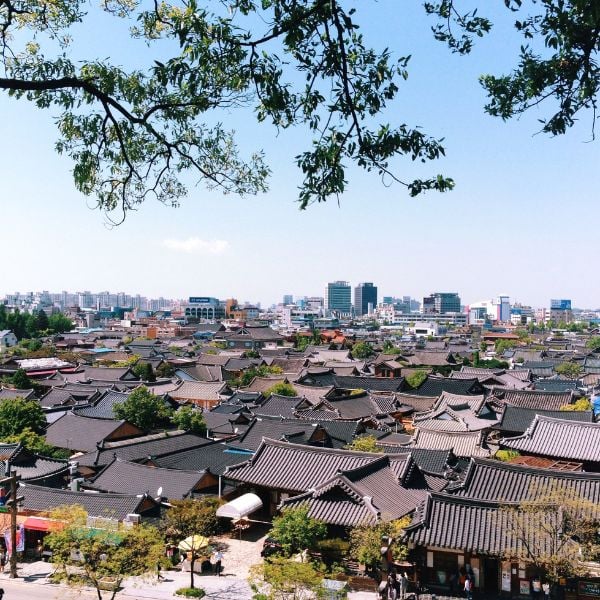
Jeonju: Traditional Views & Food
Jeonju is the perfect destination for a day trip from Seoul and has most of its main attractions in one area of the city. What can you see in Jeonju? The main attraction is the gigantic Jeonju Hanok Village , featuring more than 700 traditional hanok houses. You can dress up in Korean hanbok, dine on Jeonju’s famous bibimbap in an old restaurant, and see how life in Korea used to be. There are plenty of other sights nearby, including a traditional market, pretty river, and the rather unusual Jaman Mural Village.
What To See In Jeonju
Here are 5 great places to visit in Jeonju:
- Jeonju Hanok Village
- Jeongdong Catholic Church
- Gyeonggijeon Shrine
- Nambu Traditional Market
- Jaman Mural Village
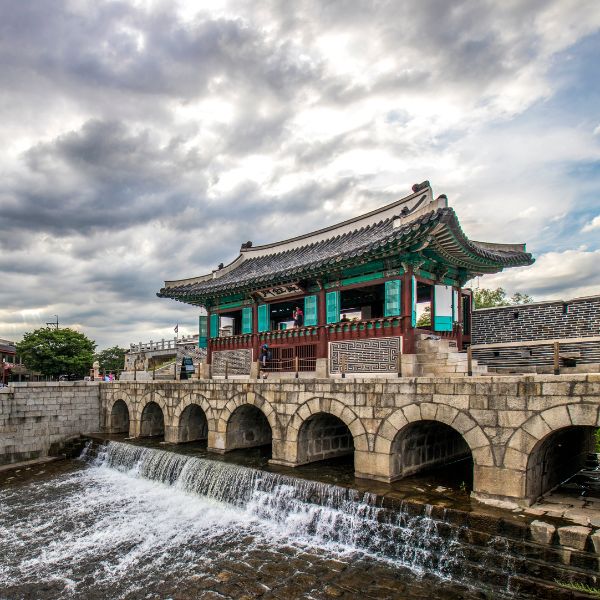
Suwon: Fortress City
Suwon is another city close to Seoul that you can visit in a day and see many interesting and unique sights. The main draw of Suwon is the Hwaseong Fortress and the fortress walls, which are still intact and run for 6km around the city. Inside this fortress you’ll find lots of museums, historic buildings, parks, and activities, such as archery. There are often cultural festivals in this area, too. Surprisingly, Suwon is the best place to get KFC (Korean Fried Chicken). There’s a whole street dedicated to making it.
What to See In Suwon
Here are 5 great places to visit in Suwon:
- Hwaseong Fortress & Fortress Walls
- Hwaseong Haenggung & Haengridan Gil
- Fried Chicken Street
- Korean Folk Village
- Gwanggyo Lake Park
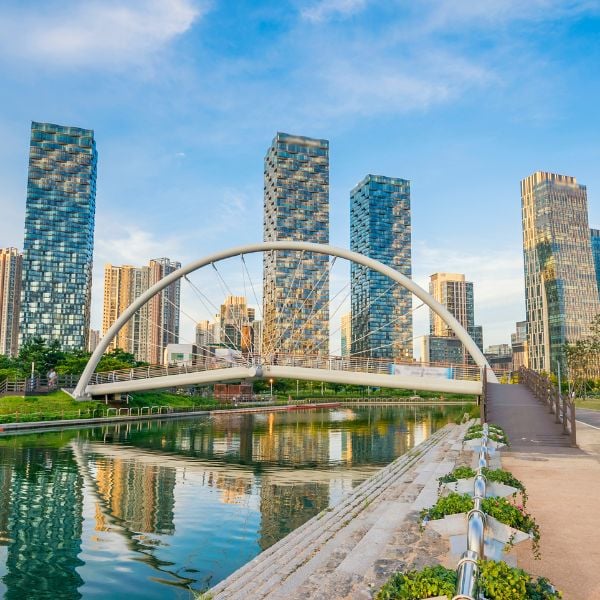
Incheon: Modern City With Islands
Incheon is one of Korea’s largest cities, but is sadly ignored as it’s right next to Seoul and most people think it’s just there for the airport. That’s not true at all and there’s plenty to see and do in Incheon. Described as a futuristic city, Incheon is at the front of Korea’s push to become an ultra-modern country and nowhere shows that more than Songdo Central Park . The traditional side of Incheon is also worth exploring, including the Chinatown, which is home to Korea’s most popular student food – jajangmyeon . If you want to explore a lesser-seen side of Korea, check out the islands near Incheon to see ancient fortresses, temples, and charming sights.
What to See In Incheon
Here are 5 great places to visit in Incheon:
- Songdo Central Park
- Incheon Chinatown
- Wolmido Island
- Incheon Grand Park
- Ganghwa Jeondeungsa Temple
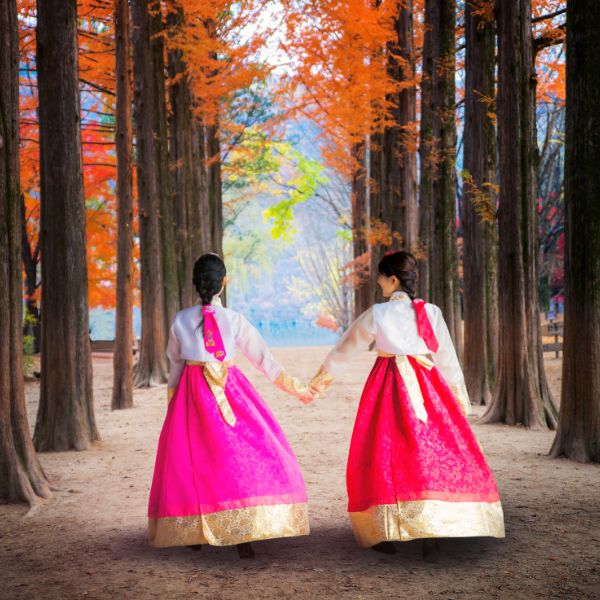
Gapyeong County: Tourists Treats
Gapyeong County is a rural part of Korea just outside Seoul that is one of the most popular day trip destinations for visitors and locals alike. Inside Gapyeong County is the lovely Garden of Morning Calm , a beautiful sculpted garden that showcases traditional Korean buildings set amongst thousands of different plants and trees. There’s also Nami Island , an ever-popular attraction that has long tree-lined streets to explore, woodland animals, bike paths, and even a zip line to the island. You can also visit Petite France, a recreation of a French village, Gapyeong Rail Bike Park, and Cheongpyeong Lake, and many other attractions in Gapyeong.
What To See In Gapyeong
Here are 5 great places to visit in Gapyeong:
- Nami Island
- Garden of Morning Calm
- Petite France
- Gapyeong Rail Bike Park
- Cheongpyeong Lake
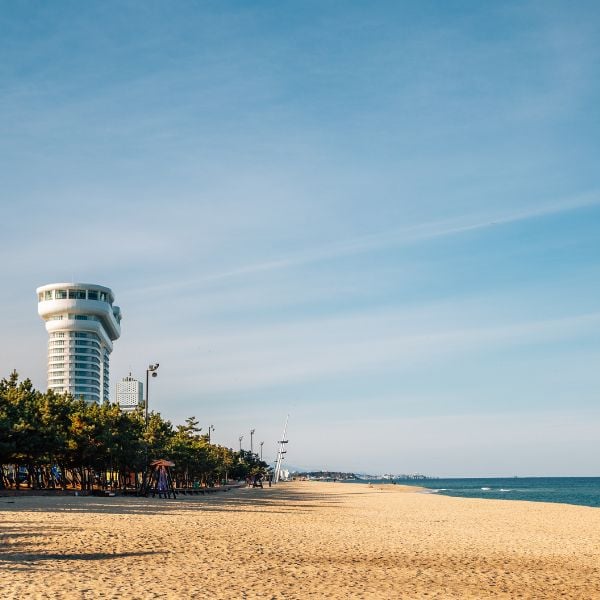
North-East Coast: Amazing Beaches
The north-east coastal region of Korea, spreading between Sokcho and Gangneung , features some of Korea’s most popular summer seaside resorts and beaches. The wide, sandy beaches are perfect for water sports, working on your tan, and sitting at night listening to local musicians perform BTS covers and their own tunes. Sokcho deserves at least two days to explore, more if you plan to visit nearby Seoraksan National Park , one of Korea’s best places to see autumn foliage. Gangneung is where to see cherry blossoms in spring, sit and relax at a seaside cafe at Gangneung Coffee Street , and enjoy beach life.
What To See On The North-East
Here are 5 great places in north-east Korea:
- Sokcho Beach
- Gangneung Beach
- Seoraksan National Park
- Yangyang Surfyy Beach
- Gangneung Coffee Street
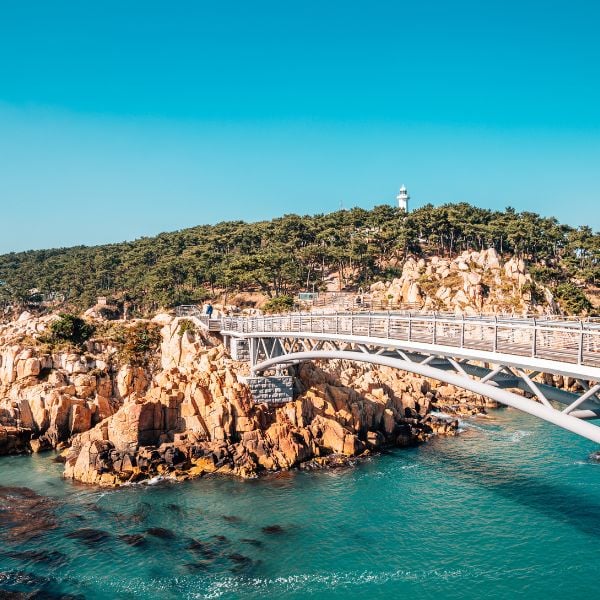
East Coast: Harbour Cities
Ulsan and Pohang are two industrial cities that don’t get enough attention, but are ideal for a weekend visit once you’ve explored other top sights. These coastal cities both have good beaches, coastal walks, and green spots, including a pretty bamboo forest in Ulsan. In Pohang, you can see the dizzying Space Walk , which looks out over the city and ocean. There’s also a former Japanese district with old buildings, and the famous Homigot Sunrise Square where you can watch the first sunrise of the year. Ulsan is famous for whaling and visitors should check out the charming Jangsaengpo Whale Museum and Daewangam Park.
What To See On The East Coast
Here are 5 great places on Korea’s East Coast:
- Yeongildae Beach & Space Walk
- Ilsan Beach & Daewangam Park
- Jangsaengpo Whale Museum
- Homigot Sunrise Square
- Taehwagang National Garden
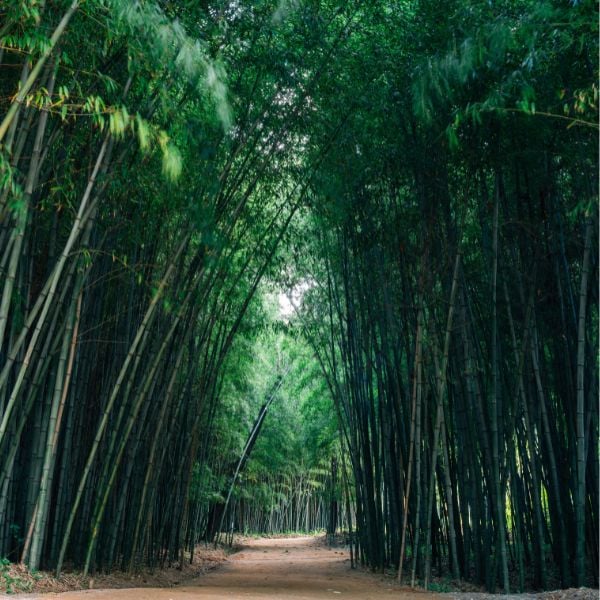
South-West: Iconic Rural Destinations
South-west Korea is a long way from most travellers’ typical route, but this area is worth visiting if you have time. Gwangju , one of Korea’s largest cities, is hidden away down here and surrounded by natural beauty, including the Juknokwon Bamboo Forest , Boseong Green Tea Fields, and Suncheon Bay Nature Reserve. If you plan to hire a car , these spots will show you a completely different side to Korea. Gwangju, too, which is a fun city and the birthplace of Korean democracy. Hidden in the far corner of Korea is Mokpo, a lovely coastal city that has a new cable car carrying you over the ocean.
What to See In The South-West
Here are 5 great places in south-west Korea:
- Damyang Juknokwon Bamboo Forest
- Boseong Green Tea Fields
- Gwangju Culture Park & Penguin Village
- Suncheon Bay Nature Reserve
- Mokpo Marine Cable Car
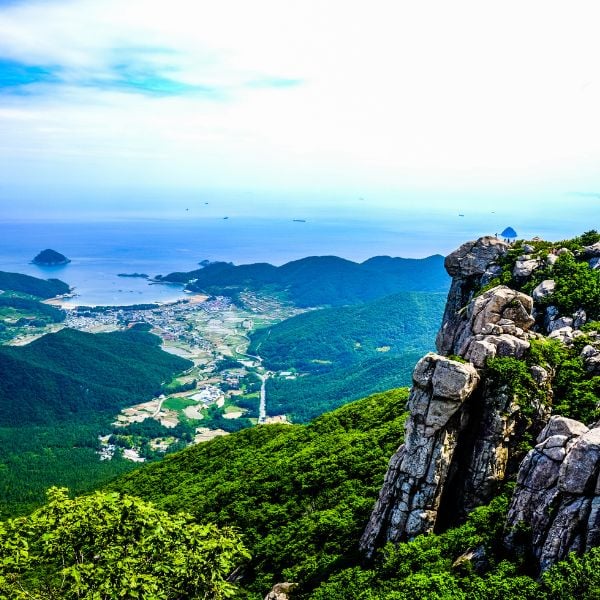
South Coast Islands: Summer Getaways
Best explored during the hot summer months and early autumn, the south coast islands in Korea, which span from Busan to Mokpo, are where Koreans spend their summer holidays. The most popular destinations here are Geoje, Tongyeong, Yeosu, Namhae, and Goheung and each offers winding coastal paths, beaches, natural beauty, and fun summer activities. The best way to see these islands is with a rented car or by bike, riding around the coast visiting a few different beaches and attractions. Don’t expect too many cultural sights, instead you’ll find luges, gardens, water sports, and lots of fun.
What to See On The South Coast
Here are 5 great places on Korea’s South Coast:
- Dolsan Park & Cable Car
- Namhae Geumsan Boriam Hermitage
- Hallyeohaesang National Park
- Oedo-Botania Botanical Garden
- Skyline Luge Tongyeong
As you can see, there are many great places to visit in Korea. Korea is truly a country of undiscovered wonders that people aren’t aware of. Seoul is an incredible place to visit, but there’s so much more to see. That’s why I try to include lesser-known places in this South Korea travel guide.
The list above covers a lot of the most popular or tour-worthy destinations in Korea, but there are still more places I could recommend, such as Andong (home to the mask dance festival), Gunsan (port town with a retro vibe), Daegu (big city with historic sights), Daejeon , and many more.
Besides cities and towns in Korea, there are also 18 national parks to explore, thousands of mountains, Buddhist temples, beaches, bike routes, campsites, and so much more. I’ll include a few of each of these in the next few sections of this South Korea travel guide.
Best Day Tours From Seoul In 2024

Taking a day tour while you’re staying in Seoul is a great way to see more of Korea’s top attractions without the hassle of moving hotels to somewhere new. The 10 day tours from Seoul below can all be done in a day or less and can even be combined with other activities in the same day.
I don’t want to include every day tour available in this South Korea travel guide as there isn’t enough room to talk about them all. If you want to find more day tours, I recommend looking at the options available through tour providers such as Klook , Viator , and Get Your Guide .
Please note : There are many day tours from Seoul and they come with various prices. I recommend avoiding the very cheapest as these will often waste your time by taking you to some overpriced gift shop area and pressuring you to buy souvenirs or rushing you through too many attractions.
Here are 10 great day tours from Seoul:
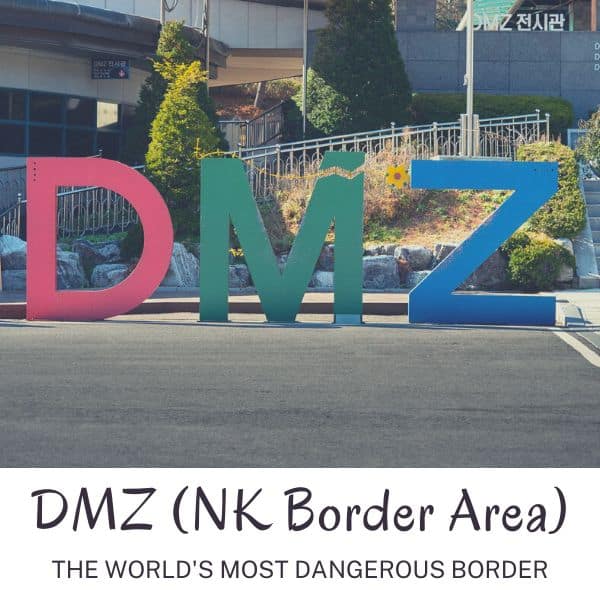
Why Visit The DMZ
The DMZ, the demilitarised zone between North & South Korea is a truly unique place to visit when you’re in Korea. There are several different locations to see in this area, each reflecting the bitter struggle between the two Korea’s in the ongoing Korean War. Some of the highlights are the 3rd Tunnel, Dora Observatory, Dorasan Station, Gamaksan Suspension Bridge, and the Imjingak Park. There’s also the Panmunjom Truce Village where you can walk into North Korea, but this is currently closed. Tours are required to travel to certain parts of the DMZ.
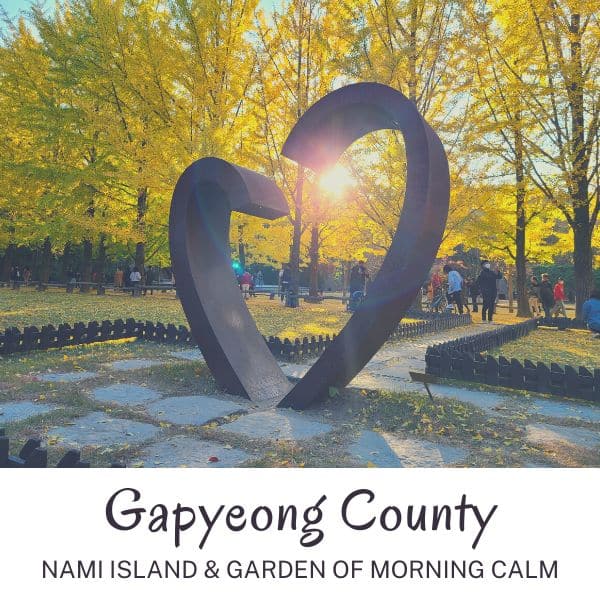
Why Visit Gapyeong County
Gapyeong County is home to Nami Island, the Garden of Morning Calm, Petite France, Gapyeong Rail Bike Park, and several other fun attractions. Nami Island and the Garden of Morning Calm are the most popular and can both be visited in a day. You can witness beautiful scenes at these destinations, especially during cherry blossom season (April) and autumn foliage season (October). Tours from Seoul to Gapyeong County are convenient and can take you to multiple places in one day without the hassle of buses and finding your own way.
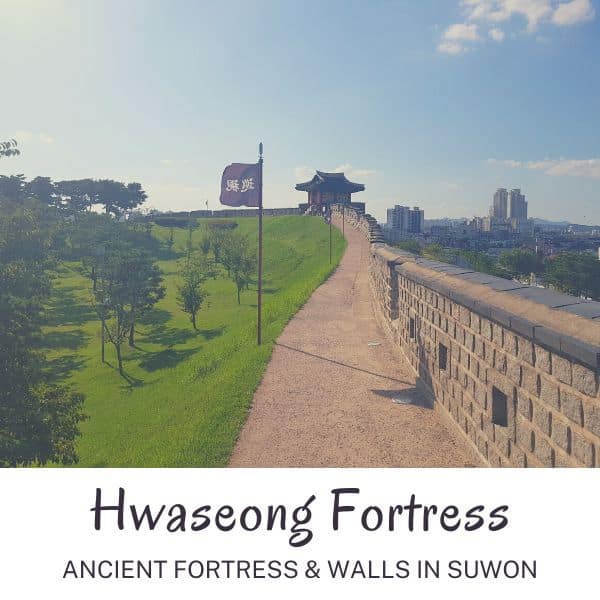
Why Visit Hwaseong Fortress
Hwaseong Fortress and its fortress walls offer a unique chance to see what life was like in Korea 200 years ago. Not only can you walk the full length of the walls around the city, you can also try archery and other traditional activities in the fortress grounds. There are many museums, fortress buildings, and exhibitions showing how people lived in this period. You can also enjoy the beautiful ponds and streams that run through the palace with traditional Korean restaurants and cafes looking out over these areas.
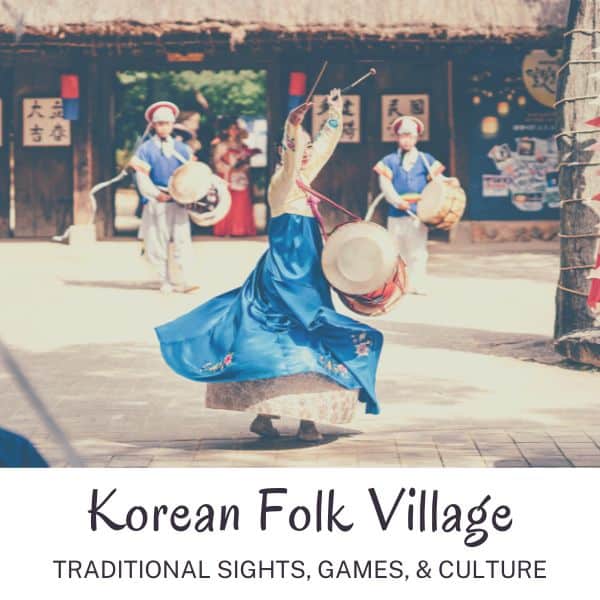
Why Visit Korean Folk Village
Discover traditional Korean life at the Korean Folk Village in Yongin during a day trip from Seoul. Walk through dozens of recreated farm buildings, government offices, academies, shops, smiths, schools, and other traditional buildings from Korea’s past to get a feel for how people lived at this time. Actors dressed in traditional Joseon-era costumes bring the scenes to life. You can try fun activities, such as mask carving, horse riding, and archery. Witness exciting festivals and cultural performances, too.

Why Visit Jeonju Hanok Village
A day trip to the Jeonju Hanok Village in Jeonju is a great way to experience various traditional Korean cultural activities in a beautiful setting. This sprawling hanok village has over 700 traditional buildings for you to explore, dine in, or even stay in. Make sure you rent hanbok in Jeonju so you look like Korean royalty and make memorable photos during your trip. Whilst you’re in Jeonju Hanok Village, you can try local delights such as Jeonju bibimbap and PNB chocopies. Also check out the traditional Nambu Market and Jeongdong Catholic Church.

Why Visit Alpaca World
When you travel to Korea, you may not think about seeing alpacas, which are from an entirely different continent. But Korea’s love of all things cute means that these furry friends have become very popular in Korea and have their own theme park a few hours from Seoul. There are dozens of cuddly alpacas to see, feed, and play with at Alpaca World , as well as hundreds of other cute critters such as ponies, rabbits, deer, goats, fennec foxes, and more. There are 17 separate areas to explore in Alpaca World and it’ll provide hours of fun for the whole family.
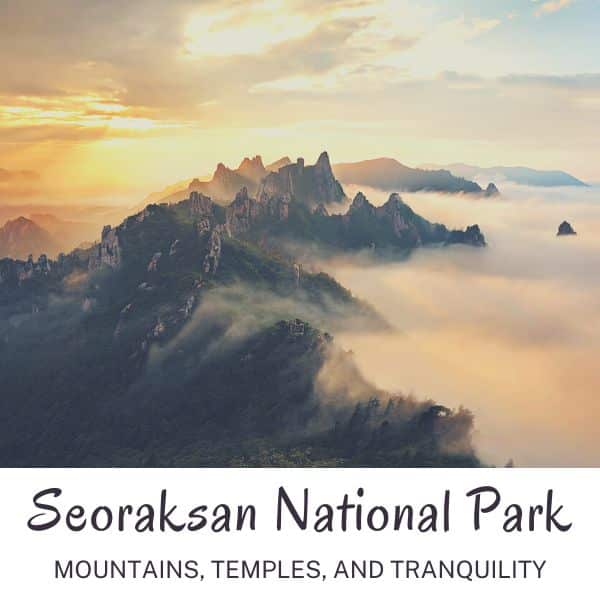
Why Visit Seoraksan
Seoraksan National Park on Korea’s east coast is a great day trip from Seoul for those who want to see mountain peaks, leafy valleys, stony rivers, and a gigantic Buddha. Even if you’re not a keen hiker, you can explore lots of the park’s valley pathways easily, or reach the top thanks to the convenient cable car. See the sights from the observatory and check out the small temple in the clouds. Make sure you try haemul pajeon (seafood pancake) and makgeolli (rice wine). It’s the traditional meal Koreans enjoy after hiking.
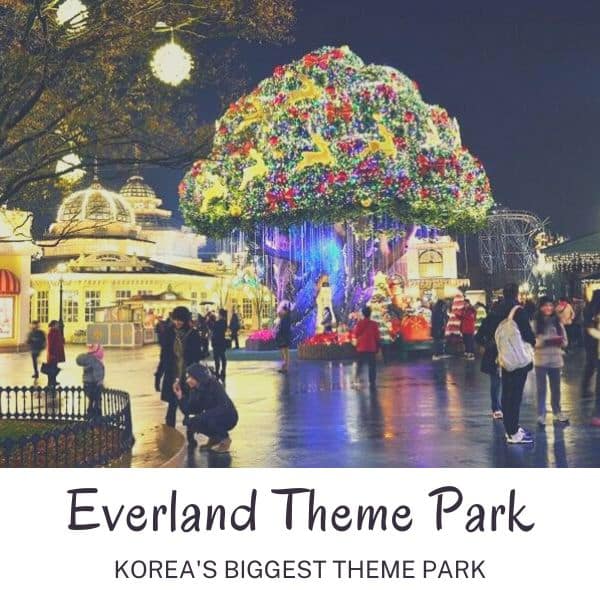
Why Visit Everland
Everland is Korea’s biggest theme park and is packed with attractions for everyone to enjoy. Thrill seekers will love the rollercoasters, such as T Express (the world’s 4th steepest rollercoaster) and many more exciting rides. Check out the Zootopia section to see wild animals and wild rides, or the Plantopia section for floral beauty, romantic walkways, and seasonal delights. There are plenty of attractions, cultural performances, entertainments, and seasonal events to keep you amused all day long.
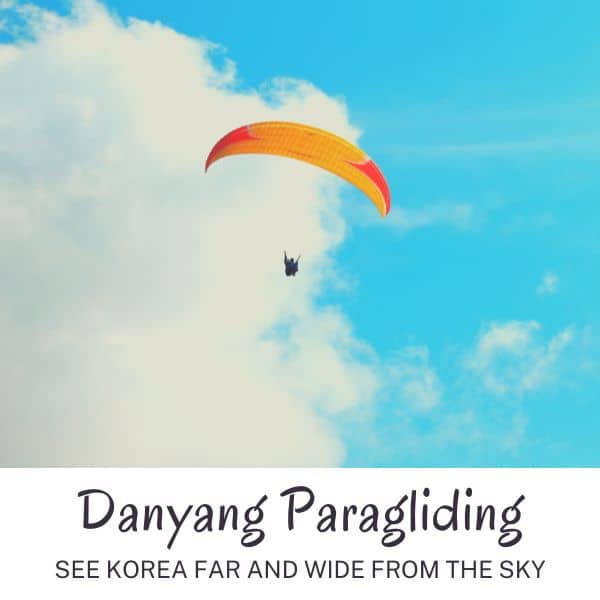
Why Visit Danyang
A great way to see Korea’s countryside is with a day trip to Danyang to enjoy the rush of sailing over valleys and beside mountains while tandem paragliding. Feel the wind in your face and the sensation of riding the air currents as you pass over the many delightful views of Danyang. You can enjoy other activities in this area, such as the Mancheonha Skywalk , a clifftop lookout with incredible views, riding an alpine coaster, and zooming along a zip line. The perfect day tour from Seoul for thrill seekers.
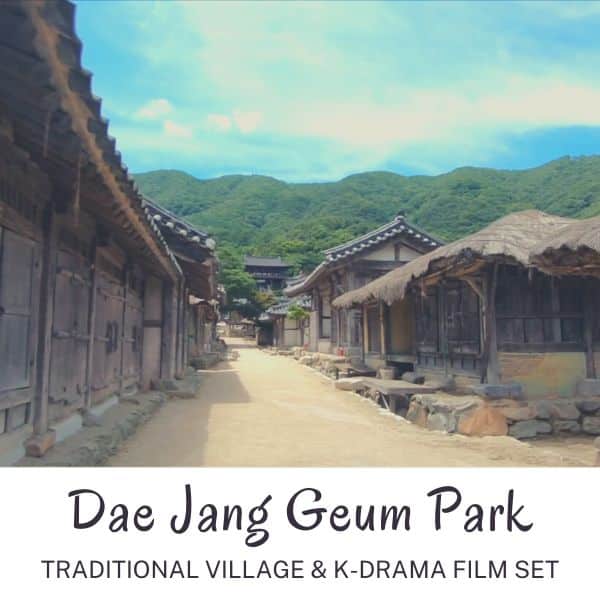
Why Visit Dae Jang Geum Park
Fans of Korean period dramas and movies will love a day trip to Dae Jang Geum Park in Yongin. This is the largest historical drama filming set in Korea and was used to film MBC productions such as ‘Wind in the Palace’ and ‘The Great Queen Seondeok’, as well as K-Pop videos including Daechwita by Suga from BTS. If you’re lucky, you may see filming going on here. But even if you don’t, it’s a fun place for those who want to learn more about Korea’s history and take some cool pictures in a real movie set.
I’ve linked to tours provided by reliable tour companies in Korea. If you would rather book a tour through a local guide, contact Jerry Heng or Andrew Chung Hanbyul . They’re freelance guides with years of experience offering tours in Korea and both offer amazing service.
These places are accessible by public transport, but may take much longer than a tour would do, wasting your precious time. Check out my guide for getting to Nami Island to help you navigate Gapyeong County. For other destinations, I would recommend a tour – it’s more practical.
Best Sights To See In Korea In 2024
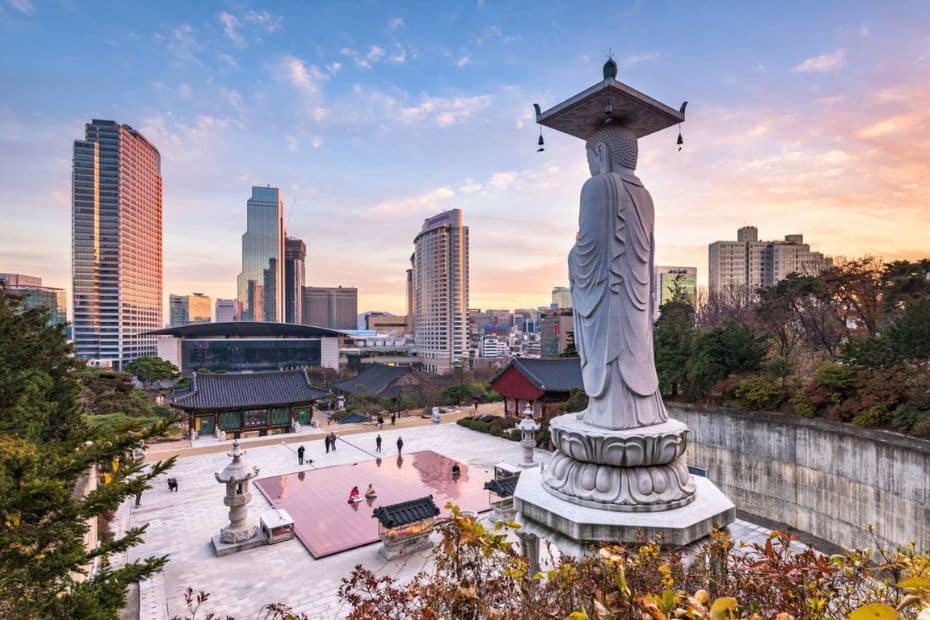
South Korea truly has something for everyone. There’s so much I want to include in this South Korea travel guide, which is why this section is full of different sights to see and explore. However, to keep things short and simple, I’ll just list them, not give full details about each one.
Whether you’re travelling to Korea to learn about Korean culture or history, to see Korea’s impressive landmarks, to enjoy family fun attractions, to hop from cafe to cafe, to immerse yourself in nature, or simply to eat and shop, then you’ll definitely find something for you in this section.
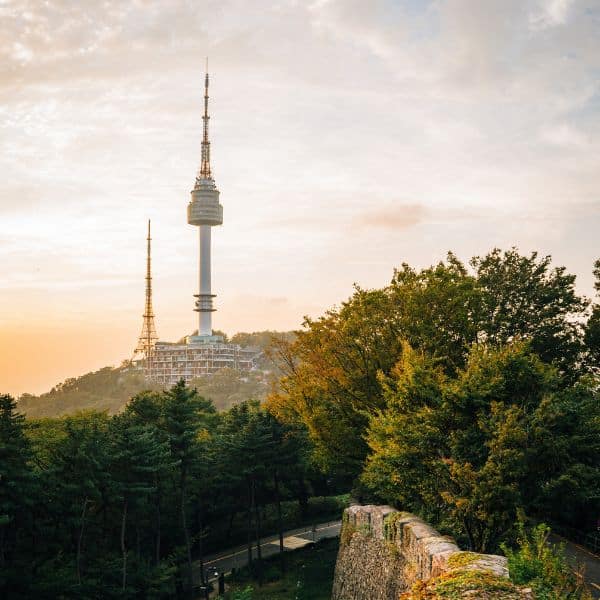
Famous Landmarks In Korea
Landmarks and iconic buildings are often top of a traveller’s bucket list for Korea as they provide great photo opportunities, showcase the best of the country, and offer fantastic views. Seoul has many top landmarks, but you can see plenty of other sights outside of the capital, too.
Here are 10 famous landmarks in Korea:
- Lotte World Tower (Seoul)
- N Seoul Tower (Seoul)
- Dongdaemun Design Plaza (Seoul)
- Cheonggyecheon Stream (Seoul)
- DMZ Area (near Seoul)
- Nami Island (Gapyeong County)
- Gamcheon Culture Village (Busan)
- Seongsan Ilchulbong (Jeju)
- Homigot Sunrise Square (Pohang)
- Banwol Purple Island (West Coast)
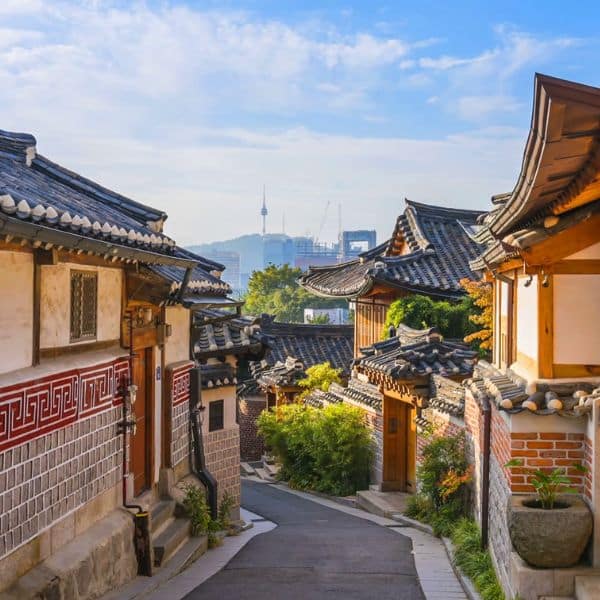
Historic Sights In Korea
Discover life in the Joseon period and before in Korea’s many captivating historic sights, including royal palaces, Buddhist temples, fortresses, and hanok villages. There are so many amazing historic sights to see in Korea, with each city having something to see.
Here are 10 historic sights in Korea:
- Bukchon Hanok Village (Seoul)
- Gyeongbokgung Palace (Seoul)
- The Secret Garden (Seoul)
- Seoul Fortress Walls (Seoul)
- Hwaseong Fortress (Suwon)
- Bulguksa Temple (Gyeongju)
- Gyeongju Historic Area (Gyeongju)
- Jeonju Hanok Village (Jeonju)
- Haedong Yonggungsa Temple (Busan)
- Andong Hahoe Village (Andong)
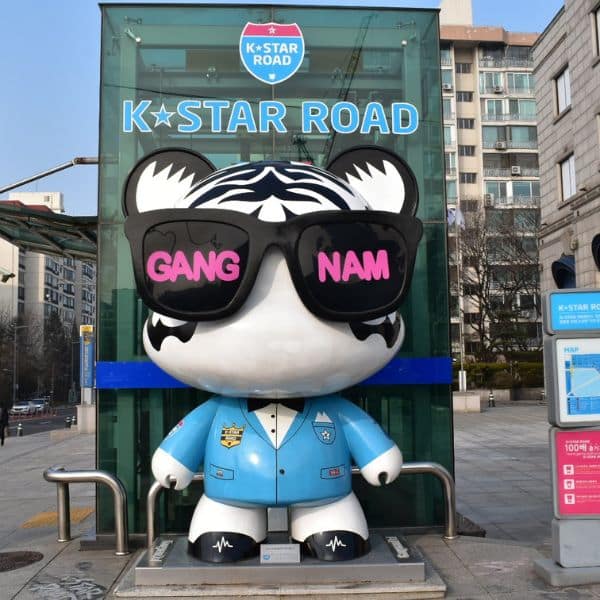

Korean Modern Cultural Sights
Fans of BTS, K-Dramas, Korean movies, and modern Korean culture in general have a lot to see and do in Korea. As well as famous filming locations across the country, these modern cultural sights will entertain, inform, and provide great destinations to visit.
Here are 10 modern cultural sights in Korea:
- Hallyu K Star Road (Seoul)
- K-Style Hub (Seoul)
- Hongik Uni. Station Area (Seoul)
- COEX Artium (Seoul)
- Asia Culture Centre (Gwangju)
- BIFF Square (Busan)
- Dae Jang Geum Park (Yongin)
- Sunshine Studio (Nonsan)
- Kim Gwang-Seok Street (Daegu)
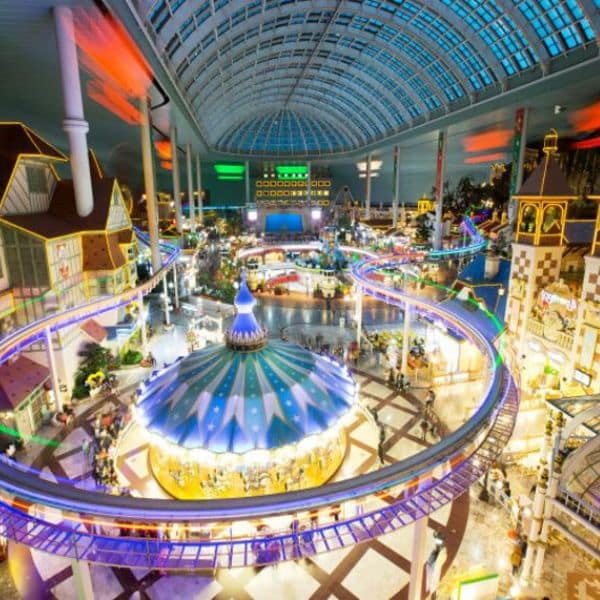
Family Fun Attractions In Korea
Families travelling to Korea have plenty of things to see and do and ways to enjoy spending time together. There’s no Disneyworld or Universal Studios in Korea, but there are plenty of great alternatives, as well as places for children to explore, learn, and discover.
Here are 10 family fun attractions in Korea:
- Lotte World Adventure (Seoul)
- Everland Theme Park (Yongin)
- Seoul Grand Park & Zoo (Seoul)
- Alive Museum & Dynamic Maze (Seoul)
- Seoul Children’s Museum (Seoul)
- Zoolung Zoolung (Seoul)
- Sea Life Busan Aquarium (Busan)
- Jeju Dinosaur Island (Jeju Island)
- Alpaca World (Gangwon Province)
- Skyline Luge & Lotte World (Busan)

Korean Museums & Galleries
Travellers to Korea who want to learn about Korea’s history, culture, and art will love Korea’s impressive museums and galleries. These are great places to visit when the weather is bad and you might be surprised at how much there is to learn about Korea’s past.
Here are 10 museums & galleries in Korea:
- National Museum of Korea (Seoul)
- War Memorial of Korea (Seoul)
- Seoul Museum of Art (Seoul)
- Seoul Museum of History (Seoul)
- Seodaemun Prison Museum (Seoul)
- Museum Kimchikan (Seoul)
- National Folk Museum of Korea (Seoul)
- Gyeongju National Museum (Gyeongju)
- National Maritime Museum (Busan)
- Daegu Art Museum (Daegu)
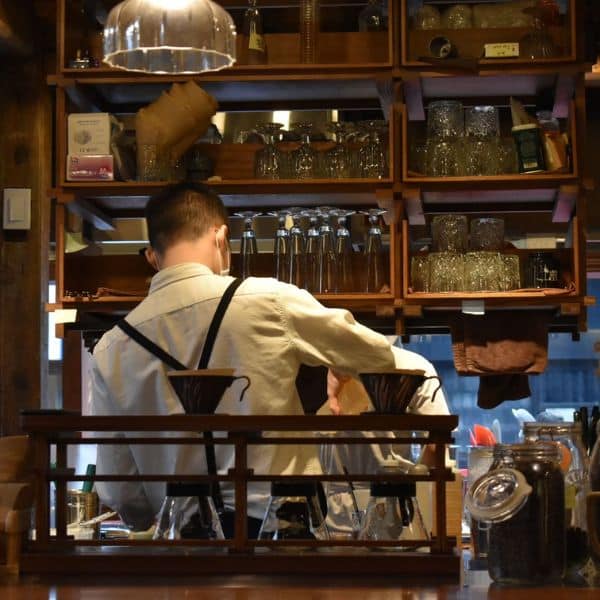
Cafe Areas In Korea
When you need a break from travelling in Korea, visit one of these cosy cafe areas and take time to relax and recharge. Although Korea was traditionally a tea drinking country, cafes are now everywhere and you’ll find photogenic cafes everywhere these days.
Here are 10 cafe areas to visit in Korea:
- Ikseondong Hanok Village (Seoul)
- Gyeongui Line Parks (Seoul)
- Samcheondong Cafe Street (Seoul)
- Sinsa-dong / Garosugil Road (Seoul)
- Jukjeon Cafe Street (Seoul)
- Jeonpo Cafe Street (Busan)
- Haeridangil (Busan)
- Hwangnidangil (Gyeongju)
- Hwaseong Haenggung Area (Suwon)
- Gangneung Coffee Street (Gangneung)
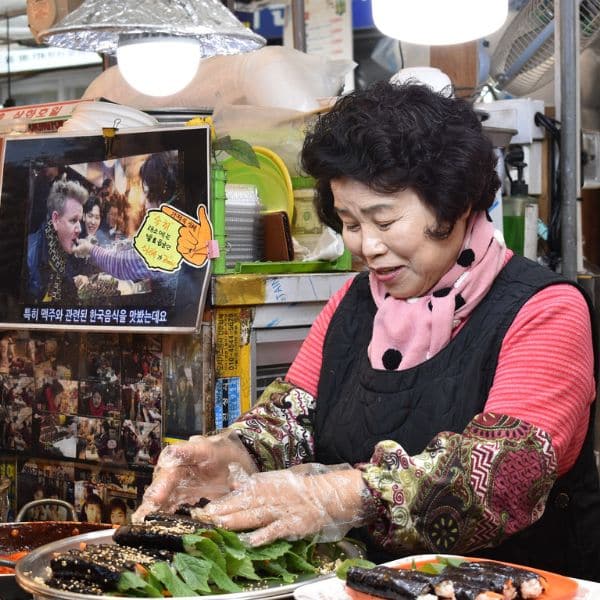
Korean Markets & Malls
If you want the best selection of street food, souvenirs, and bargain shopping options, be sure to visit Korea’s many traditional markets. It’s a cultural experience itself. Korea also has some of the world’s largest malls with a wide variety of Korean and international goods.
Here are 10 markets & malls in Korea:
- Gwangjang Market (Seoul)
- Dongaemun Market (Seoul)
- Hongdae Shopping Street (Seoul)
- Starfield COEX Mall (Seoul)
- Jagalchi Fish Market (Busan)
- Seomyeon Underground Mall (Busan)
- Centum City Mall (Busan)
- Seogwipo Maeil Olle Market (Jeju)
- Nambu Market (Jeonju)
- Paju Premium Outlets (Paju)

Korean Natural Wonders
Korea is a country covered in mountains, waterfalls, valleys, rice terraces, and beautiful natural sights. Make time to visit some of these natural wonders when you visit Korea and you’ll be amazed at the incredible views you can find. The national parks are truly breathtaking.
Here are 10 natural wonders to see in Korea:
- Hallasan Mountain (Jeju)
- Jirisan National Park (Southern Korea)
- Seoraksan National Park (Gyeonggi)
- Garden of Morning Calm (Gapyeong)
- Juknokwon Bamboo Forest (Damyang)
- Boseong Green Tea Fields (Boseong)
- Udo Island (Jeju Island)
- Seongsan Ilchulbong Sunrise Peak (Jeju)
- Hyeopjae Beach (Jeju)
- Suncheon Bay National Park (Suncheon)
These 100 ideas are just the tip of the iceberg for what you can enjoy when travelling to Korea. There’s so much more to discover and I recommend you add some time to your travel plans to explore without a plan. Sometimes the best travel memories come from unexpected discoveries.
Best Activities To Try In Korea In 2024
Often the most memorable moments when travelling come from the experiences we have, not just the places we visit. Visiting a palace is interesting, but visiting a palace while dressed in traditional Korean hanbok , pretending you’re Joseon-era royalty with your friends or family is much more fun.
This section of the South Korea travel guide offers 10 fun activities you can try when you visit Korea. These will give you a good introduction to Korean culture, food, history, and nature. If you want more ideas, check out my list of 50 unique Korean experiences you can only do in Korea.
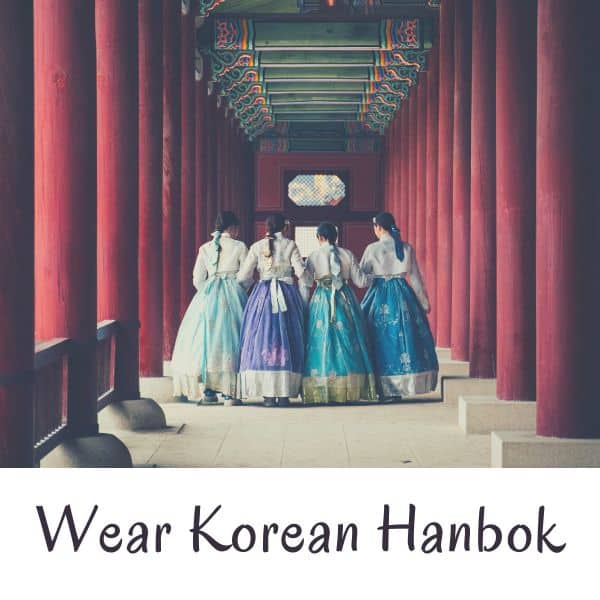
One of the top experiences to try in Korea has to be wearing Korean hanbok. It is available for all members of the family (even pets) and you can rent hanbok near most palaces or hanok villages. The hanbok easily fit over your regular clothes and come in a variety of colourful or traditional designs. You can get hair styling, accessories, and even have a hanbok photoshoot . Rentals can be as short as one hour or up to a full day.
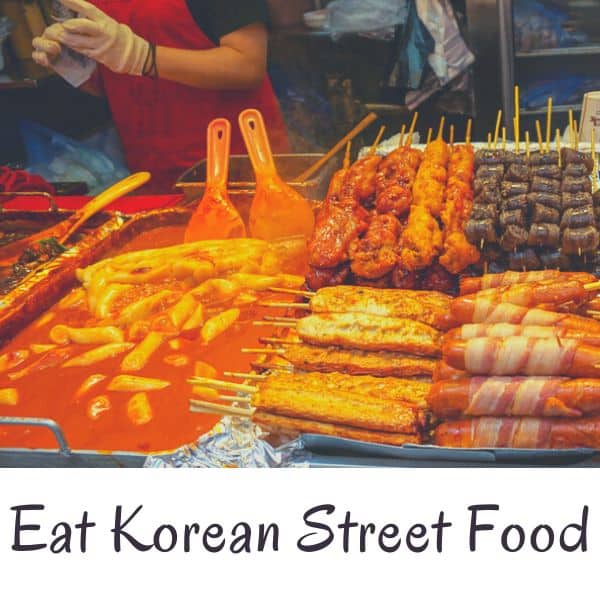
Travellers to Korea can’t say they’ve truly tried Korean cuisine until they’ve eaten Korean street food from a market stall or street vendor. There are many types of Korean street food to sample in Korea, such as savoury snacks like tteokbokki and eomuk , to sweet treats like hotteok and bungeo-ppang . Korean street food is cheap and delicious. It’s usually not that healthy, but always leaves you feeling great. Give it a try.
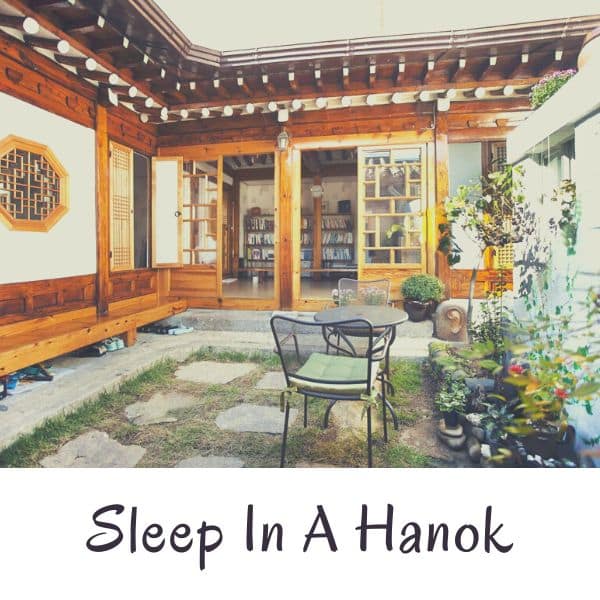
Experience life as a Korean would have in the Joseon-era with a night in a traditional hanok house. A hanok stay is very different from sleeping in a hotel and allows you to try a night on a futon (with underground heating keeping you warm in winter). Slide the doors aside in the morning and walk out onto the wooden decking to enjoy traditional Korean tea at a low table and the sight of the ornately decorated garden. Don’t forget to take your shoes off before you enter.
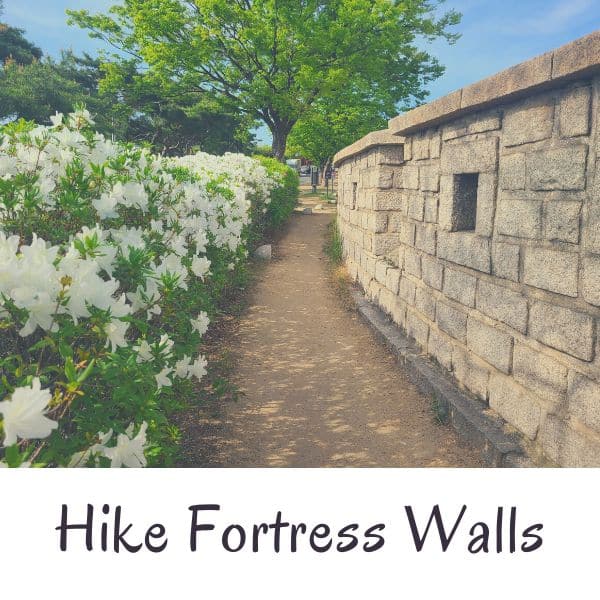
Seoul and other cities in Korea still have fortress walls you can walk or hike along that will offer incredible views of cities and mountains. As you walk along the fortress walls, you begin to imagine what life would have been like as a soldier keeping the city safe from invaders. Nowadays, you can enjoy exercise and sightseeing at the same time. Seoul’s fortress walls are a good place to start, but you can find fortress walls in many other places.
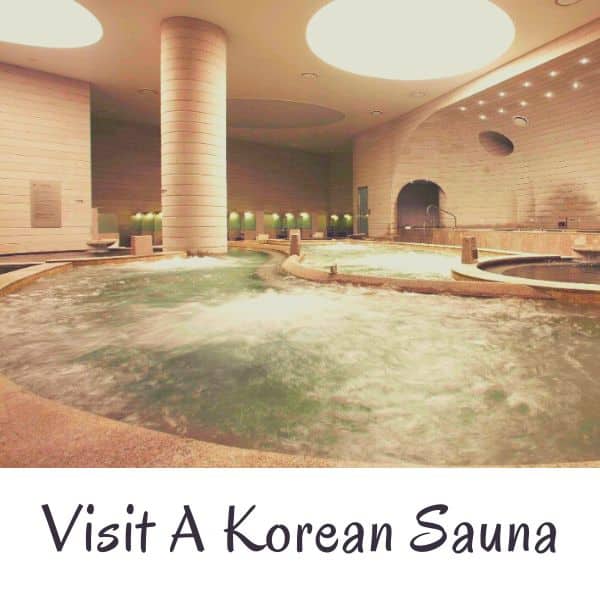
Visiting a Korean sauna might be a bit shocking for first-time travellers to Korea, but it’s a great way to relax and is especially good in winter. When you enter a Korean sauna, you should take off all your clothes, have a shower, and then enter one of the hot baths. Being naked in front of others can be scary for some, but you soon overcome that fear. Korean saunas sometimes have a communal resting area called a jjimjjilbang . These areas require pyjamas and offer snacks, drinks, and places to rest.
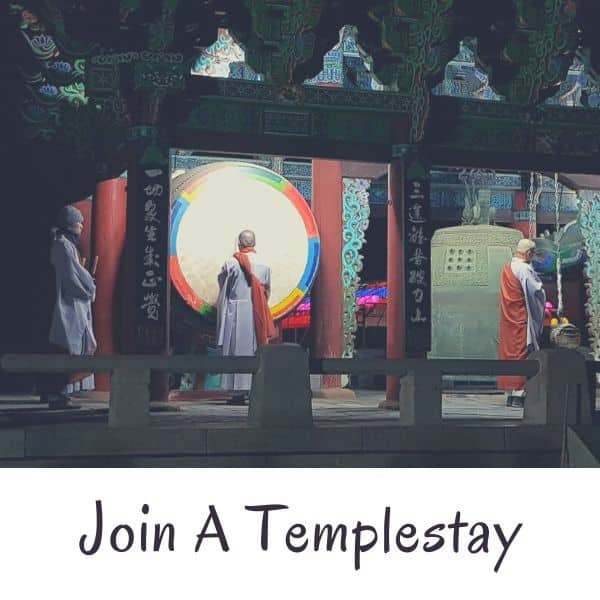
The Cultural Corps of Korean Buddhism have set up a templestay program at dozens of temples across Korea where you spend a day or two at the temple and join in various activities. This is truly a unique experience that you should try in Korea as you get to see customs performed by the monks that aren’t normally shown to the public. You also get to stay overnight at the temple and experience a hanok stay at the same time. Guests can also eat healthy vegan temple food, learn a lot, and chat with the monks.
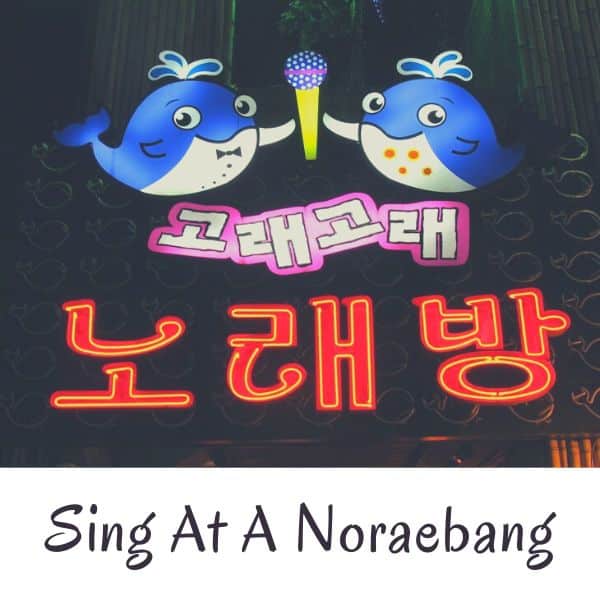
A noraebang is the Korean version of a karaoke room, but is more popular in Korea and is commonly visited by locals and tourists alike. This is a great place to visit in the evening after a big Korean bbq meal and a few drinks. Everyone can relax and belt out their favourite Korean or international tunes together (or alone), shake some tambourines in support, or just watch and enjoy the atmosphere with some drinks. You can find these in every town and city in Korea and they provide a cheap night of fun and drinks.
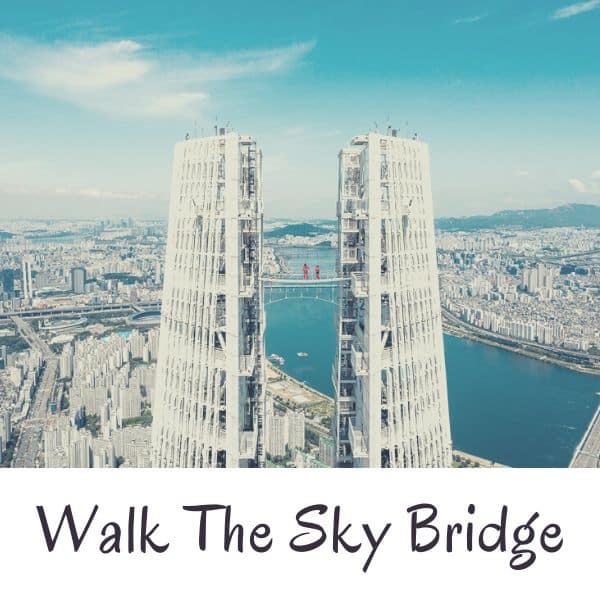
Open since 2020, the Sky Bridge at Lotte World Tower offers unbeatable views of Seoul and a nerve-racking trip above the city. Walk between the two towers at the top of the Lotte World Tower and peer down the 541 metre drop to the city streets below. It’s actually very safe and you’re strapped into a harness as you walk from one side to the other, but this definitely isn’t for the faint-hearted. If you’re not sure you can handle the height, check out the Seoul Sky Observatory on the 117th floor instead.
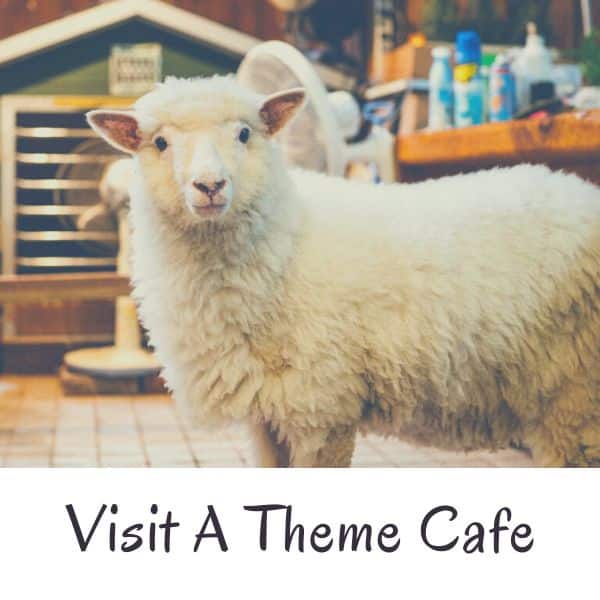
Koreans love to drink coffee and also love cute, unusual things, which is probably why theme cafes have become so popular in Korea. Besides the many cat cafes, there are theme cafes where you can stroke sheep, pet dogs, and see other animals. There’s more to Korea’s theme cafes than just drinking coffee with animals, you can also try drinking from a toilet at the Poop Cafe , paint pictures, build lego, go camping, practice being a wizard, and more. Hongdae in Seoul is the best place to find theme cafes.

Although cafes are replacing Korean tea houses, Korea still grows and drinks lots of tea, especially green tea. You can visit these tea fields in areas such as Boseong and on Jeju Island, both of which have visitor centres and attractions to teach you about the wonderful world of Korean tea. The Daehan Dawon Tea Plantation in Boseong has lush green fields all year round and has been used as a filming location for several Korean shows. The O’sulloc Tea Museum on Jeju Island also has lovely views.
I recommend trying at least a few of these unique activities, they’ll really make your trip to Korea more memorable and offer insights into Korean culture and life. My advice is to be brave when visiting Korea and try new things, even if they seem a bit unusual at first. The same applies to Korean foods.
Best Korean Festivals To Join In 2024
There are dozens of festivals held in Korea each year celebrating the seasons, local products, traditions, culture, and often just for the sake of having fun. Visiting a festival in Korea will offer you a glimpse of how locals celebrate life, culture, and nature and let you join in the fun.
Whenever you visit Korea, there’ll be festivals going on. However, the biggest festivals occur in spring or autumn. As mentioned previously in this South Korea travel guide, these are the best seasons to visit Korea as the weather is pleasant and people are celebrating the end of summer or winter.
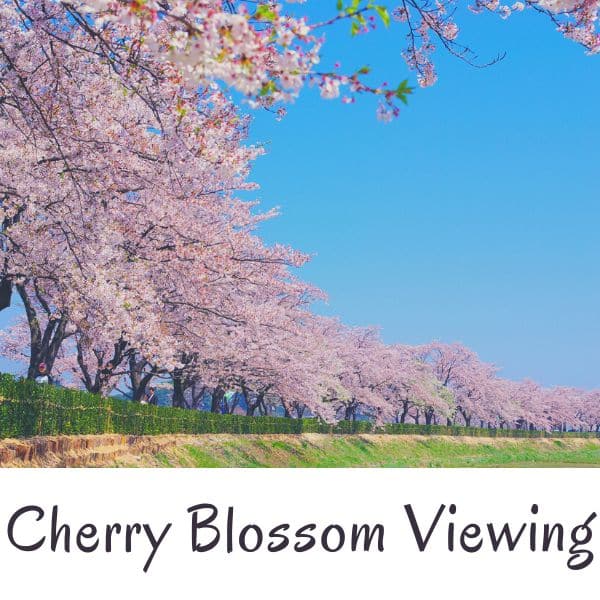
Cherry Blossom Festivals
The cherry blossom festivals in Korea occur in late March and early April and are some of the biggest festivals in Korea. People flock to forests, lakes, and rivers to see the pretty blossoms. The Jinhae Cherry Blossom Festival has over 2 million visitors each year, and even more people visit Seokchon Lake and Yeouido Hangang Park in Seoul. There are many festivals and tours to see cherry blossoms in Korea so you should be able to find a quiet place to enjoy the view.
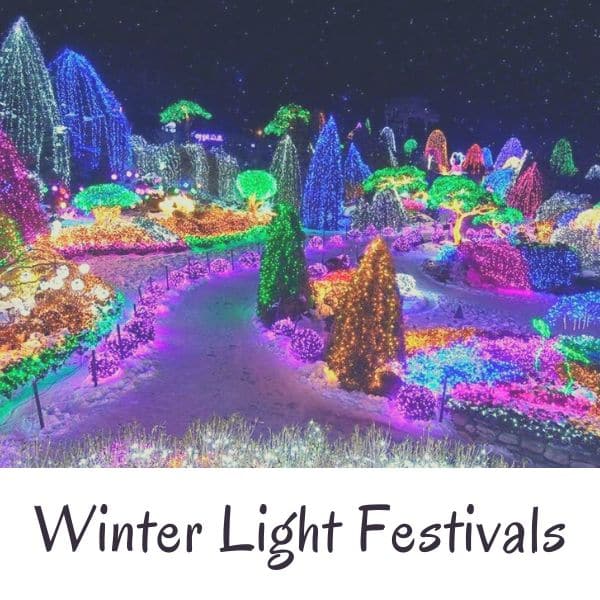
Winter Light Festivals
During the cold, dark days of winter, attractions such as Nami Island, the Garden of Morning Calm, and Herb Island transform into sparkling winter wonderlands with millions of bright lights illuminating them. There are also winter illumination festivals in Korean cities, such as the Haeundae Lighting Festival in Busan, Cheonggyecheon Stream Winter Lights in Seoul, and the Busan Christmas Tree Cultural Festival. When it snows in Korea, these festivals look even more magical.
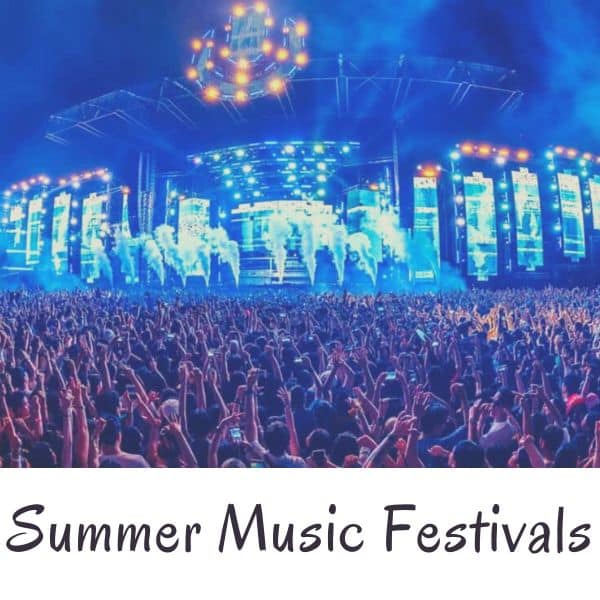
Summer Music Festivals
Summer in Korea is hot, but that doesn’t stop people enjoying day-long music festivals across the country. From chilled jazz festivals like the Seoul Jazz Festival , to action-packed concerts like Psy’s Summer Swag , there are music festivals to suit everyone. This is a popular summer activity in Korea , so be sure to book in advance for ticketed events. If you can’t get tickets, just go to a popular beach in the evening and you’ll usually find musicians performing.
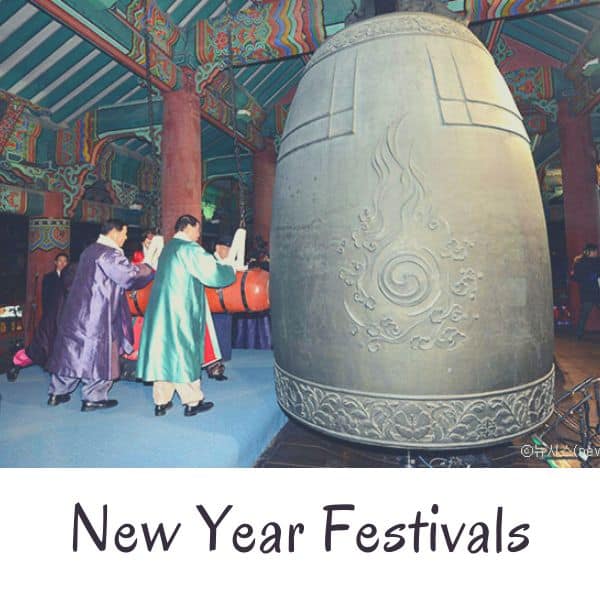
New Year Festivals
There are various festivals in Korea to celebrate the solar new year. New Year’s Eve festivals involve a bell-ringing ceremony where a giant bell is rung at midnight to welcome in the new year. Fireworks festivals are common events in cities across Korea, starting at midnight, too. Koreans celebrate the start of the new year by visiting the East Coast to see the first sunrise of the year at places like Homigot Sunrise Square or Seongsan Ilchulbong on Jeju Island.
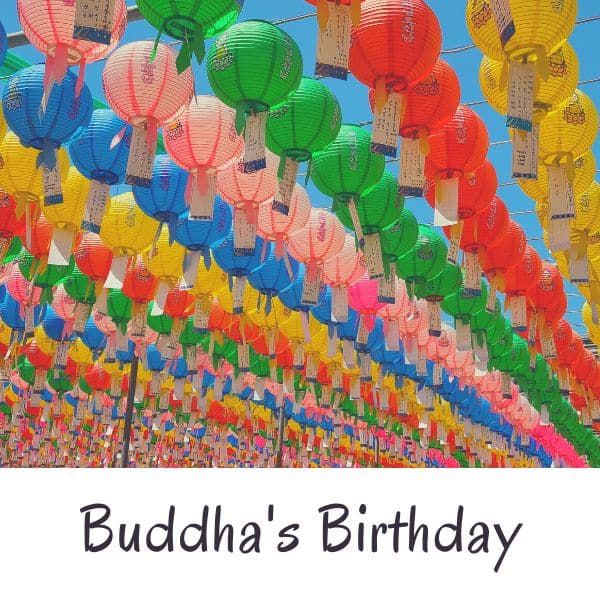
Buddha’s Birthday Festivals
Buddha’s Birthday is like Christmas for the Buddhist world, but celebrated very differently. It also falls on changing dates each year as it follows the lunar calendar, just like Korean New Year. Korean Buddhist temples across Korea will celebrate by putting up colourful lanterns and decorations for at least a month before the actual date. The biggest festival celebrating Buddha’s Birthday is the Yeon Deung Hoe Lantern Festival , which features thousands of lanterns and a lantern parade through central Seoul.
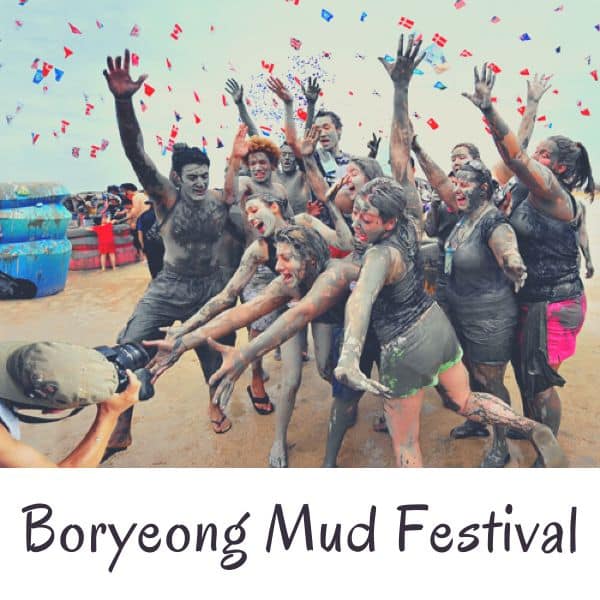
Boryeong Mud Festival
The Boryeong Mud Festival is one of Korea’s largest festivals and attracts visitors from around the world. Running for 2 weeks during rainy season, this is the best way to see a Korean festival even when the weather is bad. There’s a lot to see and do at this festival, including getting dirty in the mud with mud sports, mud wrestling, mud tug-of-war, and other mud-filled events. Boryeong is famous for the high-quality mud found in nearby waters and, by joining this festival, you’re getting a free mud facial.
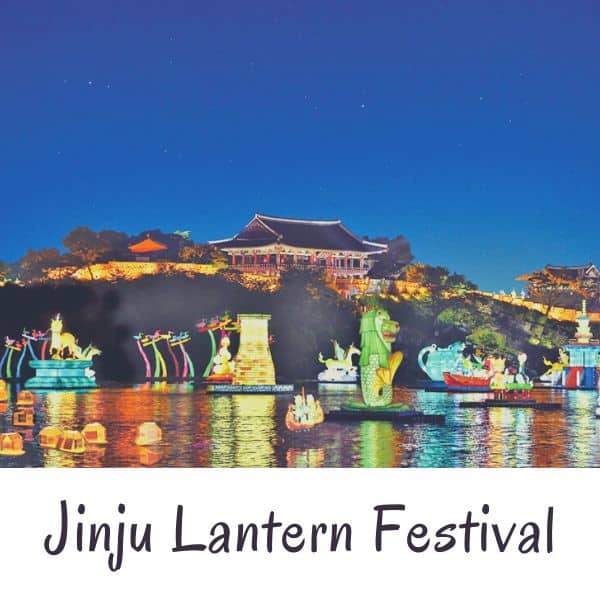
Jinju Lantern Festival
The visually stunning Jinju Lantern Festival is held in October each year in Jinju City and runs for several weeks. During the day, watch cultural performances and enjoy exploring the central fortress grounds of Jinju. Once it gets dark, see the city transform as thousands of lanterns, some as big as trees, come to life. There are so many weird and wonderful lanterns to discover at this festival. You can also set your own lanterns to float down the river with your wish inside.

Andong Mask Dance Festival
The Andong Mask Dance Festival in Andong, home of the Andong Hahoe Village, is a great opportunity to witness traditional Korean dance and music performances. Not only can you see traditional Korean performances during this 4 day festival, there are also international performers displaying their own culture’s dancing. Get hands-on with traditional Korean culture at this festival. Explore Andong and learn about its contributions to Korea’s cultural development.
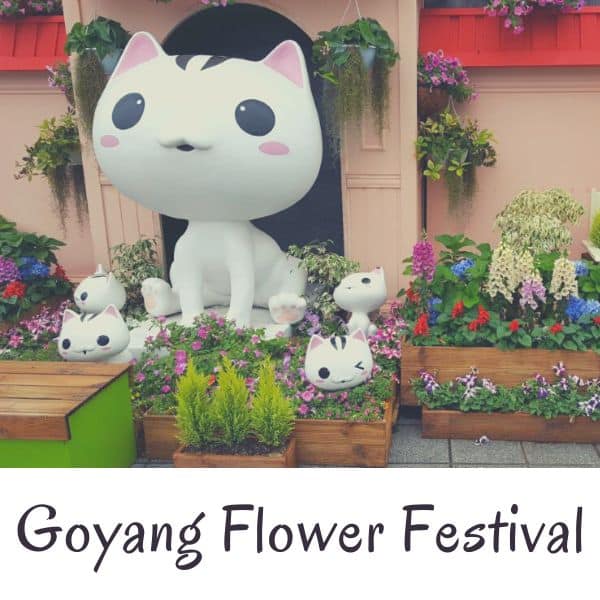
Goyang Flower Festival
The Goyang International Flower Festival runs twice per year, once in spring and once in autumn. It’s a beautiful celebration of floral beauty mixed with Korean cuteness and creativity. At this flower festival you can stroll through a maze of different displays, with each section focusing on certain flowers and plants. There are indoor displays with vividly coloured roses, nature-based outdoor photo zones, and the lovely Ilsan Lake Park in the background.
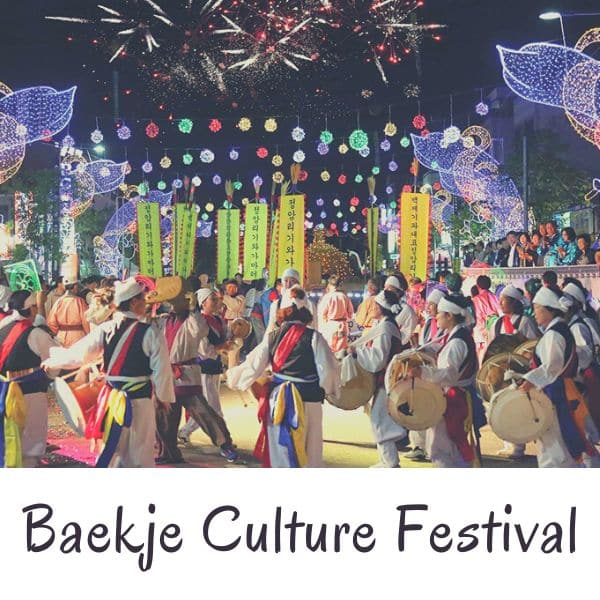
Baekje Culture Festival
The Baekje Culture Festival probably isn’t one that first-time travellers to Korea would know about. Held in Gongju and Buyeo, the two former capitals of the ancient Baekje Kingdom, this 10-day long festival held around Chuseok (Korean mid-autumn harvest festival), is packed with unique events and sights and is set in historic locations in each city. There’s local food to try, musical & cultural performances, fun photo zones, lantern displays, and much more.
Knowing when you plan to visit Korea will help you research what festivals are on and what the weather will be like. There are certainly a lot more than just the ones mentioned above, including some others mentioned previously in the seasons part of this South Korea travel guide.
I recommend using a tour company to see out of the way festivals like the Jinju Lantern Festival and the Jinhae Cherry Blossom Festival. These are often far from typical tourist destinations and can take hours to get to by public transport. Tours are worth the cost to save you time and avoid hassle.
Recommended Itinerary For Korea In 2024
In this section of this South Korea travel guide is my recommended first-timer itinerary for South Korea. This introduces you to two of Korea’s biggest cities, as well as a couple of day trips to highly rated destinations in Korea. There’s a mix of history, culture, nature, sights, and experiences.
This itinerary starts in Seoul as that’s where most people arrive to Korea after flying into Incheon Airport. If you arrive in Busan, you can change the route to start and end there instead. For travellers to Korea with only 2 or 3 days, I recommend using the first few days of this itinerary instead.
The itinerary lasts for one week, which isn’t enough time to see all of Korea, but enough time to get a feel for the country. If you have more time, use this itinerary and add in or replace extra destinations as you like. Jeju Island is certainly worth visiting if you have an extra 2 or 3 days.
Classic Sights Of Korea Itinerary
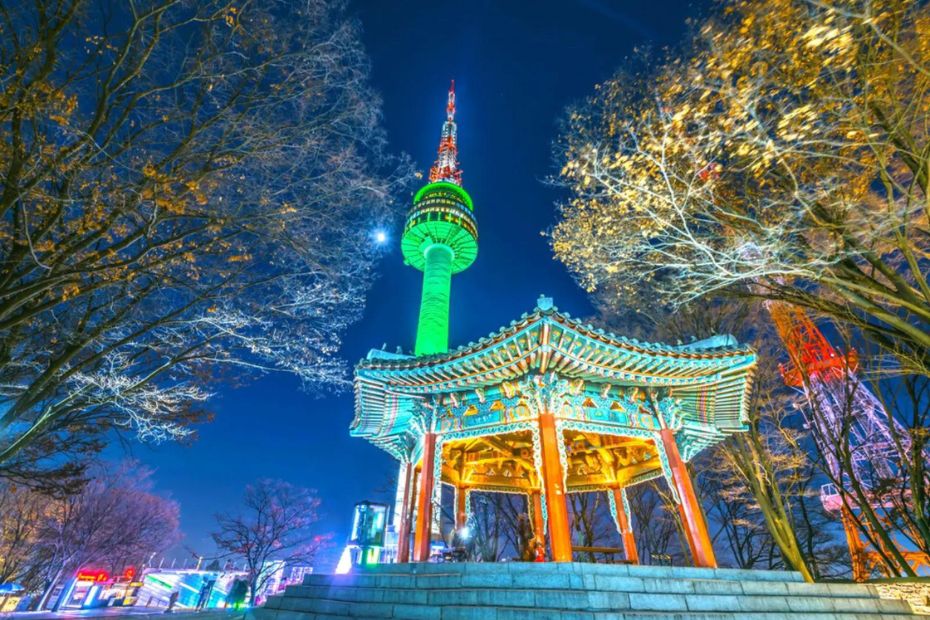
This itinerary covers a few must-see sights in Korea, including the two largest cities, the history city of Gyeongju, and some popular day trip destinations from Seoul.
Day 1 : Arrive in Seoul and explore Gyeongbokgung Palace, Bukchon Hanok Village, Insadong Art Street, Jogyesa Temple, and Cheonggyecheon Stream. Get dinner at the Jonggak Avenue of Youth for authentic Korean food that’s better than the touristy places in Myeongdong.
Day 2 : Learn about Korean history at the War Memorial of Korea or National Museum of Korea, explore Seoul’s traditional Gwangjang market in Dongdaemun, take the cable car to the N Seoul Tower for sunset & night views, then head down to Itaewon or Myeongdong for dinner & drinks.
Day 3 : Take a day trip to Gapyeong and visit Nami Island, the Garden of Morning Calm, and the Gapyeong Rail Bike Park. Return to Seoul for dinner and rooftop drinks in Myeongdong and then walk along the fortress walls from Dongdaemun Station if the weather is good.
Day 4 : Take the KTX to Busan, drop your bags, and take the subway to Nampo-dong for Jagalchi Fish Market, Bosu-dong Book Alley, and traditional sights. Take a taxi to Huinnyeoul Culture Village. End the day in Haeundae for evening dinner & drinks and a walk along the beach at night.
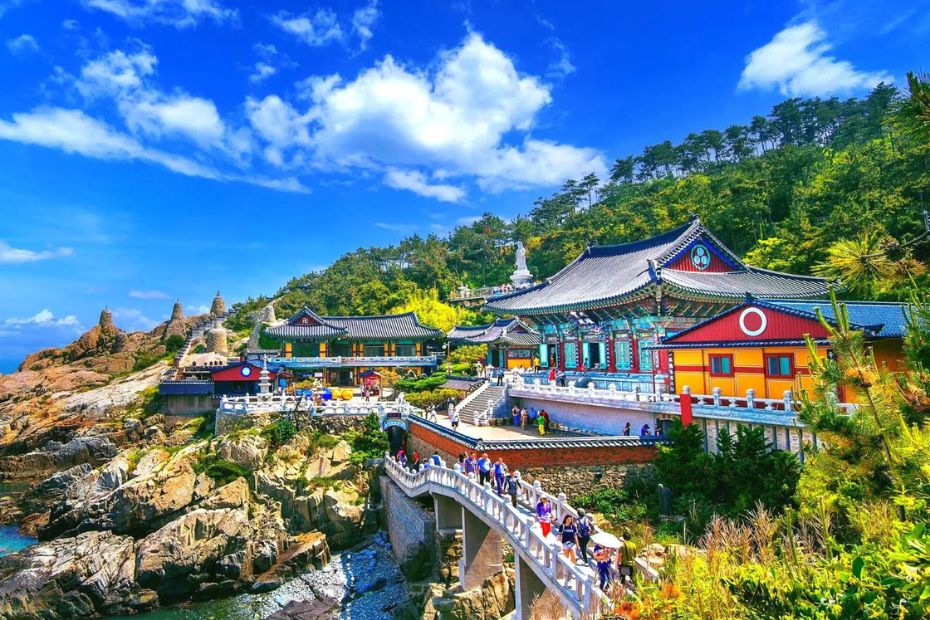
Day 5 : Take the bus to Haedong Yonggungsa Temple, then a taxi to Songjeong Beach. Relax in a beachside cafe, then take the Haeundae Beach Train to Cheongsapo, change to the Sky Capsule, and end up in Haeundae. Take a bus to Gamcheon Culture Village and get dinner at Songdo Beach.
Day 6 : Take a day trip from Busan to the UNESCO World Heritage City of Gyeongju. Visit the Gyeongju Historic Area, then Gyeongju Gyochon Traditional Village for traditional food and sights of Woljeonggyo Bridge. See tranquil night views of Wolji Pond before getting dinner at Hwangnidangil.
Day 7 : Head back to Seoul on the KTX for a final day of shopping and sightseeing in Hongdae. Walk along the Gyeongui Line Forest Park or Book Street or visit a theme cafe. Take the subway directly to Incheon Airport from Hongdae or spend a night here and check out the lively night scene.
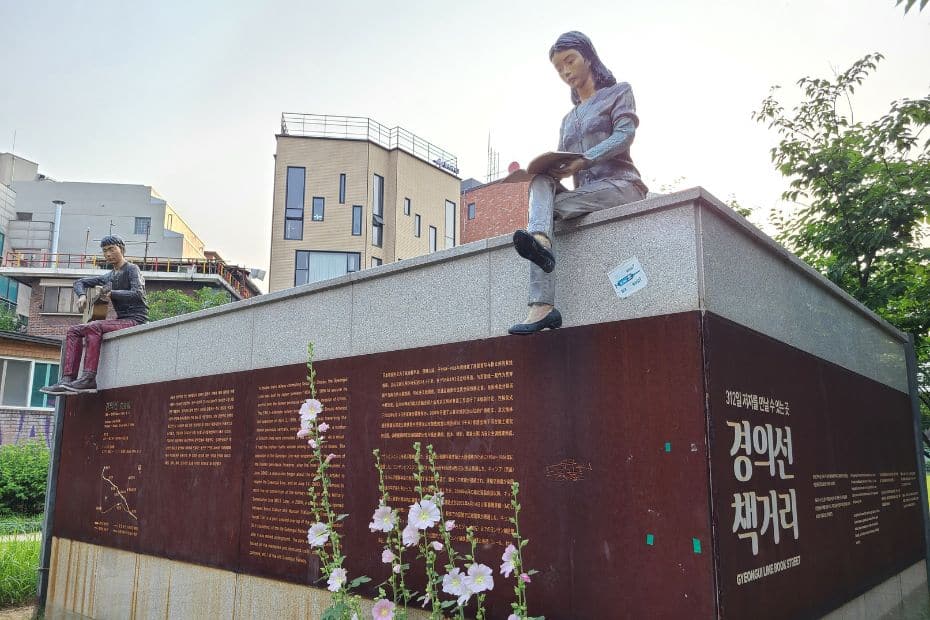
Please note : I recommend trying not to cram too much into your itinerary. You may want to see as much as possible, but people often end up rushing past sights and not appreciating them. Plan for less and see more if you have time. It gives you a chance to be spontaneous.
To plan a realistic itinerary for South Korea, it is important to factor in transportation, meal breaks, and rest times. Use Naver Maps to plan your route and work out travel times. A short journey on the map might take much longer if there’s no direct route. Also consider breaks if you plan to walk a lot.
Cultural Issues When Visiting Korea
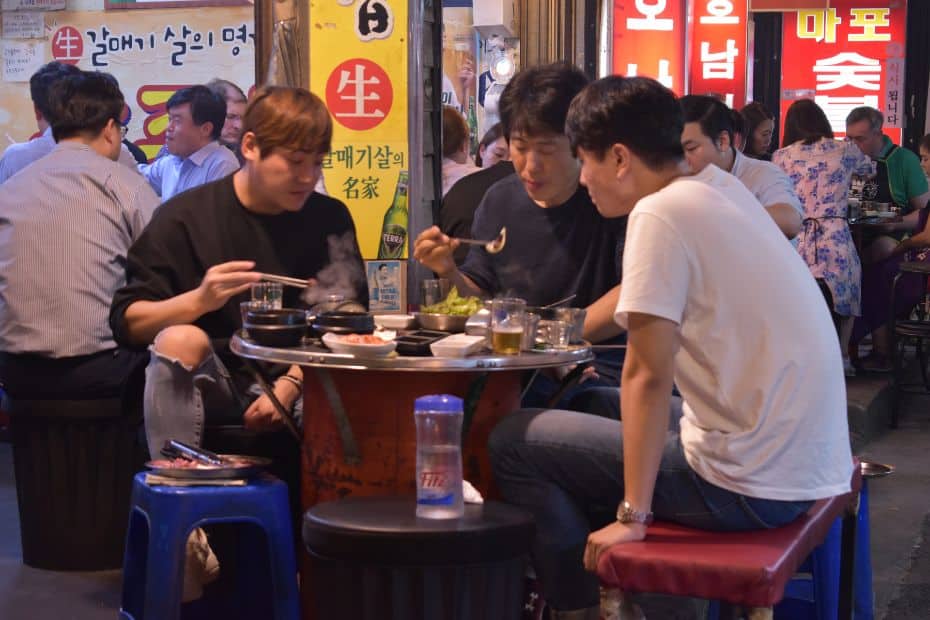
The next few sections of this South Korea travel guide will provide answers to some of the most common questions first-time travellers to Korea have in regards to cultural, language, and safety issues. Korea is a culturally unique country with customs and traditions you might not be aware of.
Korea is a society that places a strong emphasis on social image, respect for others, and social harmony. This means Koreans will often try to avoid conflict, especially in public. To show respect for Korean culture and to avoid being rude, try to respect social harmony and always avoid conflict.
If you follow these tips, you’ll find it easier to avoid accidentally upsetting someone in Korea. There’s far too much to cover in this South Korea travel guide, so if you’d like to know more, check out my detailed guide to Korean etiquette and culture , it’s packed with tips and insights to understand Korea.
What is considered rude in Korea? It is considered rude to point with one finger or with chopsticks, give and receive with one hand, cross your legs when sitting, and to walk inside with your shoes on. Things considered rude in other countries such as swearing and spitting are also rude in Korea.
What is considered unlucky in Korea? It is considered unlucky to write someone’s name in red ink and to stand chopsticks upright in rice. Both are used in rituals for deceased people. The number 4 is also unlucky as the word is the same as the word for ‘death’.
Do you need to tip in Korea? It’s not necessary to tip in Korea and most restaurants and cafes won’t expect or allow you to tip. There is no service charge added to bills in Korea, with the exception of some upmarket restaurants, bars, and hotels in touristy areas of Seoul. Tipping guides is okay.
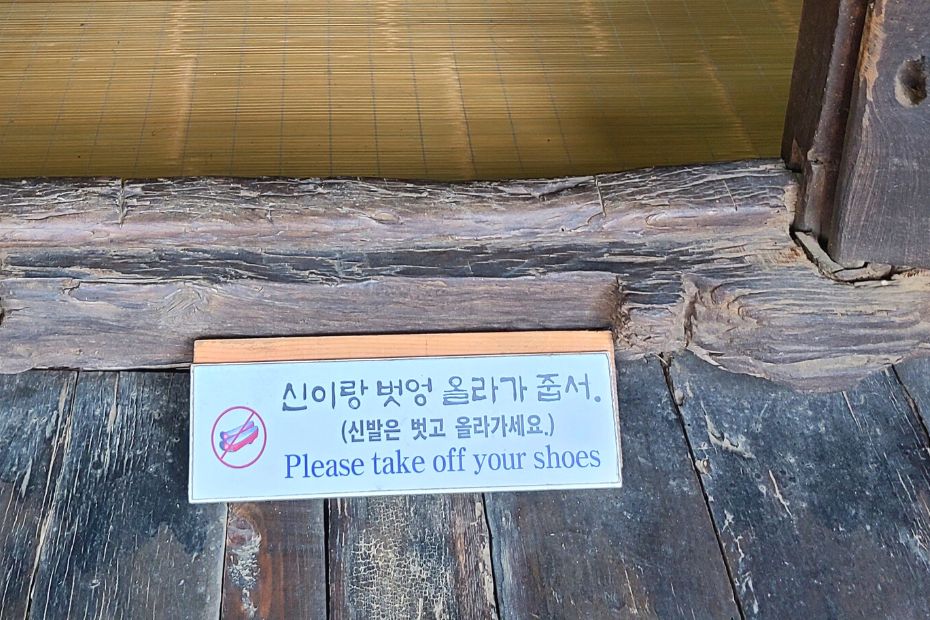
Do you need to take off shoes when going inside? If you enter someone’s house in Korea, you should take off your shoes. This rule also applies to temples, traditional restaurants, and other places in traditional buildings. Most cafes, shops, and restaurants won’t ask you to take off your shoes.
When should you use two hands in Korea? You should use two hands when giving and receiving things in Korea, such as money, a gift, a business card, or food. When you shake hands, use both hands, not just one. The same applies to pouring drinks, both pouring and holding a glass.
Do I have to act like a Korean in Korea? You don’t have to follow Korean customs and traditions when you visit Korea. You are a guest in the country and Koreans won’t expect you to know every rule. However, showing cultural awareness in Korea will help you make friends and impress locals.
The best tip for being culturally sensitive in Korea is to first consider all the things that you’d consider rude in your own country – spitting, swearing, shouting, physical violence, etc. Show the same acts of kindness you’d show at home – help others, give up your seat for those in need, be polite, etc.
Furthermore, remember that social harmony is really important in Korea and try not to cause a scene. Keep your voice down in public, don’t talk or act aggressively, be polite, and don’t force things when people are reluctant. Koreans may feel obliged to do things, even when they don’t want to.
Language Issues When Travelling Korea
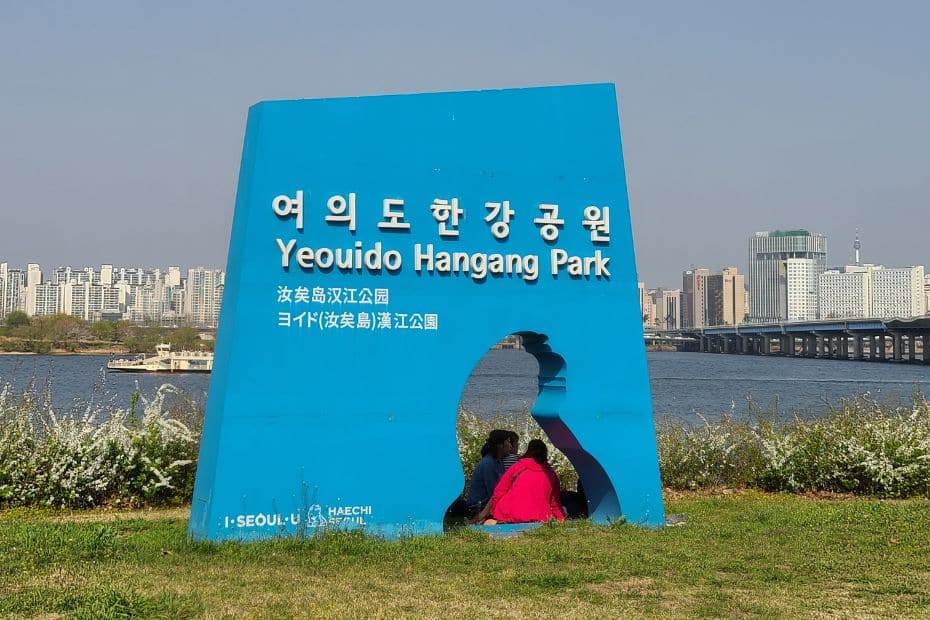
Language issues can be a big concern for first-time travellers to Korea as Korean is a very different language from English and has a unique alphabet. Korean is also one of the most difficult languages to learn for English speakers, ranked alongside Japanese, Chinese, and Arabic.
However, as a tourist to Korea, you don’t need to worry about mastering the language. English is used for signs and announcements in most places that you’ll need it, such as on public transport, at the airport, at attractions & tourist sites, on menus, and most other places. It’s common across Korea.
If there is a sign or notice that isn’t in Korean, I recommend using the Papago app to take translate it. Use the image translation function in the app to scan the sign and Papago will translate it into English for you. It’s really convenient and the way I translate things I can’t read in Korean.
Do Korean People Speak English?
Speaking in English to Korean people is different from being able to read and translate signs. English is taught from elementary school until the end of high school. That doesn’t mean everyone will remember it, but there’s a good chance some people will know English, especially younger Koreans.
It is best to ask if someone speaks English before trying to have a conversation. You can do this in Korean by asking “영어 할 수 있어요?” (Yong-oh hal su iss-o-yo?) or just ask it in English. Tour guides and people in the tourism industry will probably be able to speak English, but it’s not guaranteed.
Shyness is an issue in Korea and locals may be reluctant to speak English at first for fear of making a mistake. As an English teacher in Korea, I know that Korean students are usually quite competent in English, but lack confidence to use it. Be patient and encouraging when talking in English.
Although some Koreans may be too shy to use English, other people may be enthusiastic about speaking English to you and want to practice it. I’ve been asked random questions in English by strangers in the street in Korea who want to practice English and find out about my life.
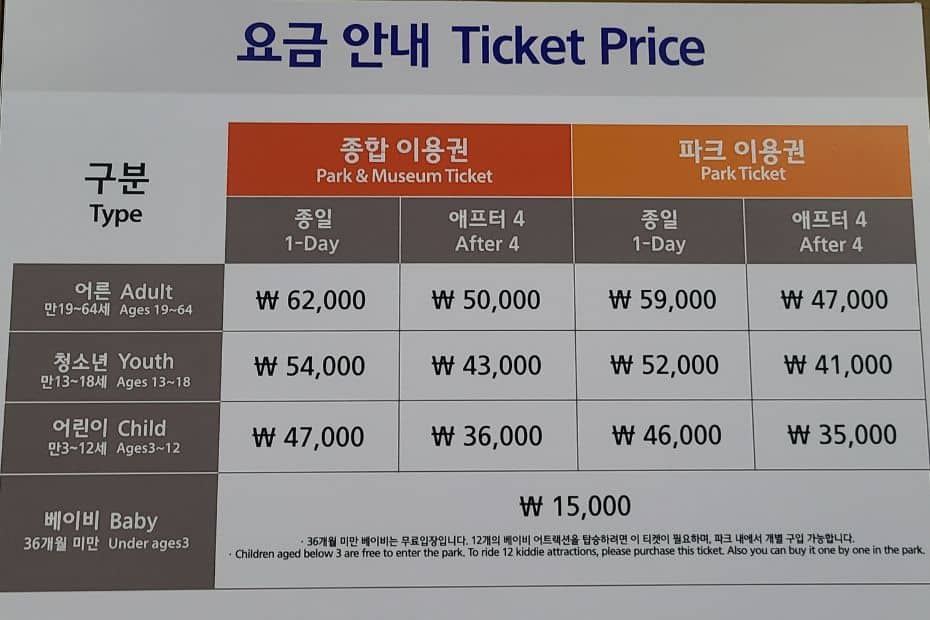
Should You Learn Korean Before Visiting Korea?
If you do want to learn some Korean before you travel, I recommend you start by learning the Korean alphabet , or at least learning some basic Korean travel phrases . Knowing how to introduce yourself, discuss prices, ask for directions, and ask for help will make your trip to Korea a lot easier.
You can learn Korean online through courses such as 90 Day Korean and Korean Class 101 , or with self-study textbooks like the excellent Talk To Me In Korean series. There are lots of resources on YouTube, too. I particularly like Learn Korean with GO! Korean Billy as he explains things clearly.
Another way to prepare to move to Korea is to read some Korean novels in English . Although these books won’t teach you any Korean, they’ll offer up valuable insights into Korean culture, both traditional and hidden under the surface. Literature is a good way to gain an understanding of a culture.
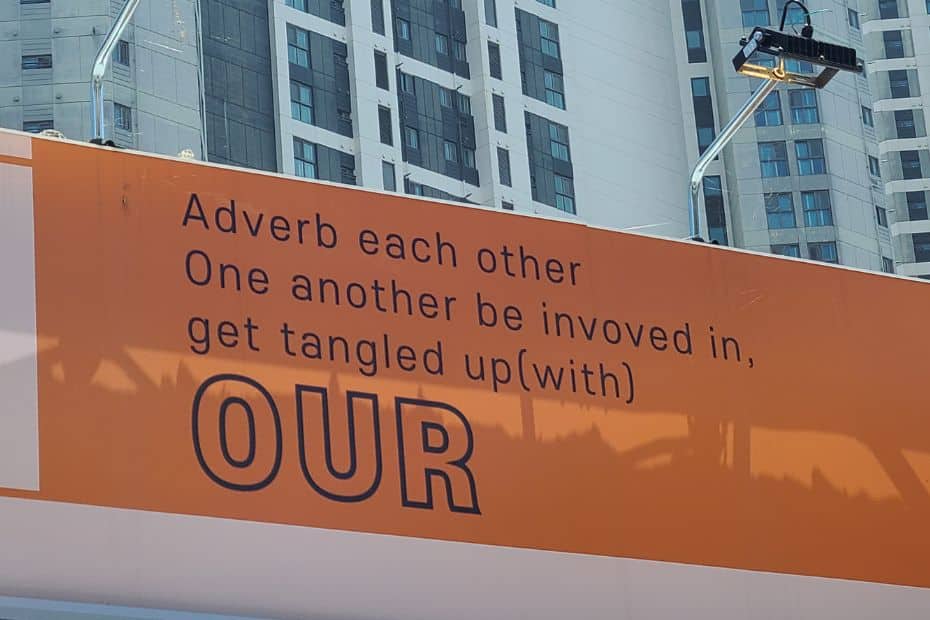
A warning about Konglish : Although Korea uses English in many useful ways, there’s also a lot of Konglish. The sign above is a good example of random English words being used to look cool, but ending up being confusing. There’s a lot of this in Korea and it’s mostly harmless, so don’t worry.
Health And Safety Issues In Korea

First-time travellers to Korea may be worried about health and hygiene issues, such as if certain foods are available and if they’re safe to eat. Other issues include vaccinations, personal safety, and how easy it is to contact emergency services. These issues are addressed below.
Is Korean Street Food Safe To Eat?
Korean street food is generally safe to eat and won’t give you any health issues unless you have an intolerance to the food. Korean street food can be spicy or contain a lot of salt, be aware of your own personal tolerances and dietary requirements before trying it.
Also be careful when ordering food with meat or seafood and check that it is cooked thoroughly. Korean street food that has been left out for a long time is more likely to cause food poisoning problems, so ask for freshly cooked food if you’re concerned.
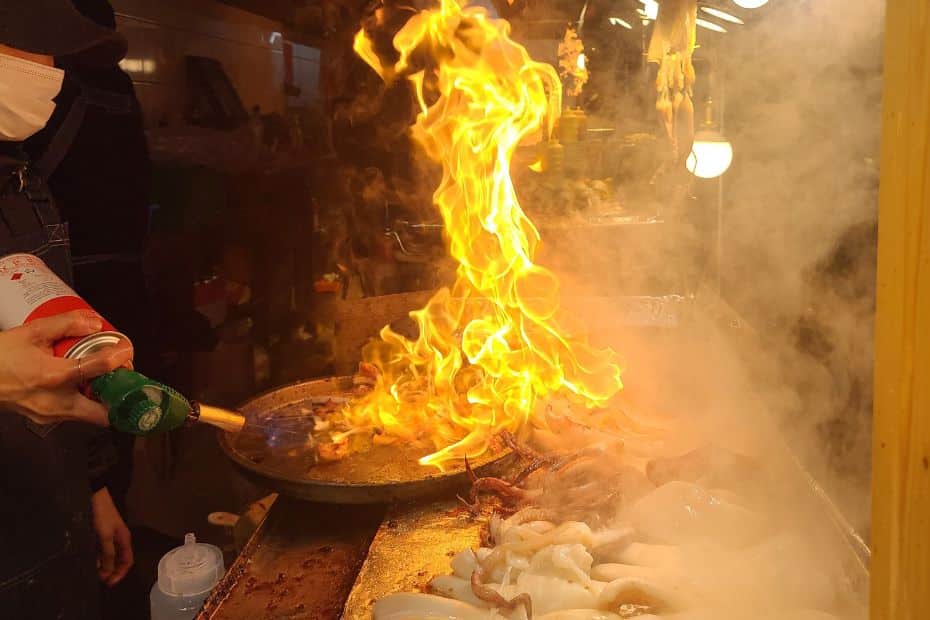
Is It Easy To Find Vegan-Friendly Food In Korea?
There are many vegan-friendly Korean dishes , such as gimbap , japchae , pajeon , bibimbap , ramyeon , and tteokbokki . However, some restaurants may use non vegan-friendly ingredients when preparing these foods, so be careful. Kimchi isn’t vegan-friendly due to its seafood ingredients & sauces.
Vegetarianism and veganism aren’t common in Korea with fewer people following these diets than in countries such as the USA or UK. Vegetarians in Korea account for 3% of the population, while vegans in Korea are only 0.2% of the population as of 2022. The UK is 10% and 2% respectively.
However, the number of vegan-friendly restaurants and bakeries is increasing each year in Korea, especially in areas such as Hongdae and Itaewon. Korean Buddhist temple food is vegan-friendly and a good option for vegans who want to enjoy vegan food while learning about local Korean culture.
If you’re concerned about accidentally ordering non vegan-friendly food, or want to know how to tell someone about food allergies or requirements, check out my guide to Korean phrases for ordering food . This has a whole section about special requests when ordering food in Korean.
Is It Safe To Drink Tap Water In Korea?
Korean tap water is potable and safe to drink. Korea ranks 23rd for water hygiene, which is above the USA, Canada, and Australia. However, many Koreans don’t drink tap water , preferring to use water purifiers and bottled water instead, claiming that tap water smells strange or water pipes are bad.
Personally, I don’t like drinking tap water in Korea as it tastes a bit stale, but it’s perfectly fine to drink and doesn’t cause any problems. Bottled water is very cheap in Korea and costs 600 KRW for a 500ml bottle from a convenience store. Buying water from a supermarket is a cheaper option though.
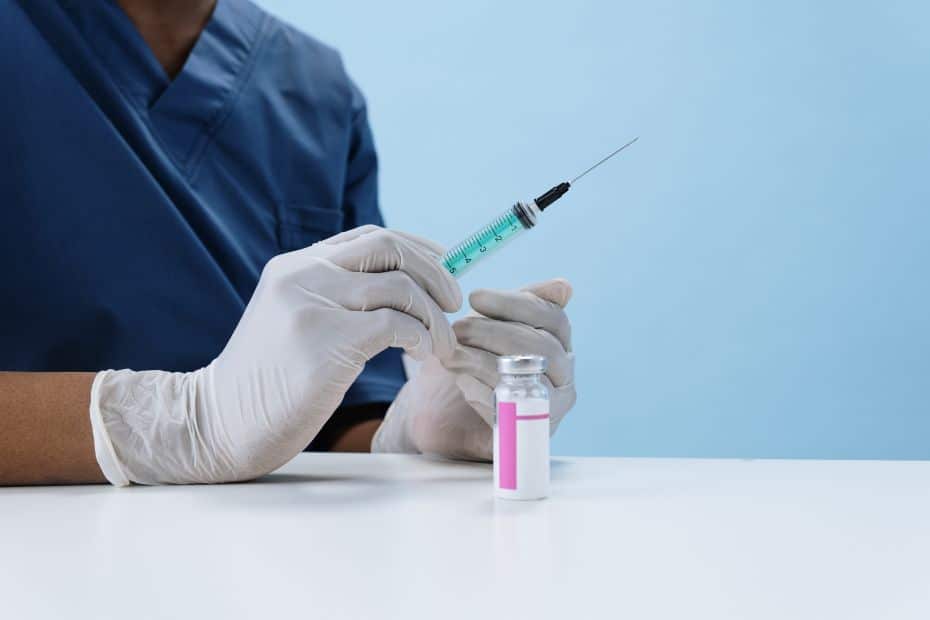
Do You Need Any Vaccinations To Travel To South Korea?
There are no mandatory vaccinations required to travel to Korea , but it is suggested you should have at least routine vaccinations such as tetanus, MMR, and polio. Hepatitis A & B, typhoid, and Japanese encephalitis vaccinations are also recommended.
Is Korea Friendly To Tourists?
Korea is generally friendly and welcoming to tourists. The Korean government spends a lot of money and effort to promote Korean tourism to the world and there are many incentives to bring people to the country. Korean people are also mostly polite and welcoming, especially in the tourism sector.
Is Korea A Dangerous Country To Travel In?
South Korea is a safe country to travel in and the crime rate in Korea is low, comparable to Norway or the Netherlands. Public crimes, such as theft and assault, are rare. Pickpocketing and purse snatching aren’t common and unattended goods are generally left alone or reported to the police.
How safe is Korea? I regularly see people leave their phone or handbag on a cafe table to reserve it before going up to order a drink. People even leave their laptops open while they pop out for lunch or go to the toilet. Stealing disturbs social harmony and is one of the reasons it’s rare in Korea.
Physical violence is also rare, but still occurs in Korea, as it does in all countries. This is most often found in areas with lots of bars and when people are drunk. However, visiting bars in Korea is a lot safer than I’ve experienced in other countries and trouble is not common, even in busy places.
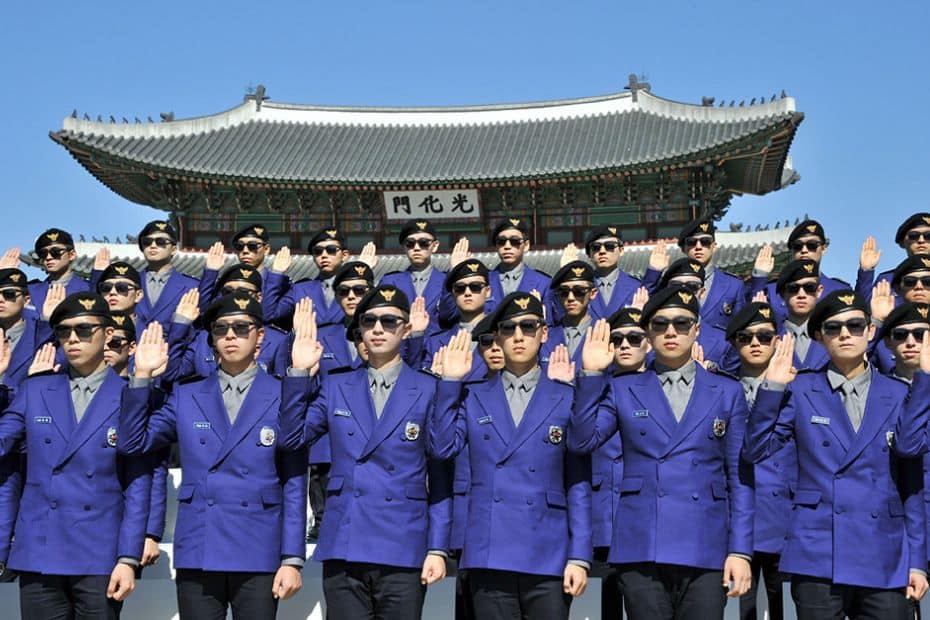
How Do You Contact Tourist Information Services In Korea?
Call 1330 in Korea to contact the Travel Helpline . The Korean Travel Helpline provides the following services free of charge to tourists in Korea.
- Tourist Information : Find out about attractions, opening hours, prices, and other information.
- Tourist Interpretation : Access travel information in several languages.
- Tourist Complaints : Report rip-offs and problems you encounter when travelling in Korea.
- Tourist Police : Report minor crimes in English and other languanges.
There are tourist police patrolling the streets of Seoul, dressed in purple uniforms as shown in the picture above. In popular tourist locations like Myeongdong and Bukchon Hanok Village, you’ll also find friendly tourist information staff dressed in red shirts with matching red cowboy hats.
What Should You Do If You Have An Emergency In Korea?
If you need to report a fire or medical emergency in Korea, you should call 119 from any phone. To contact the police in Korea, call 112. You will need to select an option to report an emergency in English or another language. It may take some time to be redirected to an English speaker.
- 119 – Medical Emergency & Fire Rescue
- 112 – Police
When you use medical services in Korea, you have to pay the cost of treatment, but there is no fee for the ambulance ride as this is covered by the Korean government. Travel insurance should cover the cost of medical bills, so if you’re worried about a large medical bill, insurance is recommended.
Fortunately, the cost of treatment in Korea is quite reasonable and Korea has advanced medical facilities, which is why it’s a popular medical tourism destination . Many people travel to Korea for minor and major surgery, including laser eye surgery, cosmetic surgery, and internal medicine.
Is Air Pollution A Problem In Korea?
Air pollution is an issue in Korea, especially in spring & summer. Winds blow yellow dust from Central Asia, field burning spreads fumes across Asia, and fossil-fuel burning contributes to higher levels of air pollution. Some days there’ll be very low visibility and health risks for people with lung problems.
My Personal Travel Tips For Korea
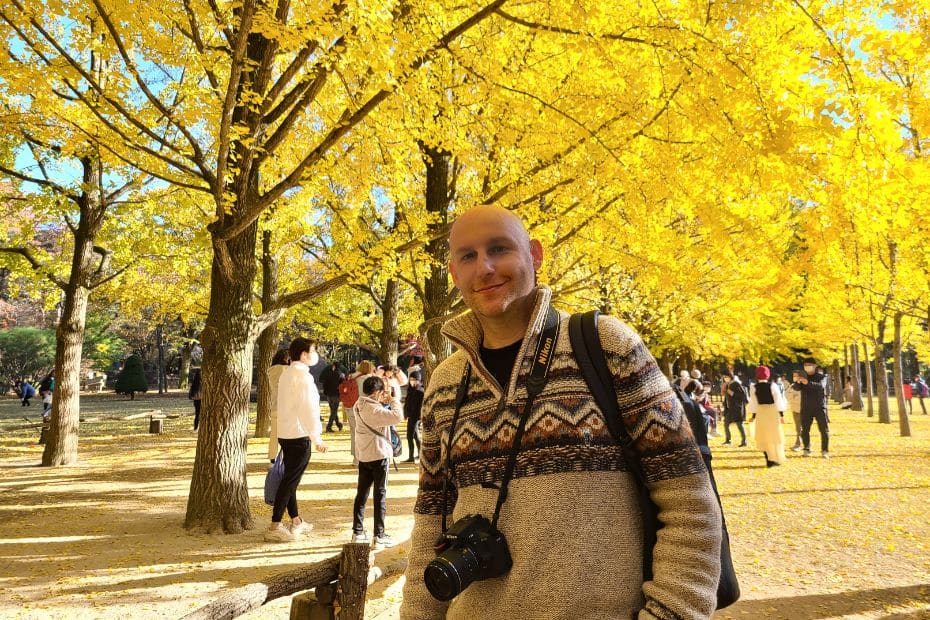
This South Korea travel guide is a collection of information I’ve researched and learned since moving to Korea in 2015 and blogging about Korean travel since 2019. I hope the provided information and insights are useful and assist you plan your dream first-time, or even tenth-time, trip to Korea.
This section includes my personal tips that didn’t really fit anywhere else and reflections built from travelling all over Korea in all seasons. These are tips I would offer to first-time travellers to Korea and people who might have some worries about visiting the Land of Morning Calm. I hope they help.
The Real Korea Isn’t What You See On TV
Korea is a developed country that went from being a 3rd world country in the mid 20th Century to a high-tech country in a short time. Despite the many high-rises and modern K-Pop stars, there are still shadows of the former Korea seen in both run-down slums and people with ‘traditional’ values.
The image created by selective K-Culture can distort people’s reality when dreaming of a trip to Korea in the same way Korean people can suffer from Paris Syndrome when visiting France. There are many wonderful things about Korea, but don’t travel thinking that everything is as shown on TV.
Be Prepared For Culture Shock
One of the best things about travelling is seeing a country and people that act and behave differently to how you do in your own country. This is known as culture shock and can be both a blessing and a challenge for first-time travellers to Korea. Things you might be used to can be different in Korea.
Some examples of culture shock in Korea include the way age determines hierarchy in Korea and how older people can be rather pushy, especially on the subway. Younger people also typically don’t question the decisions of older people in Korea as it is considered rude and disrespectful.
Less extreme cultural differences that might confuse some first-time visitors to Korea include having to shout to call someone to take your order in a Korean restaurant or not giving a tip. Koreans might similarly look at you strangely if you do something culturally different, such as walking while drinking.
Don’t Overpack When You Travel To Korea
First-time travellers to Korea may be worried about visiting a country like Korea without taking everything they need from home, even the kitchen sink. My advice is to pack as light as possible and leave yourself some space in your suitcase. There are two reasons for this.
- You can buy most things you need in Korea . This includes sun cream, heat packs, clothes, shoes, cosmetics, travel accessories, etc. They’re also probably cheaper in Korea, too.
- You will want to take home lots of things . From weird Korean snacks to beautiful hand-crafted pottery and woodwork, there are so many things to buy in Korea.
(1) The only exception is if you might have a problem finding correct-fitting items. Korean shoes and clothes are slightly smaller than what you’d find in Western countries and the sizes are also differently labelled. I’m a medium in the UK but a large (sometimes XL!) in Korea. Be careful when shopping.
(2) It’s hard to fit everything you buy in Korea into an already full suitcase. Fortunately, you can buy extra suitcases at low prices. Check out Namdaemun Market for cheap luggage options, as well as shops like the one pictured below (this is in Busan) in places like Hongdae and Dongdaemun.
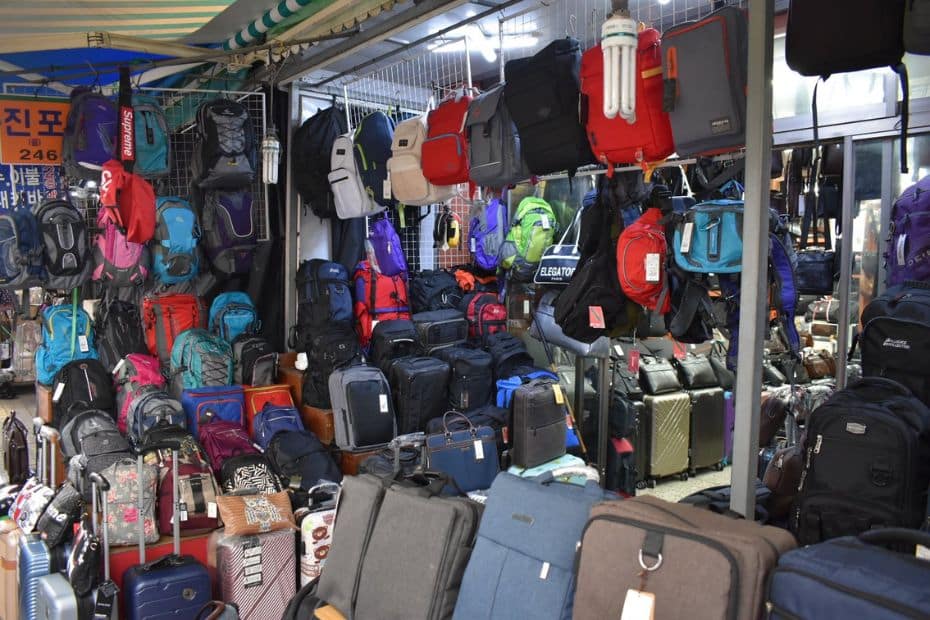
Electricity In South Korea
Be careful with electric items when travelling to Korea. Korea uses type C and F plugs , which are used in Europe, Russia, and other parts of Asia. The standard voltage is 220V with 60Hz frequency. Anything designed for a standard voltage between 220V and 240V should be fine in Korea.
Laptops, mobile phones, and other portable devices will be fine when you travel in Korea as long as you use a travel adapter with a USB or socket connection. Hairdryers, shavers, curlers, and similar devices might have problems charging in Korea and run out of power very soon. My shaver did.
Go With The Flow And Go Quickly
Korea is a very busy country and you might hear people mutter ‘빨리빨리’ ( ppalli ppalli ) if you walk slowly, especially in the subway. Koreans work long hours and are eager to get home or go out for dinner. Don’t take it personally if people push past you and don’t feel like you have to rush.
Know Where To Throw Away Rubbish
It can be difficult to find a bin to throw away rubbish in Korea, even in urban areas. The best place to dispose of rubbish in Korea is at a convenience store. You can find recycling and trash bins in these shops. If you go hiking or explore the countryside, expect to carry your rubbish home with you.
South Korea Travel Guide FAQs
Finally, here’s a few FAQs about this South Korea travel guide, in case the above information didn’t cover enough for you.
What is the best month to visit South Korea?
The best months to visit South Korea are April and October. April is warm and you can see cherry blossoms in Seoul at the start of the month. October is warm with clear skies. During October you can see autumn foliage across Korea.
How much money is enough for South Korea?
The amount of money you need to travel in South Korea depends on your travel style and desired level of comfort. A rough budget for South Korea is 50-100,000 KRW per day for budget travellers, 100-200,000 KRW per day for mid-range travellers, and 200,000+ KRW per day for luxury travellers.
Is South Korea friendly to tourists?
South Korea is a welcoming country and friendly to tourists. There are many services to welcome tourists to South Korea, including free transit tours from Incheon Airport, cultural performances in tourist destinations, low entry fees to traditional attractions like Gyeongbokgung Palace, and tourist information and signs in multiple languages.
What do I need to know before travelling to South Korea?
It’s important to know about the weather before travelling to South Korea as this can impact your day to day travel and affect what clothes you’ll need. You should also research what festivals are on before you travel, what seasonal events are happening, such as cherry blossom viewing, and also how to use public transport and get connected to the net.
What is the cheapest month to visit South Korea?
January and February are two of the cheapest months to visit South Korea and are considered low season as the weather is cold. Hotel prices and flights to Korea will be lower in these months. Winter is a good time to travel to Korea to see snow and enjoy winter sports and festivals, however, some attractions will be closed during this time of year.
Do I need a South Korea travel guide?
It is good to check a South Korea travel guide to research your trip, especially for first-time travellers to Korea. Korea has a unique culture, language, and customs that might be confusing for new travellers. A South Korea travel guide will help you prepare for these factors and give you ideas to create your perfect trip to Korea.
Can you drink tap water in Korea?
Korean tap water is potable and safe to drink. You can drink water from hotels and apartments in Korea. Restaurants and cafes will provide you with free drinking water, which usually comes from a water cooler. Bottled water is available from convenience stores and is reasonably priced.
Is South Korea safe for first-time travellers?
South Korea is a safe country for first-time travellers to visit. Personal crimes, such as theft, mugging, and physical violence are rare in Korea and it is safe to walk the streets of Seoul, even at night. First-time travellers can prepare for a trip to South Korea by being aware of potential scams, such as taxi drivers over charging them or being ripped off in the traditional markets.
What are the best apps for travelling in South Korea?
The best apps for travelling to South Korea are Papago, Kakao Taxi, Naver Maps, and Seoul Subway. These apps will allow you to translate between Korean and English, hail taxis, and navigate as you travel. All of these apps have English language options and are free to use.
Support In My Korea Thanks for reading. If you want to help me to create more great content in the future, why not buy me a coffee? A strong coffee helps me write more and is a simple way to show gratitude for this free content.

Liked This? Pin It For Others
If you enjoyed reading this article, then please share this with your friends on Pinterest.
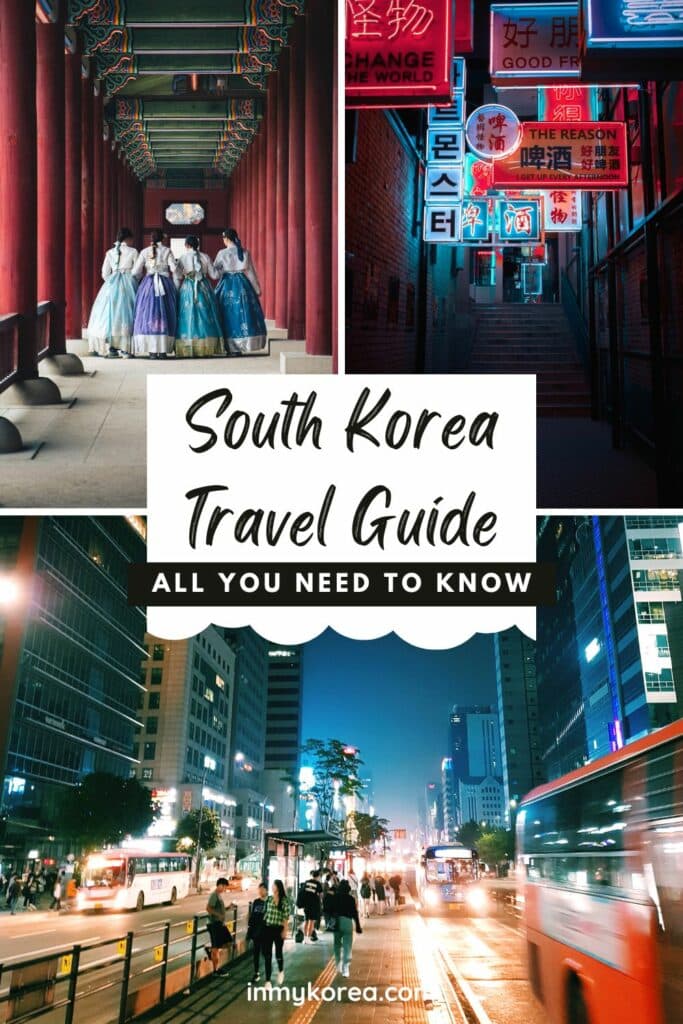
Related Articles
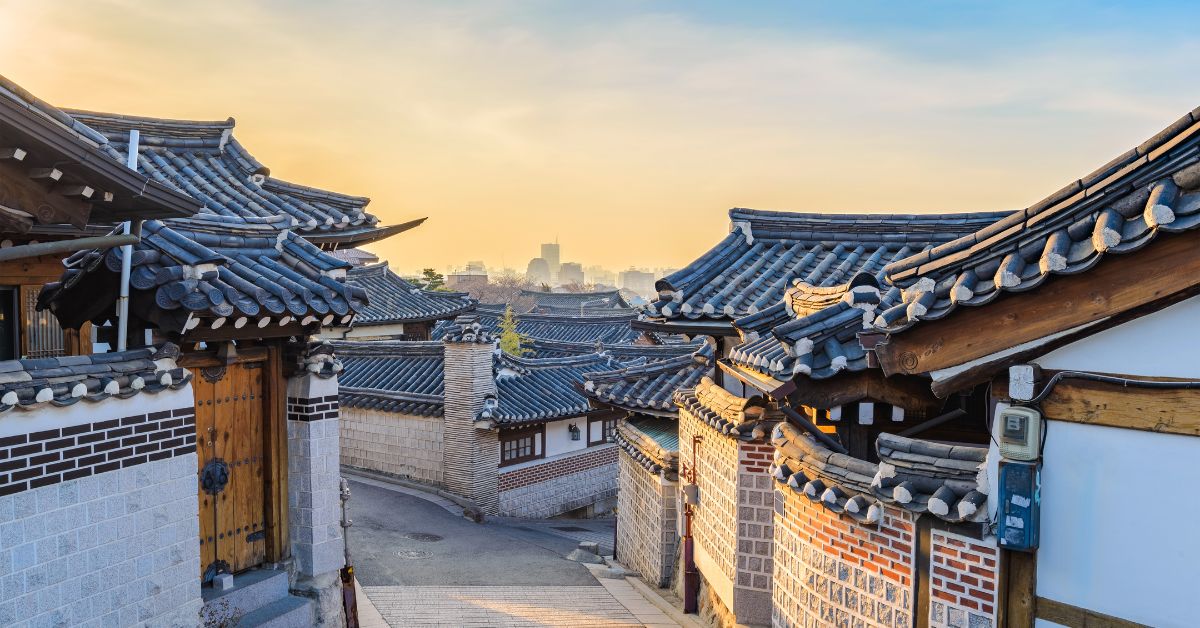
What To See And Do in Bukchon Hanok Village Seoul In 2024
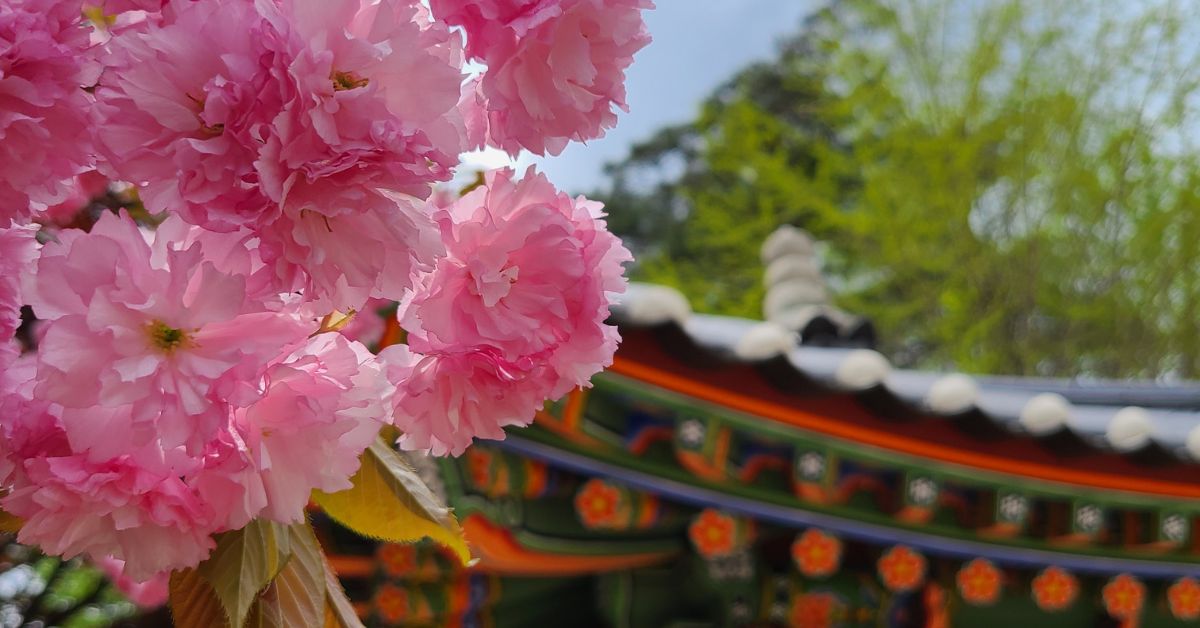
Where To See Cherry Blossoms In Korea 2024: Seoul And Beyond

The EPIK Teaching Experience: What To Expect On EPIK 2024
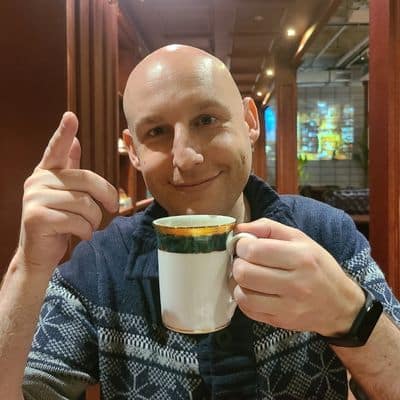
Hi! My name is Joel, I'm the author of In My Korea and writer of this article. I've lived, worked and travelled in Korea since 2015 and want to share my insights, stories and tips to help you have the best experience during your trip to Korea.
I love learning more about Korean culture, hiking the many mountains, and visiting all the coolest places in Korea, both modern and traditional. If you want to know more about my story, check out the ' about me ' section to learn why I love living in Korea.
4 thoughts on “Complete South Korea Travel Guide 2024: Korean Travel Tips”
This South Korea travel guide is a comprehensive resource for anyone planning a trip to Korea. It covers everything from entry requirements and travel tips to accommodation options and places to visit. Whether you’re a first-time traveler or have been to Korea before, this guide has something for everyone. The inclusion of the latest travel news and COVID-related updates adds to its relevance and usefulness. I appreciate the detailed breakdown of sections and the inclusion of quick links for easy navigation. Overall, this guide is a valuable tool for anyone looking to explore the wonders of South Korea.
Moderator – Nice Article! In My Korea
Thank for the great info! Could you please recommend any tours agency for a few day trips around Korea? I found a few , but they are pretty pricey!
Hi, thanks for reading. Klook and Viator have a good selection of tours in Korea with some of the best prices on the market. I’m not sure which tours you’re looking for, but they usually do day trips for less than $100 per day that cover popular tourist sights.
Leave a comment Cancel reply
Save my name, email, and website in this browser for the next time I comment.
Nomadic Matt's Travel Site
Travel Better, Cheaper, Longer
South Korea Travel Guide
Last Updated: July 17, 2023
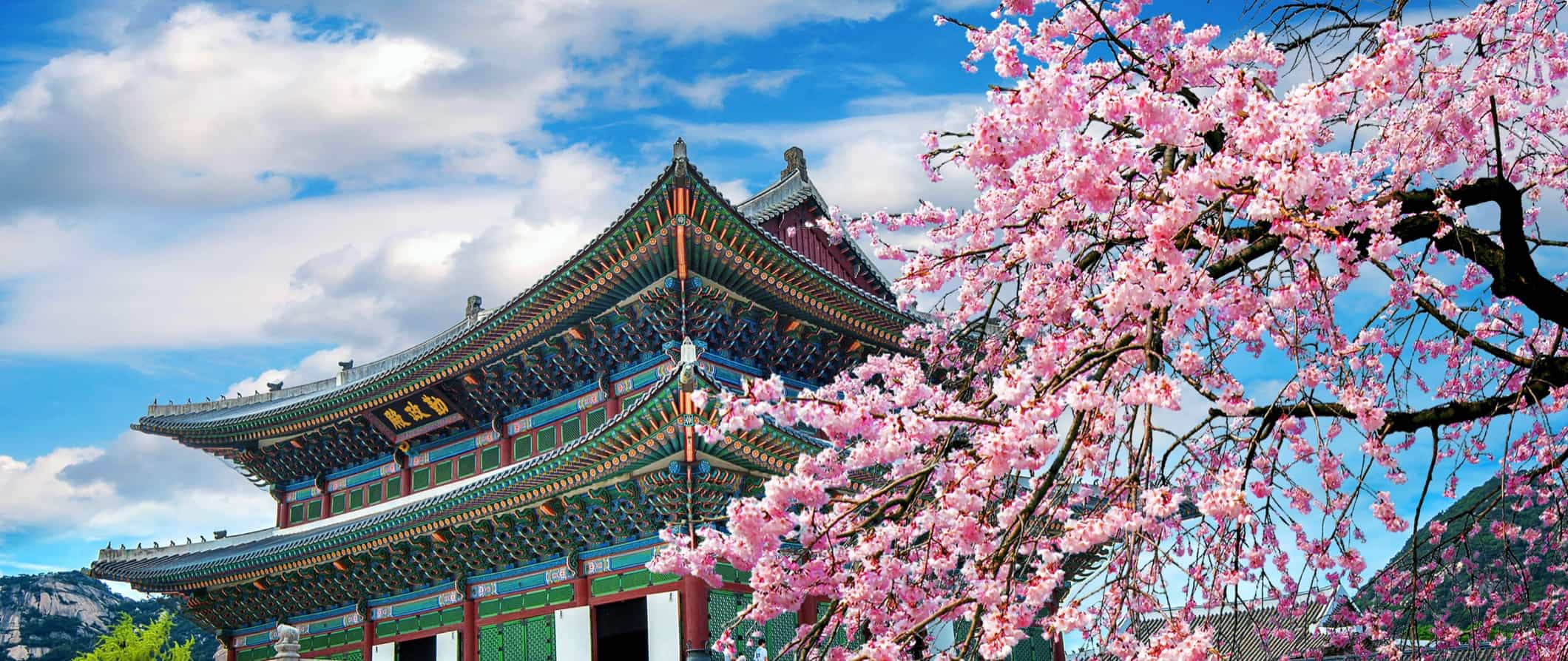
Though South Korea is small (about the size of the US state of Indiana), it punches well above its weight in terms of things to see and do. Boasting a vibrant culture, incredible history, natural beauty, delicious food, and a wild nightlife, it’s home to both major cities and untouched nature, offering something for every traveler.
Seoul, the capital city and fourth-largest metropolitan area in the world (over half the country’s population of 50 million is concentrated here), is a lively hub for food lovers and partying. But while it gets all the attention, there is much more to explore, including 22 national parks, lush Jeju Island, and the infamous Demilitarized Zone (DMZ) bordering North Korea.
Best of all, since South Korea is a manageable size, you can see a good portion of it in a limited amount of time. The transportation here is modern, clean, and efficient, so it’s easy to get around quickly.
The country is also a foodie’s paradise, with cheap street food and delicious dishes like bibimbap, kimchi, and the famed Korean barbecue.
It’s one of my favorite countries in the world and one that I think is super under the radar and often overlooked by travelers. You never see the tourist crowds found in other Asian countries.
This travel guide to South Korea can help you plan your trip, save money, and make the most of your visit.
Table of Contents
- Things to See and Do
- Typical Costs
- Suggested Budget
- Money-Saving Tips
- Where to Stay
- How to Get Around
- How to Stay Safe
- Best Places to Book Your Trip
- Related Blogs on South Korea
Top 5 Things to See and Do in South Korea
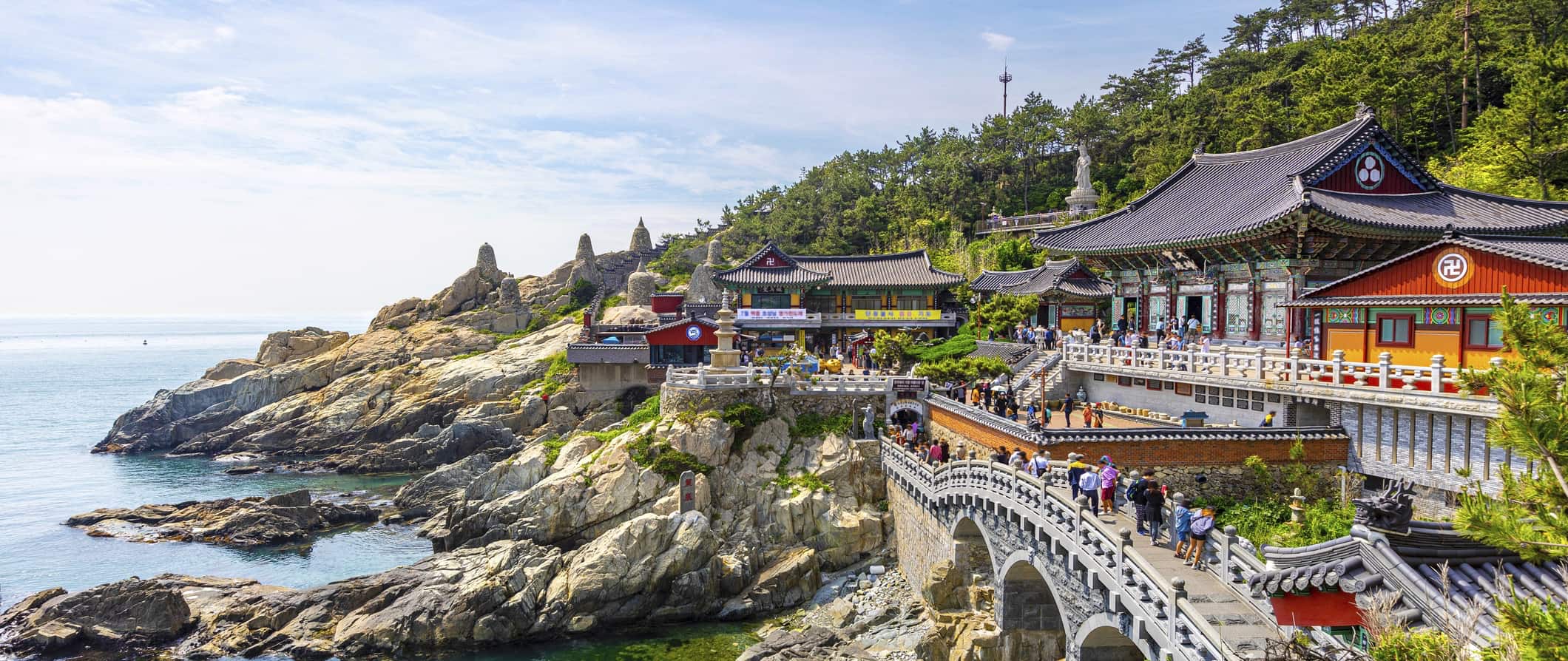
1. Explore Seoul
Korea’s capital has a little bit of everything. It’s a bustling metropolis and global technology hub, with sleek and modern neighborhoods like Gangnam and iconic sights like the Lotte World Tower, the sixth-tallest building in the world. Yet there is a lot of history here too, including many museums, palaces, and temples, among them five UNESCO World Heritage Sites. When you’re done exploring for the day, Seoul has a robust street food scene, countless trendy restaurants, and fast-paced, soju-driven nightlife. You could easily spend weeks here and never get bored.
2. Tour the DMZ
The Demilitarized Zone (DMZ) separates North and South Korea and, despite the name, is the most militarized border in the world. You can only visit the Joint Security Area (JSA), which has military personnel from both sides, on a guided tour, but it’s a unique experience and an important way to learn about this ongoing conflict (the war started in 1950 and has not officially ended). On the tour, you’ll be able to actually stand in North Korea, visit the Third Tunnel of Aggression (which North Korea dug to sneak soldiers across the border), see the Freedom Bridge, and catch glimpses of North Korea from the Unification Observatory. Guided tours of the DMZ start from 80,000 KRW.
3. Visit Jeju Island
This volcanic, semitropical island is a popular domestic vacation spot. It’s accessible via cheap daily flights from Seoul that take just one hour. Known as “the Hawaii of Korea,” it’s a natural paradise, home to the tallest mountain in Korea (Mount Hallasan), lava tubes, beautiful beaches, and countless hiking and walking trails. Other attractions include visiting mythic Jeju Stone Park, wandering the Yeomiji Botanical Gardens, and watching the haenyeo divers — women who dive without any protective equipment to gather underwater treasures like shellfish and seaweed, which they then sell on the beaches. You can visit the Jeju Haenyeo Museum as well to learn more about this cultural practice that dates back centuries.
4. Sing karaoke
Known as noraebang , this is a cultural phenomenon and something worth experiencing at least once while visiting Korea. While the karaoke machine was originally invented in Japan, Koreans have adopted the pastime and made it their own. Here, you rent out a private room with a group of friends (instead of singing in a public bar, as is often the case in Western countries). Pricing is determined by the hour, with rates varying wildly depending on the number of people, time of day, day of the week, and whether snacks and drinks are included. Average group karaoke rates range from 5,000 to 15,000 KRW.
5. Step back in time at a hanok village
Other things to see and do in south korea, 1. visit changdeokgung palace.
One of the Joseon dynasty’s Five Grand Palaces, this 15th-century complex in Seoul was built in harmony with the natural environment at the foot of Bugaksan Mountain. Changdeokgung, or “Palace of Prospering Virtue,” was the main royal residence for 13 kings over the course of three centuries. The complex sprawls over 110 acres, 60% of which is taken up by the beautiful Huwon Secret Garden, home to over a hundred species of trees, flowers, and other plants (some of the trees here are over 300 years old!). The main draw is wandering around the exterior, with its restored buildings and gates, though you can also go inside Injeongjeon Hall, the palace’s throne room. Admission to the complex is 3,000 KRW; the Secret Garden is an additional 5,000 KRW. There are guided tours in English as well.
2. Explore Busan
Korea’s second-largest city is located just two hours from Seoul on the KTX high-speed bullet train. A coastal city, Busan boasts great beaches, such as Haeundae Beach, with its miles of sand, and Gwangalli Beach, known for its sunsets. Gamcheon Culture Village, the “mural village of Korea,” is a hillside neighborhood rich in street art and covered in murals, and nearly all the houses are painted bright colors. It’s a great place to wander around for a few hours, popping into the unique shops, cafés, and restaurants.
3. See the National Museum of Korea
If you visit only one museum in Korea, make it this one. Located in Seoul, it covers all aspects of Korean culture, art, and history, from prehistory to the early modern era. It also contains many national treasures and artifacts that have been designated as having special importance and value in Korean culture and history. Some of the most important ones include the sixth-century inscribed Bukhansan Monument, detailing military expansions; sixth-century gilt-bronze Buddhist statues; and the 10-story Gyeongcheonsa Pagoda, which dates to the 14th century. Don’t miss the exterior gardens, which feature indigenous plants, reflecting pools, and traditional Korean sculptures and lanterns. Admission to the main exhibitions and children’s museum is free.
4. Take a food tour
As a foodie, learning about a culture through its food is one of my favorite things to do while traveling. Korea has an incredible variety of amazing dishes to try, as well as a bustling (and delicious) street food scene. Taking a food tour with an experienced guide is one of the best ways to gain a deeper understanding of Korean cuisine. O’ngo Food offers a variety of tours in Seoul, Busan, Jeonju, and Jeju, with prices starting from 70,000 KRW per person.
5. Visit Gyeongbokgung Palace
Originally built in the 14th century by the kings of the Joseon dynasty, this palace in Seoul served as the seat of the government for two hundred years until it was destroyed by a fire and abandoned for centuries. Since the 19th century (and still today), it has been undergoing renovations to restore the complex to its former glory. It is considered the most stunning of all five royal palaces in Seoul, featuring grand gates, open courtyards, and terracotta-topped buildings set against the backdrop of Mount Bugak. In addition to wandering through the complex, you can also go into the many administrative halls and residential chambers set up to resemble the palace’s heyday. You can watch the changing-of-the-guard ceremony as well, every day except Monday. The National Palace Museum and the National Folk Museum are also located in the complex. Admission is 3,000 KRW.
6. See the cherry blossoms
While cherry blossoms are often associated with Japan, festivities surrounding the blooms are incredibly popular in Korea as well. Here, the season runs from late March to late April, with many festivals throughout the country. Just be prepared for crowds at the more popular ones, like the Yeouido Cherry Blossom Festival in Seoul.
7. Try taekwondo
Korean’s native martial art, taekwondo, is characterized by high kicks and punches and, like all such disciplines, emphasizes mental training. An Olympic event since 2000, taekwondo has only grown in popularity in recent years and is a point of pride in Korean culture. Kang’s Global Taekwondo in Seoul offers classes to adults and foreigners that cost around 43,000 KRW for one hour.
8. Learn to cook classic Korean foods
If you’d like to take your knowledge of Korean food one step further, take a cooking class, where you’ll learn to prepare classics like bibimbap, kimchi, bulgogi, and Korean pancakes. Hello K Cooking in Seoul offers a class where you’ll learn how to cook three main dishes and one stew — recipes and skills that you can bring home with you. Classes are 107,000 KRW.
9. Go hiking
Korea is an incredibly mountainous country, so hiking is a favorite pastime for locals. Be sure to immerse yourself in nature while visiting this lush land. There are even hiking spots near the bigger cities if you don’t have enough time or don’t want to venture too far afield. Bukhansan National Park, just outside Seoul, is a popular place to go hiking, offering panoramic views over the capital (expect crowds due to its proximity to the city, though). Yet with 22 national parks spread across the country, there are plenty of opportunities to escape the crowds (including lots of guided hikes if you don’t want to organize one yourself). For a multiday hike, the Jirisan Ridge Trek in Jirisan National Park is one of the most famous — a four-day walk from mountain shelter to mountain shelter.
10. Wander around Seoul Olympic Park
In 1988, Seoul hosted the Summer Olympics, which was only the second time the summer games had been held in Asia (the first was in Tokyo in 1964). Today, you can visit the massive park where the games were staged, and while Olympic Park does have many sports facilities, there’s much more to explore here as well. The park is divided into four sections, focusing on the arts, history, nature, and sports. In the arts section, you’ll find the SOMA Museum of Art and a park with over 200 sculptures, while in the history section, you can see the third-century defensive Mongchontoseong Earthen Fortifications, excavated dugout huts and storage pits left in the state in which they were uncovered. You can easily spend an entire afternoon here. Admission to the park is free.
11. Discover Jirisan National Park
Located in the southern part of the country (Namwon is the nearest city), this park is named after Jirisan (Mt. Jiri for short), the tallest mountain on mainland Korea. As it’s South Korea’s first national park (as well as its largest), hiking trails and cultural sites abound. You can visit seven major Buddhist temples and see several of Korea’s national treasures of ancient carved stonework from the seventh to the tenth centuries. One of the most important sites here is Samseonggung, or Three Sages Palace, a mountainside shrine dedicated to the legendary founders of Korea. Admission to the park is 1,600 KRW.
South Korea Travel Costs
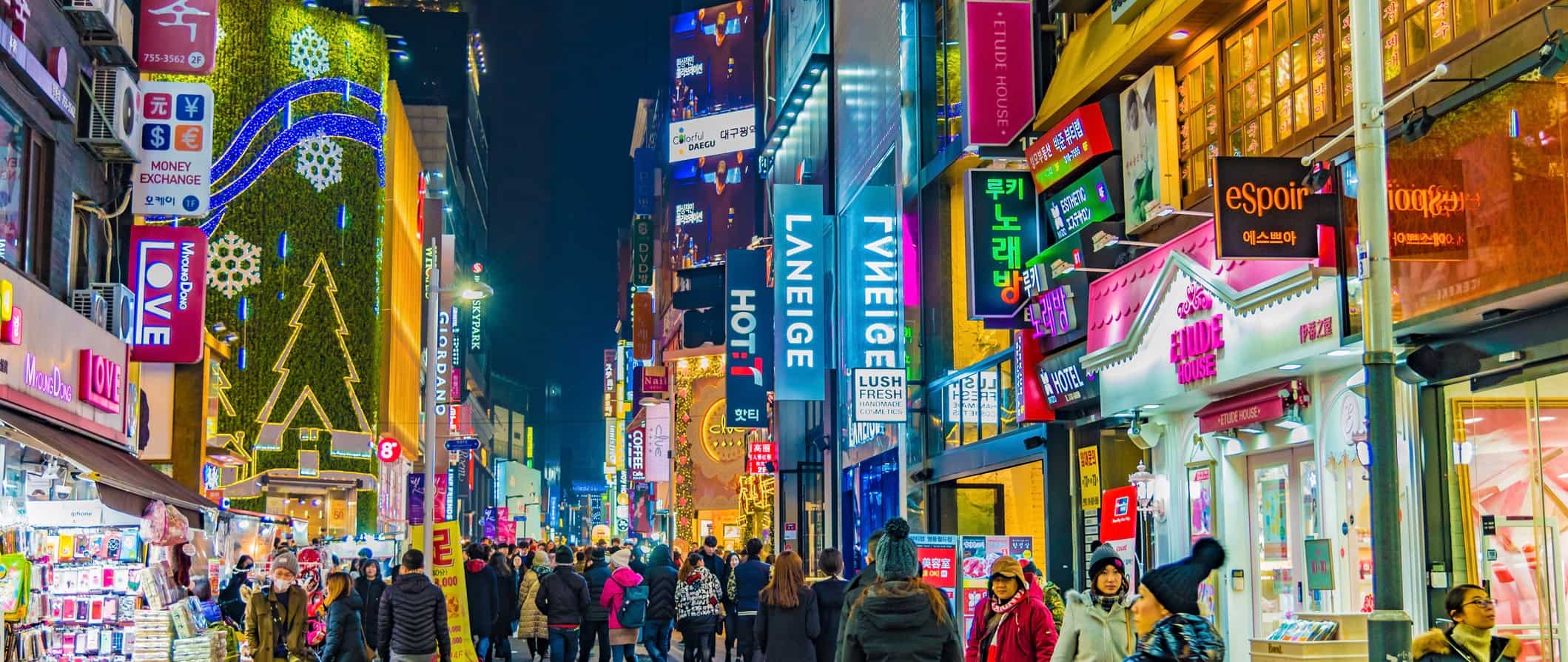
Cheap hotel rooms start at 28,000 KRW for a room that sleeps one, while a double room generally costs at least 40,000 KRW. Expect basic amenities like Wi-Fi, a TV, air conditioning, and an electric teapot. Breakfast is usually not included at budget hotels.
Airbnb is available around the country, with private rooms starting at 25,000-30,000 KRW. For an entire home or apartment, expect to pay at least 50,000-70,000 KRW per night.
While wild camping is illegal in Korea, there are plenty of campgrounds should you want to pitch a tent. Expect to pay 7,000-20,000 KRW for a plot with access to bathroom and shower facilities, and usually even Wi-Fi.
Food – Korean cuisine has developed its own traditions and flavors over the centuries, with a unique emphasis on using uncooked, fermented, and pickled vegetables. Traditional Korean meals are often composed of a variety of side dishes, eaten with short-grain rice. A meal isn’t considered complete unless there’s kimchi on the table.
Common dishes include bulgogi (marinated, grilled beef), samgye-tang (chicken and ginseng soup), bibimbap (a mixed rice bowl), chap chae (a glass noodle dish), and many other noodle and rice dishes. Popular street foods include hotteok (a sweet, filled pancake), tteokbokki (spicy cylindrical rice cakes), and bungeo-ppang (a fish-shaped pastry filled with red bean paste).
Dining out in South Korea is relatively inexpensive. A meal at a casual restaurant serving traditional Korean food is around 9,000-15,000 KRW, while a three-course meal at a mid-range restaurant is around 25,000-30,000 KRW. Expect higher prices in larger cities.
Western food is more expensive. Expect to pay at least 20,000 KRW for a pasta dish at an Italian restaurant.
In terms of fast food, a combo meal (think McDonald’s) is around 7,000 KRW, while a burger is around 4,500 KRW. A typical Korean street food dish is 1,500-3,000 KRW.
A pint of beer is 4,000-5,000 KRW, a glass of wine is 6,000 KRW and up, and a cocktail is 7,000 KRW and up. A latte or cappuccino is 5,000 KRW.
If you cook your own food, expect to pay 50,000-70,000 KRW per week for basic staples like rice, pasta, vegetables, and some meat. Shopping at local markets is the best way to get great fresh produce for cheap.
Backpacking South Korea: Suggested Budgets
On a backpacking budget of 75,000 KRW per day, you can stay in a hostel dorm, cook all your meals, use public transportation and intercity buses to get around, skip the alcohol, and do mostly free activities like walking tours and hiking.
On a mid-range budget of 135,000 KRW per day, you can stay in a private Airbnb or cheap hotel, eat out for most meals at casual restaurants, enjoy a few drinks, take the occasional taxi as well as trains between cities, and do more paid activities like museum visits and food tours.
On a “luxury” budget of 255,000 KRW or more per day, you can stay in a nicer hotel or entire Airbnb apartment, eat out pretty much anywhere you want, drink at the bar, get a high-speed rail pass, and do as many guided tours and activities as you want. This is just the ground floor for luxury, though. The sky is the limit!
You can use the chart below to get an idea of how much you need to budget daily. Keep in mind these are daily averages — some days you’ll spend more, some days less (you might spend less every day). We just want to give you a general idea of how to make your budget. Prices are in KRW.
South Korea Travel Guide: Money-Saving Tips
I find South Korea to be one of the best value countries out there. It’s a really affordable place to visit. Accommodation can add up but food and drinks are generally cheap. Here are some ways to save money when you travel around South Korea:
- Visit the free attractions – With countless museums, shrines, temples, historic neighborhoods, and parks, Korea is filled with opportunities to become immersed in its culture. Many of the nation’s museums and cultural attractions are free, so don’t pass them up!
- Purchase a KORAIL Pass – If you want to travel by train, getting a rail pass is the most economical way to do so. You’ll get unlimited train travel for the time period you choose (2-5-day increments). Prices start at 121,000 KRW.
- Get a transit pass – Most major cities in Korea offer a day pass for public transit, which means great savings if you plan to hop around using buses and subways. Seoul’s day pass costs 15,000 KRW, though the longer you stay, the more you’ll save (a seven-day pass is 64,500 KRW).
- Buy a city pass – If you plan on visiting a lot of attractions, buy a city pass . Seoul and Busan both offer ones that include admission to popular sights, a transit pass, and discounts to restaurants and other attractions. A one-day pass starts at 33,000 KRW.
- Eat from the convenience stores – Convenience stores in Korea offer not only snacks and drinks but prepared boxed meals and cheap alcohol. If you’re on a tight budget, shop in those.
- Take the bus – While the trains are fun, the cheapest way to get around Korea is by bus. They take longer but are much cheaper, so if you have the time, opt for long-distance buses. Just show up at the bus station to reserve your tickets in advance, as most websites and apps are in Korean.
- Stay with a local – Couchsurfing lets you stay with a local for free, cutting your accommodation costs drastically. You’ll get to spend time with someone who can share their tips and advice in exchange for your own travel stories and culture. You can also use the app to meet people for activities (coffee, museum visits, etc.) if you don’t feel comfortable staying with a stranger.
- Drink like the locals – Soju, the national alcohol of Korea, is incredibly cheap, as is domestic beer. Just be careful to not let it sneak up on you — both monetarily and physically. Korea’s drinking culture is infamous!
- Stay in capsule hotels – If you don’t want to Couchsurf or stay in hostels but still want to save money, capsule or pod hotels are great options. These offer just what you need to sleep (a small, basic pod) yet can be surprisingly comfy and much more affordable than a traditional hotel. Prices start as low as 45,000 KRW per night.
- Bring a water bottle – The tap water here is safe to drink, so bring a reusable water bottle to save money and reduce your plastic use. LifeStraw is my go-to brand, as its bottles have built-in filters to ensure that your water is always clean and safe.
Where to Stay in South Korea
South Korea has plenty of budget-friendly hostels and guesthouses. Here are some of my recommended places to stay when you visit:
- Time Travelers Relax Guesthouse (Seoul)
- Zzzip Guesthouse (Seoul)
- Time Travelers party Hostel (Seoul)
- INSIDE Busan (Busan)
- Jeju Hiking Inn (Jeju)
- Backpacker’s Home (Jeju)
How to Get Around South Korea
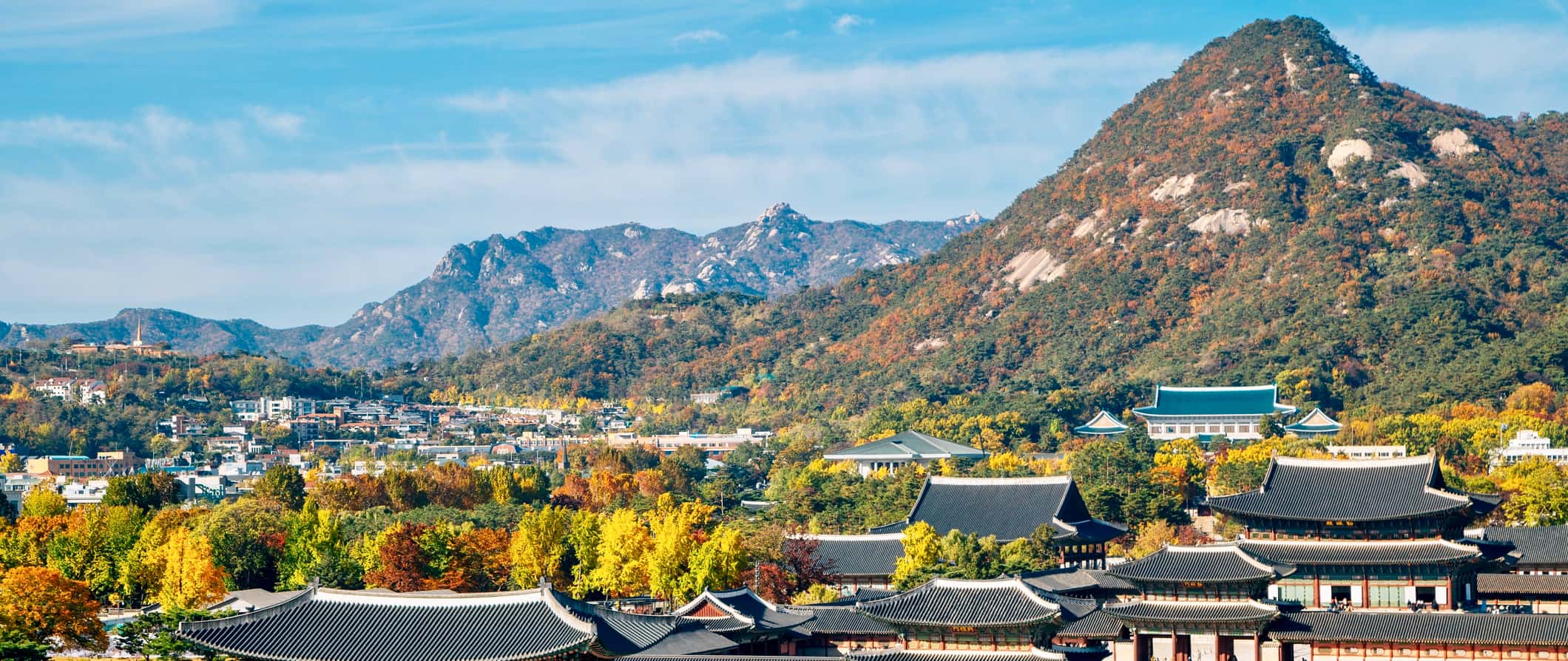
Bus – Taking a long-distance bus is the cheapest and most popular way to get around the country. There are two types: express (which makes few to no stops) and intercity (which travels between smaller destinations and makes more stops).
Your best bet for reserving tickets in advance is to go directly to the bus terminal, as most bus websites and booking apps are in Korean and only accept Korean credit or debit cards.
Pricing depends on what class ticket you choose: standard, luxury, or premium. The four-hour bus ride from Seoul to Busan costs around 36,000 KRW for a standard ticket, Incheon to Busan takes just over four hours and costs 38,000 KRW, and Seoul to Daegu is 29,000 KRW and takes just under four hours.
Train – South Korea has a robust train system that can take you all over the country. Korean Train Express (KTX) is the country’s bullet train, regularly running at speeds up to 305 kilometers (190 miles) per hour. However, these only go between major cities, have limited schedules, and are more expensive, so KTX may not always be the most convenient choice.
KORAIL (the national railway service) operates slower-speed, intercity trains that offer a wider range of schedules and destination choices. You can also get the unlimited KORAIL Pass, which is offered exclusively to international tourists. A two-day adult pass is 121,000 KRW; a five-day adult pass is 210,000 KRW.
As a comparison of the two train types: the journey from Seoul to Busan on a KRX train costs around 90,000 KRW and takes 2.5 hours, while on a regular intercity train, it takes 5.5 hours and costs 47,500 KRW.
The further out you book, the cheaper KTX train prices get, while intercity prices stay about the same. You can book up to a year in advance.
Flying – South Korea is so small that flying around the country doesn’t really make sense. Trains can get you anywhere pretty quickly. However, if you’re very pressed for time and have cash to burn, there are a few budget airlines offering domestic flights between major cities. Most are around one hour long.
The flight from Seoul to Busan is around 30,500 KRW, Seoul to Jeju is 55,000 KRW, and Busan to Jeju is 22,000 KRW. However, you can find flights even cheaper when you book further in advance.
Low-cost airlines in South Korea include the following:
Car rental – Renting a car isn’t incredibly cheap in South Korea. However, it is one of the best ways to explore all the natural wonders that the country has to offer, many of which are inaccessible by public transportation. Expect to pay around 50,000-55,000 KRW per day on a multiday rental. Drivers need to be at least 21 years old.
When to Go to South Korea
Generally, the best times to visit South Korea are March-May and September-November. During these periods, the weather is mild, with temperatures of 10-24°C (50-75°F); prices for accommodation and transportation are lower; and there are fewer crowds.
In the spring, the cherry blossoms are in bloom all over the country, while the fall brings the beautiful colors of the changing leaves. Also, if you plan on doing a lot of hiking, the fall is the best time to visit.
The summer starts with monsoon season, from June through mid-July, and the rest of the summer is hot and humid in the cities (though it cools down in the mountains and along the coasts). Prices for accommodation are also very high during this time.
Winters in South Korea get very cold, with temperatures dipping as low as -6°C (21°F), so unless you plan on skiing, visiting from December through February might not be the best option (though the temples and landscapes look beautiful covered in snow).
How to Stay Safe in South Korea
South Korea is an incredibly safe place to backpack and travel around. Petty crime is rare here, though it never hurts to be cautious on public transportation and around popular tourist landmarks. Always keep your wallet and valuables secure and out of reach, just in case. Violent crime is even more rare.
Solo female travelers should feel safe here. However, the standard safety precautions apply as always. For specific tips, consult one of the many solo female travel blogs on the web.
While scams are super rare in South Korea, to avoid getting ripped off, you can check out this list of common travel scams to avoid .
When hiking, always bring water and sunscreen. Be sure to check the weather before you depart and dress accordingly.
Earthquakes occur regularly in the region, so it’s best to be prepared and download the Emergency Ready app, which the Korean government developed to provide information in English to foreign residents and tourists. It has all kinds of advice and tips for natural disasters, shows you where nearby emergency shelters are, and sends out warnings and notifications should a disaster occur.
If you do experience an emergency, dial 112 for assistance.
Always trust your gut instinct. Make copies of your personal documents, including your passport and ID, and forward your itinerary along to loved ones so they’ll know where you are.
South Korea Travel Guide: The Best Booking Resources
These are my favorite companies to use when I travel. They consistently have the best deals, offer world-class customer service and great value, and overall, are better than their competitors. They are the companies I use the most and are always the starting point in my search for travel deals.
- Skyscanner – Skyscanner is my favorite flight search engine. They search small websites and budget airlines that larger search sites tend to miss. They are hands down the number one place to start.
- Hostelworld – This is the best hostel accommodation site out there with the largest inventory, best search interface, and widest availability.
- Booking.com – The best all around booking site that constantly provides the cheapest and lowest rates. They have the widest selection of budget accommodation. In all my tests, they’ve always had the cheapest rates out of all the booking websites.
- Get Your Guide – Get Your Guide is a huge online marketplace for tours and excursions. They have tons of tour options available in cities all around the world, including everything from cooking classes, walking tours, street art lessons, and more!
- SafetyWing – Safety Wing offers convenient and affordable plans tailored to digital nomads and long-term travelers. They have cheap monthly plans, great customer service, and an easy-to-use claims process that makes it perfect for those on the road.
- LifeStraw – My go-to company for reusable water bottles with built-in filters so you can ensure your drinking water is always clean and safe.
- Unbound Merino – They make lightweight, durable, easy-to-clean travel clothing.
- Top Travel Credit Cards – Points are the best way to cut down travel expenses. Here’s my favorite point earning credit cards so you can get free travel!
South Korea Travel Guide: Related Articles
Want more info? Check out all the articles I’ve written on Asia travel and continue planning your trip:
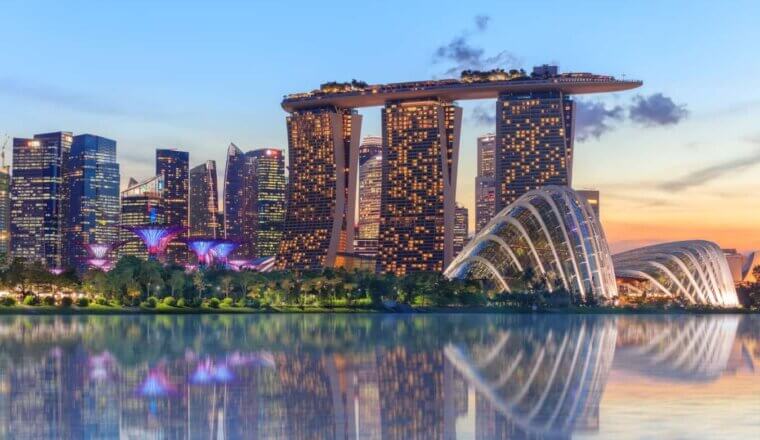
The 5 Best Hotels in Singapore
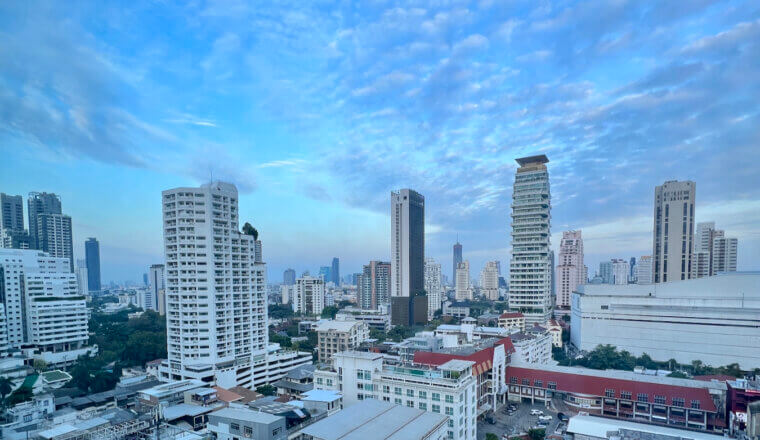
The 7 Best Hotels in Bangkok

The 4 Best Hostels in Singapore
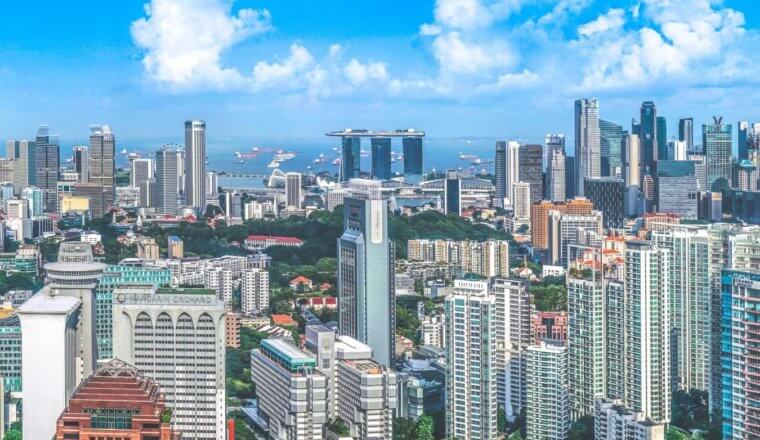
Where to Stay in Singapore: The Best Neighborhoods for Your Visit
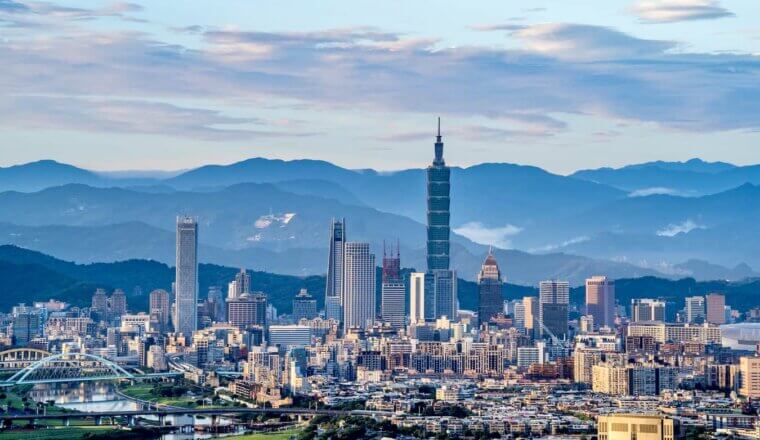
The 13 Best Things to See and Do in Taipei
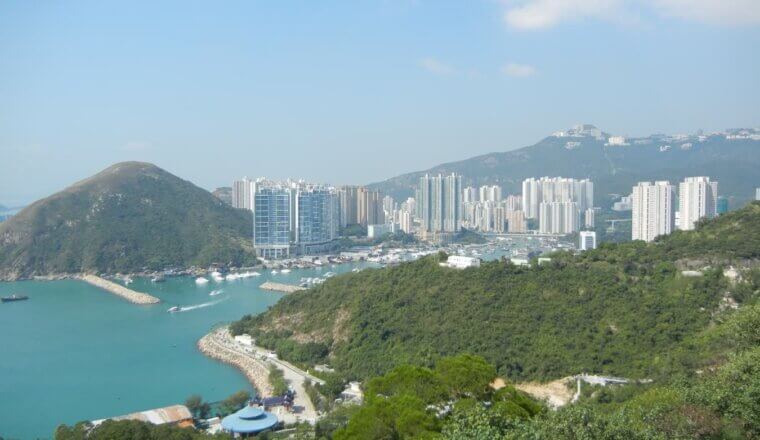
The 23 Best Things to Do in Hong Kong
Get my best stuff sent straight to you, pin it on pinterest.
- Where To Stay
- Transportation
- Booking Resources
- Related Blogs
Travel Guide South Korea
Book your individual trip , stress-free with local travel experts
- roughguides.com
- South Korea
- Travel guide
- Local Experts
- Travel Advice
- Accommodation
Plan your tailor-made trip with a local expert
Book securely with money-back guarantee
Travel stress-free with local assistance and 24/7 support
The Korean peninsula is a tantalizingly unexplored slice of East Asia – a pine-clad land of mountains, misty archipelagos and rice paddies of emerald green, studded with urban pockets of incomparable joie de vivre . While its troubled history has made Korea’s very existence nothing short of miraculous, amazingly its traditions and customs have largely survived intact – and for visitors, this highly distinctive culture is an absolute joy to dive into.
Where to go in South Korea
Country titles, the creation of hangeul, japanese occupation, the taegeukki, winter sonata, tailor-made travel itineraries for south korea, created by local experts.

14 days / from 3800 USD
Culture & Island life
Experience the highlights of Korea with a private guide by your side. Fascinating Seoul with a day trip to the DMZ, followed by days in Gyeongju and Busan. Afterwards, leave the mainland and fly to Jeju Island. Enjoy the crystal blue waters and island culture.

11 days / from 2400 USD
Highlights of Korea
From the skyscrapers of Seoul to traditional villages - this itinerary packs culture, history and cuisine in one compact itinerary. Enjoy a two-night temple stay as well as in-depth guided excursions in Seoul, Gyeongju, Yeosu, and Jeonju.

7 days / from 1950 USD
Temples and Nature in Korea
Start your Korean adventure in Busan. Continue to Yeosu and Suncheon, discovering temples and landscapes on the way. In Suncheon, you will stay at a Korean Buddhist temple. Proceed to the Bamboo Forest of Jeonju before heading to Seoul.
Having gone their separate ways in 1953 after the catastrophic Korean War – essentially a civil war, but one largely brought about by external forces, which left millions dead and flattened almost the whole peninsula – the two Koreas are now separated by the spiky twin frontiers of the Demilitarized Zone. North Korea has armed itself to the teeth since 1953, stagnated in its pursuit of a local brand of Communism and become one of the least accessible countries in the world. Unbelievably, many foreigners seem to expect something similar of South Korea , which shows just how well kept a secret this fascinating place really is: beyond the glittering city of Seoul, gimchi , dog meat and taekwondo , little is known about the country in the outside world (and in actual fact, one of those four has largely gone the way of the dodo anyway).
After the war, the South gradually embraced democracy and has since gone on to become a powerful and dynamic economy. Its cities , bursting with places to visit, are a pulsating feast of eye-searing neon, feverish activity and round-the-clock business. Here you can shop till you drop at markets that never close, feast on eye-wateringly spicy food, get giddy on a bottle or two of soju , then sweat out the day’s exertions at a night-time sauna. However, set foot outside the urban centres and your mere presence will cause quite a stir – in the remote rural areas life continues much as it did before the “Economic Miracle” of the 1970s, and pockets of islands exist where no foreigner has ever set foot.
And for all its newfound prosperity, the South remains a land steeped in tradition . Before being abruptly choked off by the Japanese occupation in 1910, an unbroken line of more than one hundred kings existed for almost two thousand years – their grassy burial mounds have yielded thousands of golden relics – and even the capital, Seoul, has a number of palaces dating back to the fourteenth century. The wooden hanok housing of decades gone by may have largely given way to rows of apartment blocks, but these traditional dwellings can still be found in places, and you’ll never be more than a walk away from an immaculately painted Buddhist temple . Meanwhile, Confucian-style formal ceremonies continue to play an important part in local life, and some mountains still even host shamanistic rituals.
As for the Korean people themselves, they are a real delight: fiercely proud, and with a character almost as spicy as their food, they’re markedly eager to please foreigners who come to live or holiday in their country. Within hours of arriving, you may well find yourself with new friends in tow, racing up a mountainside, lunching over a delicious barbequed galbi , throwing back makkeolli until dawn, or singing the night away at a noraebang . Few travellers leave without tales of the kindness of Korean strangers, and all of them wonder why the country isn’t a more popular stop on the international travel circuit.
Korea is still something of an unknown territory, and more than half of all its visitors get no further than Seoul. One of the largest and most technically advanced cities in the world, the capital regularly confounds expectations by proving itself steeped in history. Here, fourteenth-century palaces, imperial gardens, teeming markets and secluded tearooms continue to exude charm among a maze of skyscrapers and shopping malls. From Seoul, anywhere in the country is reachable within a day, but the best day-trip by far is to the DMZ, the strip of land that separates the two Koreas from coast to coast.

Gyeonggi, the province that surrounds Seoul, is a largely unappealing area dissected by the roads and railways that snake their way into the capital, but two of its cities certainly deserve a visit: Suwon, home to a wonderful UNESCO-listed fortress dating from the late eighteenth century; and cosmopolitan Incheon, where you can eat some of the best food in the country before making your way to the islands of the West Sea. By contrast, the neighbouring province of Gangwon is unspoilt and stuffed full of attractions – in addition to a number of national parks, of which craggy Seoraksan is the most visited, you can head to the unspoilt beaches and colossal caves that surround the small city of Samcheok, or peek inside a genuine American warship and North Korean submarine north of the sleepy fishing village of Jeongdongjin.
Stretching down from Gangwon to the South Sea lie the markedly traditional Gyeongsang provinces, home to some of the peninsula’s most popular attractions. Foremost among these is gorgeous Gyeongju; capital of the Silla dynasty for almost a thousand years, and extremely laid-back by Korean standards, it’s spotted with the grassy burial tombs of the many kings and queens who ruled here. There’s enough in the surrounding area to fill at least a week of sightseeing – most notable are Namsan, a small mountain area peppered with trails, tombs and some intriguing Buddhas, and the sumptuously decorated Bulguksa temple, another sight on the UNESCO World Heritage list. Although less picturesque as a town, Andong is almost as relaxed as Gyeongju, and a superb base from which to access Dosan Seowon, a remote Confucian academy, and the charmingly dusty village of Hahoe, a functioning showcase of traditional Korean life. The region’s rustic charm is actually best appreciated offshore on the windswept island of Ulleungdo, an extinct volcanic cone that rises precipitously from the East Sea, and where tiny fishing settlements cling barnacle-like to its coast. Thrills with a more urban flavour can be had in Busan, Korea’s second city, which has an atmosphere markedly different from Seoul; as well as the most raucous nightlife outside the capital, it has the best fish market in the country, and a number of excellent beaches on its fringes.
Even more characterful are the Jeolla provinces, which make up the southwest of the peninsula. Left to stagnate by the government while Korea’s economy kicked into gear, they have long played the role of the renegade, though this energy is now being rechannelled. Violent political protests took place in regional capital Gwangju as recently as 1980, though the city has reinvented itself to become one of the artiest and most business-savvy in the land. Jeonju has a similar feel, plus a delightful district of traditional hanok housing, and is justly famed for its wonderful, flavoursome cuisine. Earthy Mokpo is the hub for ferry trips to a mind-boggling number of West Sea islands, dotted with fishing communities where life has changed little in decades, while inland there are a number of excellent national parks.
The Chungcheong provinces at the centre of the country are bypassed by many travellers, but this is a shame, as they contain some fine sights. The old Baekje capitals of Gongju and Buyeo provide glimpses of a dynasty long dead, Daecheon beach hosts a rumbustious annual mud festival that may well be Korea’s most enjoyable event, and there are temples galore – the gigantic golden Buddha at Beopjusa is surrounded by 1000m-high peaks, while the meandering trails and vivid colour schemes at Guinsa make it the most visually stimulating temple in the land.
Lying within a ferry ride of the mainland’s southern shore is the island of Jeju, a popular honeymoon destination for Koreans. While it’s undoubtedly a touristy place, it has its remote stretches and anyone who has climbed the volcanic cone of Hallasan, walked through the lava tubes of Manjanggul or watched the sun go down from Yakcheonsa temple will tell you the trip is more than worthwhile.
And finally, of course, there’s North Korea. A visit to one of the world’s most feared and most fascinating countries will instantly earn you kudos – even experienced travellers routinely put the DPRK at the top of their “most interesting” list. Visits don’t come cheap and can only be made as part of a guided tour, but the country’s inaccessibility brings an epic quality to its few officially sanctioned sights.
Discover more places in South Korea

- Gyeongsang Travel Guide
- Jeolla Travel Guide
- Seoul Travel Guide
The Korean peninsula is split into the Republic of Korea (South Korea) and the Democratic People’s Republic of Korea (North Korea). The former is referred to throughout the site as “Korea”; this is how locals refer to their nation when talking to outsiders, though in Korean they use the term “ Hanguk ”. North Korea has, where necessary, been referred to as such, or as “the DPRK”; North Koreans’ own word for both country and peninsula is “ Choson ”.
One thing that will strike you on a trip around Korea is hangeul , the peninsula’s distinctive, almost Tetris-like alphabet. Amazingly, this was a royal creation, having been the brainchild of King Sejong in the 1440s. Most of this creative king’s subjects were unable to read the Chinese script used across the land at the time, so he devised a system that would be easier for ordinary people to learn. Sejong was forced to do much of his work in secret, as the plan did not go down well with the yangban – Confucian scholars who were even more powerful than the royalty at the time. As the only truly educated members of society, the yangban argued fiercely against the change in an effort to maintain their monopoly over knowledge.
Hangeul experienced periodic bursts of popularity, but was almost erased entirely by the Japanese during their occupation of the peninsula (1910–45). However, it’s now the official writing system in both North and South Korea, as well as a small autonomous Korean pocket in the Chinese province of Jilin; it’s also used in Bau-Bau, a small town in Indonesia.
The alphabet, while it appears complex, is surprisingly easy to learn , and demonstrating that you can read even a handful of simple words will generate gasps of admiration across Korea. Just a few hours of hard study should suffice.
• The Korean peninsula is split in two by the 4km-wide Demilitarized Zone (DMZ), sharing borders with China and – for about 20km, south of Vladivostok – Russia. These frontiers form a northern boundary with North Korea – the “Democratic People’s Republic of Korea” – whose population of around 24 million live in an area half the size of the United Kingdom. South Korea , also known as the “Republic of Korea”, is slightly smaller and has a population of 51 million, making it the world’s 26th most populous country.
• Ethnic Koreans dominate the peninsula's population, making North and South Korea two of the most ethnically homogeneous societies on earth. Before splitting, both were traditionally Buddhist nations – though deeply steeped in Confucianism and shamanistic ritual. Since then the North has followed Juche, a local brand of Communism, while in the South Christianity has become the most popular religion.
• Before the Japanese occupation in 1910, the Silla, Goryeo and Joseon dynasties were ruled over by an unbroken run of 116 monarchs , dating back to 57 BC.
• The economies of South and North Korea were almost equal in size until the mid-1970s. The “Economic Miracle” that followed in the South has propelled it to the cusp of the world’s top ten economies, while the North languishes just above 100th place.
On even a short trip around the country you’re more than likely to stumble across a special event of some sort. Many are religious in nature, with Buddhist celebrations supplemented by Confucian and even animist events. Most festivals are concentrated around spring and autumn, but there are many spread throughout the year. If you’re heading to one, don’t be shy – the locals love to see foreigners joining in with traditional Korean events, and those who dare to get stuck in may finish the day with a whole troupe of new friends.
Though there are some crackers on the calendar, it must be said that a fair number of Korean festivals are brazenly commercial, making no bones about being held to “promote the salted seafood industry”, for example. Other festivals can be rather odd, including those dedicated to agricultural utensils, clean peppers and the “Joy of Rolled Laver” – you’ll easily be able to spot the duds. The most interesting events are highlighted below, though bear in mind that celebrations for two of the big national festivals – Seollal , the Lunar New Year, and a Korean version of Thanksgiving named Chuseok – are family affairs that generally take place behind closed doors.
Cherry blossom festivals Usually early April. Heralding the arrival of spring, soft blossom wafts through the air across the country, a cue for all good Koreans to lay down blankets at parks or riverbanks, barbeque some meat and throw back the soju .
Jeonju International Film Festival w www.jiff.or.kr . Last week of April. Smaller and more underground than the biggie in Busan, JIFF focuses on the arty, independent side of the movie industry.
Buddha’s Birthday Late May. A public holiday during which temples across the land are adorned with colourful paper lanterns; there’s an even more vibrant night parade in Seoul.
International Mime Festival w www.mimefestival.com . May. Held in the Gangwonese capital of Chuncheon, this foreigner-friendly event is a showcase of soundless talent.
Dano Usually June. A shamanist festival held on the fifth day of the fifth lunar month, featuring circus acts, ssireum wrestling, mask dramas and a whole lot more. The city of Gangneung is host to the biggest displays.
July–August
Boryeong Mud Festival w www.mudfestival.or.kr . Late July. This annual expat favourite pulls mud-happy hordes to Daecheon Beach for all kinds of muck-related fun.
International Puppet Festival Aug. Puppets and their masters come from around the world to flaunt their skills in Chuncheon, a city in Gangwon province.
Firefly Festival Aug. Glow worms are the tiny stars of the show at this modest night-time event, which takes place over a weekend near Muju. One unexpected treat is the chance to don a firefly costume.
September–November
Gwangju Biennale w gb.or.kr. Sept–Nov. A wide-ranging, two-month-long festival of contemporary art, the biennale usually takes place on alternate autumns, though it has also been held in spring.
Andong Mask Dance Festival w www.maskdance.com . Late Sept or early Oct. Legend has it that if a person fails to attend a mask festival in their lifetime, they cannot get into heaven, so if you’re in Korea in the autumn you might as well have a crack at salvation by participating in one of the country’s most popular events – a week of anonymous dancing, performed by the best troupes in the land.
Busan International Film Festival w www.biff.kr . Usually Oct. One of Asia’s biggest such events, BIFF draws in big-shots and hangers-on for a week of cinematic fun (see Busan festivals ).
Baekje Festival w www.baekje.org . Early Oct. This annual event commemorating the Baekje dynasty is held each year in the old Baekje capitals of Gongju and Buyeo.
World Martial Arts Festival Usually Oct. A week-long series of international fisticuff action, held each year in Chungju.
Gimchi Festival Late Oct. In Gwangju. You’ll be able to see, smell and taste dozens of varieties of the spicy stuff, and there’s even a gimchi -making contest for foreigners keen to show off.
Pepero Day Nov 11. A crass marketing ploy, but amusing nonetheless – like Pocky, their Japanese cousins, Pepero are thin sticks of chocolate-coated biscuit, and on the date when it looks as if four of them are standing together, millions of Koreans say “I love you” by giving a box to their sweethearts, friends, parents or pets.
If you’ve done any sightseeing in Korea, you’ll no doubt have come across information boards telling you when, or how often, certain buildings were burnt down or destroyed by the Japanese. The two countries have been at loggerheads for centuries, but the 1910–45 occupation period caused most of the tension that can still be felt today. In this age of empire, Asian territory from Beijing to Borneo suffered systematic rape and torture at the hands of Japanese forces, but only Korea experienced a full-scale assault on its national identity . Koreans were forced to use Japanese names and money, books written in hangeul text were burnt and the Japanese language was taught in schools. These measures were merely the tip of the iceberg, and Japan’s famed attention to detail meant that even the tall trees were chopped down: straight and strong, they were said to symbolize the Korean psyche, and they were replaced with willows which drifted with the wind in a manner more befitting the programme. The most contentious issue remains the use of over 100,000 comfort women , who were forced into slave-like prostitution to sate the sexual needs of Japanese soldiers.
The atomic bombs that brought about the end of the World War II also finished off the occupation of Korea, which slid rapidly into civil war. This post-occupation preoccupation kept both factions too busy to demand compensation or apologies from Japan – they were, in fact, never to arrive. While some countries have bent over backwards to highlight wartime misdeeds, Japan has been notoriously stubborn in this regard – its prime ministers have regularly paid respects at Yasukuni , a shrine to those who died serving the empire, but notably also to at least a dozen Class A war criminals, and school textbooks have increasingly glossed over the atrocities. This has led to repeated and continuing protests; surviving comfort women, having still not been compensated, hold weekly demonstrations outside the Japanese Embassy in Seoul. Korea, for its part, has failed to debate successfully the role of local collaborators during the resistance, or to acknowledge fully in its own schoolbooks and museums the foreign influences that ended both the Japanese occupation and the Korean War.
South Korea’s national flag – the Taegeukki – is one of the most distinctive around, and is heavily imbued with philsophical meaning. The design itself has changed a little since its first unveiling in the 1880s, though its fundamental elements remain the same: a red-and-blue circle surrounded by four black trigams, all set on a white background. The puritanical connotations of the white are obvious, whereas the circle and trigrams offer greater food for thought. The four trigams make up half of the eight used in the I Ching , an ancient Chinese book of divination. Each can represent a number of different concepts: moving clockwise from the top-left of the flag, these may be read as spring, winter, summer and autumn; heaven, moon, earth and sun; father, son, mother and daughter; as well as many more besides.
The circle is split into the “Yin–Yang” shape, its two halves representing opposites such as light and dark, male and female, day and night. Though coincidental, connections with the divided Korean peninsula are easy to find, with two opposing halves forming part of the same whole – the red half is even on top.
Korean drama has recently enjoyed enormous popularity across Asia, with snow-filled Winter Sonata the biggest success to date. The story runs as follows: a boisterous girl named Yujin meets withdrawn Junsang on a bus. Despite being total opposites they fall in love and Yujin lends her gloves to her new man, who promises to give them back on New Year’s Eve. He doesn’t turn up, and Yujin hears that he died in a car accident on the way. Fast forward ten years to Yujin’s engagement ceremony, when she thinks that she sees Junsang – now, for some reason, choosing to wear pink lipstick – through the crowd. She later finds out that it isn’t Junsang but Min-hyung , a successful American architect. Yujin ends up working at the same company, and one further car crash later it transpires that unbeknown to Yujin not only is the man Junsang after all, but that he’s Yujin’s half-brother. As the pair part ways, Yujin hands him the blueprints for a beautiful house she’d designed as a farewell present. Of course, they’re not related after all, and when Yujin returns to Korea from France three years later she finds out that Junsang is in fact the half-brother of her erstwhile fiancé. She then happens across the house that she once handed Junsang in blueprint form, finds him inside – now blind, just to heighten the tragedy – and they fall in love once more.
Junsang got hearts racing all over Asia, and Bae Yong-jun , the actor who played him, is now an international superstar whose face is plastered across all kinds of merchandise – just look at the socks on sale in Seoul’s Myeongdong district. Nowhere was he more successful than in Japan, where he is now revered as Yon-sama , a title roughly equivalent to an English knighthood. Junsang also helped the stereotypically strong-but-sensitive Korean male replace the martial arts hero as Asia’s role model, and Korean men now enjoy considerable demand from females across the continent.
Travel advice for South Korea
From travel safety to visa requirements, discover the best tips for traveling to South Korea
- Eating and drinking in South Korea
- Getting around South Korea: Transportation Tips
- Travel Tips South Korea for planning and on the go
- Culture and Etiquette in South Korea
- How to get to South Korea
- Sports and Outdoor activities in South Korea
- Best time to visit South Korea
The Rough Guides to South Korea and related travel guides
In-depth, easy-to-use travel guides filled with expert advice.

Find even more inspiration here

Planning your own trip? Prepare for your trip
Use Rough Guides' trusted partners for great rates
written by Rough Guides Editors
updated 08.01.2024
Ready to travel and discover South Korea?
Get support from our local experts for stress-free planning & worry-free travels.
- Where to stay
- Travel advice
Your Curated, Wanderlust-inducing, Insider's Travel Guide of South Korea
Suggestions.

Wonseo-dong: A Hanok Cluster Off The Beaten Track near Bukchon Hanok Village

MarinePia: Seaside Villas with Private BBQ Terrace & Outdoor Jacuzzi in Namhae

Bukchon Kimchi-jae: Famous Braised Pork Ribs with Aged Kimchi

Hidden Gem in Namhae: Daeguk Mountain Fortress

London Bagel Museum: A Paradise for Bagel Lovers in Seoul
Destinations.

Daegwallyeong
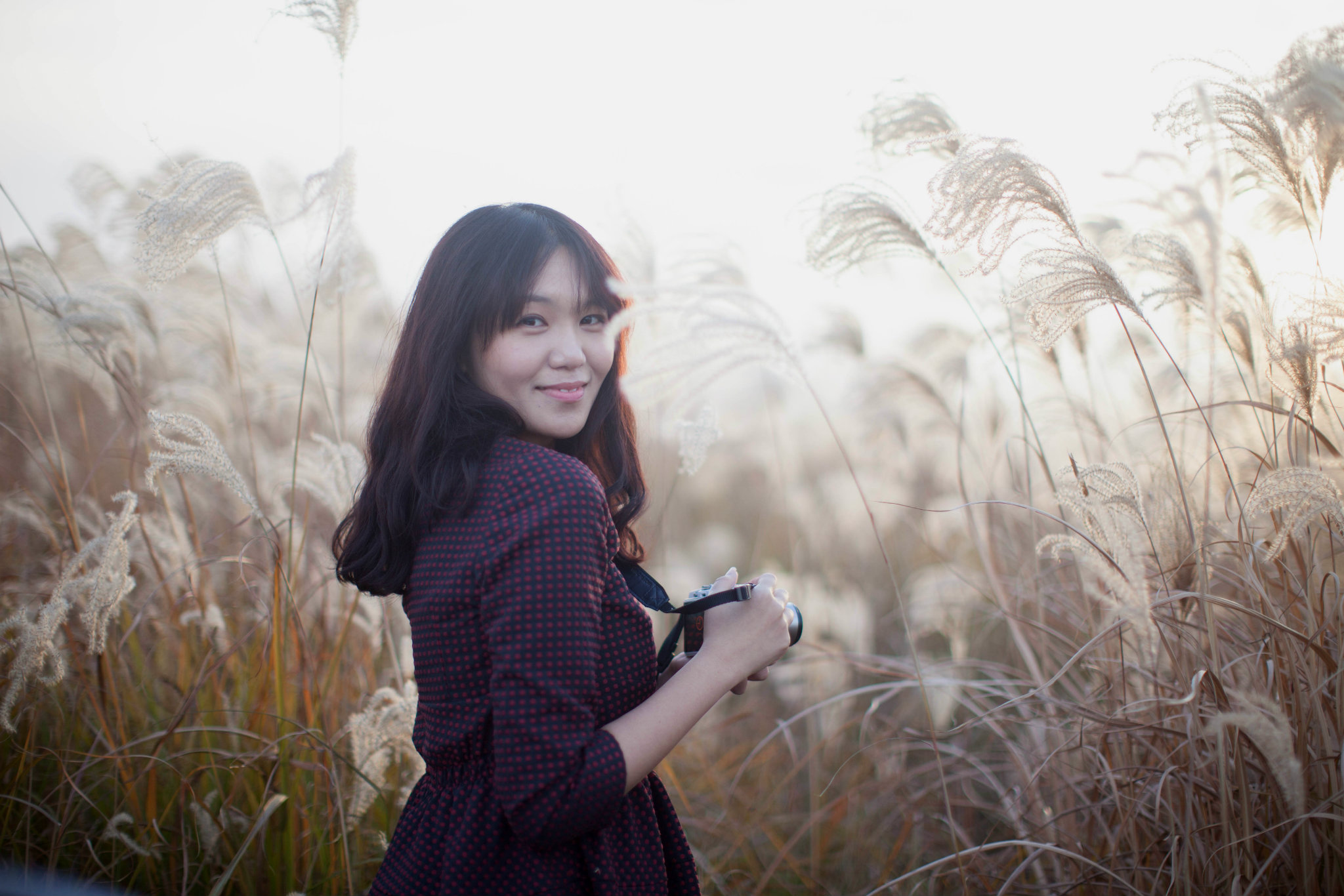
Pheuron Tay is the content creator behind the award-winning Korea Travel Blog – The Calm Chronicle. She enjoys sharing her adventures in South Korea, and providing alternative ideas for exploring the country’s best destinations through her visuals and writings.

Travelogue & Infosite
In ancient time, the Korean Peninsula was known as 朝鮮; “朝” meaning “morning” and “鮮” depicts “calm”. Hence, the destination is also known as “The Land of Morning Calm”. The blog aims to provide in-depth travel tips in South Korea.
Itineraries
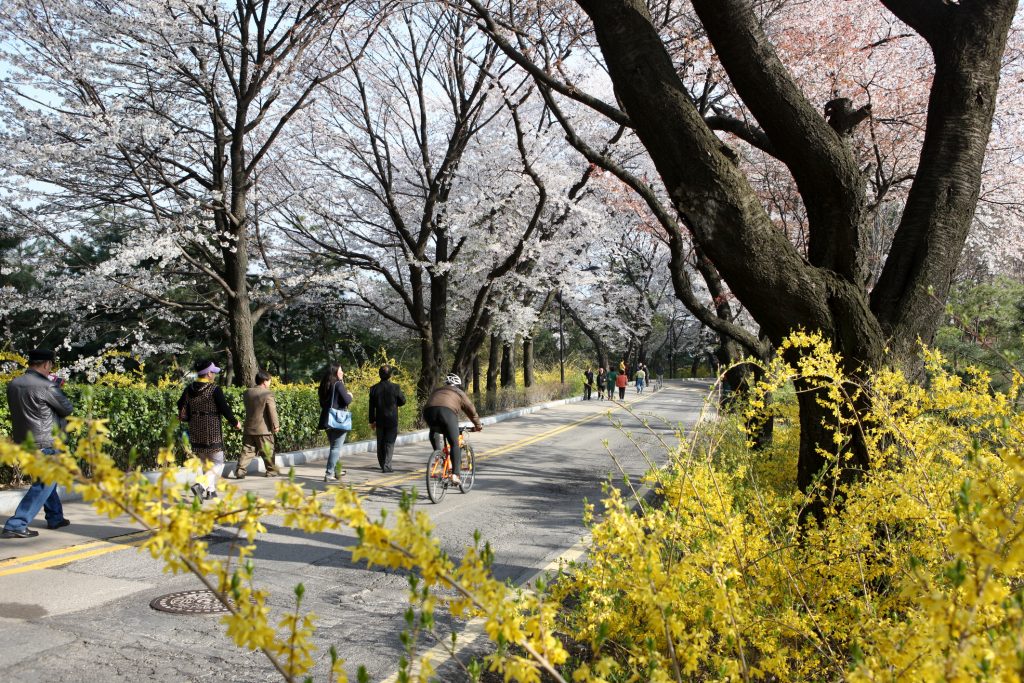
Cherry Blossom in Seoul: Namsan Park Half-day Itinerary
When the cherry blossom season in Seoul approaches, I would receive questions on my Instagram DM or Facebook messages and the questions

Places To Visit in Suncheon: 1 Day Itinerary
There are many places to visit during winter in South Korea. If you are not a ski person, do not enjoy hiking

Jeonju Hanok Village Free & Easy: 3D2N Itinerary
Jeonju is a city with rich history and culture. It has the distinguishing characteristics that set it apart from the other cities

Dumulmeori: Day-trip Itinerary
If you are looking to explore a local attraction close to nature which is off-the-beaten-track yet relatively near to Seoul, Yangsuri’s Dumulmeori

Busan 2D1N Free and Easy Itinerary + Highlight Attractions
This is a mini project dedicated to the city of my heart in South Korea. This free travel brochure includes a 2D1N
Email address:

Haeundae Amso Galbi-jib: A Popular Hanwoo Short Ribs Restaurant in Busan
Haeundae Beach (해운대해수욕장) is no doubt one of the most popular destinations in Busan. Every year, the beach welcomes thousands of visitors,

12 Must-Eat Foods in Jeju Island
Jeju Island is packed full of speciality dishes. From the famous black pork to abalones plucked fresh from the ocean by Jeju’s
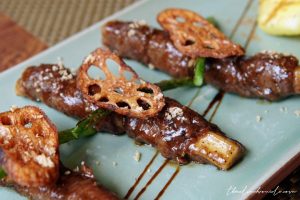
The Dam: Modern Korean Fusion Restaurant in Hongdae
During our recent trip to Seoul, we visited The Dam (더담) a modern Korean fusion restaurant in Hongdae. It is a restaurant

Ji & Tobico’s: Revisiting The Best Albap Restaurant in Busan
Some 13 years ago, as a fellow exchange student at Pusan National University, I visited a restaurant near the campus and I was

Susanna’s Apron: A Hidden Hipster Bakery Cafe at Euljiro
Euljiro (을지로) has indeed become the rising hotspot in metropolitan Seoul. This area was the home ground of printing firms, lighting, tile,

Boriam Temple: The Most Scenic Temple in Namhae
Namhae (남해), the 5th largest island in South Korea, in my opinion, is one of the destinations in the country that is,
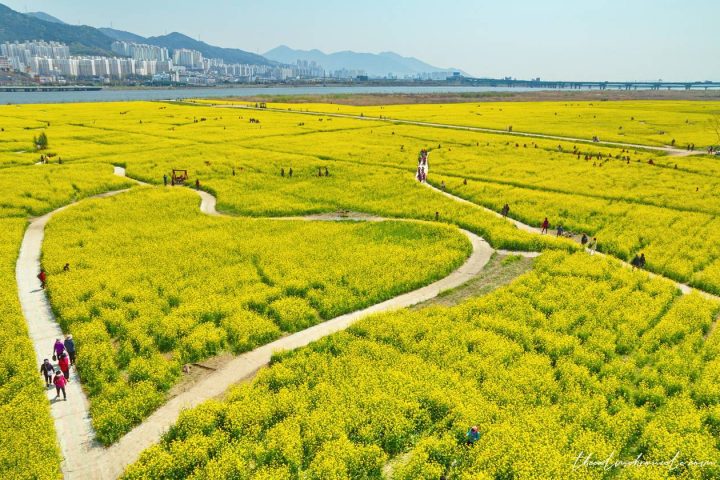
Daejeo Ecological Park: Experience Busan’s Beautiful Spring Day
It was May and we found ourselves back in Busan. It was an unexpected and rather impromptu trip, but we felt very

A Visit to Geumga Plaza: Filming Location for Netflix’s Drama Vincenzo
If you are a Netflix K-drama fan, chances are that you had already known this place through the popular drama series Vincenzo

10 Hidden Winter Wonderlands in South Korea
While the world is in a travel lockdown due to the pandemic and many had to deal with pangs of frustrated wanderlust,

Sun Cruise Resort: The World’s First On-land Cruise Ship at Gangwon-do
If I were to pick the most peculiar hotel experience in South Korea, Sun Cruise Resort & Yacht located at Jeongdongjin Beach

Hotel Cappuccino: A Trendy & Instagrammable Hotel in Gangnam
When I was planning my accommodation in Seoul, I stumbled upon this trendy and affordable hotel in Gangnam. Turns out that it

Rakkojae Seoul: A Hanok Stay at a 130-Year-Old Property at Bukchon Hanok Village
Staycation’s popularity has peaked worldwide after the pandemic began. In South Korea, we see an ‘Oak-cance‘ trend (옥캉스) emerge since the pandemic. The word
@thecalmchronicle


Change location
- Call us today until 6pm 01993 838 925 01993 838 756 or
- REQUEST A QUOTE
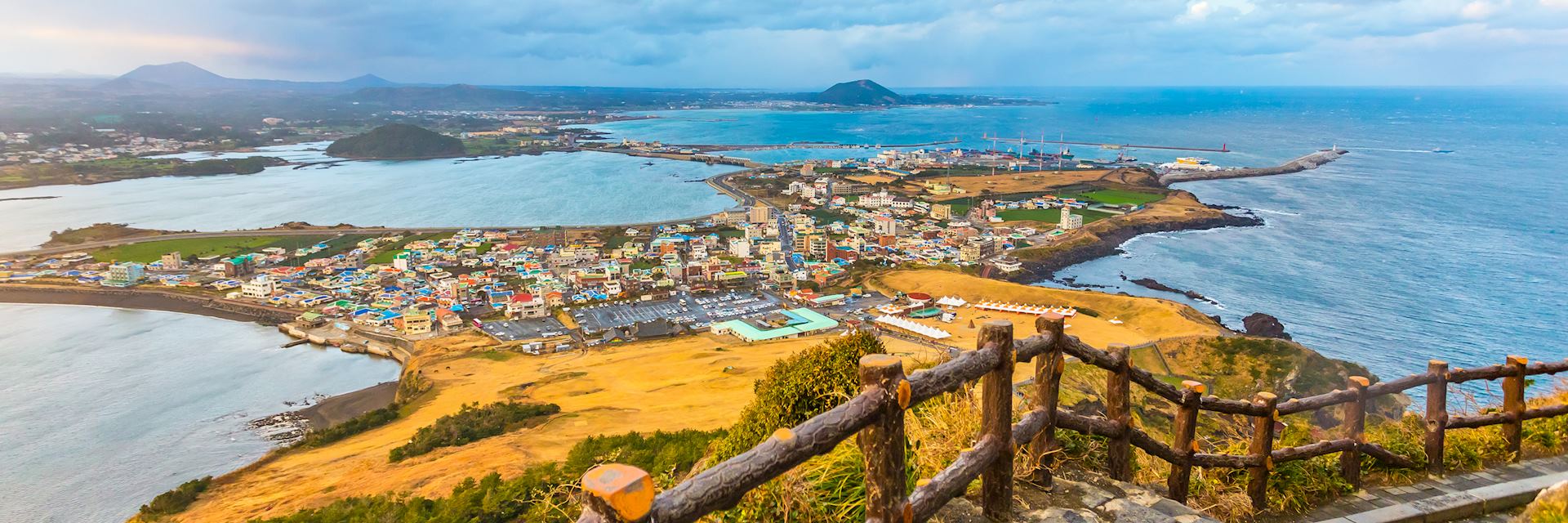
What to do in South Korea: our highlights guide
- Jeju island
By South Korea specialist Rory
South Korea appeals to me because it isn’t easy to define. Its wealth of culinary opportunities echo Southeast Asia, while the modern city architecture rivals Japan. There’s a Chinese flair to the Buddhist-era temples, and a coastline of volcanic geology you’re more likely to find in Indonesia.
I’ve picked out my highlights of South Korea in this guide. They fit together nicely into a two-week trip across the country, from the capital, Seoul, to the coastline and the volcanic islands beyond.
Start your South Korea trip in Seoul
Everyone seems to see Tokyo as this crazy futuristic city, but you should see Seoul . It’s a starkly modern metropolis with a man-made river winding through its core. It makes sense to start your trip to South Korea here — flight connections are good, and the city’s scope of experiences act as an introduction to Korean culture.
Explore Seoul with a local
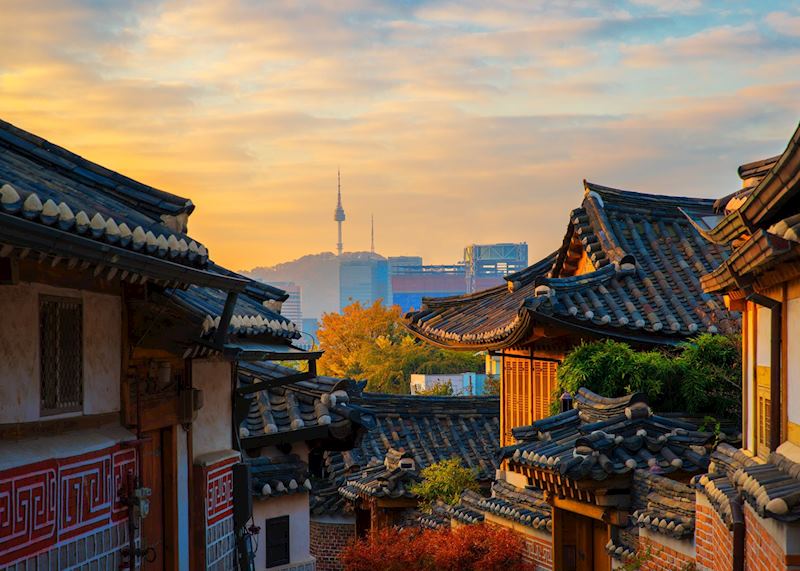
One thing to note is that, due to South Korea’s various occupations and dictatorships, many historical buildings and sights have been destroyed. Instead, you’ll often see remnants or memorials. I strongly advocate having a guide, who can bring them to life.
My guide for Seoul, Kim, had been born in the city and was particularly eager to make sure I experienced every cultural facet, from helping me pick out the best culinary delicacies to divulging her family history.
For an insight into Seoul’s former glory, we visited Gyeongbokgung Palace, a royal palace originally built in 1395. It was systematically destroyed by the Japanese but has since been rebuilt in its original style. It now houses a series of museums and a reconstruction of the royal court.
One part of the city that’s well preserved is the Bukchon Hanok Village, a 600-year-old collection of traditional Korean houses that line a warren of narrow, cobbled lanes. Its residents are used to visitors wandering their streets and are likely to invite you in to peek inside.
After exploring the city, I suggest joining your guide for the Korean national pastime: hiking. Seoul is cradled by mountains — so much so that walls were built between the valleys to protect the city. You can walk along the city walls or venture out into the mountains themselves.
Seoul’s food and drink
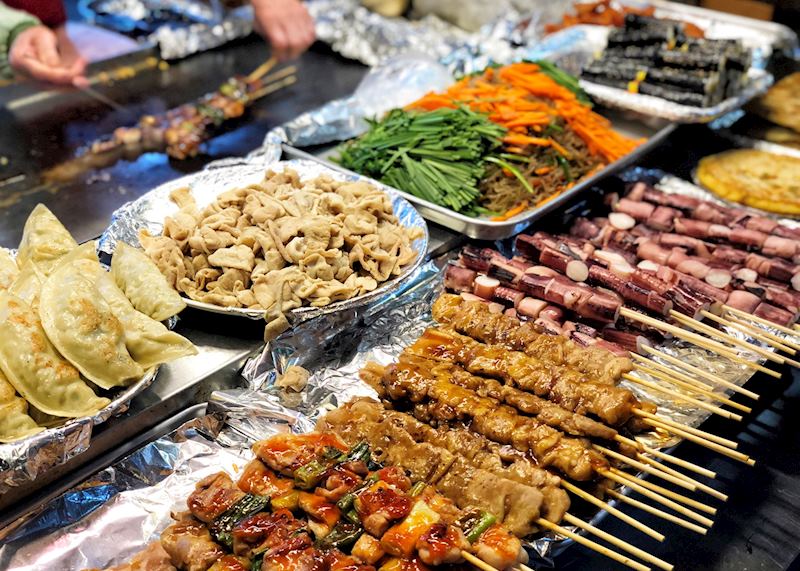
What I love about Korean food is that it hasn’t had a massive boom worldwide, so you’ll get a chance to try dishes you’re unlikely to find anywhere else. There’s everything from traditional Korean barbecue to niche (and often for the brave) seafood.
Again (and I’ll bang this drum for the whole country) you’ll have the best experience if you’re accompanied by a local food enthusiast who can help you navigate the innovative food scene. For example, bindaetteok, savoury mung bean pancakes, sound simple. But, it’s a competitive industry, so you’ll find a line of chefs competing to make the best, most creative dish. Your guide will know which chefs are the real deal.
If you’re after a traditional tipple, ask your guide to take you to a local bar for a glass of soju, a clear rice wine that’s surprisingly drinkable (especially if you’re used to the Southeast Asian equivalents).
Tour the Demilitarized Zone (DMZ)
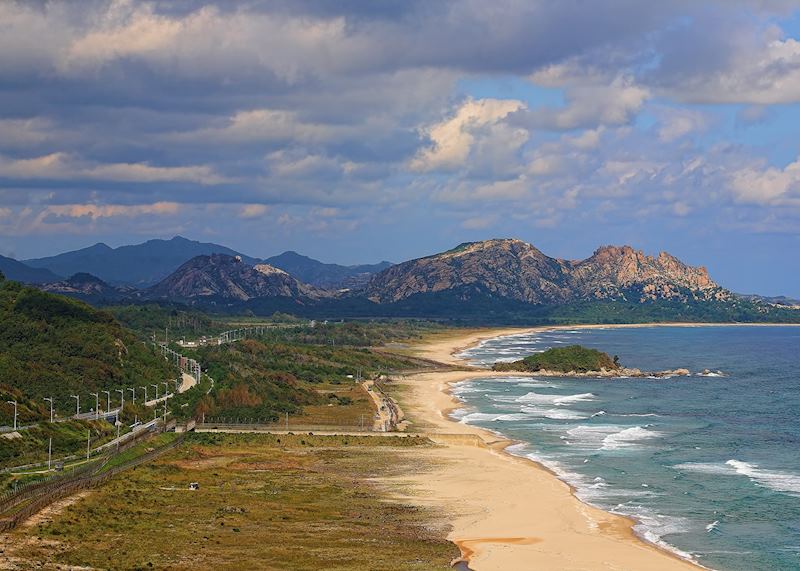
It's tricky to predict exactly what will happen on a tour of the DMZ , as public access to specific areas can be revoked at any time. I think that makes it all the more fascinating.
While you must visit as part of a group coach tour, I suggest having your own guide accompany you as the tour guide tends to be there to usher the group rather than provide information.
You’ll be shown an amphitheatre where peace concerts are regularly held, the Freedom Bridge and a battered train carriage — the last train to make it out of North Korea.
There’s an observatory where you’ll be encouraged to peer into North Korea with binoculars and you’ll also see the villages stuck in limbo between the two countries. You could choose to do an all-day tour which will (probably) take you to the infamous blue-hutted joint security area, or just a half day option which incorporates everything else.
Visit Gyeongju: a former ancient kingdom
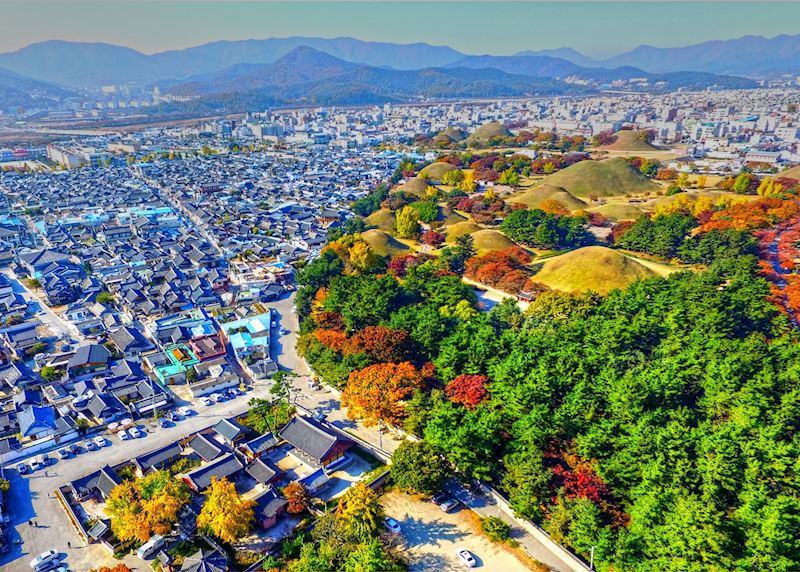
The lakeside city of Gyeongju is a two-hour train ride from Seoul. This was the capital of the Silla dynasty, which ruled the Korean Peninsula from 57 BC – 935 AD. During this period, the city was one of the largest metropolises in the world.
You’ll need two or three nights here to explore the archaeological remnants of the kingdom, as well as its legacy of temples, shrines and pagodas .
Gyeongju’s historical highlights
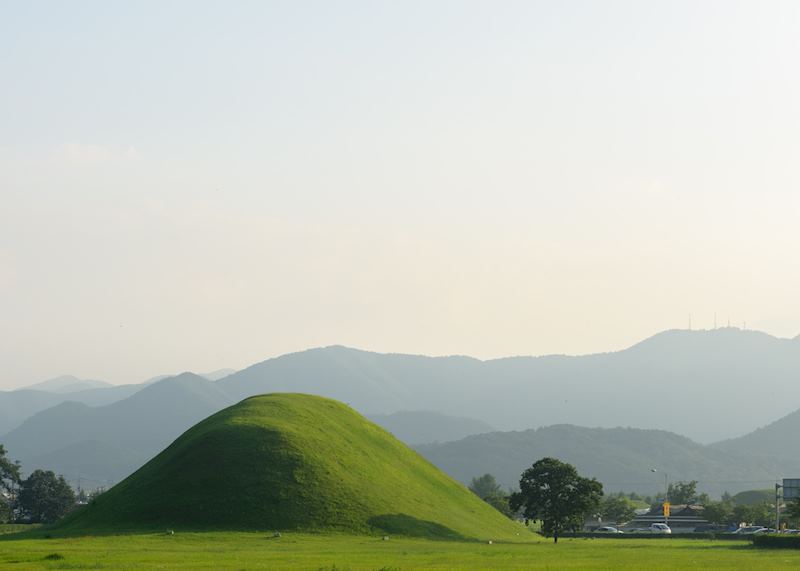
Right in the middle of the city, a cluster of small hills rise from a neatly gardened park. These are the Royal Tombs, a series of Silla-dynasty burial chambers dug into almost perfectly conical man-made mounds.
At first glance that might not seem as particularly dramatic as, say, similar regal burial chambers in Egypt or India . But, I found something striking in their simplicity and elegance, and a series of customs related to the mounds still continue today — including blue-robed attendants who visit the mounds daily to perform a series of Buddhist traditions.
My guide, Truman, brought these curves of earth to life. He explained that the size of the mound doesn’t really reflect the importance of the king inside — rather, the might of his firstborn son who built it.
Other Silla-era sites include the Cheomseongdae tower, one of the world’s oldest observatories, which stands in a park popular with kite-flying children and picnicking families.
For a sample of the dynasty’s architectural prowess, look to the Donggung Palace, which has been partly restored, or the Bulguksa Temple, a UNESCO World Heritage Site and South Korea’s finest example of Buddhist temple construction.
Visit Busan: a vibrant port city

The architects of Busan have no qualms about tall buildings. It’s a one-hour drive from Gyeongju, and you’ll be greeted with a skyscraper city that’s fringed with stretches of beach.
It’s worth visiting one of the golden-sand coastlines (Haeundae is my top choice) but I’d suggest staying in the middle of the city where you’ll find food markets, Buddhist shrines and sleek architecture.
One day with a guide and driver gives you enough time to explore. To get a feel for the city, peer across it from the Busan Tower observation deck, before dipping into delicately painted shrines and historical sites. You can also take a cruise around the bay, which is an interesting mix of scenic coastline and industrial container ships.
Jagalchi Fish Market

Seafood is popular across Korea: you’ll see just how high the demand is as you stroll through Jagalchi Fish Market. Sprawling stalls outside are piled with rows of dried fish, while in the more modern (and pungent) indoor market you’ll find fresh seafood for sale. If something catches your eye, one of the restaurants on the floor above will prepare it for you.
Gamcheon culture village
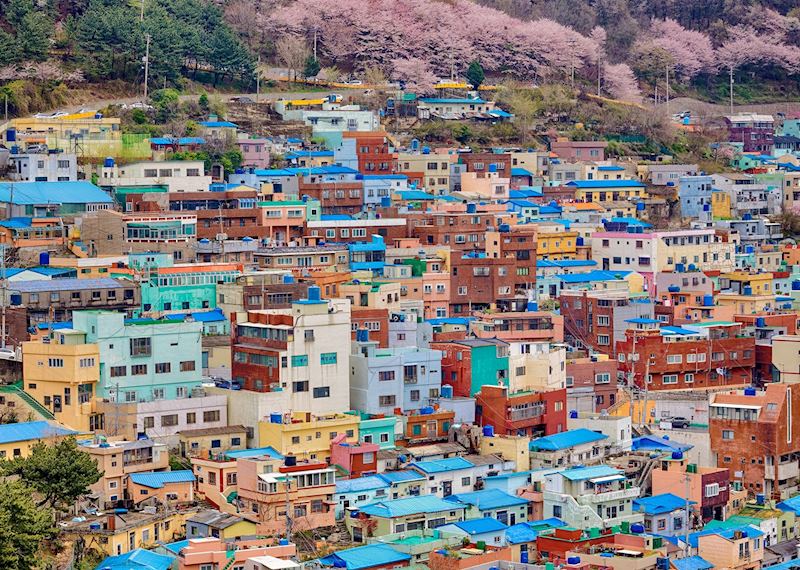
This brightly painted collection of tiny homes looks like (and now partly is) an art installation. But this settlement, surrounded by hills to the west of the city, was actually once a refugee camp. Korean families pushed out of their towns by Japanese occupation in the 1920s were forced to squeeze into this small region.
It’s now flourished into a proud community, with art galleries, artisanal cafés and shops. On taking a guided tour, I found its residents eager to talk and share the collective history of their home.
Jeju Island
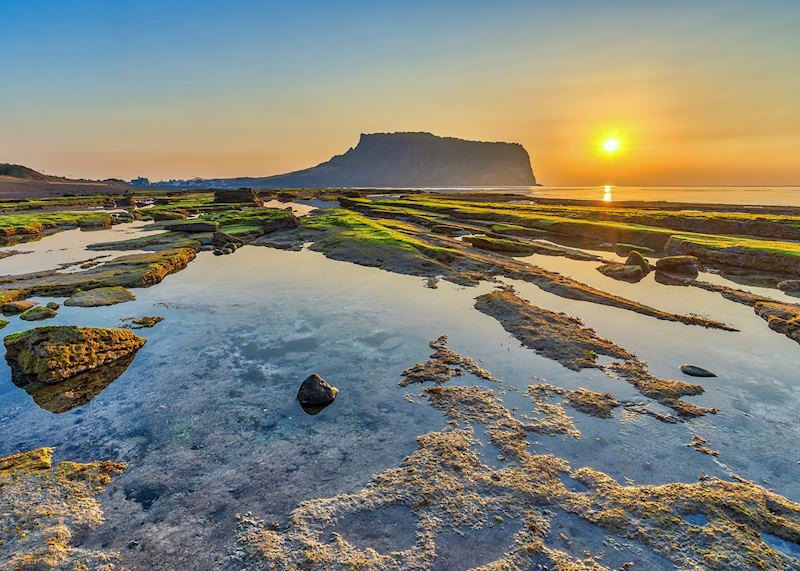
This isn’t the sort of destination you end with a relaxing beach break — but in my book a volcanic island with a gnarled, rural coastline is even better. Jeju Island is a single-coned volcanic island a short flight from the mainland.
There’s a small palace and a few architecturally notable government buildings, but you’re here for the scenery. Do a little research on the island, though, and one of the first things that comes up is Love Land, an erotic sculpture park. Not recommended if you’re with children, but its kitsch, eye-widening artworks are worth a visit for the curious .
Some of the best coastal scenery is in tiny Udo, a satellite island a short ferry ride from Jeju. I hired a bike and found it flat enough to cycle around. You can stop to stroll along its volcanic coastline. The black lava stone blends into soft-sand beaches edged with sheer cliffs that rival those of Indonesia .
Hiking on Jeju Island
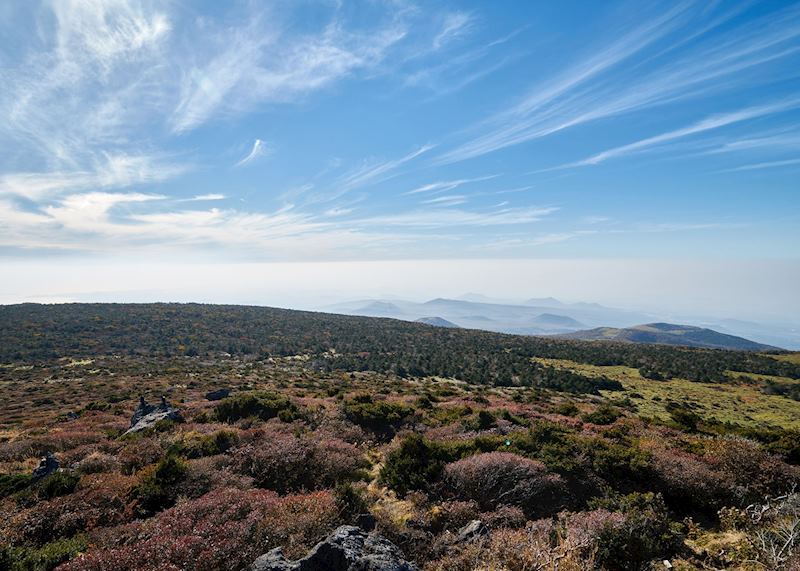
The island’s volcanic cone is the UNESCO World Heritage Site of Hallasan National Park, crowned by Hallasan, South Korea’s highest peak.
I’d say that the ultimate hike on the island is summiting the caldera’s rim. You’ll need to be prepared for an eight-and-a-half-hour return journey, but there’s something very special about being on top of the skyline’s only peak, surrounded by a serrated coastline and the East China Sea.
The route’s clearly marked so you don’t necessarily need a guide, but we can provide you with detailed notes to refer to along the way, particularly as the water refill points can be easy to miss. Make it to the summit and you can walk around the edge of the caldera, peering into the inky-blue lake inside.
If you’re after an easier walk, Seongsan, known as sunrise peak, is the remains of a smaller secondary volcano — just the caldera is left. This almost bowl-shaped piece of rock is filled with a circle of bright green grass. It’s a short, steep climb to its highest point, and, funnily enough, is ideal for catching the sunrise.
Start planning your trip to South Korea

A family adventure in South Korea
11 days from £5,080pp
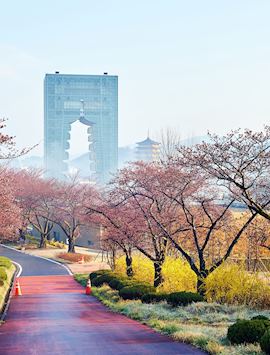
Classic South Korea tour
13 days from £5,120pp
Start thinking about your experience. These itineraries are simply suggestions for how you could enjoy some of the same experiences as our specialists. They’re just for inspiration, because your trip will be created around your particular tastes.
Further reading
- A brief introduction to Korean food
- Surfing the Hallyu: a guide to South Korea’s pop culture
- What to do in Japan: our highlights guide
- Japan’s seasons: cherry blossom and beyond
- What to do in China: our highlights guide
Plan your trip
Tell us about your plans and one of our specialists will plan a unique trip for you...
Request our brochure, The World Your Way

Order your digital copy via email.
About South Korea
South Korea is well known for its rich culture, delicious food and stunning landscape. Found in the southern half of the Korean Peninsula Korea is one of the most densely populated countries in the world with a population estimated at over 51 million people.
FREE Resources
Don't miss out on my FREE travel tips and recommendations for traveling in South Korea on my blog!
Popular Blog Posts
Korea Travel Essentials
1. Data & Connectivity 📶
Why should I buy a SIM Card or WiFi Egg?
1) You can share your travel experiences in real-time on social media.
2) You will always have data access to use for navigation apps such as Naver Maps or KakaoMaps. You will need to have a connection to data otherwise you WILL get lost.
3) You can stay in contact with your loved ones from back home easily.
SIM Card vs Pocket Wifi
Whether you choose to use a SIM card or WIFI egg depends on what will work best for your travel needs for your trip. I personally always buy a SIM Card over a WIFI egg based on the PROS.
1) There is no need to carry an extra device i.e. Pocket WiFi
2) Possible to MMS/SMS/Call
3) Provides a local Korean phone number - Some places such as restaurants and cafes require visitors to put down a Korean phone number for a waiting line. If you want to book an appointment e.g. hair or make a reservation for a workshop then having a Korean phone number will allow you to do this.
1) Need an unlocked phone to use a SIM card
POCKET WiFI
1) There is no need to swap your original SIM Card
2) Pocket WiFi can provide a larger amount of data compared to a SIM card. I've generally found I've never 'run out of data' when using a SIM Card. This ultimately depends on what you're using the data for. I mainly use it for basic tasks like navigating around places, translation services, updating my social media and communicating with loved ones back home.
3) Can be connected to multiple devices. This makes it perfect for traveling with family and/or friends and you can split the cost.
1) You need to carry an extra device. This can add weight to your bag, which makes a difference if you're already carrying your phone, camera and other essentials.
2) If you rent a portable WiFi router you will need to return it. This can take up time on your trip which can be used instead for more exploration on your travels.
3) The battery life of a pocket wifi can run out of charge. The battery life drains really quickly if it is used simultaneously.
BEFORE getting a SIM CARD 🚨
Please make sure you check this information before you purchase a SIM Card.
1. Check if your phone is unlocked or not. To check whether your phone is unlocked you can call your mobile phone carrier to unlock it. If you are from Japan, Canada, or the US check with your phone carrier before your trip to Korea. If your phone is locked then you won't be able to use some of the prepaid SIM Cards.
2) Check to see if your device supports GSM network frequencies. To see if your phone is compatible with Korean mobile carrier networks use the link below. Afterwards check if your device supports one of the GSM network frequencies below:
3G Bands: HSDPA 2100MHz/HSDPA+
4G LTE Bands: Band 1(2100MHz), Band 3(1800MHz), Band 8(900MHz)
CHOOSING the right SIM Card Type ❗️
It is recommended that you buy a universal type USIM card, which is compatible with phones using any type of SIM card (Standard, Micro, or Nano-SIM). Most Android phones use a Nano or Micro SIM whilst most iPhones use a Nano-Sim.
If you are choosing to pick up your SIM card in Korea, choose a location that coincides with your arrival destination in the country. For example if you are flying into Incheon Airport, make sure it can be collected at this location.
Where can I buy a SIM card or Pocket WiFi? 💸
The easiest and most convenient way to purchase a SIM card or Pocket WiFi is online before your trip. Alternatively, if you want to buy it in person, you can purchase it at Incheon Airport or at outlets operated by Korean mobile services such as KT, SKT, and LG U+. You can also find SIM cards at convenience stores like Seven-Eleven, CU, and GS25.
Instant Connectivity to Data
To get instant access to data abroad I recommend Airalo. This is an app that allows you to download a prepaid eSIM to your phone in over 190 countries. You can skip waiting for your SIM card to arrive at your home address or pick it up at the location.
Recommendations for SIM Cards & Pocket Wifi ✨
SIM Cards (PICK UP) 📱
I'll talk about T-Money Cards in the section below.
SIM Cards (DELIVERY) 📱
The following options allow purchasers to buy the SIM card online and get it delivered to their home address.
WiFi Pocket 📱
Remember to select the correct pick up destination for your WiFi Pocket.
Staying connected abroad is important for safety and travel. If you don't plan on ordering s SIM card or a pocket WiFi consider getting a VPN. A VPN ensures that your personal information isn't accessed easily by third parties. By using NordVPN to access websites in your home country and have protection when you use public WiFi.
Staying connected abroad is important for safety and travel. If you don't plan on ordering s SIM card or a pocket WiFi consider getting a VPN. A VPN ensures that your personal information isn't accessed easily by third parties. By using NordVPN you can also access websites in your home country and have protection when you use public WiFi.
I've been using NordVPN ever since I moved abroad to South Korea and it has been a lifesaver! Not only does it allow me to access Australian sites and added protection when I connect with WiFi at any airbnbs or hotel.
If you sign up using my link you'll be able to get 63% off a plan!
2. Travel Essentials
Important Etiqutte
🚊 Don't sit in priority seats
💵 There is no tipping culture ~ don't give tips.
🍚 Don't stick your chopsticks in your rice
🤲🏻 Never receive items with one hand. Always use both hands when giving and receiving.
✍🏻 Don't write names in red
🤧 Don't blow your nose at the table
Important Numbers
✆ Tourist Information Center: 1330 (for any other tourism-related assistance)
✆ Emergency Medical Information Center: 1339 (medical assistance for international visitors)
✆ Fire Department: 119 (for general accidents and ambulance)
✆ Police Department: 112 (for theft, assault, and other crimes)
The currency used in South Korea is Korean Won (₩ or KRW). I recommend before you visit South Korea that you exchange money. If you have to exchange money do NOT do it at the airport because you'll get the worst exchange rate.
Travel Insurance
If you’re traveling overseas, don’t forget to purchase travel insurance. I always recommend World Nomads as my preferred travel insurance.
Where Can I Find the Best Flight deals to South Korea?
In order to find the best and most affordable deals I always recommend using a combination of booking websites and the airlines' websites. You'll want to compare the prices as well as what is included in terms of baggage, layovers, etc.
You will most likely be flying into Incheon International Airport, which is located in the city of Incheon.
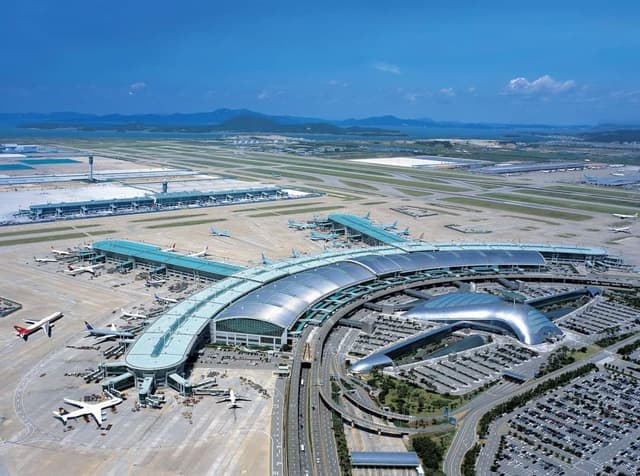
Here are my recommendations for price comparisons.
Accommodation
Where can I find the best local and affordable stays in Korea?
I use a variety of booking platforms for hostels, hotels and airbnbs in South Korea.
If you want all the best stays in South Korea (best areas in each city, recommendations for a temple stay and hanok) check out my guide below.

Activities & Tours
Where can I find and book local tours, activities or tickets for attractions in Korea?
I use a combination of travel booking sites. This isn't sponsored I've just had great experience with both sites for my travels overseas. When I traveled solo in South Korea and to other countries it was great having everything planned for me and I also got to meet some other travelers on my trip.
RECOMMENDATIONS
Don’t miss out on top-rated excursions, attractions, and sightseeing tours in South Korea. From guided local tours to private day trips, Get Your Guide has something for every traveler to enjoy.
Use Klook to find activities, tours, cars, hotels, and tickets to attractions at affordable prices. I love how easy it is to book in advance saving me $$ and time on my trip planning. Klook also offers seasonal activities and tours for South Korea. So if you're visiting in autumn, winter, or spring you'll have to check out the unique local experiences they have to offer. From summer sports, cherry blossom tours, or fall foilage day trips.
Travel Adaptor
Korea has Type C and F plug sockets with a standard voltage of 220. Although you can buy an individual adaptor with these plug sockets I strongly recommend buying a universal or 'world' travel adaptor.
I started using Universal or 'World' travel adapters for my travels instead of buying individual adaptors for every country I would visit. Not only are they affordable but you'll also be saving money in the future because you can re-use them for your future travels to other countries.
Don't miss out on these travel adaptors recommendations!
I've also listed other essential items I use for my travels.
3. Must-Have Apps for South Korea📱
These are essential apps you should download to help your travel, shop, and navigate around Korea.
Reminder - Download the Thatch App.❗️
Download the FREE Thatch app so you can access this interactive guide while you are traveling!
1. Navigation Apps 📱
Kakao Map and Naver Map will be your best friend for navigating and finding recommended cafes and/or restaurants in South Korea. Do NOT use Google Maps because it is not supported and kept up to date. You will often get inaccurate map directions and locations if you use Google Maps.
Both apps are in Korean by default but the mobile apps are available in English. Naver Map is also more English-friendly but I personally found using both apps as the best way for navigate and finding points of interest in South Korea.
Download Naver Map
Download Kakao Map
2. Transportation 🚆
Subway Korea (Navigation & Transportation) 🚆
No, it's not the sandwich place but a subway map app. It provides the most up-to-date maps of the subways in Korea. Simply put your starting station and the destination and it will map out the directions for you.
4. What are the best transport passes?
Korea Rail Pass
The Korea Rail Pass (KR Pass) provides unlimited rides on almost all the trains operated by South Korea’s major railway provider KORAIL.
There are different options for KR Passes including booking a pass to cover trains for flexible 2 or 4 days or 3 or 4 consecutive days. Not only does the KR pass covers 80 routes and +600 stations. The pass offers discounts only available for foreign tourists including on tourist attractions and accommodation.
Seoul Pass
If it's your first time visiting Seoul and you're planning on visiting a lot of sightseeing attractions that require a lot of paying admission consider the Discover Seoul Pass.
The Seoul Pass doubles as a T-money card and an admission ticket to top attractions in Seoul. Not only does this pass give you a T-money card that can be topped up and refunded for any remaining balance.
The pass also gives you discounted tickets to over 101 tourist attractions (within 24, 48, and 72 hours) and free access to over major attractions. If you plan on visiting multiple sightseeing attractions in Seoul that require tickets for admission this is a great option to save money for your travels around Seoul.
Busan Pass
If you're heading to Busan make sure to add this pass to save money on admission to tourist attractions and discounts on public transport fares.
The Busan Pass offers a 24 or 48-hour ‘free pass’ around the city. This includes access to free entry to over 30 major tourist attractions in Busan, special discounts on restaurants, shopping, and tourist attractions, and free use of the city tour bus and pre-paid use of the subway.
Want more insider information about Korea?
I go into more depth about what you need for your trip to South Korea in this one-stop survival guide for Korea! Keep an eye out for the 'Korea Survival Travel Guide' on my Thatch page my subscribing for new releases!
Why Should I Get the Survival Travel Guide?
As an Australian expat that has lived in South Korea since 2022, I know firsthand how it can be overwhelming navigating a new country. That's why I've personally curated a list of places, tips, and information from living and traveling in South Korea. You'll be getting personal recommendations from someone that has lived in Korea compared to the ordinary tourist providing recommendations.
Curious about me? Check out the 'ABOUT ME' section on my website. You can find out about my personal story and FAQS I get asked from my +22k community.
Features of Korea Survival Travel Guide
❗️ Korea Travel Essentials (Data Connectivity, Transport, Language, +8 More Must-Have Apps & More)
🚶🏻♀️ Must Things to know for your trip (Things NO ONE tells you about Korea)
🙋🏻♀️ Answering FAQS about traveling in South Korea (Language Barrier, Best Times and Spots to Visit, Best Ways to Travel, Luggage Storage & More!)
🇰🇷 Essential Korean Vocabulary & Phrases
🚆Getting around South Korea (Transportation) ("What's the best way to travel?")
🛍️ Recommendations on where to shop (shopping districts, brands)
📍Recommended Places to Travel (Seoul and Beyond + Hidden Gems)
.... and lots more!

FAQs about South Korea ❓
In this section I'll be answering frequently asked questions about travelling in South Korea.
Where can I store my luggage?
There are so many different luggage storage options in cities around Korea. From short-term options in subway lockers to long-term storage in the airport and subway stations. You'll be able to reserve a couple of hours, a day, or a multiple-day service. If you want map links for storage lockers and recommended luggage services I've linked them in my Korea survival guide.
When is the best time to visit South Korea?
I personally think Spring or Autumn is the best time to visit South Korea. This is based on my personal preferences because I absolutely loved the cherry blossoms and the autumn foliage. The weather during these seasons is also warmer which makes it perfect for a lot of activities you'll want to experience in Korea such as rental hanboks (traditional Korean dress), day trips exploring the cultural attractions outside, etc.
Note that during spring and autumn, these are peak travel times for both tourists and locals. Expect to find a lot of accommodation and travel (KTX tickets) to be booked out well in advance.
However, I will say that each season in Korea is beautiful and has its own unique charm. These recommendations are based on my personal preferences. As an Australian who prefers warmer weather, I generally prefer travelling in spring or autumn. In Winter, it's still beautiful and there are a lot of fun seasonal activities you'll enjoy.
Must-Know Things For Your Trip
If you're planning a trip to South Korea make sure to read up on these FREE 10 tips for your trip. I'll be covering all the essentials on planning for your trip, Visa requirements, how you can save money on bookings, the best places to visit and more.
Cafe Culture
Where do you recommend for cafe hopping in Seoul?
If you're looking for an one-stop area for cafe-hopping look no further than in Hongdae in Mapo-gu or Garosu-gil in Gangnam. Both areas are known for their trendy local cafes. If you're looking for more charming traditional cafes I'd recommend exploring Samcheong-dong in Jongno-gu.
Here are a few cafe recommendations in Seoul
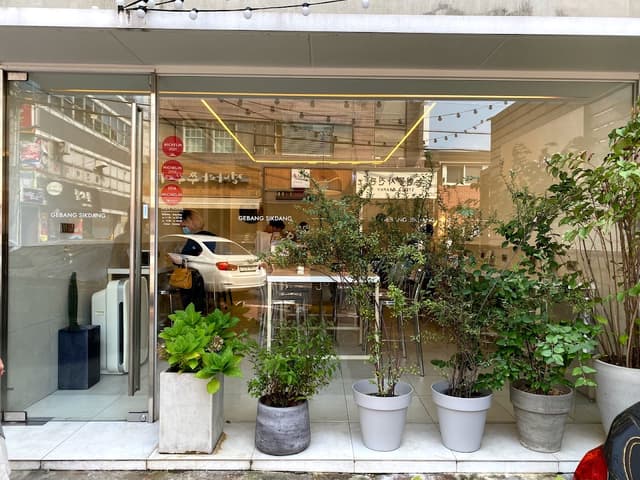
If you want a more in-depth guide on how to find local restaurants and cafes in Korea I go into more detail in my 'Korea Restaurant & Cafe Hopping Guide.' I also share my personal local cafe and restaurant recommendations from living in Korea since 2022.
Want more local cafe & restaurant recommendations?✨
If you're looking for more recommendations for local cafes and restaurants and want more tips on cafe hopping check out my guide below.
Guide Features
☞ More ways to find HIDDEN & local eateries (like a local)
✩Things I Wish I Knew Before about Cafes & Restaurants in Korea
✓Over 290 recommendation cafes & restaurants (Includes Map Links!)
☑︎ Over 30 essential Korean phrases & vocabulary
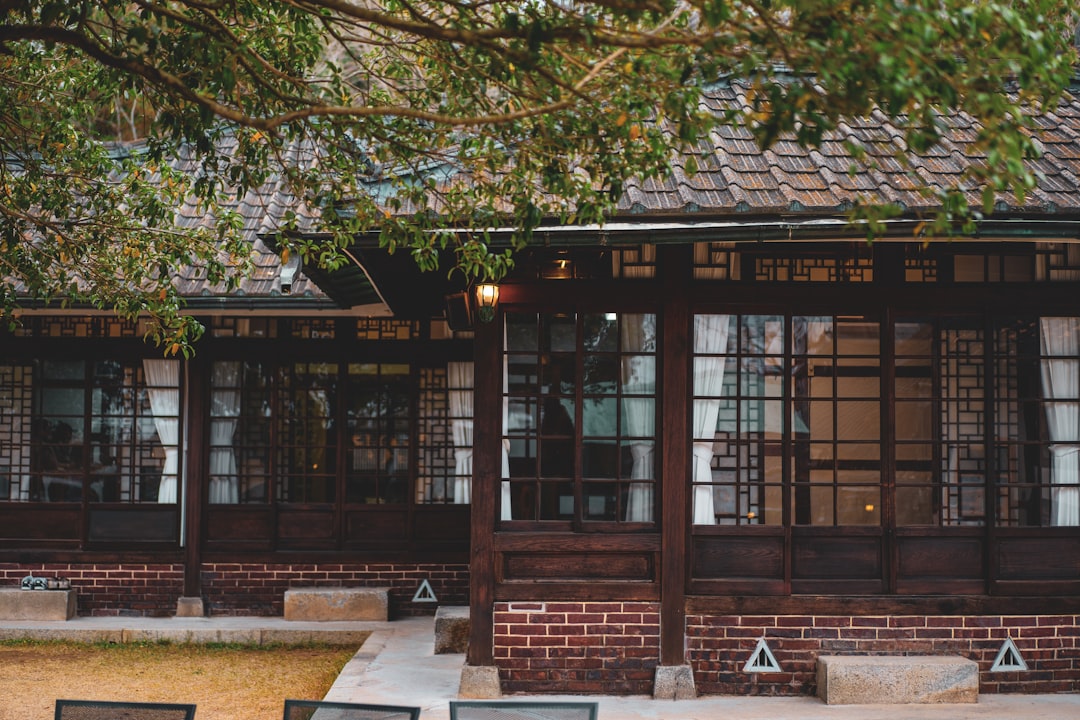
Korean Culture 🇰🇷
How are Koreans reacting to foreigners in your opinion?
I hate to generalise because I think everyone’s experience will differ. As an Asian foreigner in Korea, I’ve never felt like I was going to get scammed or discriminated against (mind you I often get mistaken as Korean). I think Koreans are getting more used to foreigners as tourism is increasing a lot. In general, I think Koreans might be mistaken as a ‘bit cold at first’, and most often it is because they are shy or intimidated to speak English. As long as you show them respect and appreciation they are likely to show the same in return.
Language Barrier 👩🏻🤝👨🏼
Is it easy to get around Korea speaking Korean?
This depends if you are planning to just visit or work here. If you’re only visiting for a trip then I don’t think it’s essential to know Korean but it will make your experience more comfortable and rewarding. You’ll definitely find navigating and ordering at restaurants more easily. I would recommend as a bare minimum to know at least the Korean alphabet (hangeul) as sometimes not all restaurants and cafes have English menus. Knowing a few basic common phrases will also go a long way in making you navigate more easily and perform daily tasks on your travels like ordering at a restaurant, shopping, etc.
TRAVEL ESSENTIAL PHRASES
Yes/ No [네/아니요.] = Ne \ Aniyo
제 이름은 (Kelly) 입니다. = Je ireumeun (Kelly)imnida = My Name is (Kelly)
(실례합니다) = Sillye hamnida = Excuse me
한국말 못 해요 = [hanguk-mal mot haeyo] = I don't speak Korean
죄송합니다. 이해 못 해요 = [Joe-song-ham-nida. ihae mot hae-yo] = I'm sorry, I don't understand.
[영어 할 줄 아세요?] = Yeongeo haljul aseyo? = Can you speak English?
안녕하세요. [an-nyeong-ha-se-yo.] = Hello.
안녕히 계세요. [an-nyeong-hi gye-se-yo.] = Good bye. (When you are the one leaving.)
감사합니다. [gam-sa-ham-ni-da.] / 고마워요. [go-ma-wo-yo.] = Thank you.*
죄송합니다. [joe-song-ham-ni-da.] / 미안해요. [mi-an-hae-yo.] = I’m sorry.*
If you want an entire guide for 'Essential Korean Phrases' for shopping, cafes, restaurants, directions, navigations, and more. Check out my 'Korea Survival Guide' there are over 100 essential phrases to help you speak like a local and help you travel in Korea.
Can you recommend Korean learning resources?
Check out these free Korean learning resources. I've used a combination of these resources at the beginning of my Korean learning journey before investing into paid resources.
Is it necessary to have a Korean phone number (Prepaid SIM Card)?
I would recommend getting a sim card as it makes it easier and more convenient for traveling like navigation and also making reservations, waiting lists, and booking appointments.
Refer to the 'Data & Connectivity' section for more information.
Would you recommend solo travel in South Korea?
It's an awesome idea! You'd be surprised at how many people come to Korea alone as a visitor, exchange students, or for work. For me, I came alone at 23 years old to work as a teacher and I've had an amazing experience. I've also had friends who came here by themselves for solo travel and they felt safe and it was relatively easy to navigate in Korea.
Based on my personal experience, I always recommend Korea as one of the best places for solo traveling as it is quite safe compared to other countries I've been to (France, London, Hong Kong, South Africa, Japan). I totally understand your fear about solo travel it's completely normal. Obviously, it's always good to be mindful of your surroundings no matter where you go. If you are nervous stick to traveling to the main cities like Seoul and Busan.
I'm also hosting a group trip to South Korea in April of 2024. You are more than welcome to join! Here's a post answering all the frequently asked questions and information about the group trip.
How long do you recommend for a trip to Korea?
This really depends on your personal circumstances and preferences. For example, what is your budget and what do you really want to see and experience in South Korea? Generally, I'd recommend around 1.5 to 2 weeks for a visit to South Korea. As a minimum, I would suggest 8 days, but this is really making you squeeze everything in a short time and I personally would feel rushed. If you're just doing two or three cities in Korea I think it is manageable you'd just have to carefully plan what you're doing each day.
If you're planning a visit to Korea make sure to read up on these 10 must-see places in Seoul, Korea.

Want more travel recommendations on places, activities, and tours for South Korea? Check out my Korea Survival Guide for a breakdown of over 20 cities to visit in Korea. I go beyond exploring tourist traps helping you explore local finds in Korea.
Where to Stay in Korea (Accommodation) 🛌
Where do you recommend staying in Seoul?
This depends on what you will be doing here and what you want to see and visit. So if you think you will spend most of your time in an area e.g. Hongdae, then it would make sense to stay in this area since you will be conveniently located there.
For tourists exploring Seoul, I would recommend staying somewhere central such as Euljiro or Myeongdong just because of how convenient it is so transit to and from (often between lines 2 and 3 which are the two major metro lines). As a general rule whenever you do end up staying in Korea always make sure that it is near public transport (subway stop or bus stop) because it will make your life much easier in getting to and from places.
Where do you recommend for a hanok stay?
If you're looking for recommendations on a traditional Korean stay experience I'd recommend looking in Seoul or Jeonju.
For hanok stay experiences in Seoul refer to this article.
If you want a more in-depth guide on where to stay in Korea in over five cities check out my 'Accommodation Guide in South Korea.' I'll also be sharing insider tips and recommendations on how to find the best accommodation deals as a budget traveler. As well as sharing personal recommendations on where I've stayed (best hanok stays, areas, linked hotels & Airbnb) across Korea from Seoul, Busan, Jeonju, and more!
Features of the Korea Accommodation Guide
🙋🏻♀️ Must Things To Know For Booking your Travel Accommodation (Save $ on your stays in Korea & overseas)
✨ Helping you avoid tourist traps & overrated spots by giving you local hidden gems.
Tips for booking accommodation ("What resources do you use to find the best accommodation for traveling?")
🛏️ Where to stay in South Korea in five cities (Recommended Areas in the Cities) ("Where is the best areas to stay in Busan/Seoul etc.?)
✨Recommendations for a Temple Stay & Hanok Stay
💵 Exclusive discount code for another guide!
...... and more!
Must Try Activities in Korea
Local Tour
Why should I do a tour?
1) If you're traveling solo it's a great way to meet like-minded travelers. I've met some amazing people from these tours that I now regularly hang out with in my free time.
2) They organise all the activities and transfers for you. If you're a bit nervous organising all the details and navigating the language barrier this is a great solution for you.
3) You'll get local inside from an expert guide!
Tours for Foodies 🍴
Eat your way around Seoul with this guided foodie walking tour. You'll get to try freshly made local dishes from dumplings, rice rolls, tteokbokki and more!
Tours for Adventurers 🪂
If you're feeling a bit adventurous and want to do some sightseeing at the same time these activities are for you.
Hiking Experience🥾
Enjoy a guided trip from Seoul on a short hike to Korea's stunning Mt Seorak National Park. You get the option to either visit the ancient Naksansa Temple or stroll through beautiful tree-lined walks on Nami Island.
Luge Racing Adventure ⛰️
Ride from the top of the mountain and get stunning views of the countryside at this Luge racing park. This activity is both for adults and kids.
Morning Seoul Tour ☀️
Get a taste of Korean heritage in this morning tour around Seoul. You'll get to discover the beautiful historic buildings with a local guide from it
Seoul Night Tour 🌃
Han River Night Cruise & Park Picnic 🧺
Immerse yourself in Seoul's nightlight at Han River Park. Have a local experience by exploring Korean games, culture and food. You'll get to discover the city's skyline and history on the night cruise and a picnic.
Busan Night Cruise 🛳️
Discover Busan at night by exploring all the best viewpoints in the city with this evening cruise.
Day Trip from Seoul
Demilitarised Zone (DMZ)
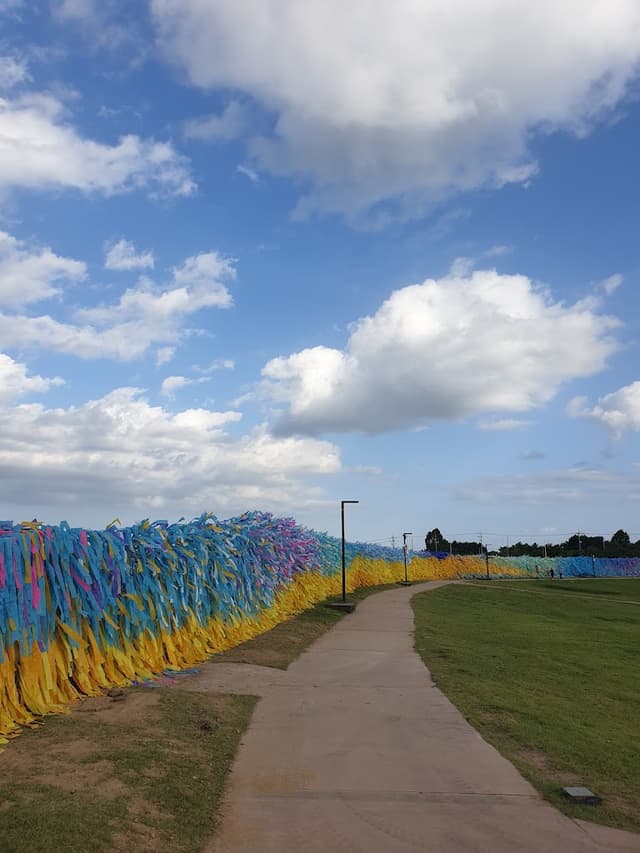
If you’re visiting Korea you’ll want to add the demilitarised zone in Korea to your travel bucket list. The easiest way to visit is through a guided DMZ tour which includes transfers and a local expert to learn about the history of the Korean War. Here are a few recommendations to choose from.
DMZ, 3rd Tunnel & Suspension Bridge
In this DMZ day trip tour from Seoul you'll be able to visit the 3rd infiltration tunnel, Dora Observatory, and suspension bridge for scenic views and learn more about Korea's war story.
Half Day or Full Day DMZ Day Trip Tour
Half Day DMZ Tour from Seoul (Peace Gondala)
Discover the history and monuments of the DMZ on a half-day tour from Seoul. You can also enjoy a Peace Gondola ride for a birds-eye view of the DMZ.
Ganghwa Island
Ganghwa Island also called Ganghwado (강화도) is Korea’s fifth largest island located a few hours away from Seoul. Ganghwa is a hidden gem away from the bustling Seoul that offers an ideal escape for those seeking to explore Korea’s rich history, captivating landscapes, and unique attractions without crowds. From ancient relics to picturesque landscales, Ganghwa offers a variety of attractions for every type of traveler.
If you’re planning a day trip visit to Gangha here is everything you need to know about visiting Ganghwa Island. From 20 must things to do in Ganghwa, how to get to Ganghwa from Seoul, and more.

Nami Island 🌳
If you’re looking to escape the bustling crowds of Seoul. Take a day trip to Nami Island for the beautiful scenery and immerse yourself in local activities including ziplining, cycling around the island, and checking out the local eateries.
It involves a bit of planning and booking multiple transfers (public transport) to get to the island from Seoul. So I recommend booking a day trip tour as they include transfers and admission onto the Island.

Nestled along the eastern coast of South Korea, Pohang emerges as a hidden gem that promises an unforgettable adventure. From pristine beaches to cultural landmarks, this city offers a plethora of activities that cater to diverse interests.
Find out these 20 things to do in Pohang.
Read the full travel guide for in-depth tips for traveling to and around Pohang.
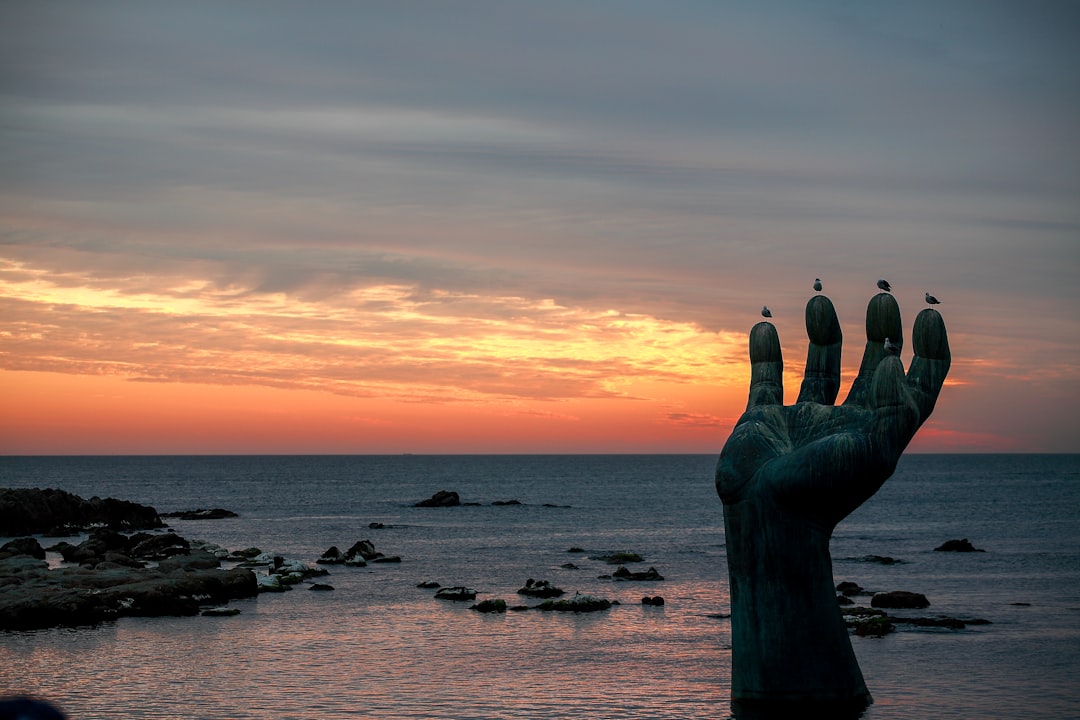
Visit a Cultural Village

Visit a Palace
If you're visiting Seoul make sure to check out at least one palace in Korea.
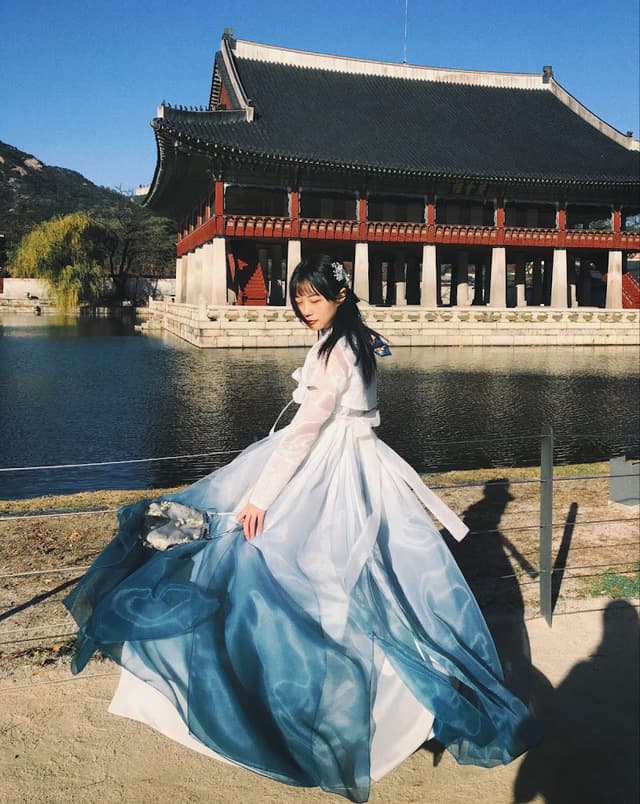
Don't forget to add these places in Seoul to your Korea itinerary!
Try a Workshop
There are so many fun workshops you can try not only for an authentic experience but also you can make your own unique personal souvenir for yourself or loved ones.
Try a Perfume Workshop
Experience a unique perfume-smelling tour and design your own fragrance at the GN Perfume Studio in Seoul.
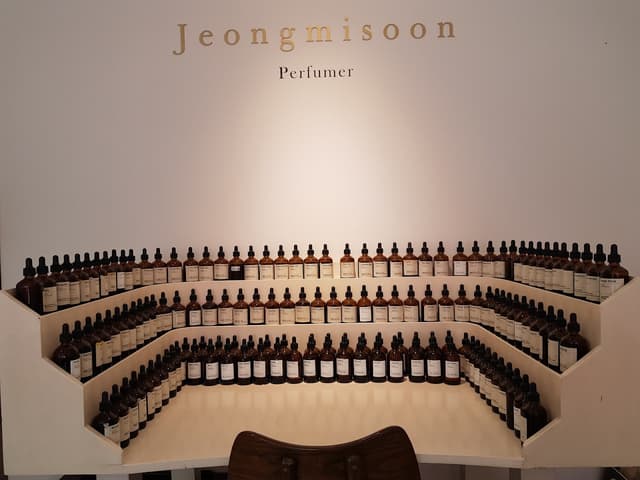
Handmade Stamp Engraving
Take home a personal souvenir by creating your own South Korean-style hand-engraved seal. You'll get to engrave your own name or custom logo onto a personalized seal.
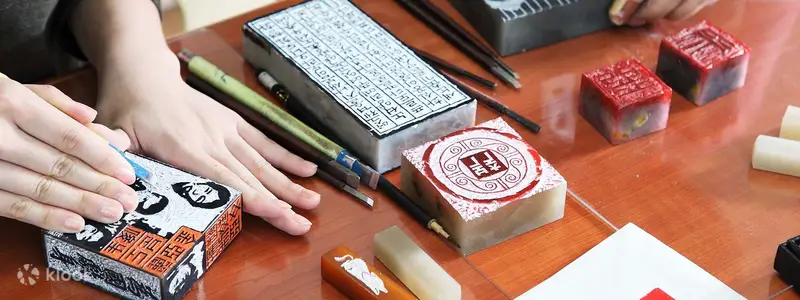
Korean Traditional Dessert Rice Class
Learn how to make traditional Korean desserts in this fun cooking class.
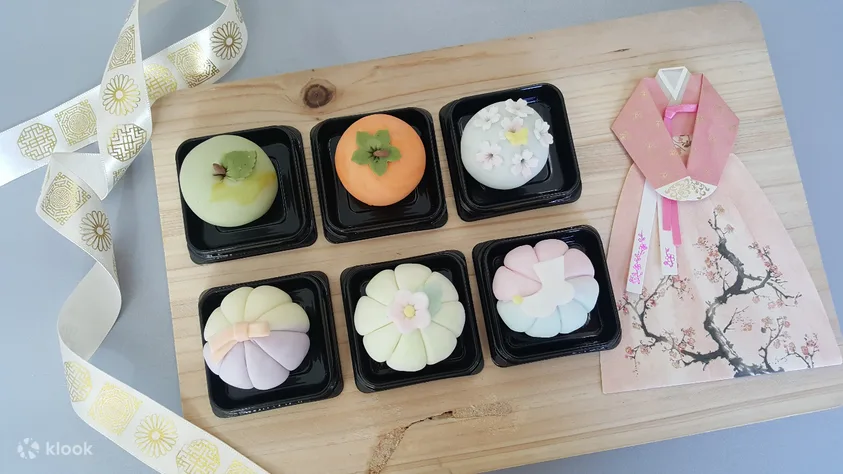
Seoul Kimchi & Culture Experience
Learn how to make delicious kimchi, instructed by professional Korean chefs with a choice of three cultural package options.
Makeup Workshop
Make your own personal lipstick in Seoul! It's the perfect souvenir for yourself or a loved one back home.
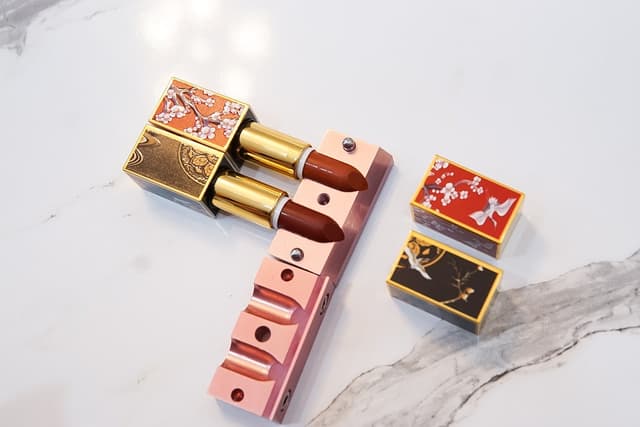
Ring Craft Workshop
Design and craft a personal ring for yourself or a loved one back home. You'll get to learn how to use raw materials to make the perfect personal gift.
Jewellery Workshop
Make your own jewelry using Korean alphabets or Hangeul and take it home as souvenirs in Euljiro Seoul.
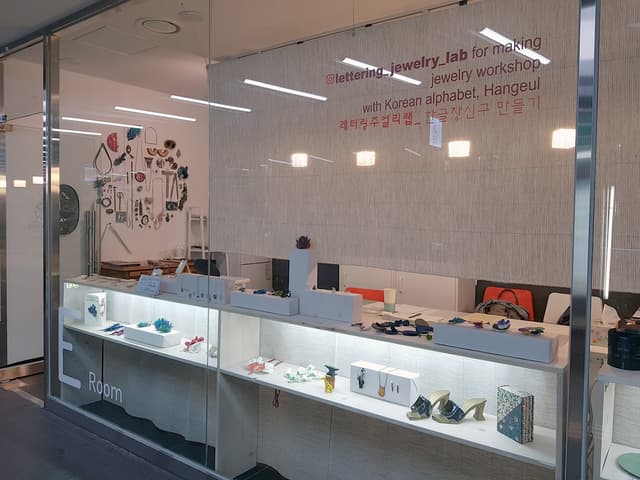
Visit a Themepark
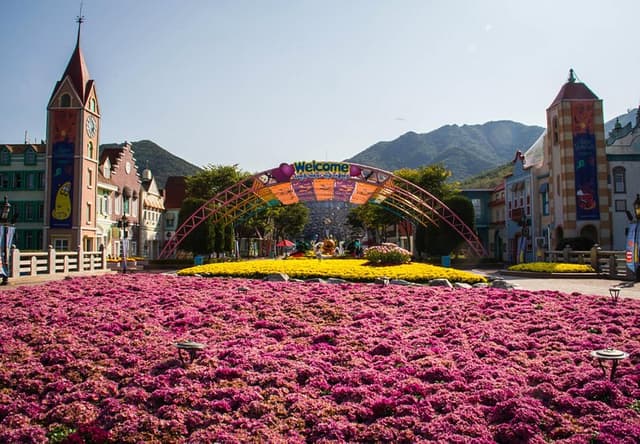
Guide to Hanbok Rentals
If you’re planning a trip to South Korea you must try this activity to immerse yourself in the Korean culture and make some memories for your trip. It’s a fun cultural experience to try with family and friends to make your trip to South Korea more memorable.
What is a hanbok?
A hanbok is a traditional piece of clothing previously worn for everyday wear. However, in more recent times it is reserved for special occasions including birthday celebrations, major holidays, and weddings.
Things to know about a hanbok
The hanbok consists of two different parts - the skirt and the shirt. In line with Korean customs, there are distinctions in costume structure in various classes in society. Each hanbok is unique with a combination of emotion, creativity, and sophistication in design and color.
Why should you wear a hanbok?
1) Free entrance to any of Seoul's five grand palaces. This includes the palaces Gyeongbokgung Palace, Changdeokgung Palace, Gyeonghuigung Palace, Deoksugung Palace, and Changgyeonggung Palace.
2) It's a great way to embrace Korean culture and to make some unique memories on your trip.
Where are the best places & tips for renting a hanbok?
I go into things I wish I knew before I rented a hanbok and the best places to rent a hanbok in Seoul and other cities.
Best Places for Hanbok Rentals
Depending on your budget and the time you have for your trip there are a variety of places for hanbok rentals in South Korea. My personal recommendation to rent a hanbok includes Seoul and Jeonju. Personally, I found the charming city of Jeonju as the quintessential place to try this cultural activity. However, if you’re short on time you can explore Seoul by heading to Gyeongbokgung Palace with its picturesque mountain views and nearby Bukchon Hanok Village. This place serves as the perfect backdrop for your photos.
As a general rule, I always recommend choosing places that are close to the attractions you’ll want to explore in the hanbok. This is to save time traveling to and from the location. Here are a few personal recommendations on where to rent a hanbok in South Korea in cities including Seoul, Jeonju, and more.

Booking a Hanbok
Did you know you can book a hanbok (a traditional Korean dress) in advance? There are a few reasons why you should book in advance.
1) Save Money
Bookings in advance are essential to save money but also to ensure you don’t miss out on securing a rental booking. If you choose to do just ‘walk in’ to a rental store you’ll have to consider if the place has English-speaking staff and if the place offers ‘walk-in’ appointments. Some rental places only accept a certain amount of bookings per day which can be common in high-traffic places in South Korea. Worst case you might have to wait a long time or you won’t be accommodated at all. So remember to book ahead of time!
2) Hanbok Selections
If you book an early morning time slot so you’ll have a wider selection of hanboks before they get rented by other customers. Think of it as ‘first comes, first served.’ You will also have more time to wear the hanbok without feeling rushed exploring and taking photos before you have to return it at the end of the day.
Hanbok Rental Recommendations
Here are a few of my recommendations for hanbok rentals in Seoul and other cities. My best advice for choosing a rental place is to decide on where you want to visit and take photos in your hanbok. Choosing a rental place near your selected attraction will make it easier to get to and from - saving you time walking to the place and you'll get more time in the hanbok!
If you're looking to rent a hanbok in Seoul check out these places. Most of the rental places are situated around the local attractions such as Gyeongbokgung Palace, Changdeok Palace and Bukhon Hanok Village.
1) Seohwa Hanbok Rental (Gyeongbokgung Palace)
Looking for a hanbok rental and photoshoot all-in-one package? Look no further. This rental shop is located near Gyeongbokgung Palace and offers hanbok rentals and photography sessions. Visitors can choose from renting a variety of hanboks (‘traditional’, ‘fusion’, or ‘premium’ from 3 to 4 hours to a full day.
2) Hanboknam (Changdeok Palace)
Select from over 500 Hanbok designs at this rental store near Changdeokgung Palace. One of Seoul’s five remaining Joseon palaces. They offer both traditional and themed hanboks to rent from 1.5 hours to a full day depending on your budget for this activity.

3) Bukchon Hanbok Rental
Choose from renting a hanbok for four hours to a full day. This rental place offers a variety of sizes and designs with hair accessories for those interested. This place is available in Seoul South Korea near Bukchon Hanok Village.
4) 한복남 프리미엄점 Hanboknam Premium Store
Try booking a premium hanbok service at the Hanboknam Premium store. They offer the latest trendy hanbok designs and have branches near Gyeongbokgung and in Jeonju. The rental services range from an hour to three hours to a full day depending on your budget.
Outside of Seoul
Looking to rent a hanbok outside of Seoul? Why not try the cities of Jeonju or Jeju Island. You'll be able to escape the usual crowds of the main city and explore places where not many tourists venture.
1) Jeju Hanbok Private Guide Tour & Photo Session
Book a private tour of Jeju inclusive of a hanbok rental and a photo session around the island. They offer packages for one individual or groups depending on your travel preferences.

2) Hanboknam Jeonju Store
Try a hanbok rental in Jeonju Hanok Village. You’ll get to try traditional Korean clothing and the option to get your hair styled in a traditional look. You can choose from a traditional or themed hanbok from 1.5 to 4 hours or a full-day rental.

Did you find this helpful? 🙋🏻♀️
I'm in the process of creating more travel guides for South Korea. Keep your eye out on my page for more releases. I'll be posting guides for cafe & restaurant hopping, travel itineraries, a Korea survival guide, and more.
Subscribe to my Thatch Page for updates on new releases.
Want to travel to Korea in 2024? 🌸🇰🇷
Want to travel to South Korea without planning anything? Come and travel to South Korea in April 2024 with me! I'm hosting a group trip and would love for you to join me. The best part? Everything is planned for you. From the accommodation, activities, local transfers, meals, and more! All you have to do is sign up and show up for the trip!
Want the FULL trip information pack about the group trip?
❗️GET ACCESS TO:
✈️ FULL trip itinerary
💬 Answers to frequently asked questions ("Can I join alone?" Why is it so expensive?" "How does flying in and flying out work?"
👀 Answers to COMMON concerns from sign-up interests ("I'm scared of traveling alone," "I'm concerned about paying the full amount," "I'm nervous about meeting new people, etc"
👇🏼DOWNLOAD the full info pack below!👇🏼
Are you a bit hesitant about solo travel? Or maybe curious about what a group trip is? Read up on why group travel is a perfect way for you to travel more in 2024. Maybe you want to travel more but your friends aren't free, or you want to visit a place that no one is interested in. Find out how group travel is a perfect opportunity for you!
💌 Let's stay connected!
Want to get access to exclusive discounts for digital products, early product releases, insider tips & recommendations?
Join my community to be notified first!
Want FREE information on my latest travels or resources? Check out my blog for the latest posts.
📱Follow my daily adventures!
Catch me on the 'gram for my almost daily life. From my travel adventures, and lifestyle content. You can also subscribe to notifications for my stories, posts, or reels where I share the latest drops for limited discounts, products, events, and group trips.
I can't wait to connect with you!
If you have any questions or issues regarding the guide feel free to contact me at [email protected].
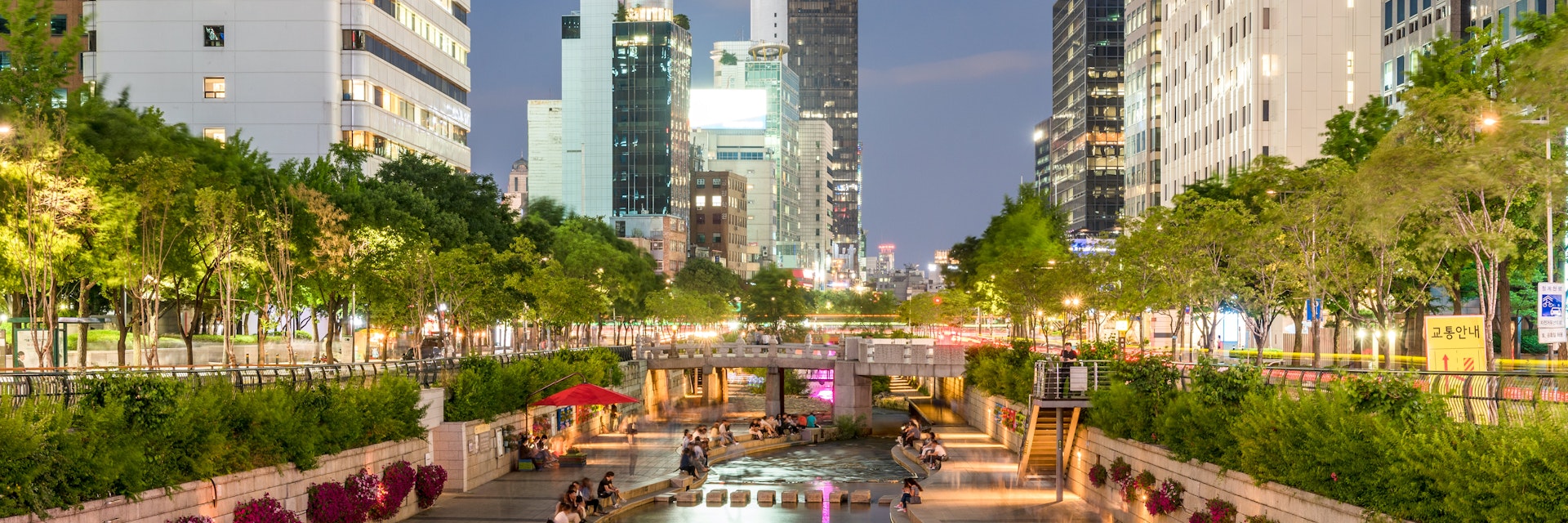
Getty Images
Fashion- and technology-forward but also deeply traditional, this dynamic city mashes up palaces, temples, cutting-edge design and mountain trails, all to a nonstop K-Pop beat.
Best Time to Visit
Best things to do, attractions, must-see attractions.
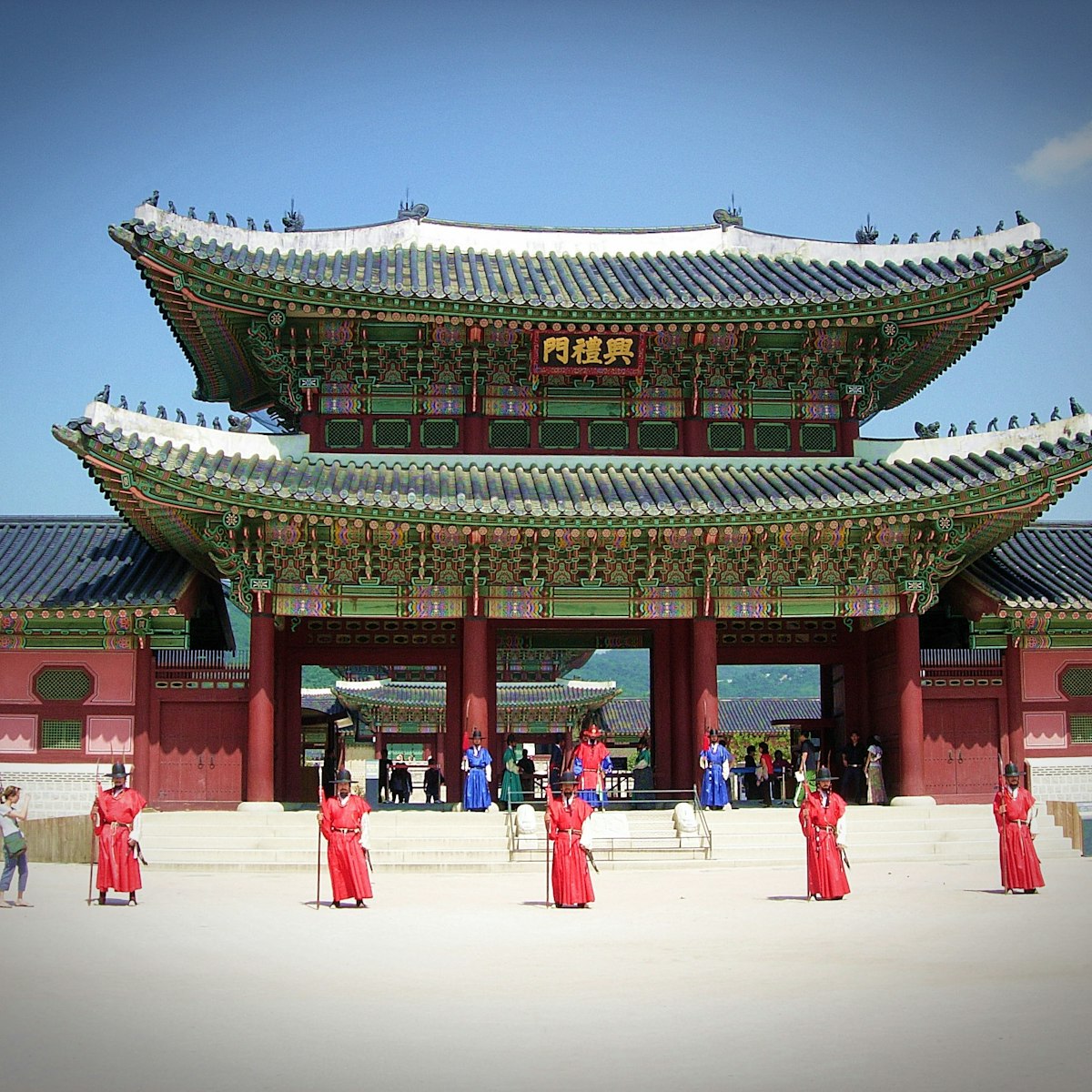
Gyeongbokgung
Gwanghwamun & Jongno-gu
Like a phoenix, Seoul’s premier palace has risen several times from the ashes of destruction. Hordes of tourists have replaced the thousands of government…
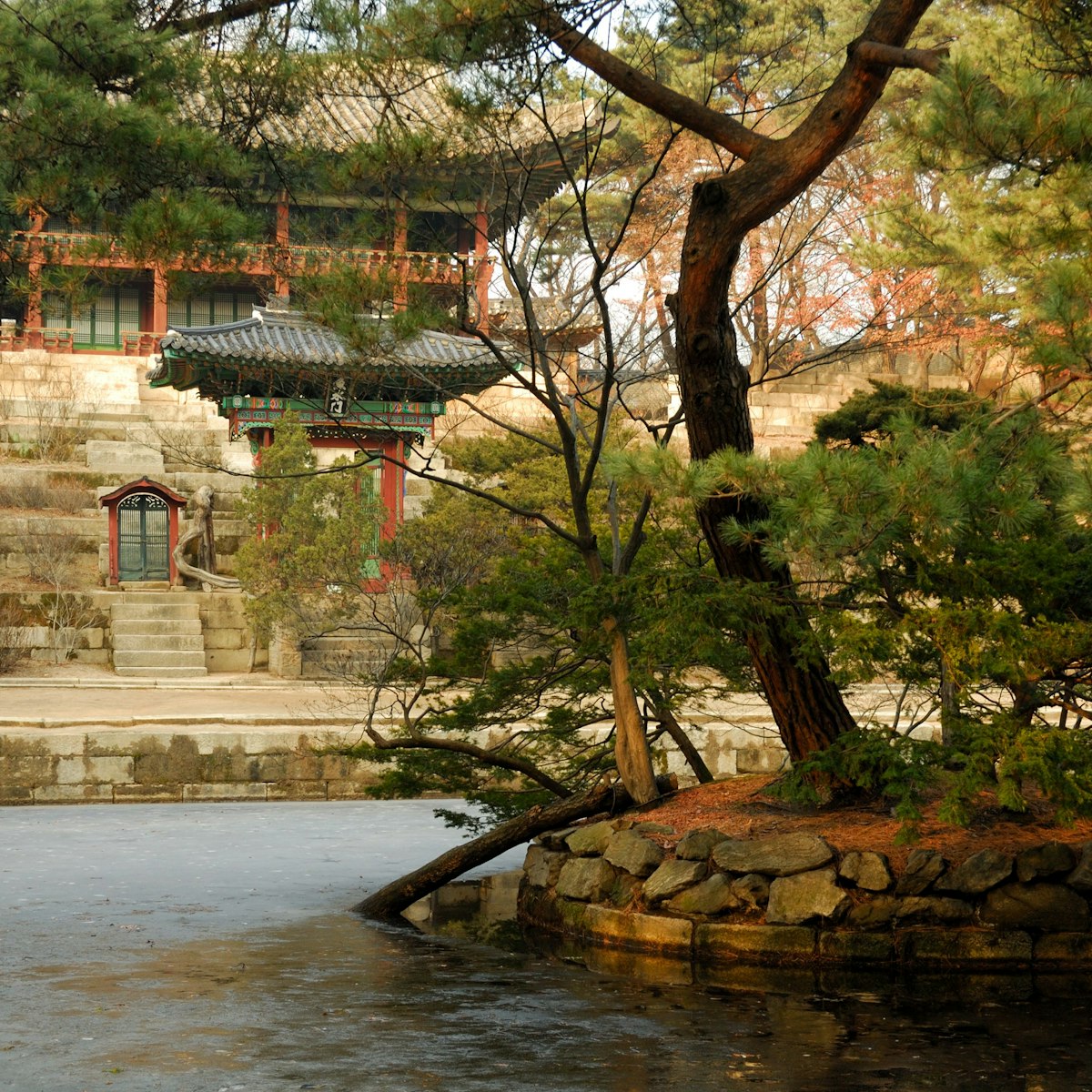
Changdeokgung
The World Heritage–listed Changdeokgung is the most beautiful of Seoul's five main palaces. You must join a one-hour guided tour to look around. English…

Leeum Samsung Museum of Art
Itaewon & Yongsan-gu
Amid the celebrity-owned apartments on the leafy southern slope of Namsan is Korea's premier art gallery. Beautifully designed and laid-out, it balances…
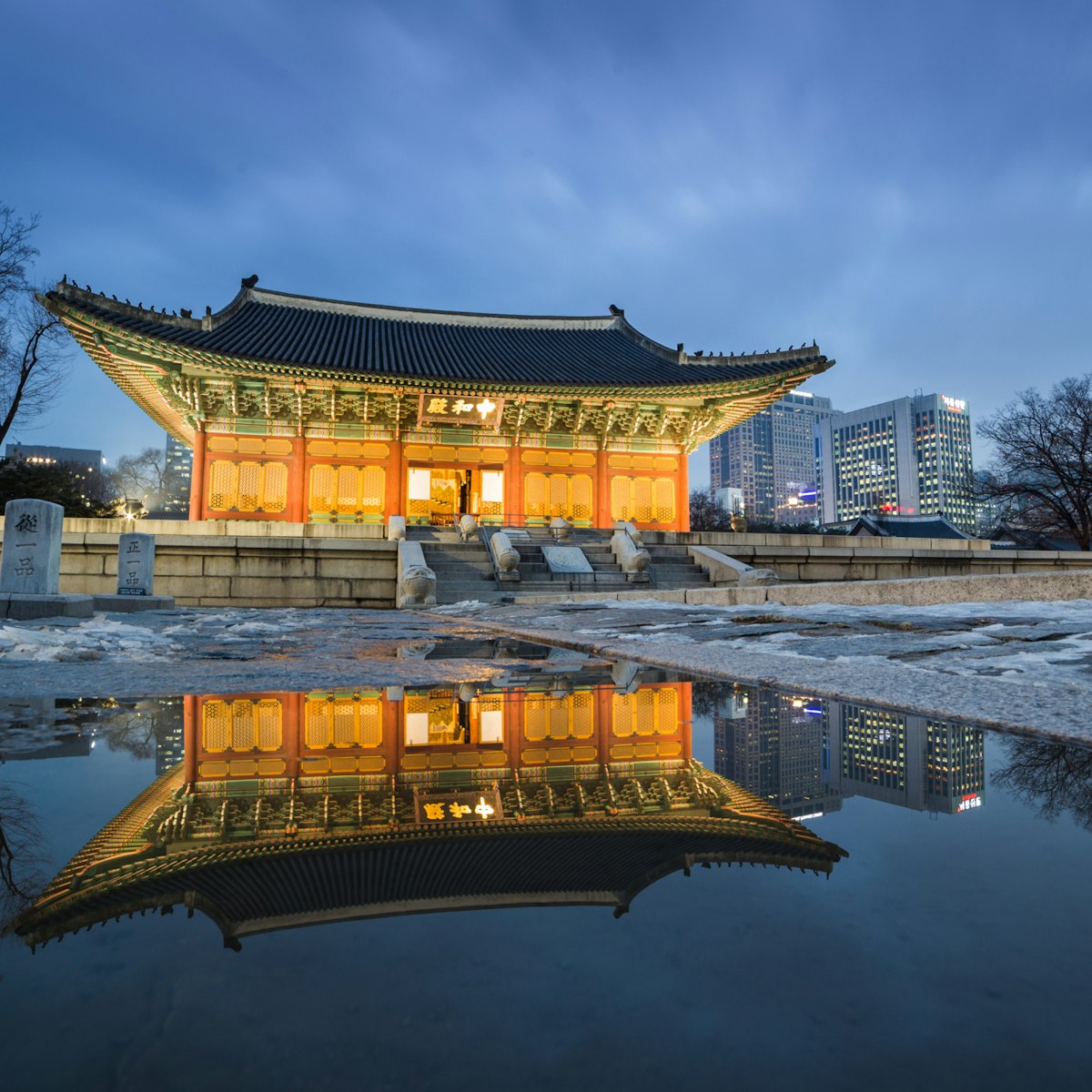
Myeong-dong & Jung-gu
One of Seoul's five grand palaces built during the Joseon dynasty, Deoksugung (meaning Palace of Virtuous Longevity) is the only one you can visit in the…
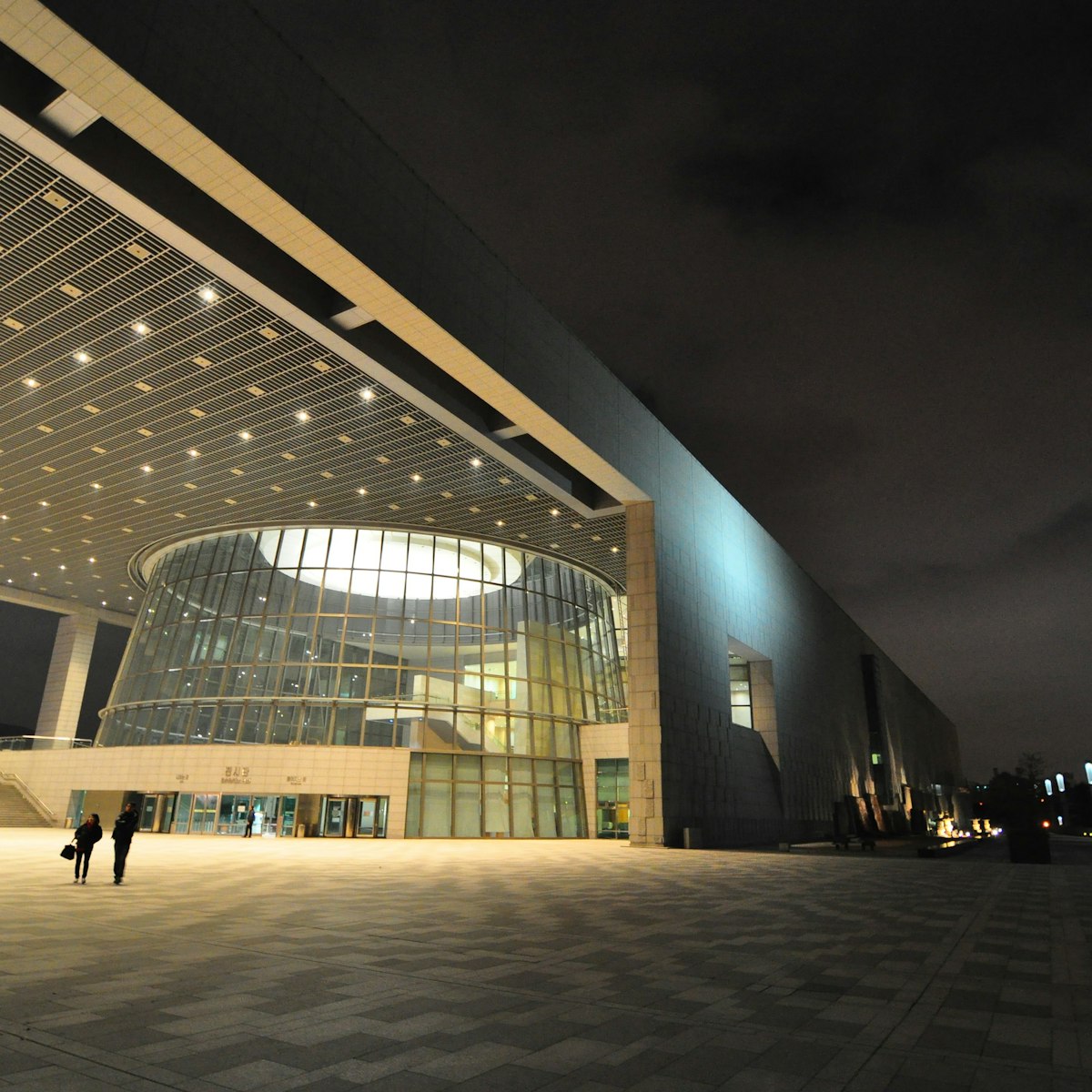
National Museum of Korea
This vast and imposing concrete slab of a museum takes visitors on a fascinating journey through Korea's past from prehistory all the way to the Korean…
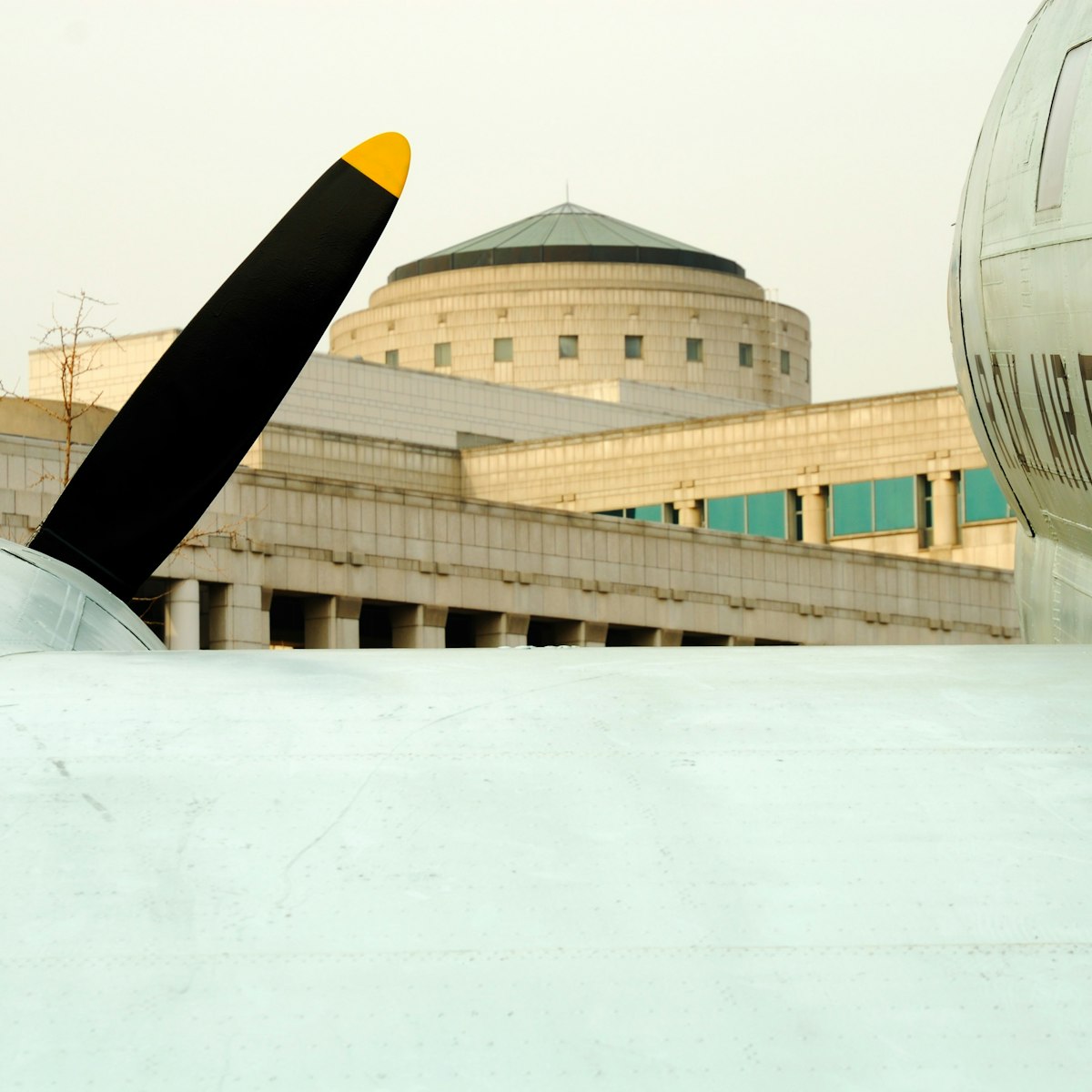
War Memorial of Korea
This huge museum documents the history of the Korean War (1950–53) using multimedia exhibits and black-and-white documentary footage, along with artefacts…
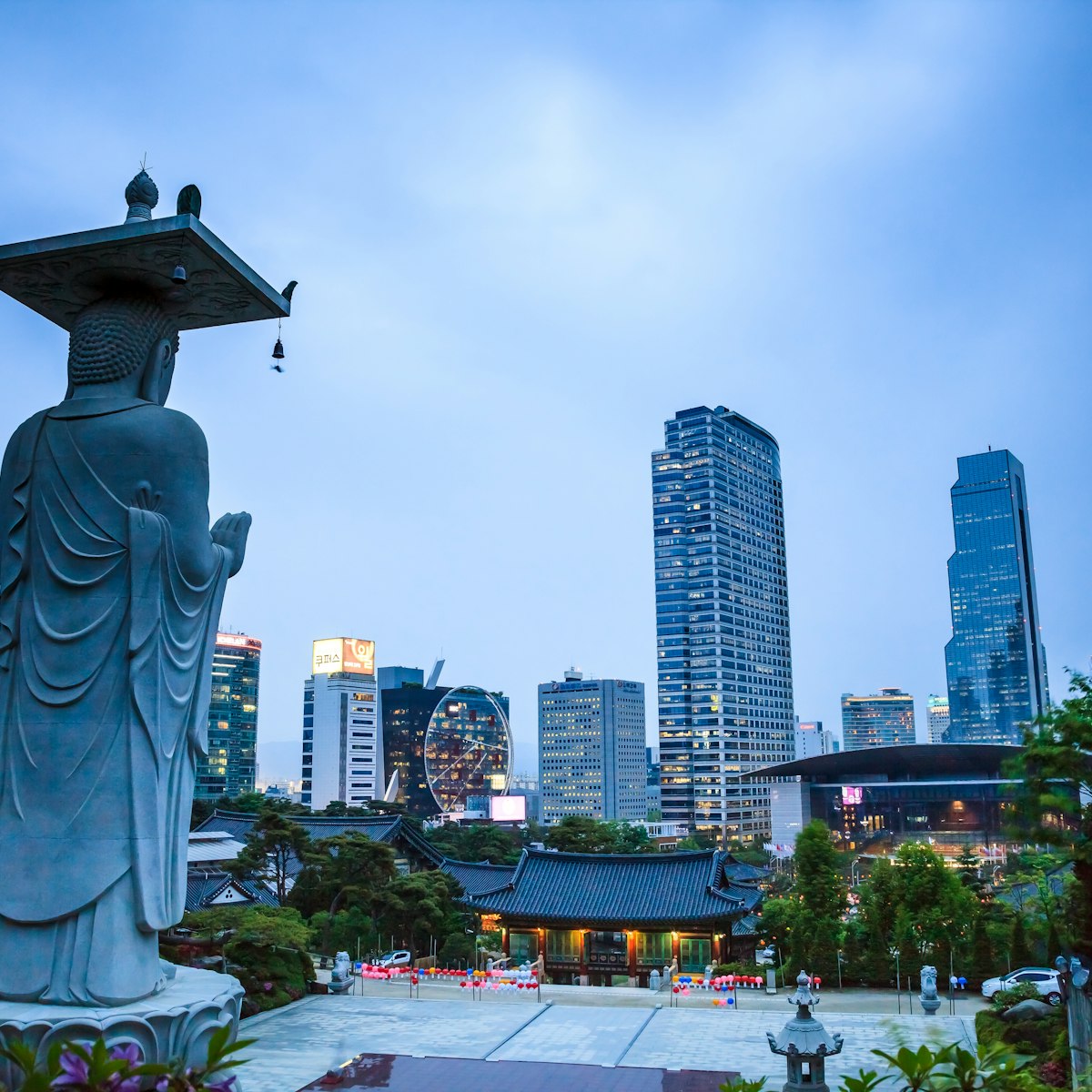
Gangnam & Southern Seoul
Located in the heart of ritzy Gangnam, the shrines and halls of the Buddhist temple Bongeun-sa, with its tree-filled hillside location, stand in direct…
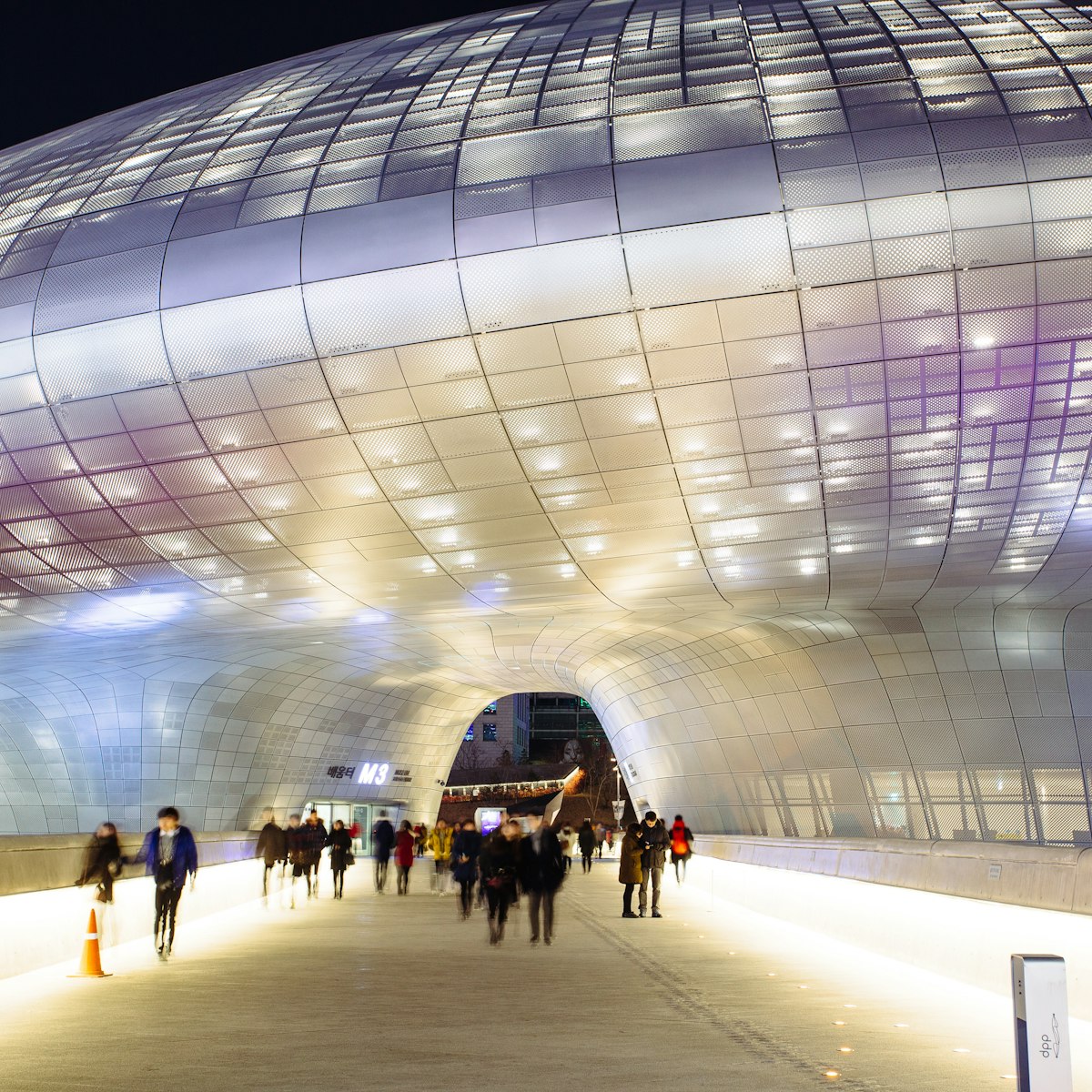
Dongdaemun Design Plaza & Park
Dongdaemun & Eastern Seoul
Designed by the late Zaha Hadid, this neofuturistic cultural complex was commissioned to replace the Dongdaemun Stadium, built during Japanese rule in the…
Top picks from our travel experts
13 of the best things to do in seoul, south korea.
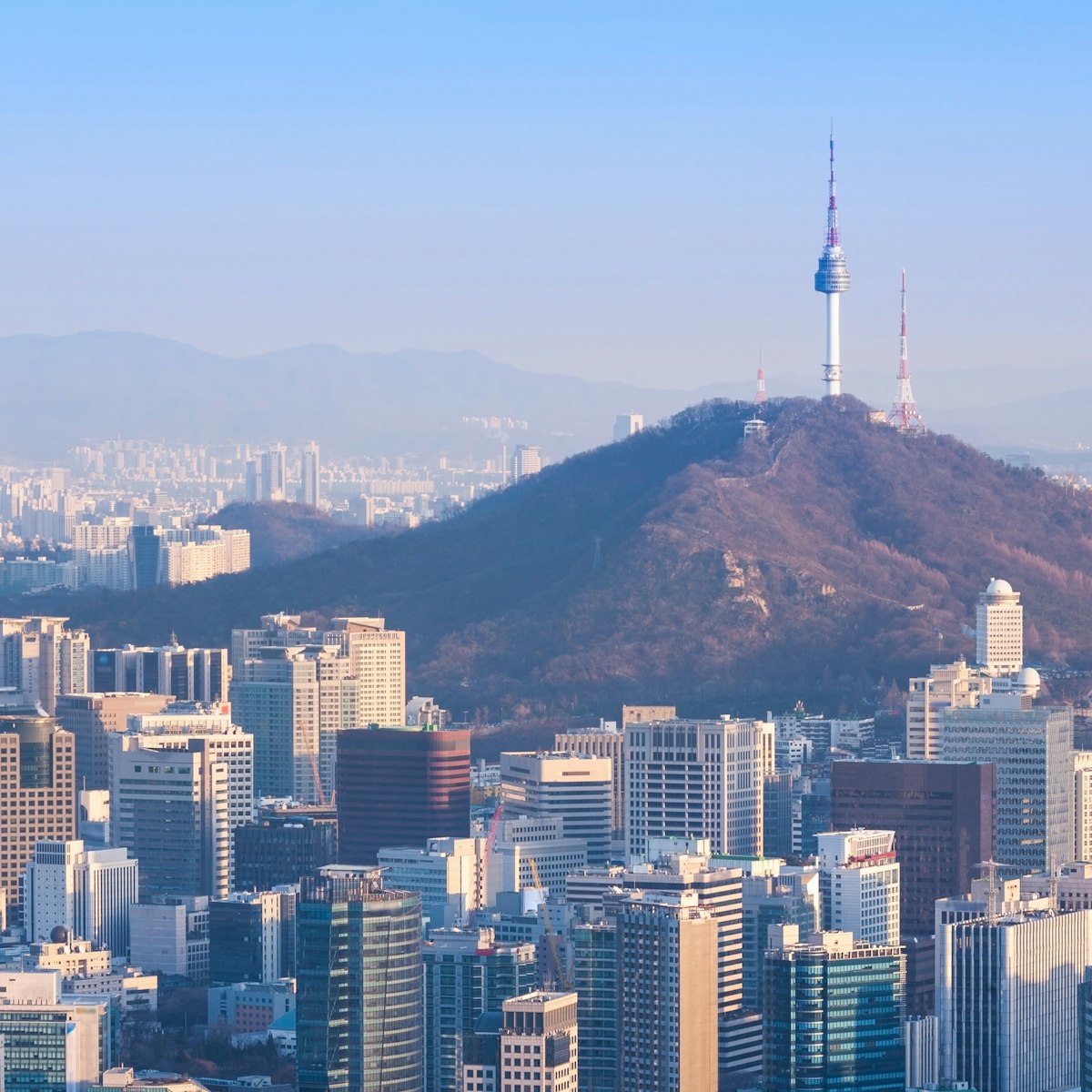
N Seoul Tower & Namsan
The iconic N Seoul tower (236m), atop the city’s guardian mountain Namsan, offers panoramic views of this immense metropolis from its observation deck…

National Folk Museum of Korea
Give yourself at least an hour to do justice to this excellent museum. It has three main exhibition halls, covering the history of the Korean people, the…

Cheong-gye-cheon
With its landscaped walkways, footbridges, waterfalls and a variety of public artworks, such as the enormous pink-and-blue shell entitled Spring in Cheong…

K-Star Road
Gangnam's 'Hallyuwood Walk of Fame' pays homage to K-Pop stars in the form of cutesy bear sculptures dedicated to K-Wave singers and actors.
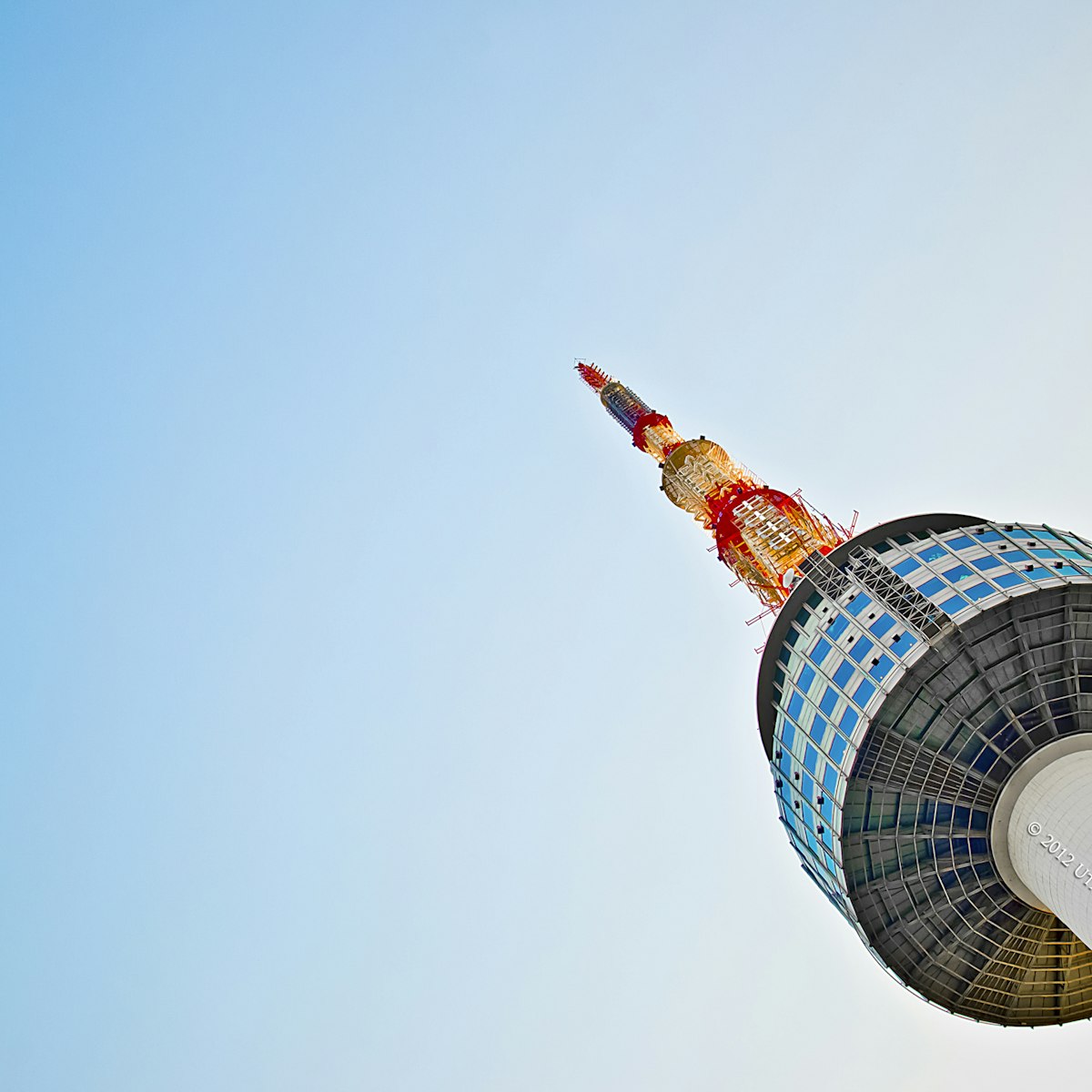
Namsan Park
Beloved by locals as a place for exercise, peaceful contemplation and hanging out with loved ones, Namsan was a sacred shamanistic spot when the Joseon…

Stylenanda Pink Hotel
One of the most popular brands for affordable, young women's casual fashion, Stylenanda's flagship store is especially notable for its pink design. The…

Gwanghwamun
The impressive main gate to Seoul's premier palace is flanked by stone carvings of haechi, mythical lion-like creatures traditionally set to protect the…

Bukchon Hanok Village
Meaning ‘North Village’, Bukchon, between Gyeongbokgung and Changdeokgung, is home to around 900 hanok, Seoul’s largest concentration of these traditional…
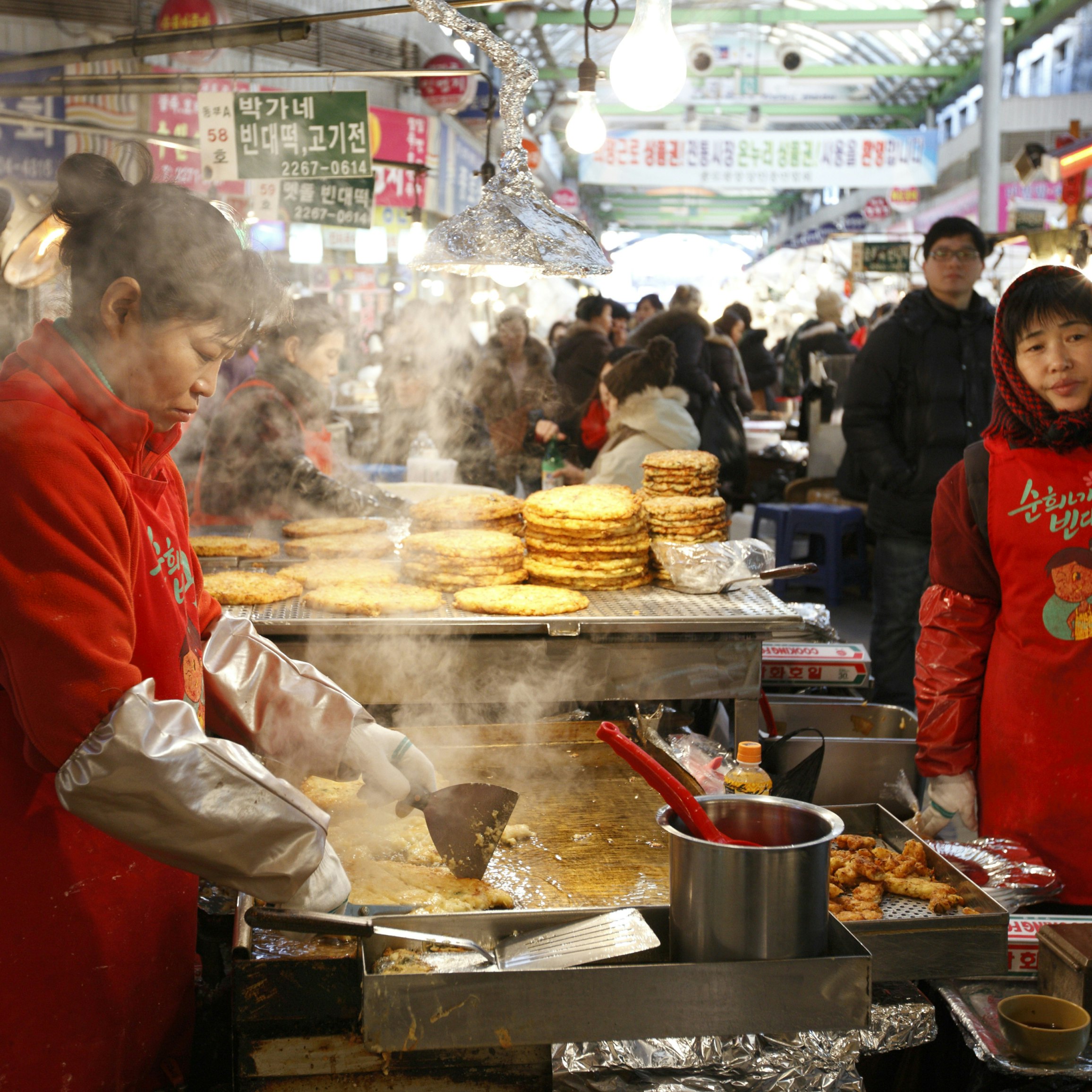
Gwangjang Market
This sprawling fabric market is now best known as Seoul’s busiest meokjagolmok (food alley), thanks to the 200 or so food stalls, kimchi and fresh-seafood…
Free your Seoul: 26 of the best no-cost things to do

Northern Seoul
This modern hillside temple is a pleasure to visit at any time of the year, but particularly in May when the grounds are festooned with lanterns for…

Seoul Museum of History
To gain an appreciation of the total transformation of Seoul down the centuries, visit this fascinating museum, which charts the city's history since the…

Cheong-gye-cheon Museum
To fully comprehend what a mammoth and expensive effort it was to resurrect Cheong-gye-cheon, Seoul’s long buried east–west stream, pay a visit to this…
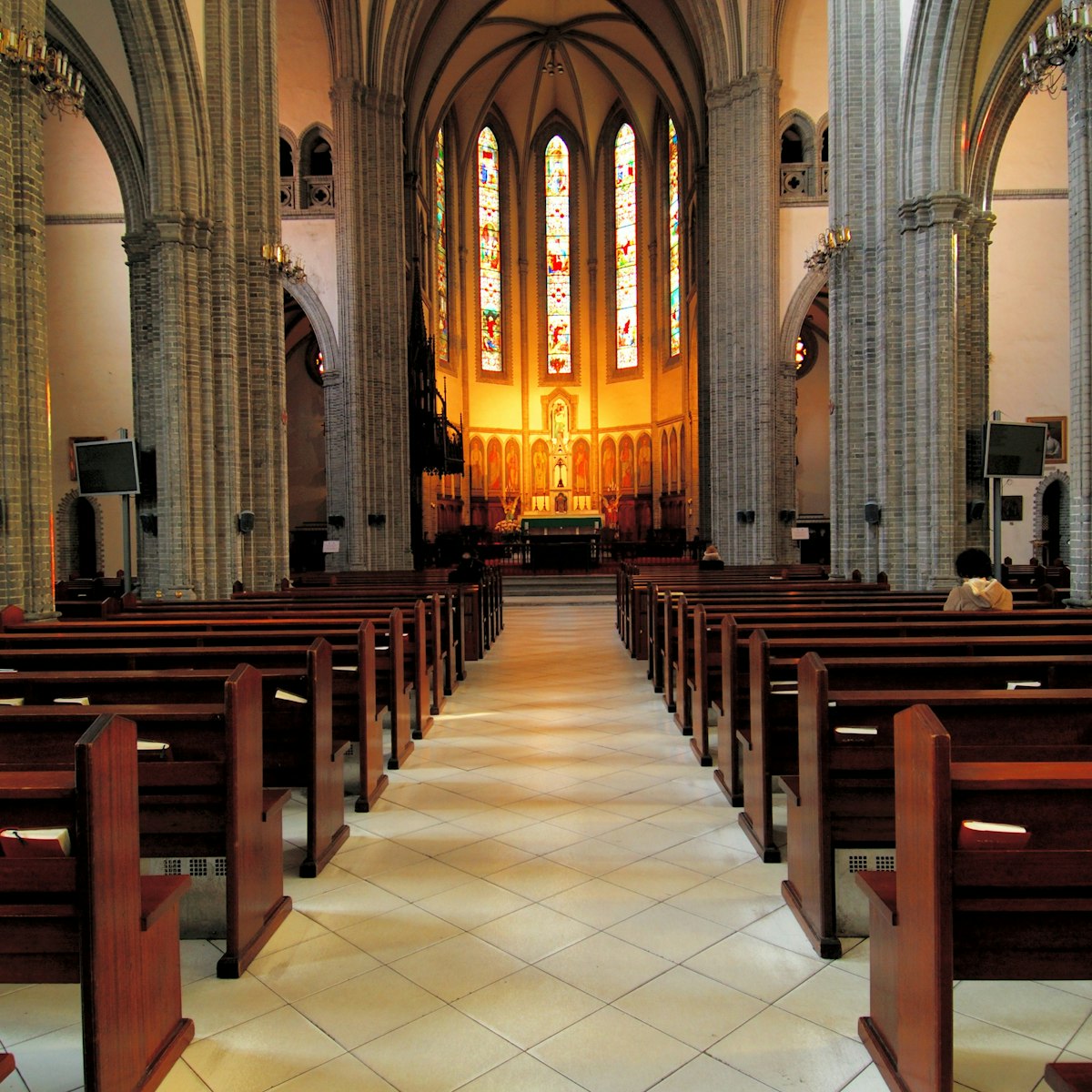
Myeong-dong Catholic Cathedral
Go inside this elegant, red- and grey-brick Gothic-style cathedral, consecrated in 1898, to admire the vaulted ceiling and stained-glass windows. The…

Gyeonghuigung
The Palace of Shining Celebration, completed in 1623, used to consist of a warren of courtyards, buildings, walls and gates spread over a large area. But…

Seoul Museum of Art
Hosting world-class exhibitions that are always worth a visit, SEMA has ultramodern, bright galleries inside the handsome brick-and-stone facade of the…

Ihwa Mural Village
High on the slopes of Naksan is one of the city's old daldongnae (literally ‘moon villages’) where refugees lived in shacks after the Korean War. Sixty…

Gyeongui Line Forest Park
This 6.3km park, named for the former Gyeongui Line (on which it was built), is a narrow, long green space that runs along the discarded railroad tracks…
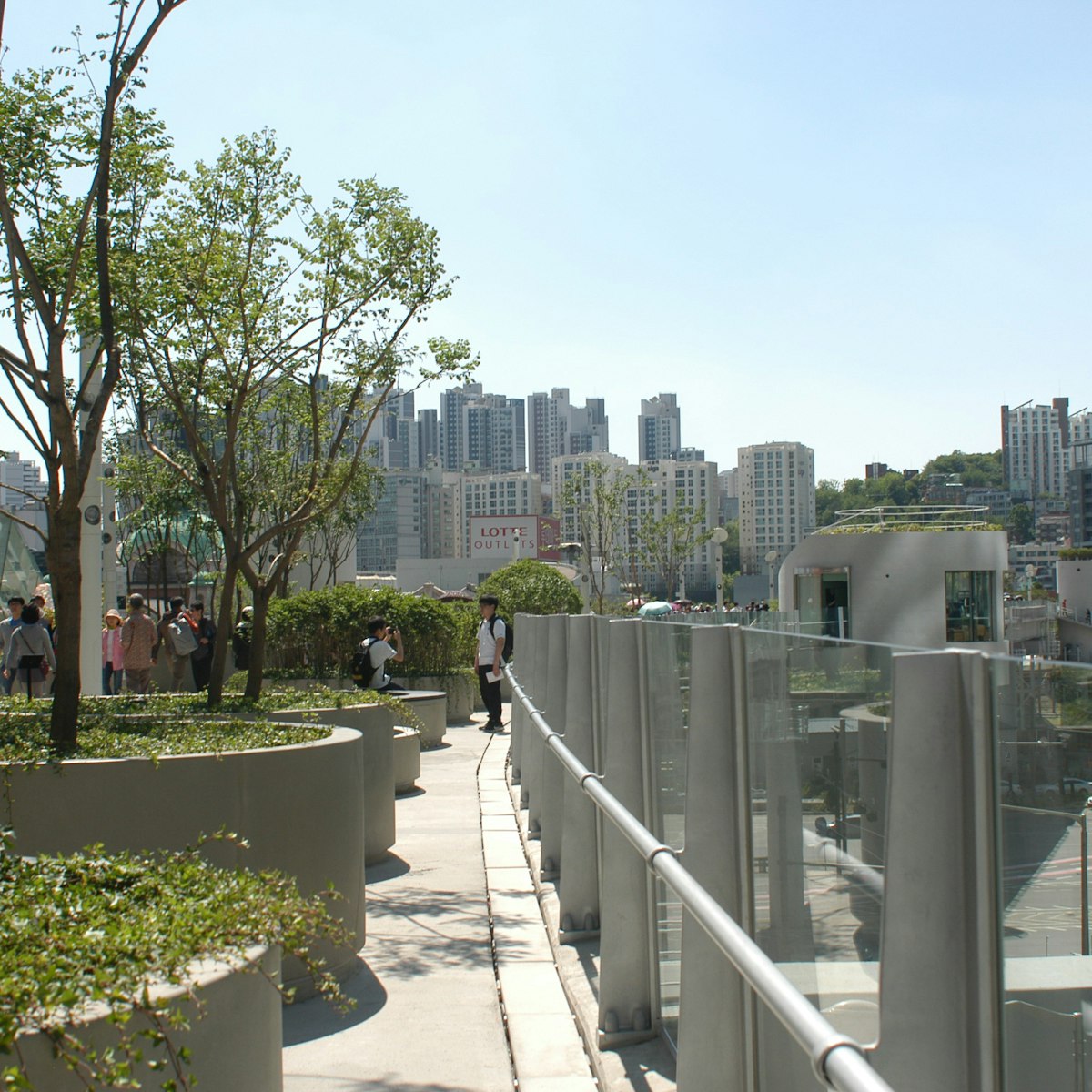
Seoullo 7017
This overpass-turned-park is a green space in the heart of the city. About 24,000 plants are grown here, including various types of flowers and trees, all…

Oil Tank Culture Park
Originally built after Korea’s first oil crisis in 1973 and reopened in 2017, this cultural centre is made up of five abandoned oil tanks. Planted in a…

One of Seoul's premier malls and the world's largest underground mall, the shiny COEX is a vast maze of department stores loaded with shops selling…

Banpo Bridge Rainbow Fountain
Covered with 10,000 lights, the Banpo Bridge Rainbow Fountain's coloured water rains down in messy arcs from the double-decker Banpo Bridge. More…

Naksan Park
The lofty slopes above Daehangno offer fantastic city views and contain an impressive section of the Seoul City Wall, which you can follow in either…
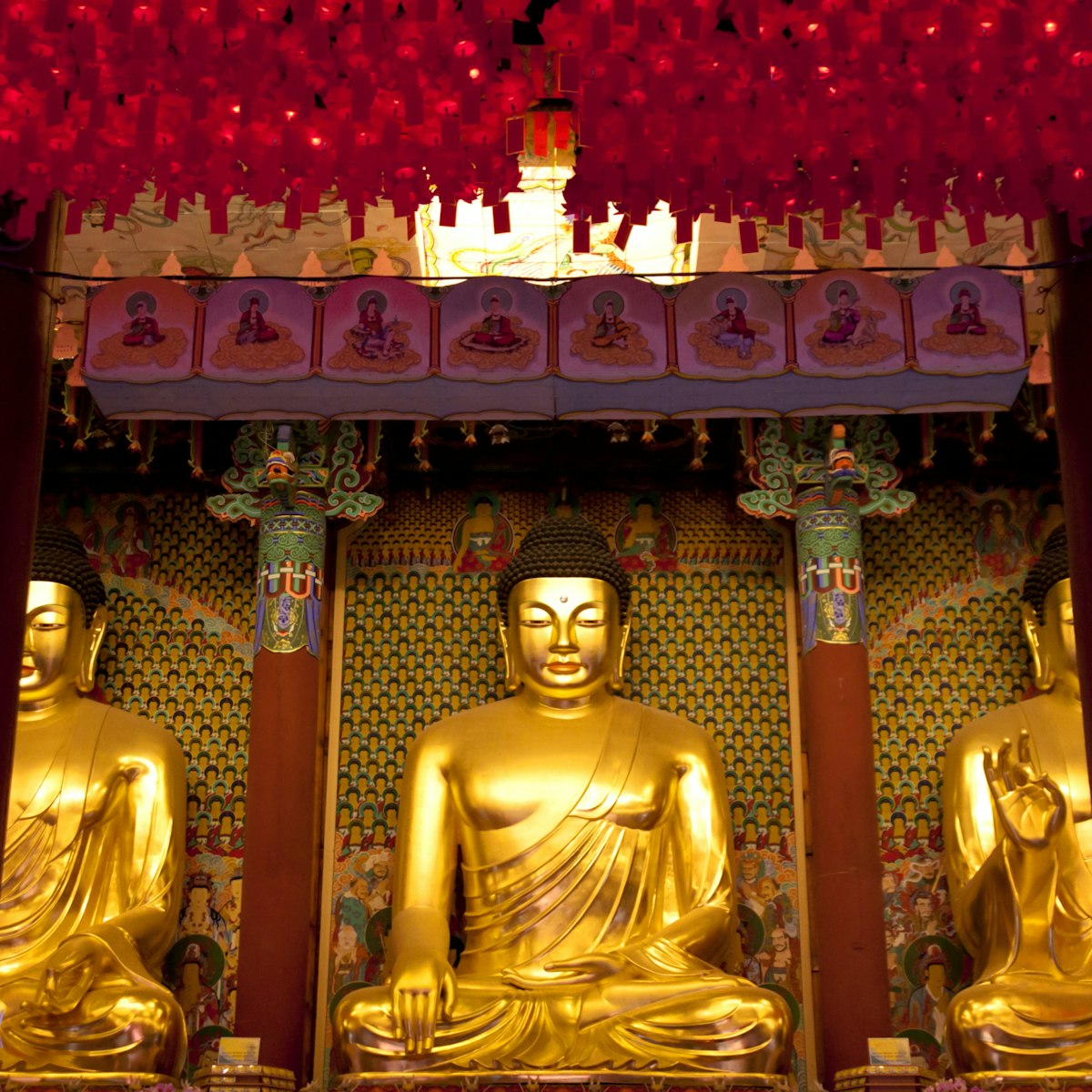
The focus of Jogye-sa is the grand wooden hall Daeungjeon, Seoul's largest Buddhist worship hall and the epicentre of Korean Buddhism. Completed in 1938,…

Jeoldusan Martyrs' Shrine
Jeoldusan means ‘Beheading Hill’ – this is where up to 2000 Korean Catholics were executed in 1866 following a royal decree, most thrown off the high…

Seonyudo Park
A former water-filtration plant on an island in the Han River has been transformed into this award-winning park. The old industrial buildings have been…
Planning Tools
Expert guidance to help you plan your trip.
Things to Know
If you’re planning a trip to Seoul, follow these solid tips to guide you through everything you need to know, from etiquette to transportation.
Best Neighborhoods
Get to know exciting Seoul by exploring the South Korean capital’s neighborhoods, from happening hot spots to quiet backstreets.
So over Seoul? Delve deeper into South Korea's history and culture with these day trips from the capital.
Money and Costs
Stretch your budget in Seoul with these top money-saving tips and a guide to daily costs.
Transportation
Make the most of Seoul's incredible public transport but don't miss out exploring on foot.
Free Things to Do
Visiting Seoul on a budget? These temples, parks and viewpoints offer the best of the South Korean capital – for free.
Latest stories from Seoul
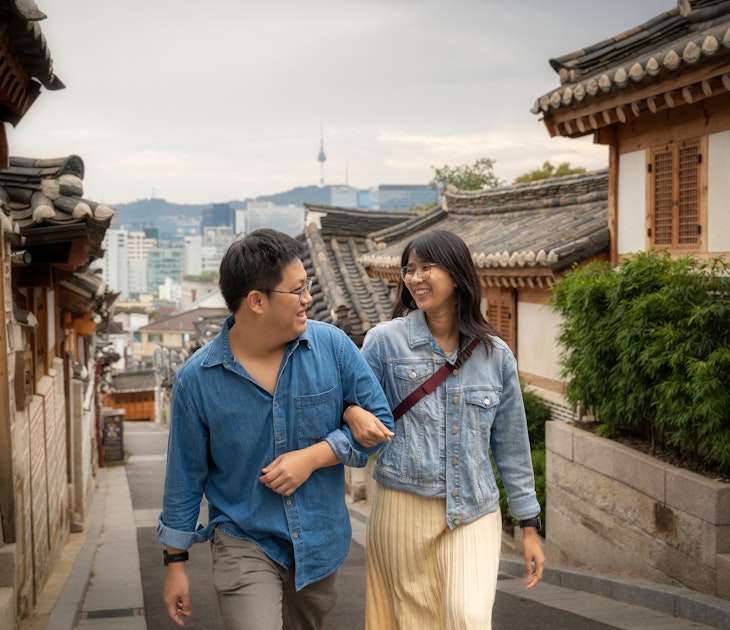
Budget Travel
Feb 17, 2024 • 6 min read
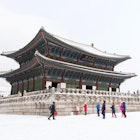
Feb 11, 2024 • 3 min read
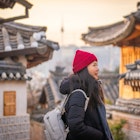
Feb 11, 2024 • 6 min read

Feb 10, 2024 • 10 min read
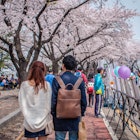
Feb 10, 2024 • 8 min read
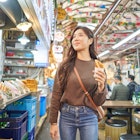
Feb 4, 2024 • 8 min read
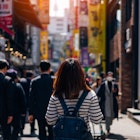
Feb 3, 2024 • 6 min read
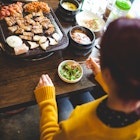
Aug 31, 2022 • 12 min read
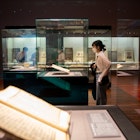
Jun 22, 2022 • 7 min read
in partnership with getyourguide
Book popular activities in Seoul
Purchase our award-winning guidebooks.
Get to the heart of Seoul with one of our in-depth, award-winning guidebooks, covering maps, itineraries, and expert guidance.
Seoul and beyond
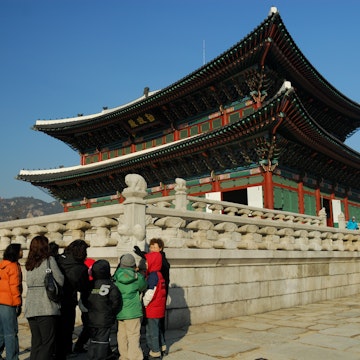
- Go to the menu
The Visit Seoul website uses cookies to enhance the user experience, improve the website, and more.
Continuing use of this website means that you agree to the use of cookies.
- Seoulite's Picks
Exhibitions
- Smart & Safe Seoul Travel
- Facebook logo icon Instagram logo icon YouTube logo icon TikTok logo icon
Recommendations
- Seoul Hiking Tourism
- Seoulites' Picks
Seoul Guided Walking Tour
- Must Visit Places of Seoul
- Discover Seoul Pass(Tourist Card)
- One More Trip
- Seoul Tourism Plaza
Tourist Destinations
- Attractions
- Entertainment
- Restaurants
Explore by Area
- Gwanghwamun
- Other Areas
Travel Information
- Guidebooks & Maps
Seoul City Tour Bus
- Before You Go
- Travel Tips
- Seoul Danurim Tour
- Traveler Assistance
New Beginnings
A seoul kinda spring, flower sightseeing.
Spring scenic spots across the city
Spring for Everyone
Making an accessible Seoul spring
Picnic Time is Back
Picnic sights and sounds
Spring Sights & Sounds
Uidong valley.
Make your long-awaited return to nature

2024 Gyeongbokgung Starlight Tour
Experience the ancient stories of the palace while touring Gyeongbokgung Palace.
DISCOVER SEOUL PASS
Your First Choice, Discover Seoul Pass
Seoul City Tour Bus Guide and Usage
Walking tours led by tour guides
Social Media Channels
Spring at the 5 royal palaces in seoul, [seoul wow] 𝐏𝐥𝐚𝐲𝐥𝐢𝐬𝐭 vol.1: sunday morning.
- visitseoul_official 𝕍𝕚𝕤𝕚𝕥 𝕊𝕖𝕠𝕦𝕝 𝕎𝕖𝕖𝕜𝕖𝕟𝕕𝕤. Get ready for a memorable night out at Moonlight Rooftop! ✨ Indulge in delicious dishes, groove to live music, and admire panoramic views of Seoul's landmarks. Remember to book your table early to secure your spot! 𝐆𝐰𝐚𝐧𝐠𝐡𝐰𝐚𝐦𝐮𝐧 𝐑𝐨𝐨𝐟𝐓𝐨𝐩 𝐁𝐁𝐐 𝐰𝐢𝐭𝐡 𝐌𝐨𝐨𝐧𝐥𝐢𝐠𝐡𝐭 📍 25F, Koreana Hotel, Seoul 🚃 Subway Line 5, Gwanghwamun Station, Exit 6 (Approx 163m on foot) | Subway Lines 1 & 2, City Hall Station, Exit 3 (Approx 249m on foot) 📅 March 26 - July 19 / Aug 20 - Oct 25 ⏰ Daily 6:00 pm - 10:30 pm (Last order at 9:00 pm) *Closed Mondays 🎵 Music Performances: Thursdays & Fridays 7:30 pm - 8:30 pm ✔️Reservation Required: 02-2171-7830 📷 @hotelkoreana
- visitseoul_official 𝐹𝑙𝑜𝑟𝑎𝑙 𝐹𝑎𝑛𝑡𝑎𝑠𝑦 & 𝑈𝑟𝑏𝑎𝑛 𝐷𝑒𝑙𝑖𝑔ℎ𝑡𝑠. Join us for a picnic amidst the vibrant tulip festival at Seoul Forest, where nature's beauty sets the stage for relaxation and adventure. Afterward, treat yourself to coffee, snacks, and the lively café scene of Seongsu. Indulge in a day filled with floral delights and urban exploration! 𝐒𝐞𝐨𝐮𝐥 𝐅𝐨𝐫𝐞𝐬𝐭 𝐏𝐚𝐫𝐤 📍 273 Ttukseom-ro, Seongdong-gu, Seoul 🚃 Subway Line Suin-Bundang, Seoul Forest Station Exit 4 (Approx. 260m on foot) 𝐒𝐞𝐨𝐧𝐠𝐬𝐮-𝐝𝐨𝐧𝐠 𝐂𝐚𝐟𝐞 𝐒𝐭𝐫𝐞𝐞𝐭 📍 Seongsu-dong 2-ga, Seongdong-gu, Seoul 🚃 Subway Line 2, Seongsu Station Exit 3 (Approx. 119m on foot) Thanks to our VS Crew 🫡 📷 @8ak8ak
- visitseoul_official 𝑆𝑒𝑜𝑢𝑙'𝑠 𝐺𝑟𝑒𝑒𝑛 𝑂𝑎𝑠𝑖𝑠. Welcome to Yongsan Family Park: where city life blends seamlessly with nature, offering a perfect retreat. Escape the urban hustle and bond amidst lush greenery, creating memories that last a lifetime. Plan your family day out now! 𝐘𝐨𝐧𝐠𝐬𝐚𝐧 𝐅𝐚𝐦𝐢𝐥𝐲 𝐏𝐚𝐫𝐤 ⏰ Open 24 hours 🚇 Subway Line 4, Ichon Station Exit 2 (Approx 724 m on foot) Thanks to our VS Crew 🫡 📷 @ssangdoong_
- visitseoul_official 𝑁𝑎𝑣𝑖𝑔𝑎𝑡𝑖𝑛𝑔 𝑇𝑖𝑚𝑒𝑙𝑒𝑠𝑠 𝐴𝑙𝑙𝑒𝑦𝑠. Let‘s dive into Seoul’s rich past and present in Euljiro 3(sam)-ga! Discover Nogari Alley, where history and modern life blend seamlessly. From its humble beginnings in 1980 to its lively pub scene today, this spot is a must-see for anyone exploring Seoul‘s downtown. Join us for a stroll through time and taste the unique flavors of Hipjiro! 𝐄𝐮𝐥𝐣𝐢𝐫𝐨 𝐍𝐨𝐠𝐚𝐫𝐢 𝐀𝐥𝐥𝐞𝐲 📍 15 Eulji-ro 13-gil, Euljiro 3(sam)-ga, Jung-gu, Seoul 🚇 Subway Line 2 & 3, Euljiro 3(sam)-ga Station Exit 3 (Approx. 101m on foot) 🎥 @woodyfilm_
- visitseoul_official 𝑈𝑛𝑙𝑜𝑐𝑘 𝑆𝑒𝑜𝑢𝑙'𝑠 𝐶ℎ𝑎𝑟𝑚. Discover Seoul's beauty on two wheels with Ttareungyi, your perfect bike companion! From must-see spots to secret treasures, our suggested routes unveil the city's charm. Plus, the user-friendly chatbot service makes using Ttareungyi a breeze for tourists. Let's hit the road and explore Seoul together! 𝟏. 𝐀𝐧𝐲𝐚𝐧𝐠𝐜𝐡𝐞𝐨𝐧 𝐒𝐭𝐫𝐞𝐚𝐦 𝐖𝐚𝐥𝐤𝐰𝐚𝐲 📍 488 Yangpyeong-dong, Yeongdeungpo-gu, Seoul 🚇 Subway Line 5, Yangpyeong Station Exit 1 (Approx. 638m on foot) 𝟐. 𝐉𝐚𝐧𝐠𝐜𝐡𝐮𝐧𝐠𝐝𝐚𝐧 𝐏𝐚𝐫𝐤 📍 Jangchung-dong 2-ga, Jung-gu, Seoul 🚇 Subway Line 3, Dongguk University Station Exit 6 (Approx. 340m on foot) 𝟑. 𝐒𝐭𝐫𝐞𝐞𝐭 𝐢𝐧 𝐟𝐫𝐨𝐧𝐭 𝐨𝐟 𝐂𝐡𝐞𝐨𝐧𝐠 𝐖𝐚 𝐃𝐚𝐞(𝐓𝐡𝐞 𝐁𝐥𝐮𝐞 𝐇𝐨𝐮𝐬𝐞) 📍 1-30 Gungjeong-dong, Jongno-gu, Seoul 🚇 Subway Line 3, Gyeongbokgung Station Exit 3 (Approx. 1.2km on foot) 𝟒. 𝐆𝐰𝐚𝐧𝐠𝐧𝐚𝐫𝐮 𝐇𝐚𝐧𝐠𝐚𝐧𝐠 𝐏𝐚𝐫𝐤 📍 83-106 Seonsa-ro, Gangdong-gu, Seoul 🚇 Subway Line 8, Amsa Station Exit 4 (Approx. 1.2km on foot)
- visitseoul_official 𝐷𝑖𝑠𝑐𝑜𝑣𝑒𝑟𝑖𝑛𝑔 𝑆𝑒𝑜𝑢𝑙’𝑠 𝑆𝑜𝑢𝑙. Calling all Hongdae lovers! There‘s a lot to do in Hongdae, especially this season. Come explore Seoul’s largest complex cultural space - the eight-floor HD Café (ㅎㄷ Café). From live performances to cozy cafés, it’s a part of Hongdae‘s creative scene. 𝐂𝐨𝐦𝐩𝐥𝐞𝐱 𝐂𝐮𝐥𝐭𝐮𝐫𝐚𝐥 𝐒𝐩𝐚𝐜𝐞, ㅎㄷ 𝐂𝐚𝐟𝐞 📍 68 Eoulmadang-ro, Mapo-gu, Seoul ⏰ Daily 11:00 am - 9:00 pm 🚇 Subway Line 2, Hongdae Station, Exit 9 (Approx. 634 m on foot) [Guide] ✔️ 1 drink per person - free access to all 8 floors
- South Korea
South Korea Travel Guide
South korea travel guides, discover south korea's natural wonders, the most beautiful temples in south korea.
- Privacy Policy
- Terms and Conditions
- GET INSPIRED AND START PLANNING GET INSPIRED AND START PLANNING
- footer@item_discovertips_anchor
- PDF Travel Guides
- TOURISM INDUSTRY TOURISM INDUSTRY
404 Not found
- Terms & Conditions
- Special Events
- instagram twitter facebook rss youtube
Destinations
- Cook Islands
- New Zealand
- Papua New Guinea
- USA (Hawaii)
Go Your Way...Tailor-made
- Beach/Islands Escapes
- Classics (Bestsellers)
- Go As You Please
- Private Experiences
- Self-Drives
- Snowbird/Long Stays
- Stays of Distinction
- Stopovers/City Breaks
- Tailor-made Travel Ideas
- Vacation Packages with Air
Other Ways to Go
- Active & Adventurous
- Cruises & Sailing
- Escorted Coach Touring
- Holidays of a Lifetime
- 18 to 30 Somethings
- Rail Travel Ideas
- Small Group Touring
- Speciality Groups & Events
- Family Vacations
- Luxury & Beyond
- Romance & Honeymoons
- Singles Friendly
- South Africa
- More Countries

- China & Tibet
- Indonesia (Bali)
- Chile & Easter Island
- Ecuador & Galapagos
- United States
- Bucket List Travel Ideas
- Multi Country Vacation Ideas
- United Arab Emirates (Dubai)
- Australia & South Pacific
- Africa & Middle East
- Central & South America
- US & Canada
- Idyllic Islands
- UK & Europe
- Arctic & Antarctica
- Presidents Message
- About Goway Travel
- Special Services & Expertise
- Company History
- Goway's Early Days
- The World of Travel in 1970
- Goway Timeline
- Our Website
- Awards & Recognition
Our Services
- Why Travel with Goway
- Destination Knowledge
- Group Service
- Repeat Passenger Privileges
- Make it Extra Special
- Your Holiday Your Way
- Value Added Extras
- 50+ Reasons Why to Go Downunder with Goway
Our Policies
- Booking Conditions
- Commitment to Accessibility
- Consumer Protection Plans
- Our Guarantee
- Privacy Policy
- Travel Insurance
News & Media
- Globetrotting Blog
Globetrotting Magazine
- Press Release Centre
Online Presentations
- Travel Expos
- Different Jobs at Goway
- Train to be an Expert
- Current Openings
- Why Work at Goway
- Employment FAQ's
- Testimonials
- World's Idyllic Islands
- You are here
- › Asia
- › South Korea

South Korea Tours, Trips & Vacation Packages

Our South Korea Tours and Vacations
South Korea is a country which offers something for the culturally inclined, the shopper and the beach lover on Korean vacations.
Of course, there is more to the country than that. Ancient and modern exist here side by side and this is very apparent in Seoul , the 600-year-old capital. Apart from modern buildings, shopping precincts and contemporary architecture, there are many historical sites.
South Korea Travel Highlights
You can visit Changdeokgung, Seoul’s most beautiful ex-royal palace built in 1405 or Gyeongbokgung, another palace close by, built-in 1395 with attractive gardens, both just a stone’s throw away from the general hustle and bustle.
What you need to know about Seoul
The heart of the city is Insa-Dong, an old quarter with narrow alleys beckoning the visitor and in which one finds many art galleries, traditional teashops and restaurants. Dominating Seoul is Namsan Mountain which is located in the city itself and from the top, reached by cable car, are wonderful panoramic views of both the city and the surrounding area.
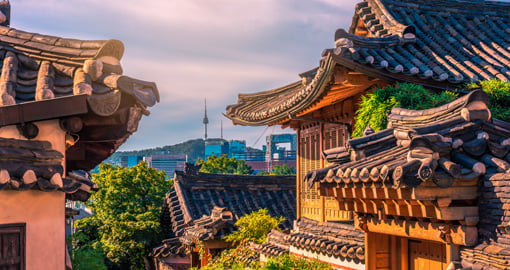
The best shopping experience in South Korea
A must for shoppers on South Korean tours are Seoul’s open-air markets such as the renowned Namdaemun Market where one can purchase interesting merchandise at bargain prices.
The second stop in this country is usually Gyeongju , the ancient capital known as the Museum without Walls. It has more palaces, castles, temples and pagodas than anywhere else in Korea. It was once the capital of the Shilla Dynasty and dates back to the 7th Century.
Busan is an earthy city and a large port. Attractions here , apart from the port, are Yongdusan Park and Yongungsa Temple, also known as the Temple in the Mountains.
Our recommended ‘must-do’ experience
For relaxation and exciting scenery, a visit to Jeju Island on Korea vacations is a must. Known as Korea’s answer to Hawaii, it has swaying palm trees, cactus plants, orange groves and more than a dozen sandy beaches. To top this off, the hinterland of the island boasts interesting volcanic landscapes.
Often referred to as the "Land of the Morning Calm", Korea is located at a major crossroad of Northeast Asia . What makes South Korea so exciting is it has become a country of endless possibilities. Booking one of our Korea tours today and see for yourself.
"Globetrotting with Goway" blog articles
For some additional reading, the following articles are from our blog “ Globetrotting with Goway ”….. a great source of information for those people who are, or who want to be, world travellers!
Things to Do on a First Trip to Korea
Cultural Dos and Don’ts in Asia
Fun Shopping Experiences in Markets Around the World
Korea Travel Information
At Goway we believe that a well-informed traveller is a safer traveller. With this in mind, we have compiled an easy-to-navigate travel information section dedicated to Korean vacations.
Learn about the history and culture of Korea, the must-try food and drink , and what to pack in your suitcase. Read about Korea's nature and wildlife , weather and geography, along with 'Country Quickfacts' compiled by our travel experts. Our globetrotting tips , as well as our visa and health information, will help ensure you're properly prepared for a safe and enjoyable trip. The only way you could possibly learn more is by embarking on your journey and discovering Korea for yourself. Start exploring… book one of our Korea tours today!
Extend Your Trip
After your Korea tour , consider taking the time to visit other destinations. Goway offers exciting China vacation packages, India tours and Thailand vacation packages plus a comprehensive selection of vacation packages in many other Asian countries.
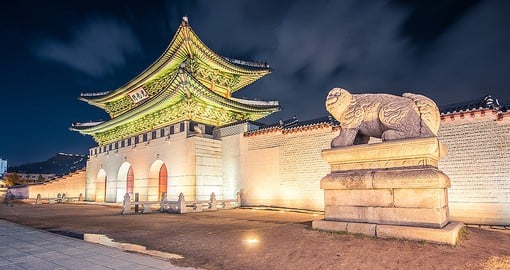
Best of South Korea & Japan
FIRST-CLASS | PRIVATE-GUIDED: Discover the highlights of South Korea and Japan as you journey through culture, history, and nature. Start in bustling Seoul, then onto the historic temples of Gyeongju and the port city of Busan. Continue to Kyoto and some of Japan's most iconic gardens and temples. Understand the impact of Hiroshima before reveling in Japan's capital, Tokyo.
South Korea
8 trips available.
- Most Popular
- Price Range
- Duration Range
- Ideas for 18 to 30 Somethings
- Specialty Groups & Events
- Beach & Island Escapes
- Go as you Please
- Safaris Worldwide
- Snowbird Long Stays
- Vacation Packages with Airfare
- Luxury and Beyond
- Romance & Honeymoon
- Single Friendly
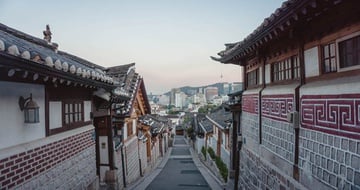
Ultimate Korea: Seoul, Gyeongju, Busan & Jeju

Tokyo, Seoul & Hong Kong City Explorer

Classic Korea: Seoul, Gyeongju & Busan
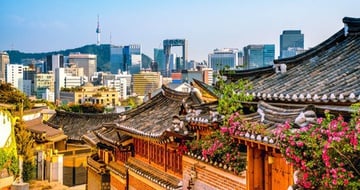
Seoul in Depth
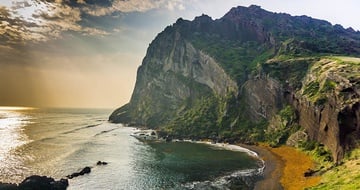
Jeju Island Escape
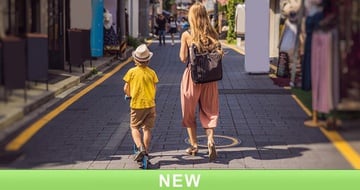
Korea for Families
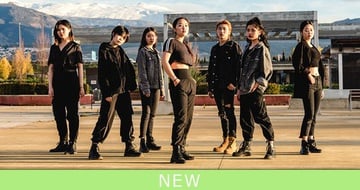
Seoul K-Pop Discovery
- Trip Finder
What our travelers say
Goway toolkit.
Need help planning your holiday? Our toolkit is a great place to get started.
Airfare Only
Looking for an airfare only? Ask the airfare experts at GowayAir.

Customise Your Trip
Let us customize a dream holiday for you. Your trip your way!

Get a Trip Quote
Need help in planning your perfect holiday? A FREE travel quote!

Need a Visa?
Do you need a Visa to enter? Let us assist with your travel documents.

The magazine for world travellers. Get your FREE subscription today.

eNewsletter Sign Up
Stay up to date with the latest travel info and destination deals!

Order a Brochure
Planning your next trip? Our brochures are loaded with great ideas.

Enjoy our online presentations from the comfort of your home.

- Pyeongchang
- Jeju Island
Travel Information
- Introduction
- Things to do in Korea
- Country Quickfacts
- Food and Drink
- Geography and Maps
- Nature and Wildlife
- Travel Tips, Visas & Health
- Best Time to Visit Korea
- South Korea Destination & Travel Guide
- 7 Best Destinations for Music Lovers

Featured Tours
- Highlights of Downunder
- African Safaris
- China Odyssey
- A World in One Country
- Classic Australia
- Classic Thailand
- Essential New Zealand
- Rio, Iguassu Falls, & Buenos Aires
- Essential Peru

BC Reg. #833-0; TICO Reg. #1543989; CST #2016613-20
- Accessibility
Web Design by Atomic Motion Built by Bright Interactive
GOWAY DESTINATIONS
실시간 주요 뉴스 PUSH 알림서비스를 구독할 수 있습니다.

korea joongAng daily
Home > culture > food & travel.

Seven travel packages leverage Korean pop culture to draw overseas visitors
![korean travel brochure A poster for a popular 2019-20 Korean drama series "Crash Landing on You" featuring Hyunbin, left, and Son Ye-jin [TVN]](https://koreajoongangdaily.joins.com/data/photo/2024/04/21/74a19dd5-33cf-4d98-af44-be9102747973.jpg)
A poster for a popular 2019-20 Korean drama series "Crash Landing on You" featuring Hyunbin, left, and Son Ye-jin [TVN]
![korean travel brochure The luxurious villa in Gangwon where BTS filmed its ″In The Soop″ reality series. [JOONGANG ILBO]](https://koreajoongangdaily.joins.com/data/photo/2024/04/21/f7269bf4-905a-44d2-9277-45db3ab1fbeb.jpg)
The luxurious villa in Gangwon where BTS filmed its ″In The Soop″ reality series. [JOONGANG ILBO]
![korean travel brochure BTS filmed its music video in Gangwon [BIGHIT MUSIC]](https://koreajoongangdaily.joins.com/data/photo/2024/04/21/07ba27f9-61b7-4d3f-8ad4-4de9e961fa15.jpg)
BTS filmed its music video in Gangwon [BIGHIT MUSIC]

More in Food & Travel
Travelers collect gift bags, coupons as gov't launches Welcome Week
Everland's gardens bloom with flowers and visitors this spring
BIBI's 'Bam Yang Gang' revives retro Korean comfort snack
Global coffee, restaurant franchises flourish in Seoul as local palates expand
Related Stories
Son Ye-jin 'overwhelmed' by drama’s success in Japan
K-drama 'Crash Landing on You' to be remade as a musical
[CELEB] Son Ye-jin shows 'Thirty-Nine' and 40 are just numbers
'Crash Landing on You' couple gets married
Actors Son Ye-jin, Hyun Bin to tie the knot
You might also like

To write comments, please log in to one of the accounts.
Standards Board Policy (0/250자)


IMAGES
VIDEO
COMMENTS
Korean Seasons Guide. The best time to visit South Korea is during the warm spring or fall seasons. The weather is mild and clear, there's a range of festivals and seasonal activities to enjoy, and you can travel to Korea comfortably. The best months to visit are April, May, September, and October.
Read this travel advice and carry out your own research before deciding whether to travel. Emergency services in South Korea. Ambulance: 119. Fire: 119. Police: 112. Contact your travel provider and insurer. Contact your travel provider and your insurer if you are involved in a serious incident or emergency abroad.
Cost To Travel In South Korea In 2024. This part of the South Korea travel guide will help you understand some of your expected costs to travel to Korea. The costs to travel to Korea include flights, accommodation, food, drinks, transportation, activities, sim cards, visas, souvenirs, travel insurance, and lots more.
Here are the links to the South Korea travel advisories from the USA, Canada, UK and Australia. For other countries, search on Google to find your own government information. 25. Load South Korea Travel Apps onto Your Phone. Spend some time loading apps for South Korea travel onto your phone before you depart. Check out our detailed article on ...
The Ultimate Korea Travel Toolkit: Essential Information Sheets & Maps. If you're planning a trip to South Korea, you're in luck! To make your travel smooth and memorable, we've compiled a comprehensive set of information documents, travel itinerary templates, cheat sheets, and maps designed exclusively for foreign travelers.
South Korea Travel Costs. Accommodation - A bed in a hostel dorm with 4-6 beds costs 20,000-25,000 KRW per night, while a bed in a dorm with 8 or more beds costs around 14,000-20,000 KRW. A single private room is around 40,000 KRW, while a double private room is 70,000 KRW.
Thailand. Speak to a certified specialist to start planning your tailor-made vacation to South Korea... Call one of our experts or arrange a video appointment for ideas and advice. 617-861-6421. Make an inquiry. Joy.
The Taegeukki. Winter Sonata. Tailor-made travel itineraries for South Korea, created by local experts. 14 days / from3800 USD. Culture & Island life. Experience the highlights of Korea with a private guide by your side. Fascinating Seoul with a day trip to the DMZ, followed by days in Gyeongju and Busan.
Intro. Pheuron Tay is the content creator behind the award-winning Korea Travel Blog - The Calm Chronicle. She enjoys sharing her adventures in South Korea, and providing alternative ideas for exploring the country's best destinations through her visuals and writings.
South Korea. Asia. From Seoul's glittering nightlife to Seoraksan National Park's vertiginous hikes, South Korea offers the traveler a dazzling range of experiences, beautiful landscapes and 5000 years of culture and history.
korean food challenge drinks & desserts shopping traditional markets mega shopping malls shopping districts night tour foodie tour at night markets cultural heritage sites at night four seasons dmz tradition hanbok experience traditional sport templestay&temple traditional accommodations
Korean cultural experience, Korea House is a traditional style Korean building or 'hanok', where you can try traditional cuisine and listen to music. A tranquil, beautiful building with garden surrounds, it is a celebration of Korean culture in an experimental fashion. Try your own hand at Korean handicrafts, martial arts and kimchi making.
Korea Travel Guide. A perfect balance between exhilarating city life and breathtakingly scenic sections of nature, South Korea is a relatively untouched gem in the Korean Peninsula, located in East Asia. With Korean food and culture becoming increasingly popular all over the world, having the authentic experience at the root of it all is a must ...
Seoul City Guide: Delve into the heart of South Korea with our comprehensive Seoul City Guide. Explore historical palaces, vibrant markets, and cutting-edge technology in the nation's capital. DMZ Tour Experience: Gain unique insights into Korean history with our DMZ Tour Guide, exploring the demilitarized zone, a symbol of division and hope.
But this settlement, surrounded by hills to the west of the city, was actually once a refugee camp. Korean families pushed out of their towns by Japanese occupation in the 1920s were forced to squeeze into this small region. It's now flourished into a proud community, with art galleries, artisanal cafés and shops.
This guide is a one-stop resource on traveling in South Korea. You'll get a sneak peek into my Korea SURVIVAL Travel Guide, essential travel tips in Korea, things to know for your trip and must-try activities to do in Korea including renting a traditional Korean dress and more [About the author] 🏻 As an Australian expat that has lived in South Korea since 2022, I know firsthand how it can ...
Seoul. South Korea, Asia. Fashion- and technology-forward but also deeply traditional, this dynamic city mashes up palaces, temples, cutting-edge design and mountain trails, all to a nonstop K-Pop beat.
The Favorites function assists you so that you can save travel information you're interested in according to the region in Seoul. ... 85, Cheonggyecheon-ro, Jongno-gu, Seoul, Republic of Korea. Operating Hours/Time Mon - Fri, 9 a.m. - 6 p.m. (KST) [email protected] Tourist Complaint Center General Tourism Inquiries 1330. The new official ...
Download your free PDF. 263 attractions. 65 restaurants. 750 hotels. Free download. Create your own South Korea travel guide! All you have to do is select the type of places you'd like to include (restaurants, museums, etc.). When you're done, you can download your South Korea travel guide to your phone or tablet, or print it as a PDF.
Book your Korea tour with Goway! ASIA by Goway is an exclusive division that specializes in planning and organizing Korea tours, vacations and experiences. Choose from a simple city stopover, an independent travel module, and much more. We want to be your first choice when next you go globetrotting to Korea. Get a Trip Quote Order a Brochure ...
Note: You can't use Google maps to navigate in South Korea, but this is a useful guide to check that your rental car's GPS is going to the correct destination. You can find out everything you need to know about driving a rental car in South Korea here. Tourist map: Use this Google map to plan your trip. Days 1-3 - Seoul
Getting brochure: Seoul, Southerly Korea on Behance | Travel brochure, Korea travel, Brochure. People worldwide watch K-dramas and listen at K-pop. Myeongdong has become a hotbed for cosmetics and fast everyone I get likes Korean food! Needlessly at state, South Korea is buzzing, and for the center for all that excitement, is Seoul.
Explore temples and go behind-the-scenes of sumo wrestling in Tokyo, sample Korean favourites and shop 'til you drop in Seoul, and cruise the famous harbor of Hong Kong in between food tours and tram rides. Duration: 13 Days. Prices From: US$ 5,165. Trip Type:
To attract travelers from Southeast Asia and the Middle East to Korea, the Ministry of Culture, Sports and Tourism announced Sunday that it has worked with the Korea Tourism Organization to develop seven travel packages focusing on visiting popular K-drama filming locations and experiencing K-pop and K-food.